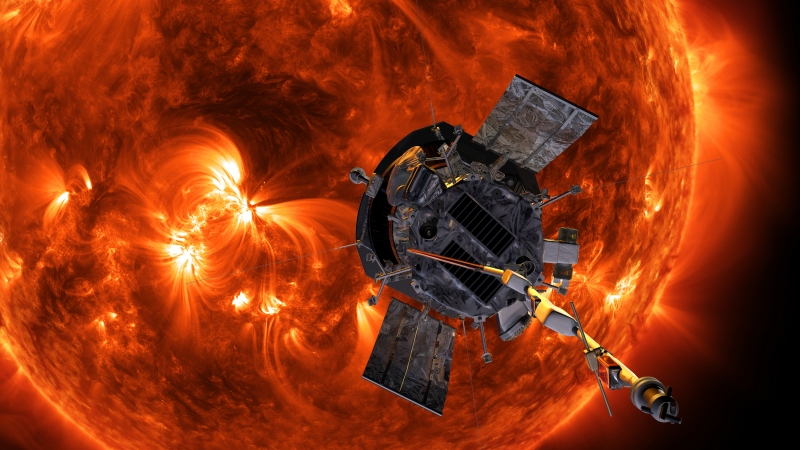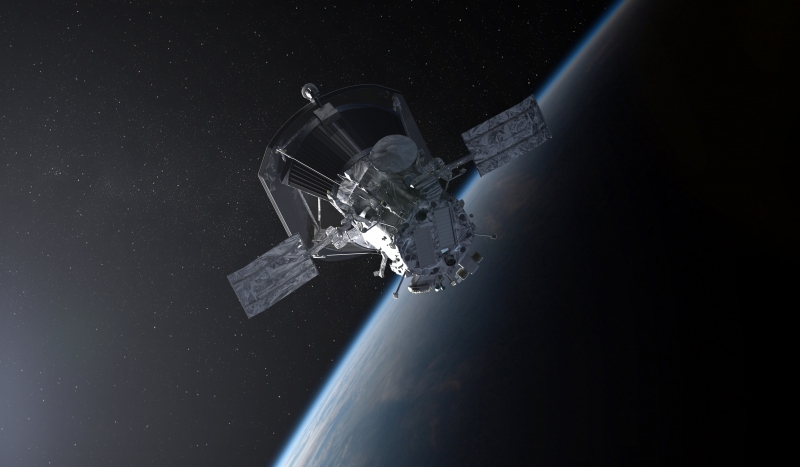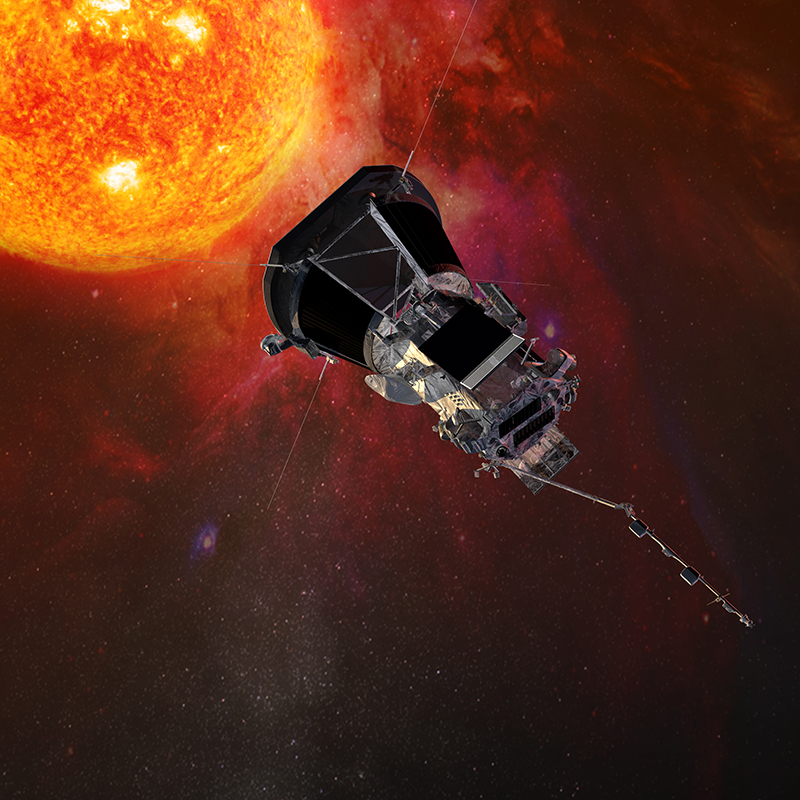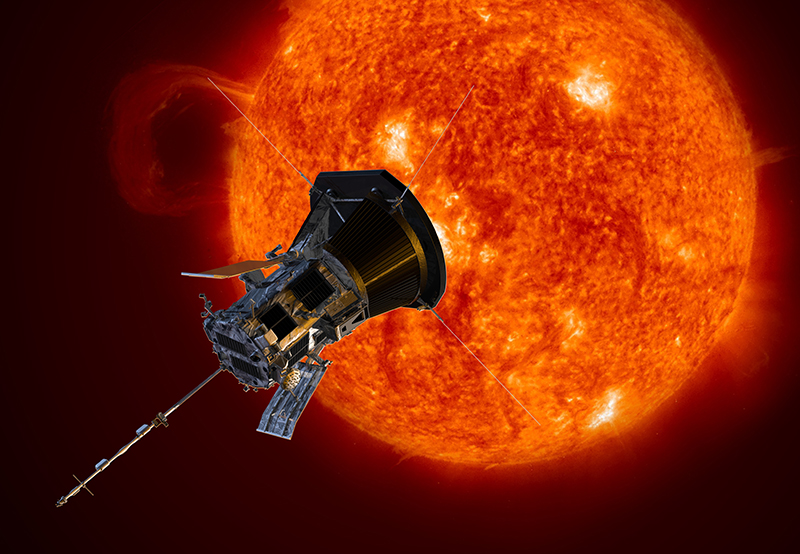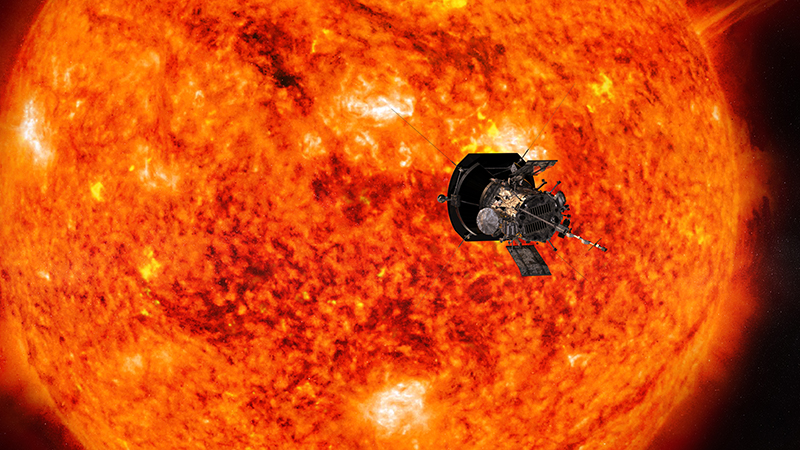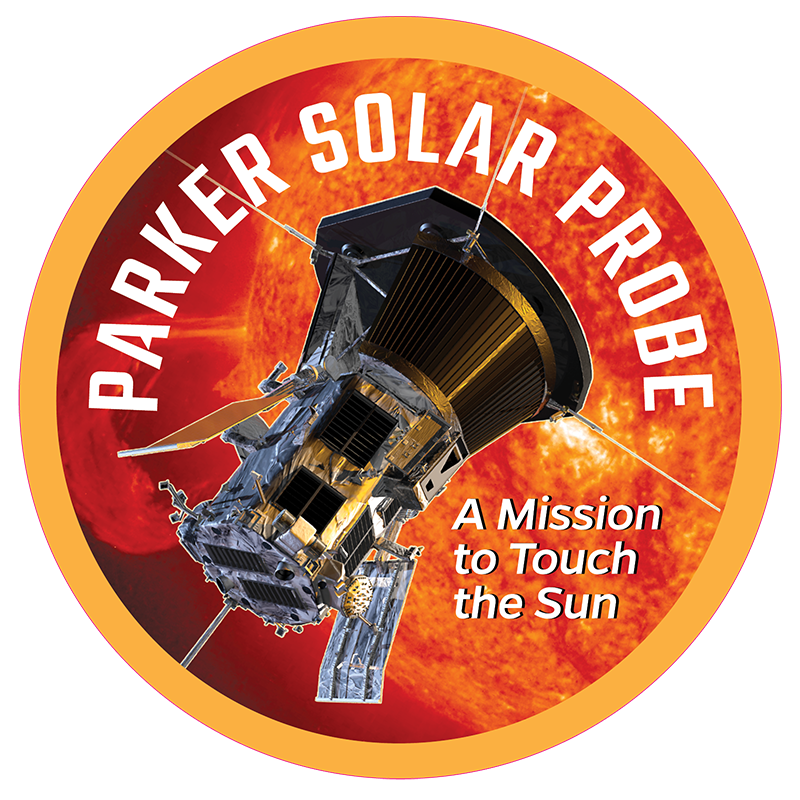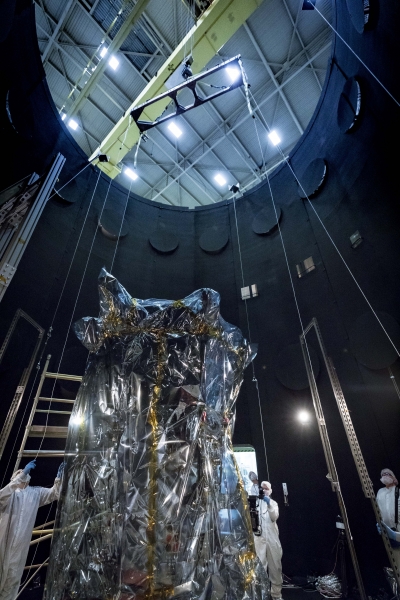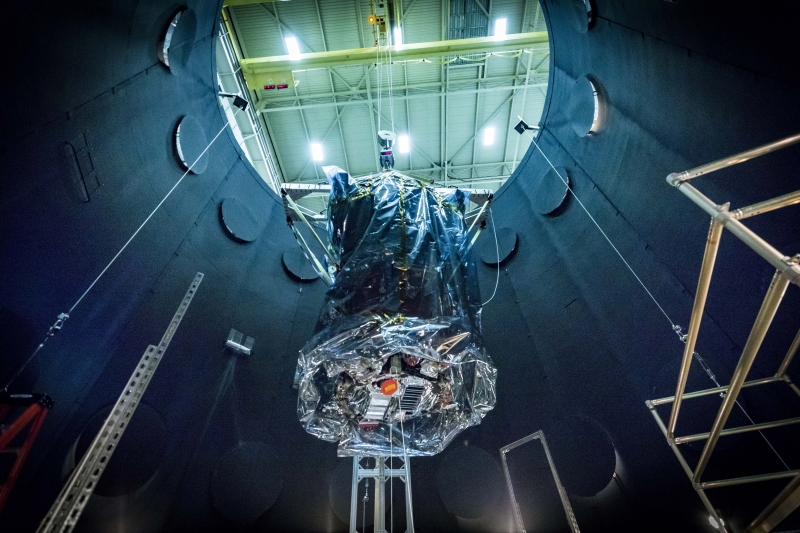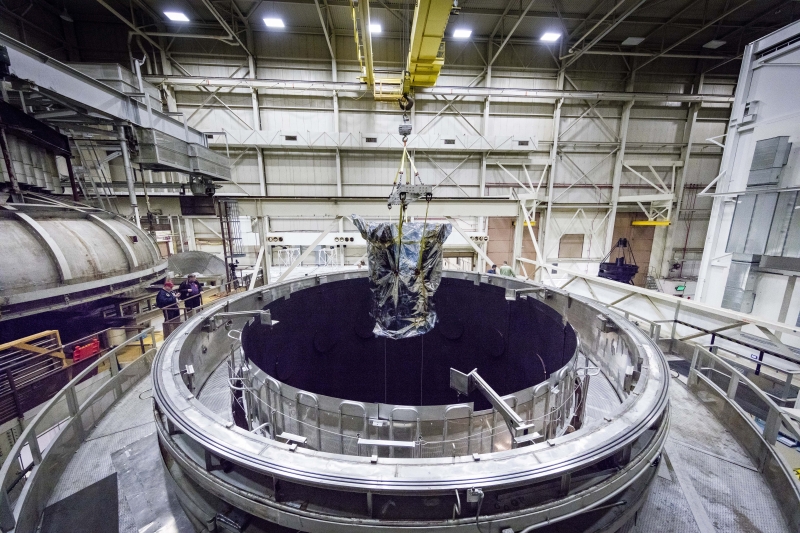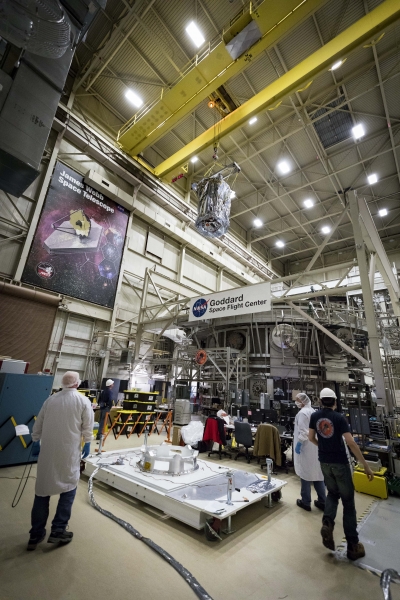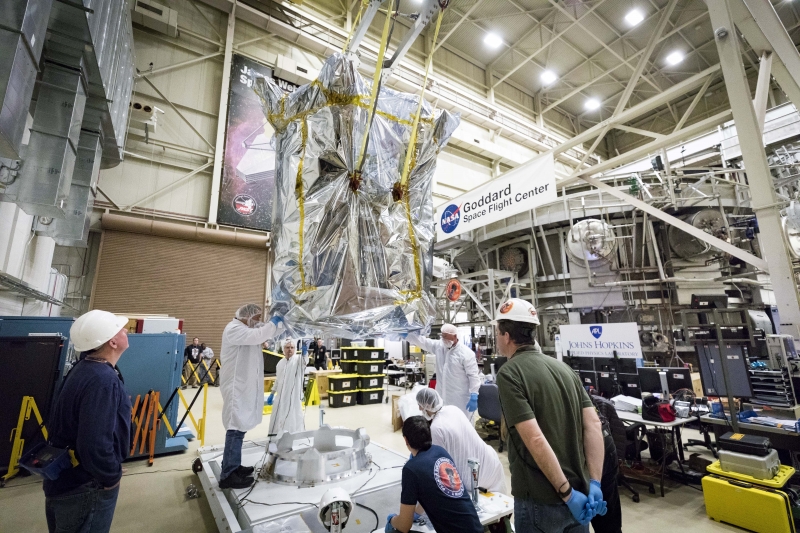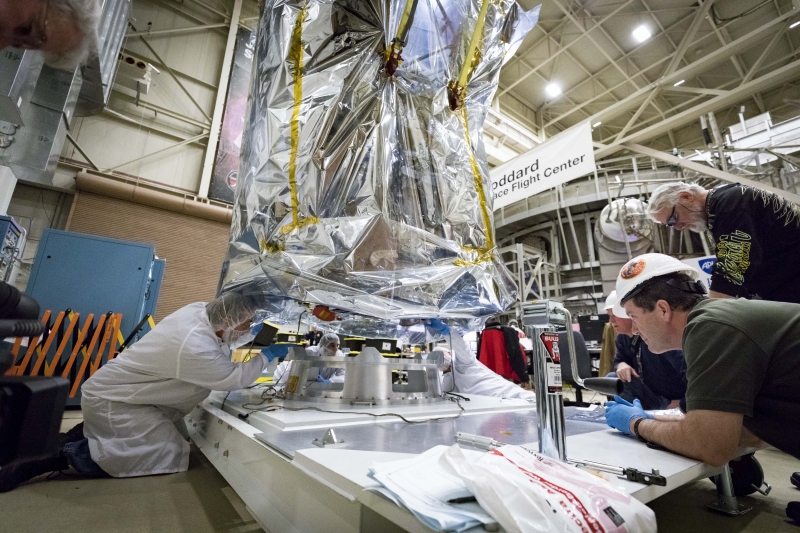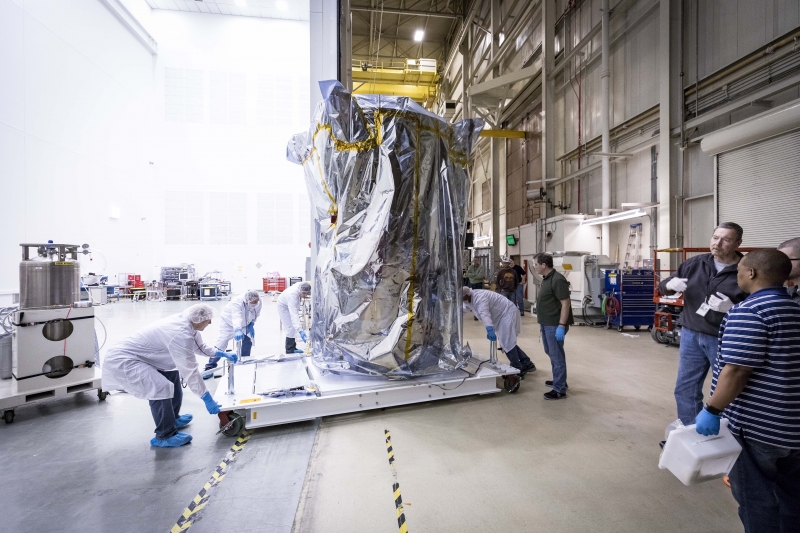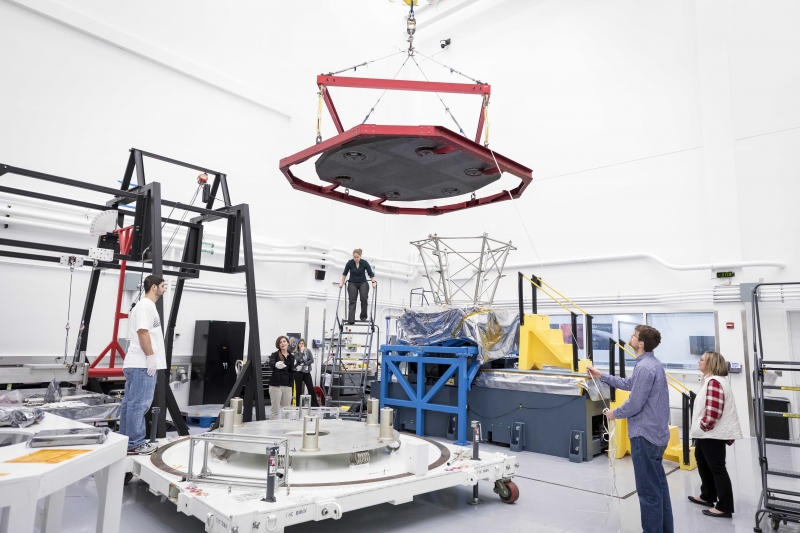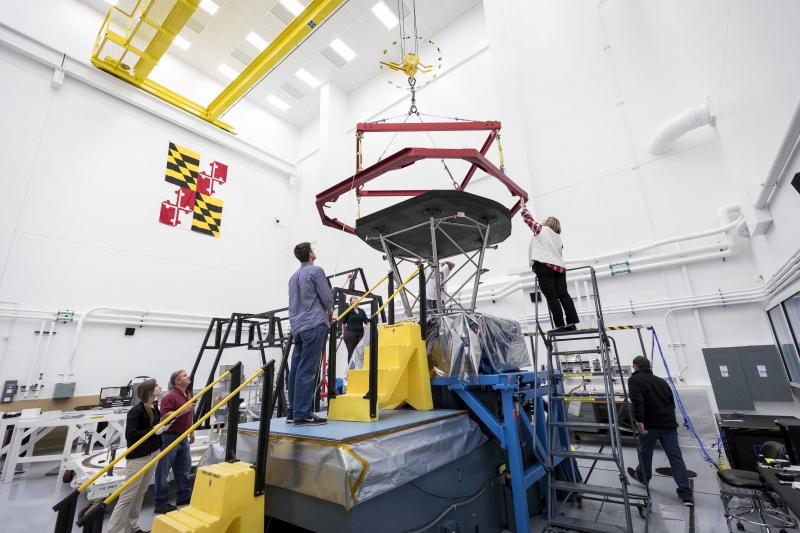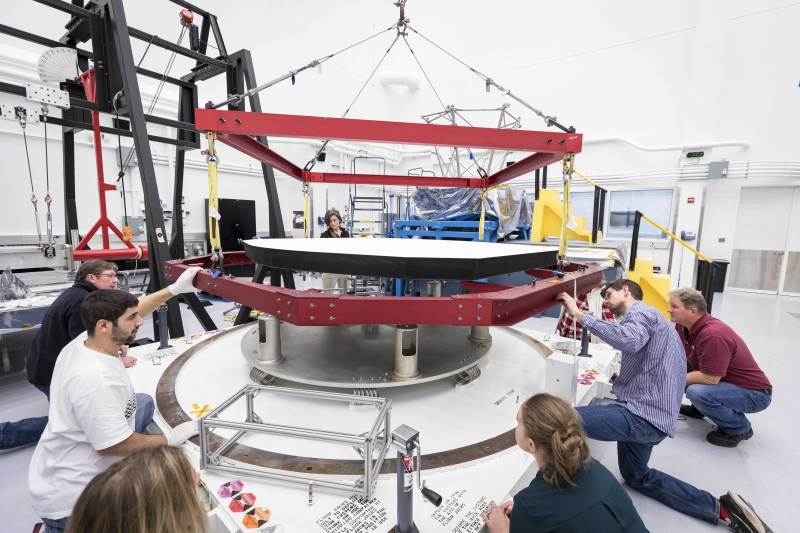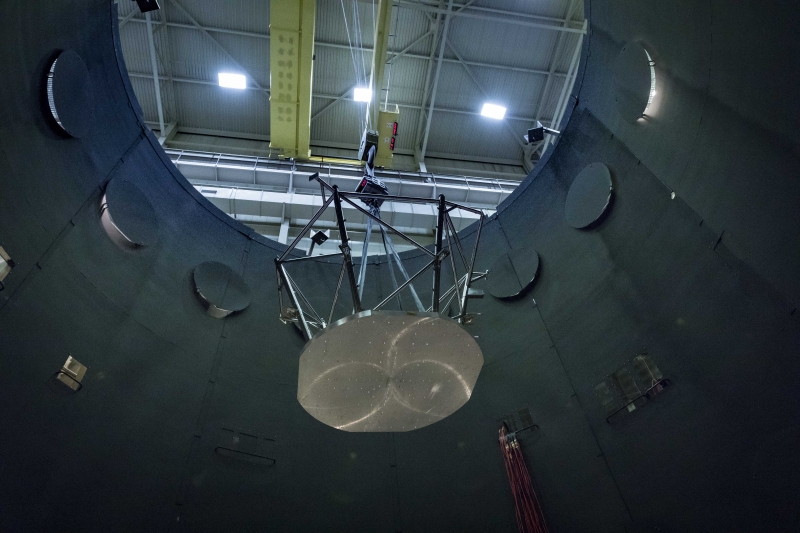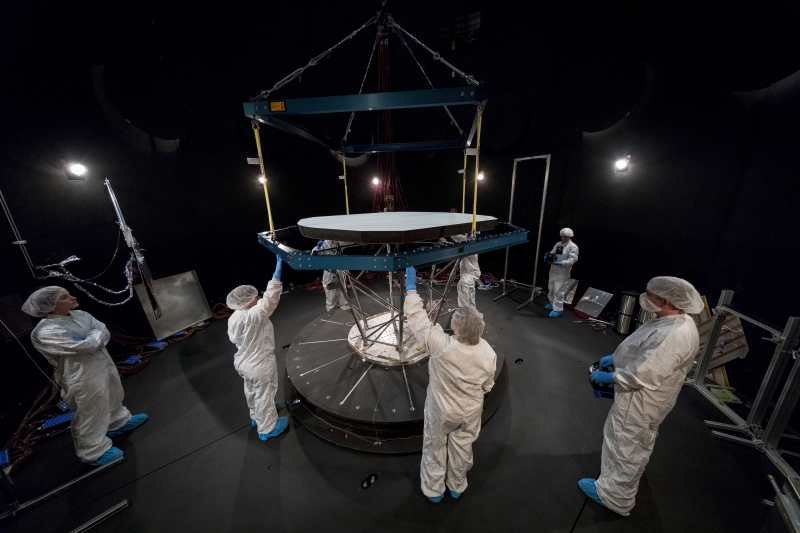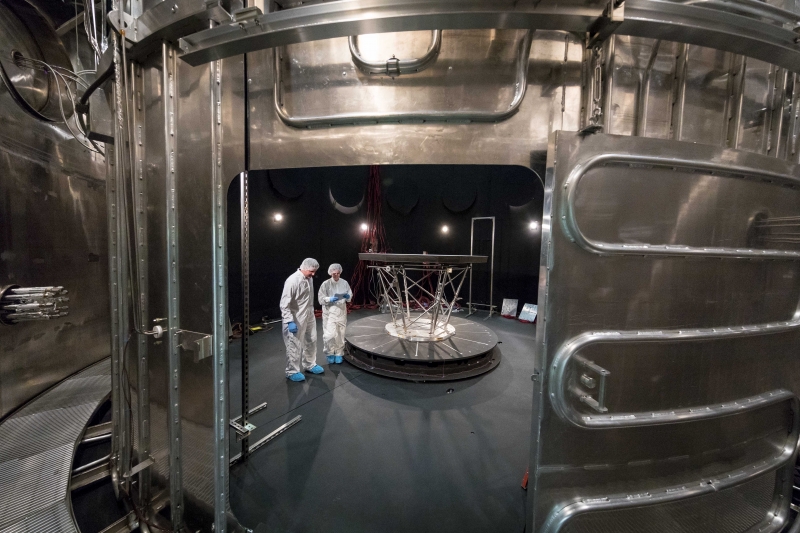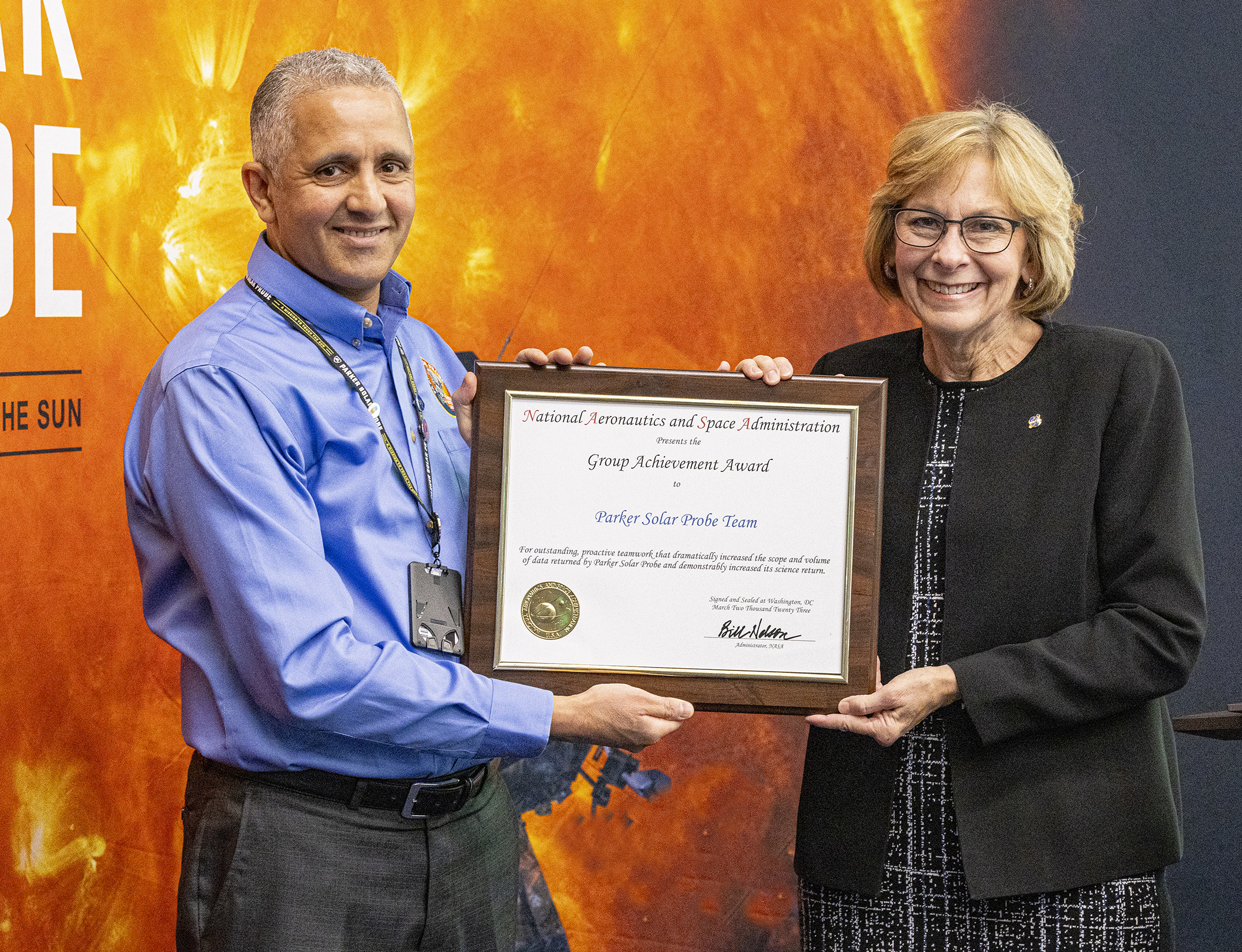
2024-01-02 16:32:22
On behalf of the Parker Solar Probe team, Project Scientist Nour Raouafi accepts the NASA Group Achievement Award from Peg Luce, acting director of NASA�s Heliophysics Division, during a mission Science Working Group meeting at the Johns Hopkins Applied Physics Laboratory in Laurel, Maryland, on Nov. 6, 2023.
Credit: NASA/Johns Hopkins APL/Ed Whitman
Download (Hi-Res)
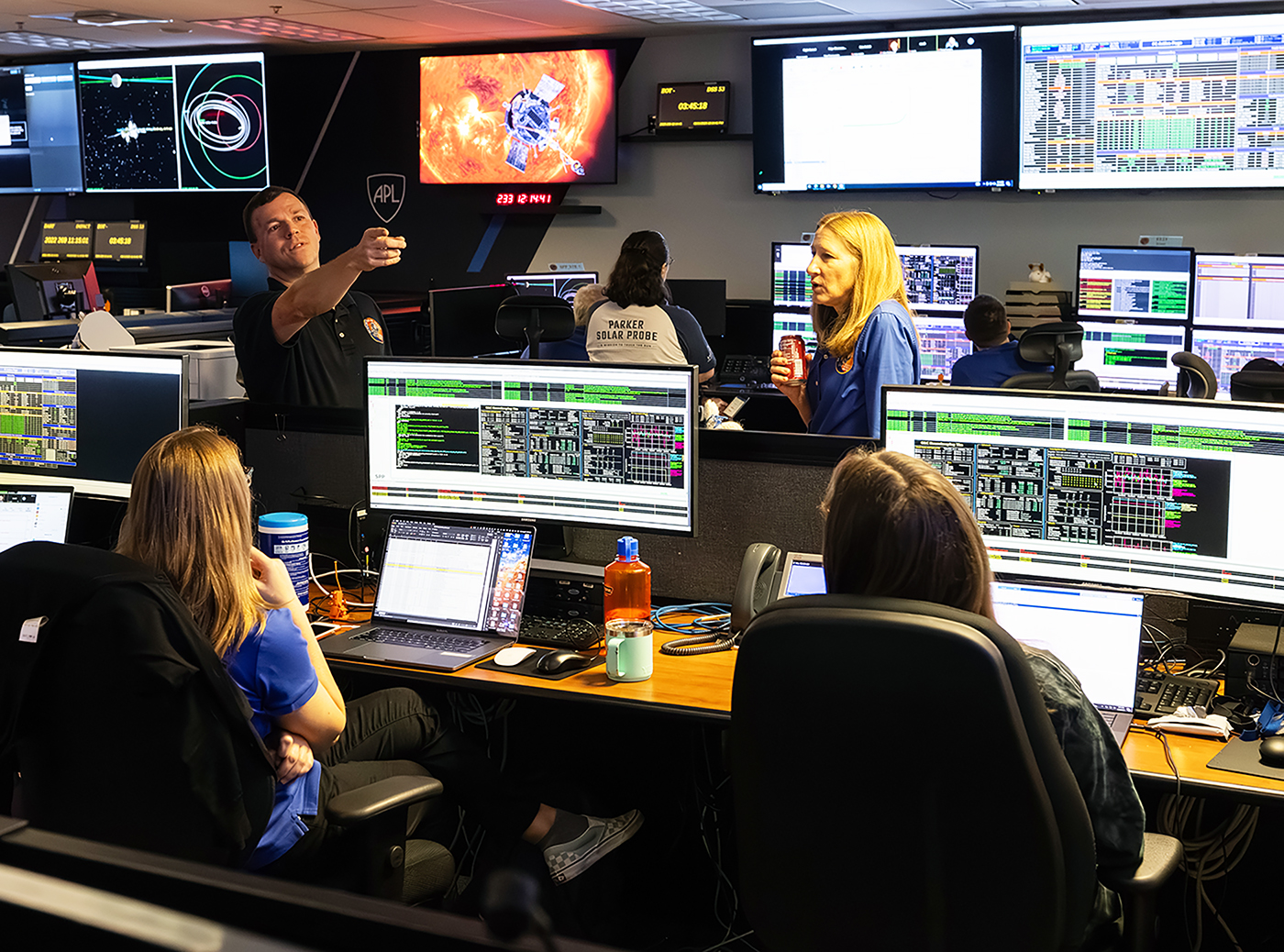
2023-08-22 15:48:25
Standing, from left, Parker Solar Probe Mission Operations Manager Nick Pinkine and Project Manager Helene Winters discuss the progress of Parker's gravity assist flyby of Venus with members of the spacecraft operations team at the Johns Hopkins Applied Physics Laboratory on Aug. 21.
Credit: NASA/ Johns Hopkins APL/Brooke Hammack
Download (Hi-Res)
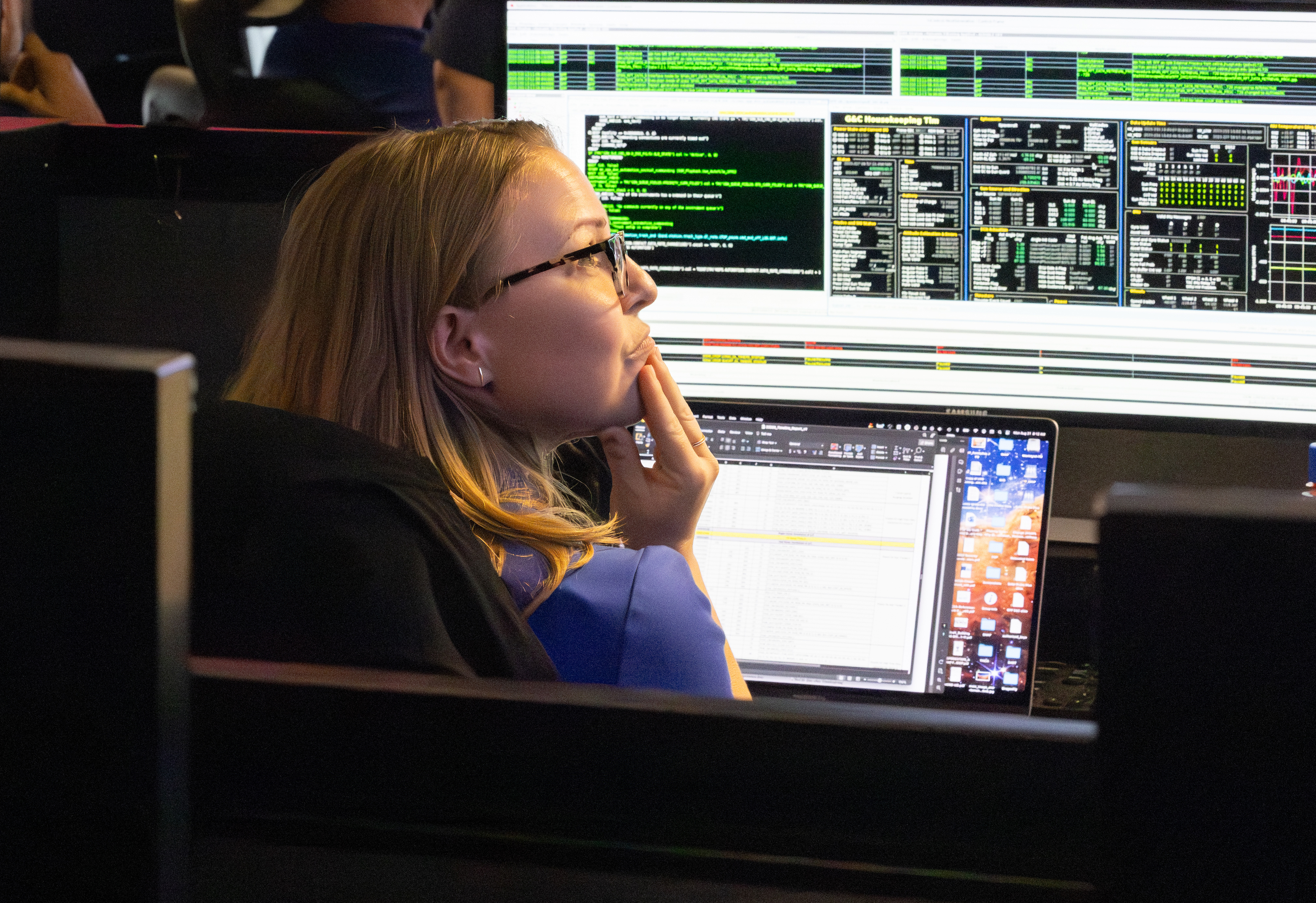
2023-08-22 15:48:25
Guidance and Control Lead Sarah Hefter, of the Johns Hopkins Applied Physics Laboratory, monitors Parker Solar Probe's trek around Venus in the Parker Mission Operations Center at APL on Aug. 21.
Credit: NASA/Johns Hopkins APL/Brooke Hammack
Download (Hi-Res)
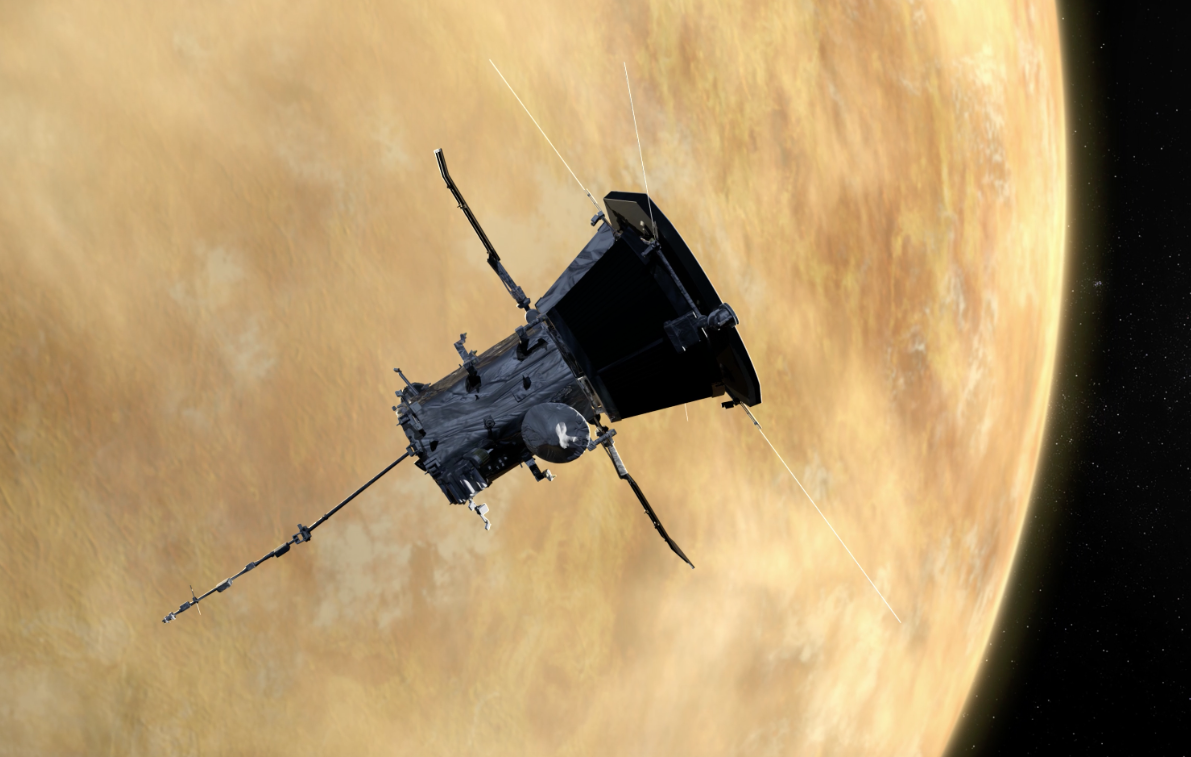
2023-08-22 15:48:25
Artist's impression of Parker Solar Probe flying past Venus.
Credit: NASA/Johns Hopkins APL/Steve Gribben
Download (Hi-Res)
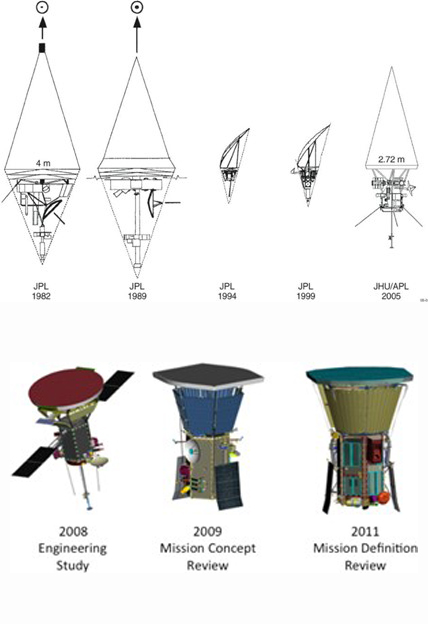
2023-08-11 12:50:16
Evolution of a spacecraft: Designs for a Solar Probe changed through the decades, based on technologies and mission plans at the time. NASA’s directive for a solar-powered spacecraft led to the design of the Parker Solar Probe mission, which this week celebrates five years in space.
Credit: NASA/Johns Hopkins APL/Kinnison et al
Download (Hi-Res)
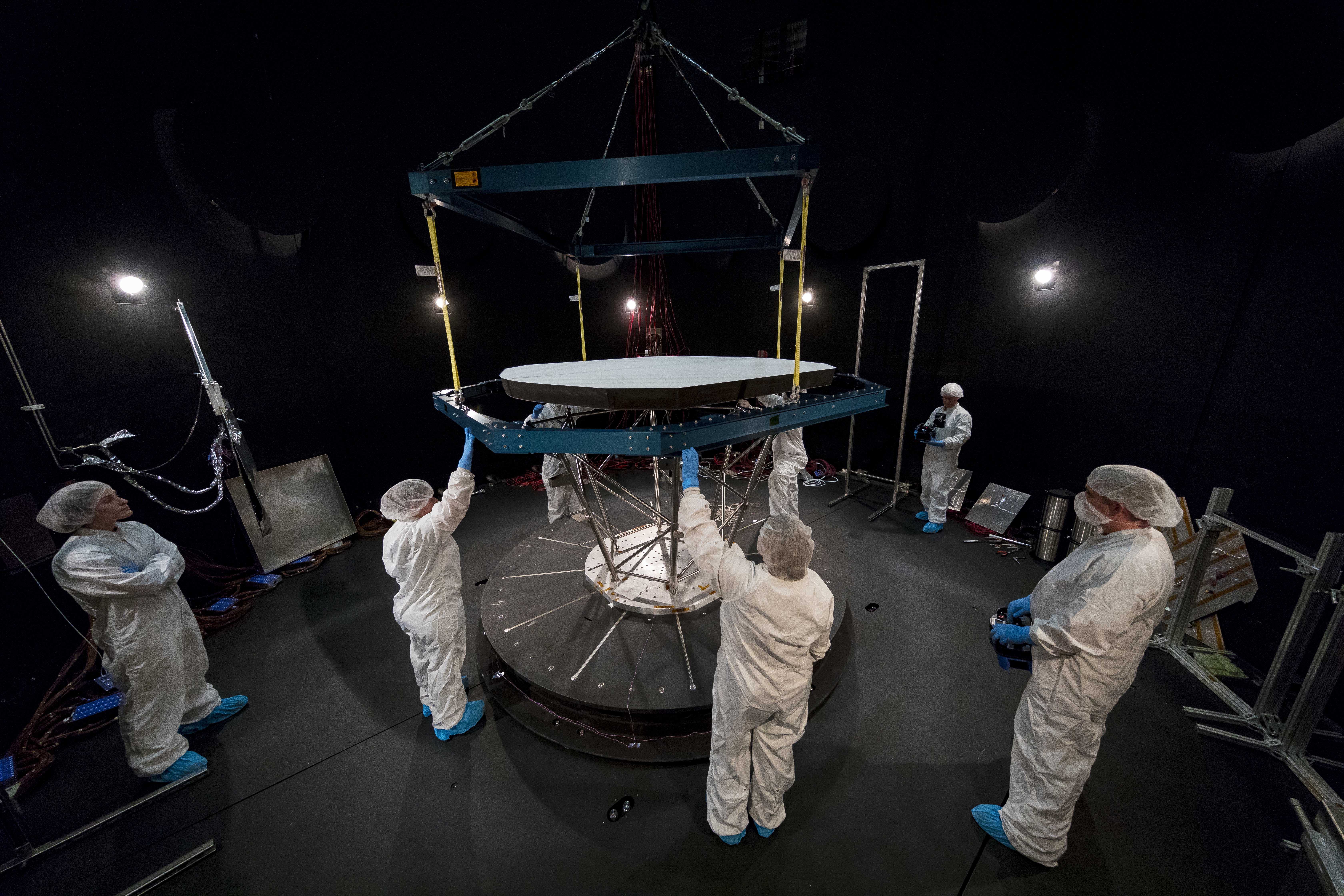
2023-08-11 12:50:16
Protecting the probe: Engineers from the Johns Hopkins Applied Physics Laboratory prepare the Parker Solar Probe Thermal Protection System – one of the mission’s enabling technologies – for space-environment testing in a thermal vacuum chamber at NASA’s Goddard Space Flight Center, Maryland, in January 2018.
Credit: NASA/Johns Hopkins APL/Ed Whitman
Download (Hi-Res)
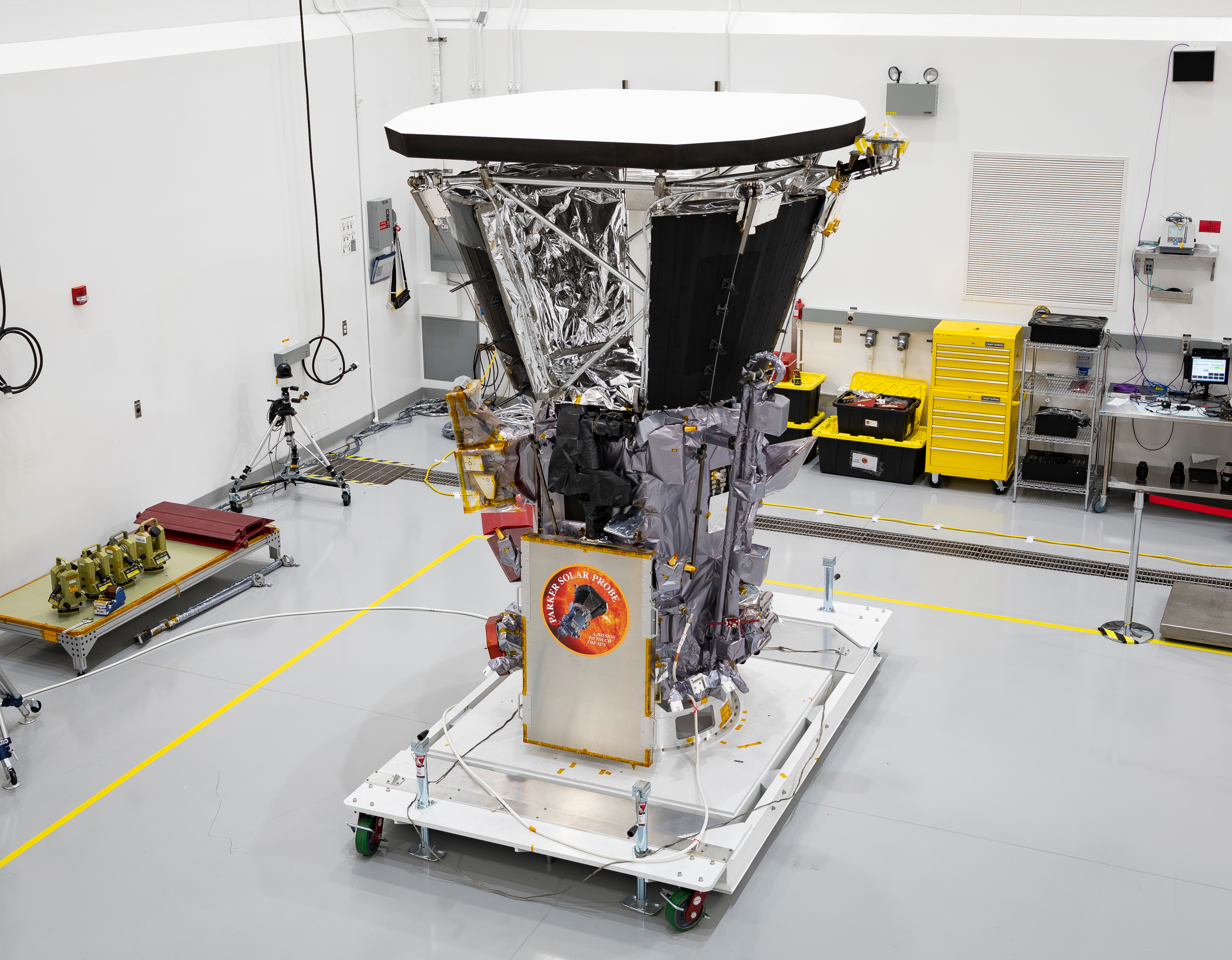
2023-08-11 12:50:16
The final design: The actual Parker Solar Probe spacecraft shown during launch preparations in a cleanroom at Astrotech Space Operations in Titusville, Florida, in July 2018.
Credit: NASA/Johns Hopkins APL/Ed Whitman
Download (Hi-Res)
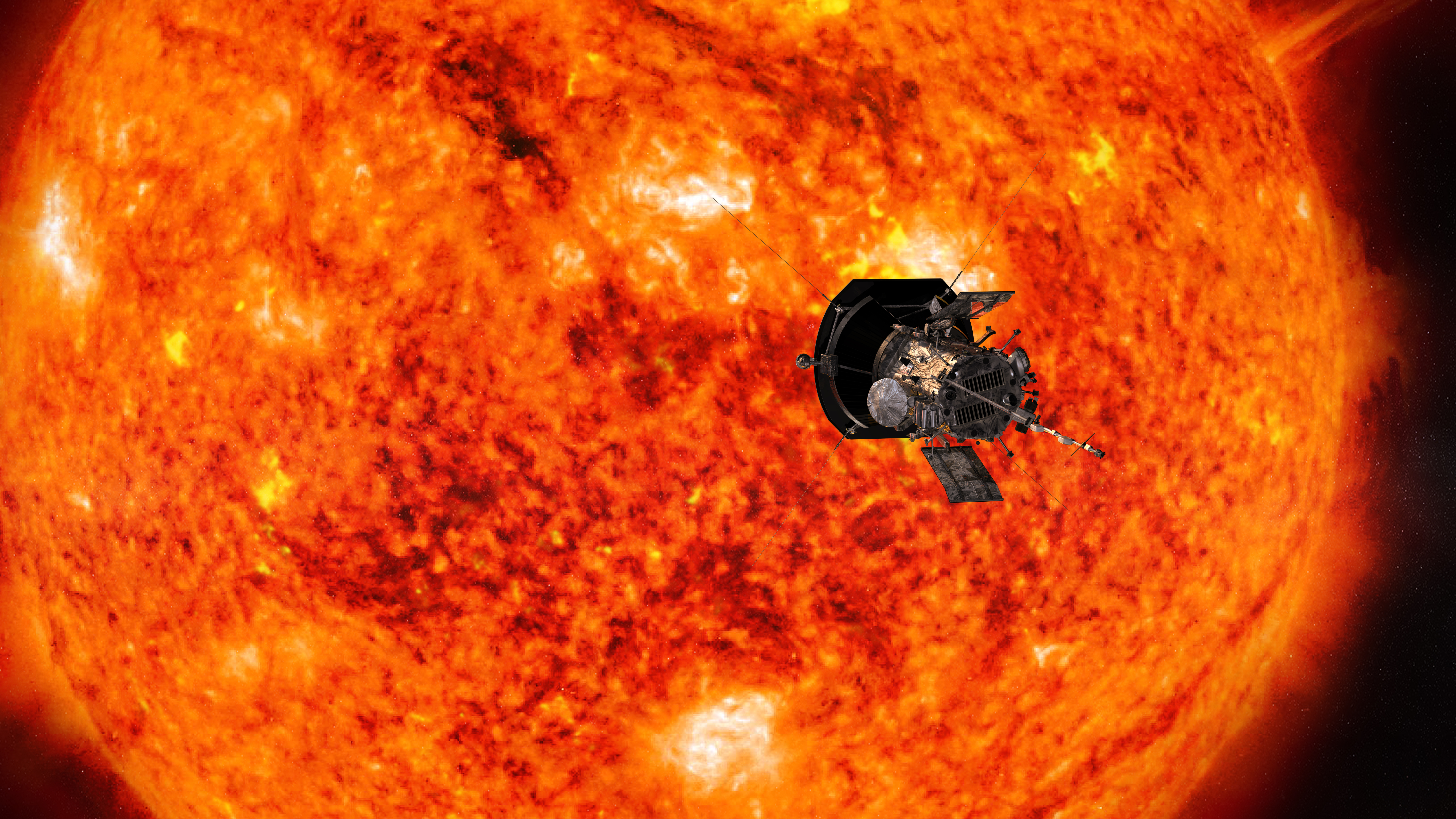
2023-08-09 16:26:17
Credit: NASA/Johns Hopkins APL/Steve Gribben
Download (Hi-Res)
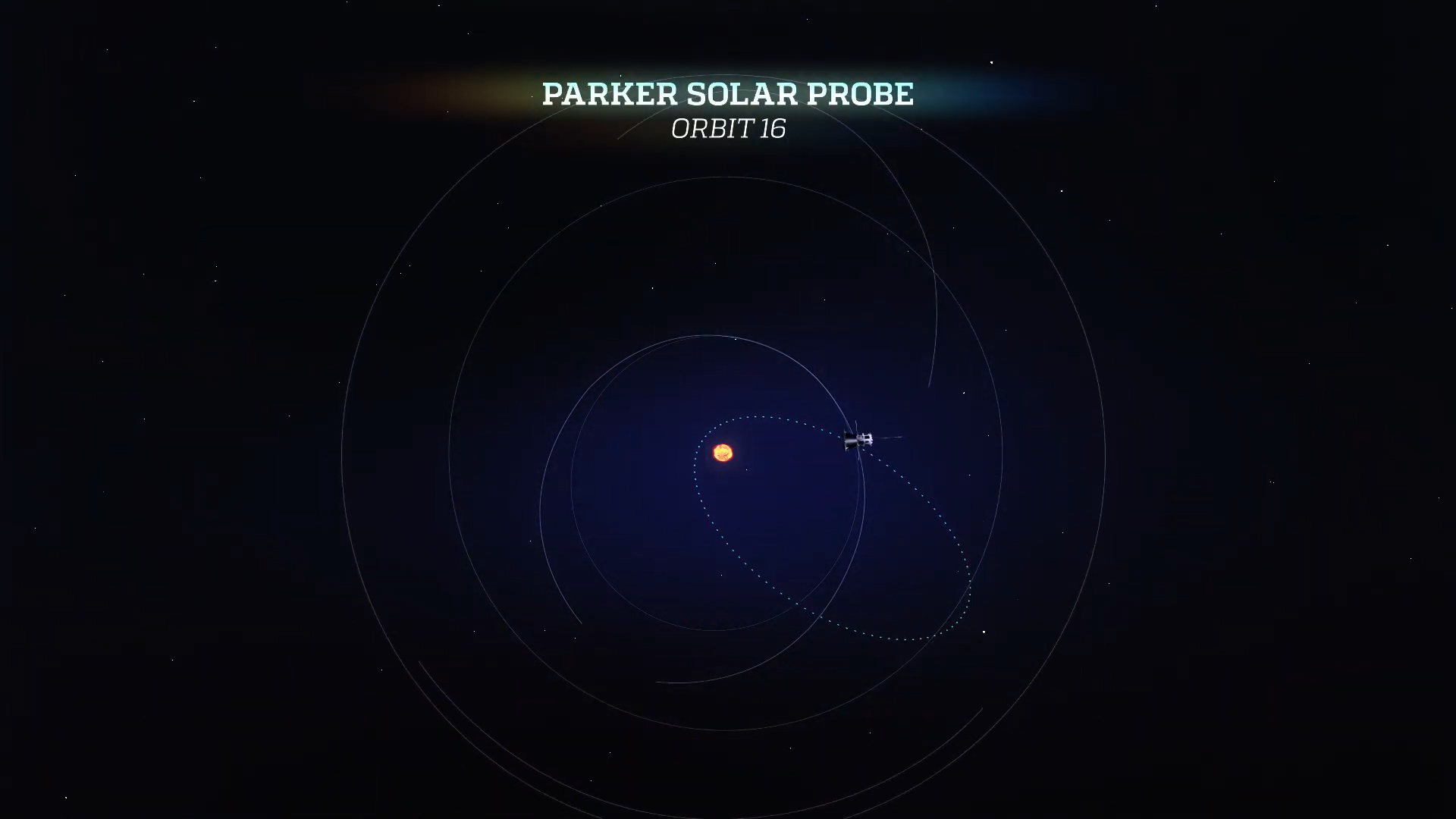
2023-06-29 20:34:19
Credit:
Download (Hi-Res)
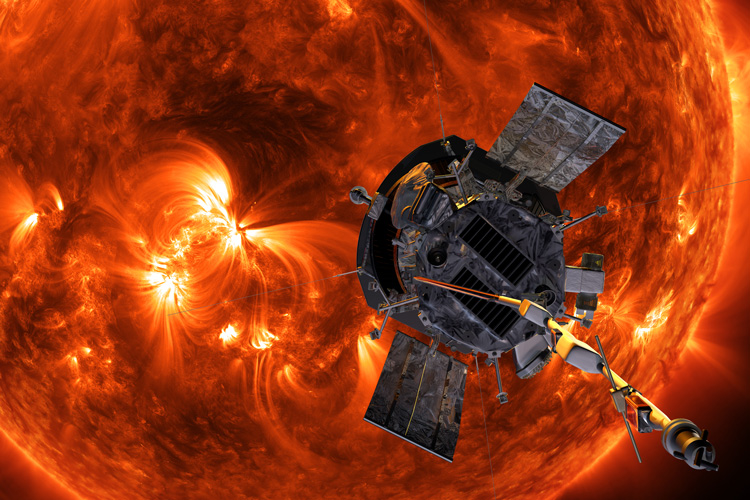
2023-06-08 14:54:17
Artist’s concept of the Parker Solar Probe spacecraft approaching the sun. Launched in 2018, the probe is increasing our ability to forecast major space-weather events that impact life on Earth.
Credit: NASA/Johns Hopkins APL/Steve Gribben
Download (Hi-Res)
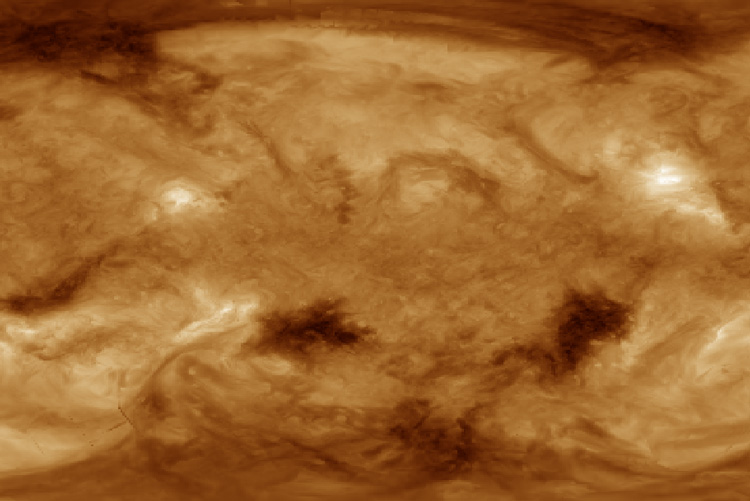
2023-06-08 14:54:17
Sun Surface 1 A flattened map of the sun’s entire surface, or corona, imaged in extreme ultraviolet wavelengths by the NASA Solar Dynamics Observatory (SDO) satellite. The two dark regions below the middle of the image are the coronal holes sampled by Parker Solar Probe. Within these coronal holes, flows in the solar atmosphere create intense, complex magnetic fields that annihilate and produce the pressure and energy to overcome solar gravity and send high-energy particles outward — the fast solar wind. The funnels of intense magnetic field where the fast solar wind actually originates — large convection cells called supergranulations — are not visible inside the coronal holes.
Credit: NASA
Download (Hi-Res)
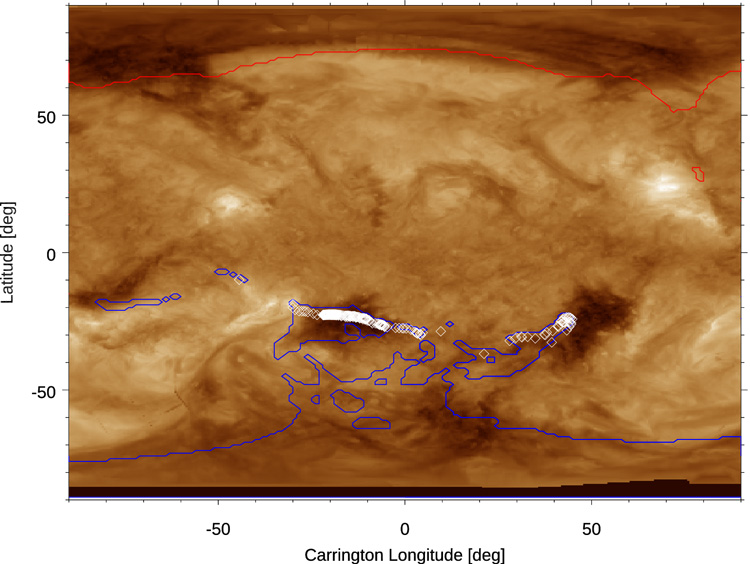
2023-06-08 14:54:17
The previous image marked with colored lines that indicate the boundaries of the open field lines (outward-pointing is red, inward-pointing is blue) as predicted by a computer model. These regions correspond well to the coronal holes in the EUV map. The white boxes show the points of origin of the magnetic field lines that the Parker Solar Probe passed through as it traveled across the sun’s surface.
Credit: NASA
Download (Hi-Res)
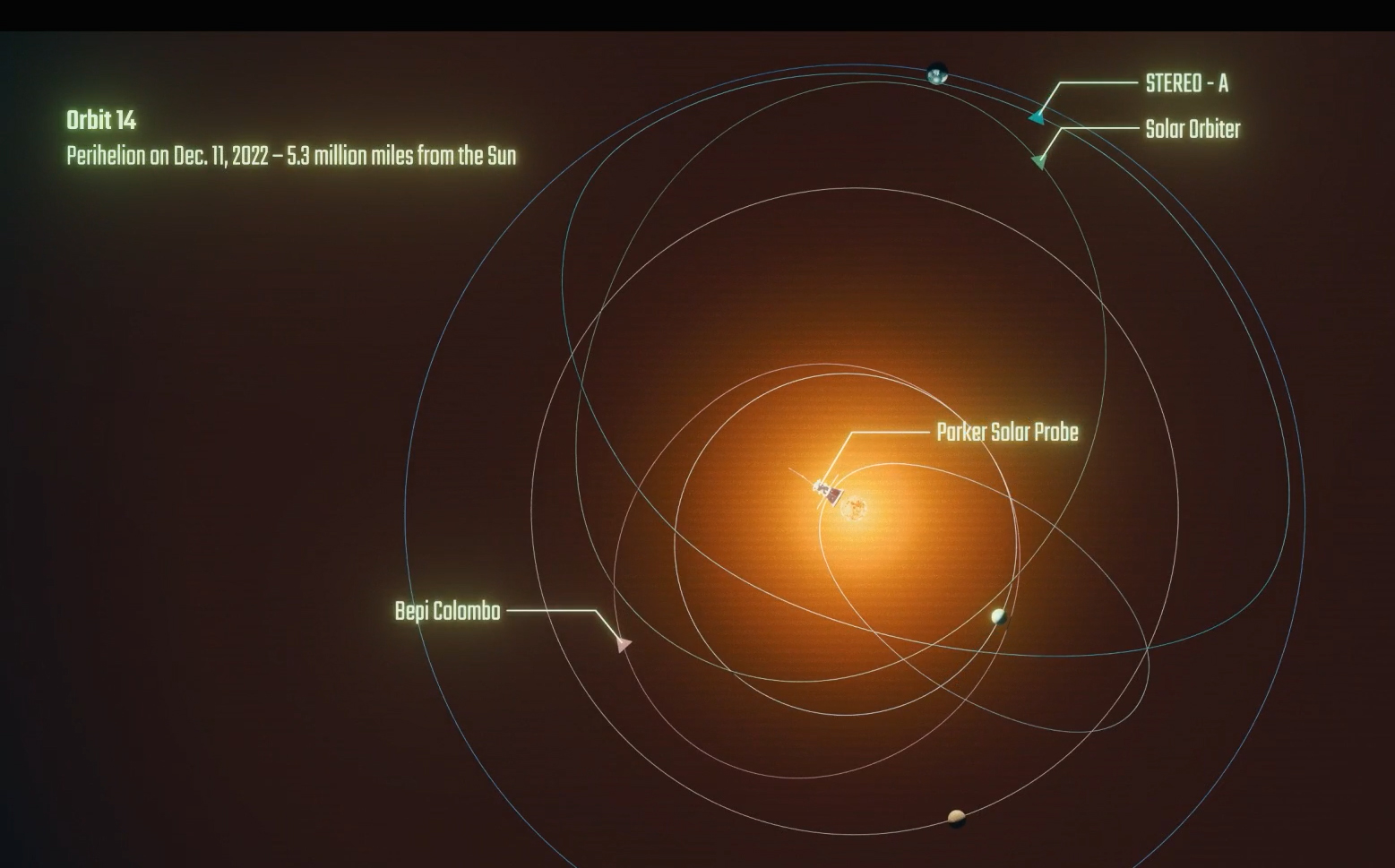
2022-12-14 10:24:50
Credit: NASA/Johns Hopkins APL/Mike Yaklovev
Download (Hi-Res)

2022-09-30 12:52:46
Credit:
Download (Hi-Res)
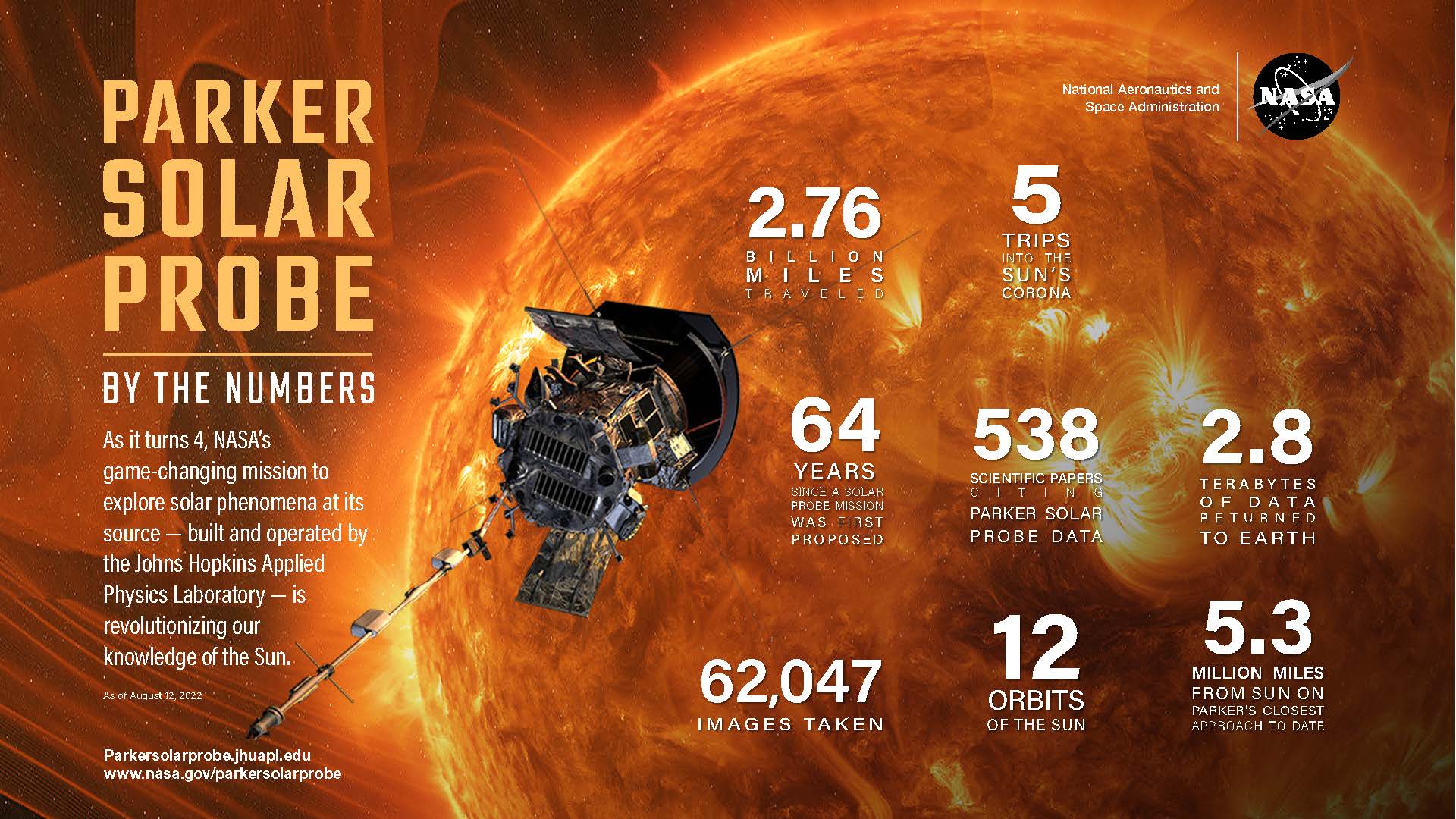
2022-08-12 12:11:47
Credit: NASA/Johns Hopkins APL/Magda Saina
Download (Hi-Res)
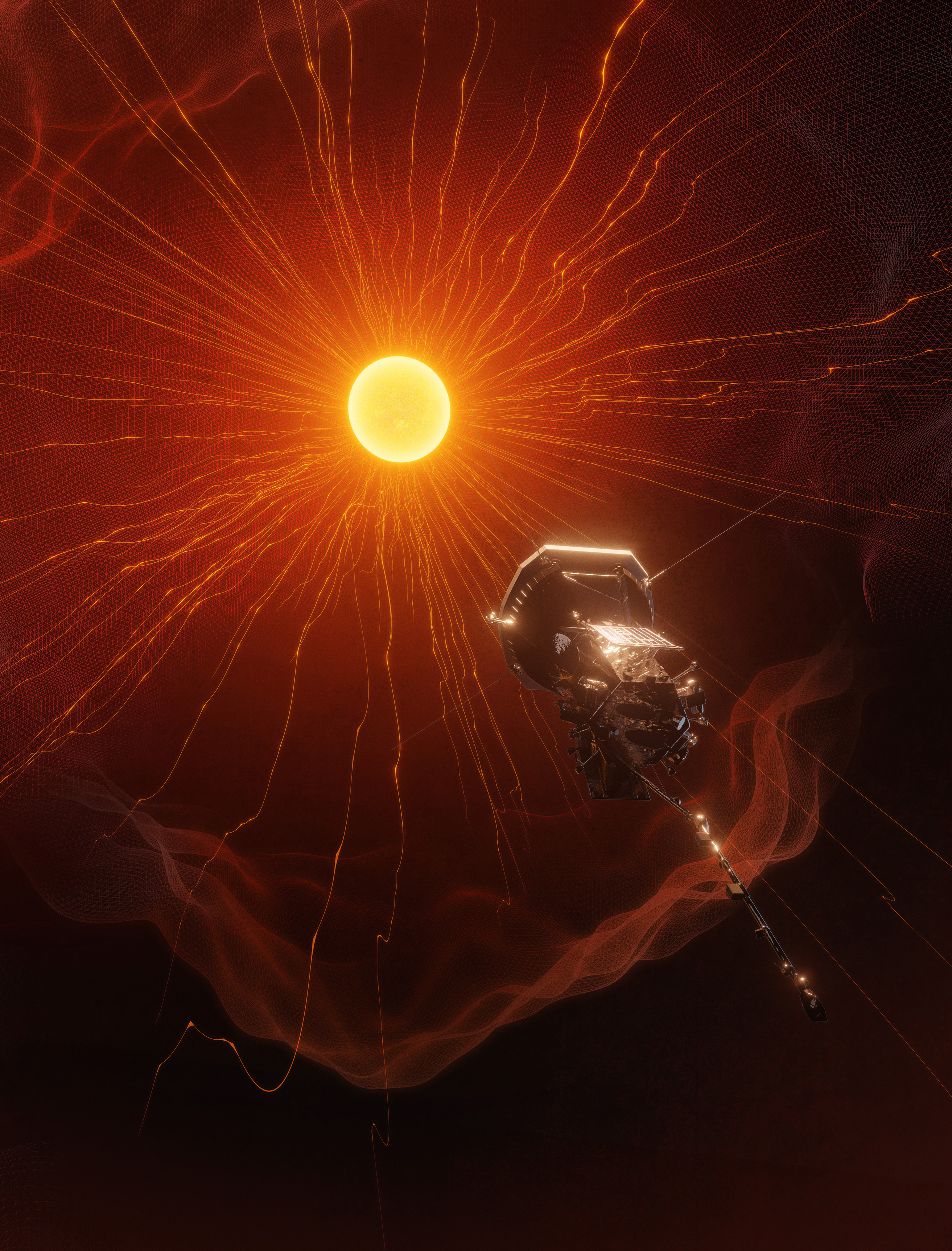
2022-07-28 15:58:09
Demonstrating the durability of its robust design, the APL-built Parker Solar Probe has made numerous discoveries during its four years in flight.
Credit: NASA/Johns Hopkins APL/Ben Smith
Download (Hi-Res)

2022-07-28 15:58:09
Pictured at the presentation of the IAA Laurels Team Award on July 16, 2022, in Athens, Greece, are (from left) Marius-Ioan Piso, IAA vice president for scientific activities; Chrysoula Kourtidou-Papadeli, IAA vice president for awards and membership; Nour Raouafi, Parker Solar Probe project scientist, Johns Hopkins Applied Physics Laboratory (APL); Ralph McNutt, Parker Solar Probe science team member, APL; Thomas Zurbuchen, NASA associate administrator, Science Mission Directorate; Adam Szabo, Parker Solar Probe mission scientist, NASA Goddard Space Flight Center; and John Schumacher, IAA president.
Credit: Photo courtesy Nour Raouafi
Download (Hi-Res)

2022-06-02 13:55:54
Credit: NASA/Johns Hopkins APL/Steve Gribben
Download (Hi-Res)
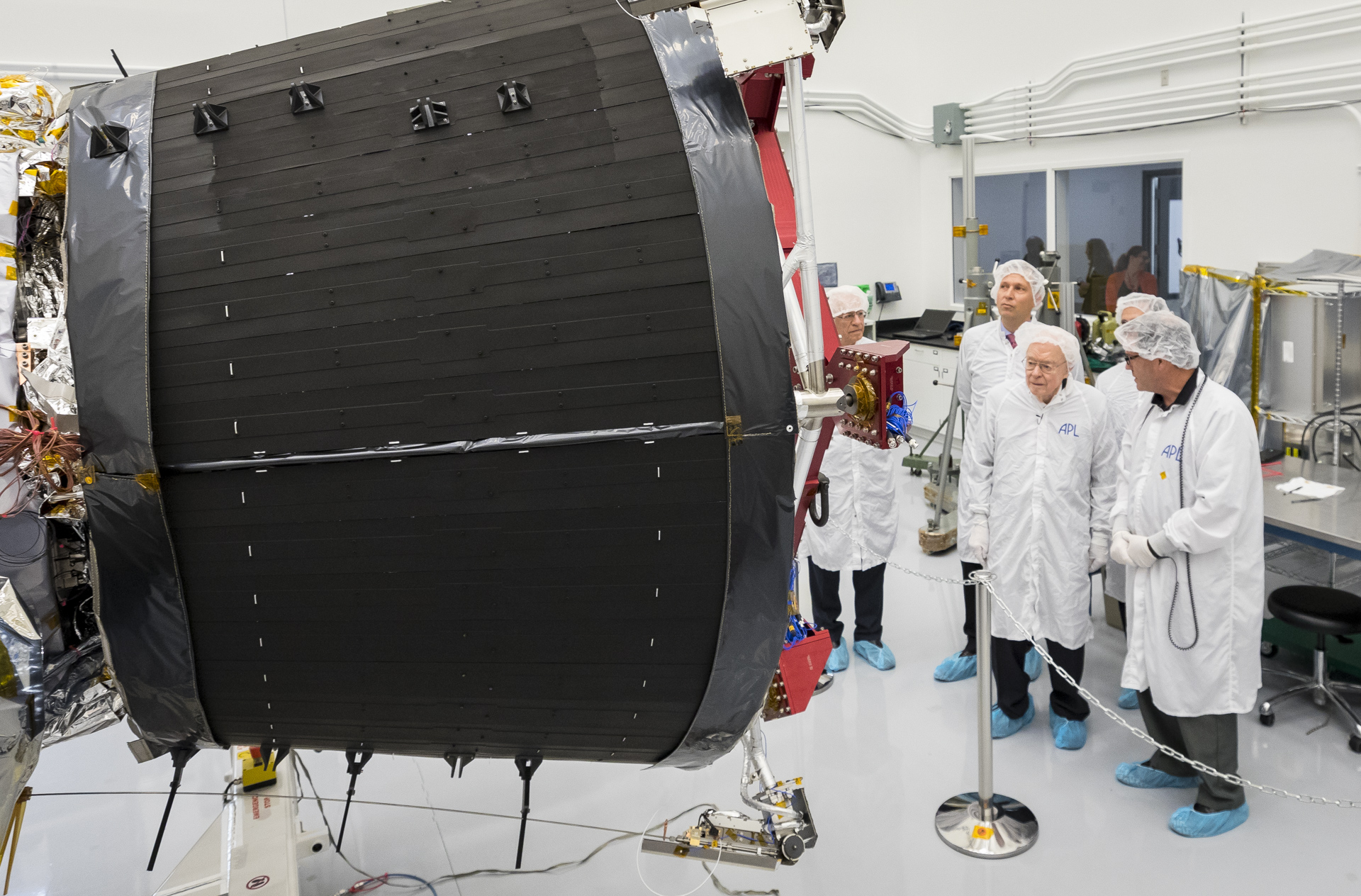
2022-03-16 12:11:56
On Oct. 3, 2017, Eugene Parker, professor emeritus at the University of Chicago, visits the spacecraft that bears his name, NASA’s Parker Solar Probe, at the Johns Hopkins Applied Physics Laboratory in Laurel, Maryland, where the probe was designed and is being built. The large black structure is one of the spacecraft's massive cooling radiators. The spacecraft is humanity’s first mission to a star, traveling directly through the Sun’s atmosphere.
Credit: NASA/Johns Hopkins APL/Ed Whitman
Download (Hi-Res)

2022-03-16 12:11:56
Eugene Parker, University of Chicago Prof. Emeritus of Astronomy and Astrophysics, is remembered for seminal contributions to the understanding of our sun and solar system.
Credit: Photo by John Zich/University of Chicago
Download (Hi-Res)
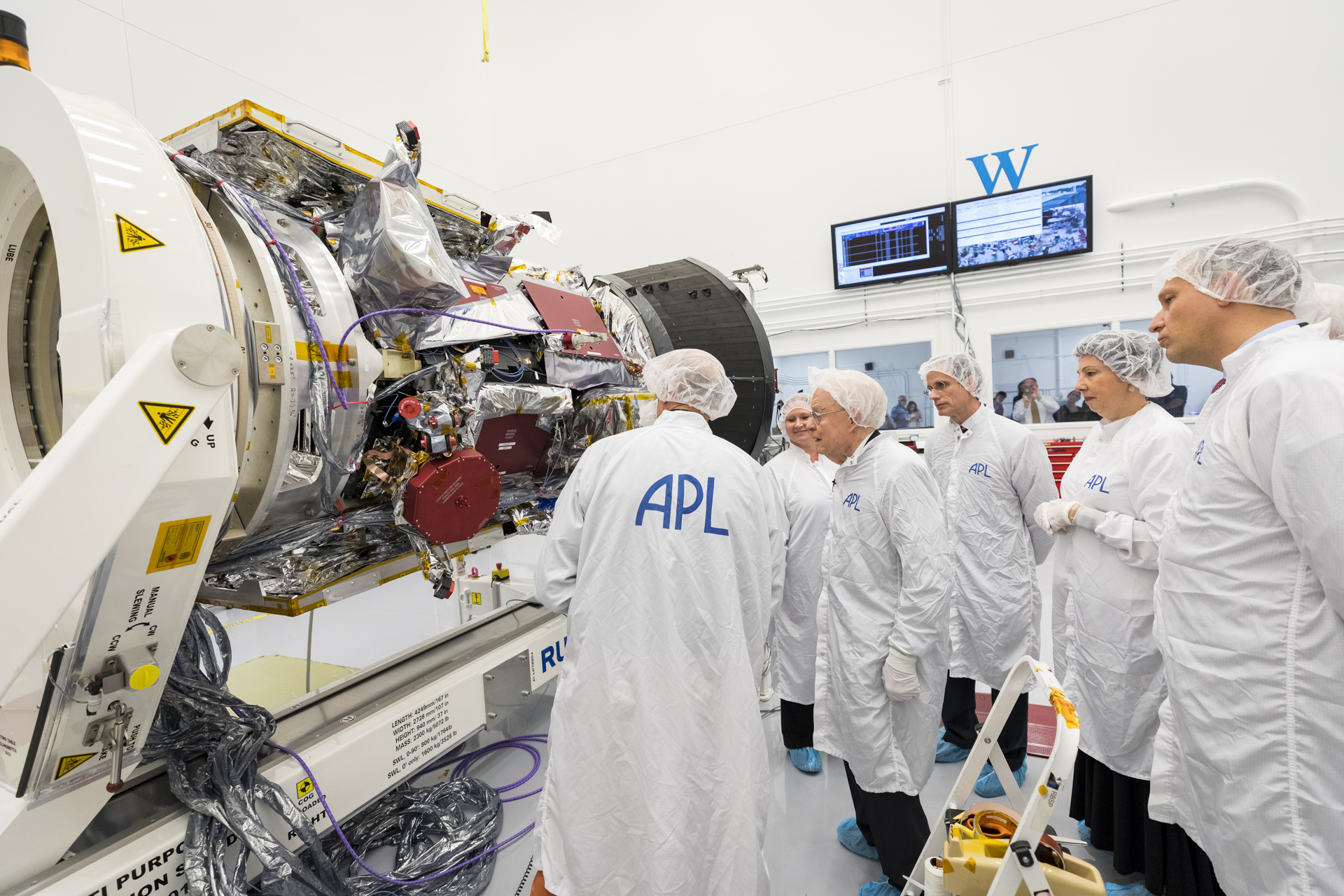
2022-03-16 12:11:56
On Oct. 3, 2017, Eugene Parker (center), professor emeritus at the University of Chicago, visits the spacecraft that bears his name: NASA’s Parker Solar Probe. Thomas Zurbuchen (bottom right), the associate administrator for NASA’s science mission directorate, and Ralph Semmel (behind Parker), the director of the Johns Hopkins Applied Physics Laboratory in Laurel, Maryland, where the probe was designed and built, joined the tour.
Credit: NASA/Johns Hopkins APL/Ed Whitman
Download (Hi-Res)

2022-03-16 12:11:56
A plaque dedicating NASA’s Parker Solar Probe mission to its namesake, Eugene Parker, who first theorized the existence of the solar wind, was installed onto the spacecraft on May 18, 2018, at Astrotech Space Operations in Titusville, Florida. The memory card at bottom of the plaque contains 1,137,202 names submitted by the public to travel to the Sun aboard the spacecraft, along with photos of Parker and a copy of his groundbreaking 1958 scientific paper. Parker Solar Probe is the first NASA mission to be named for a living person.
Credit: NASA/Johns Hopkins APL/Ed Whitman
Download (Hi-Res)
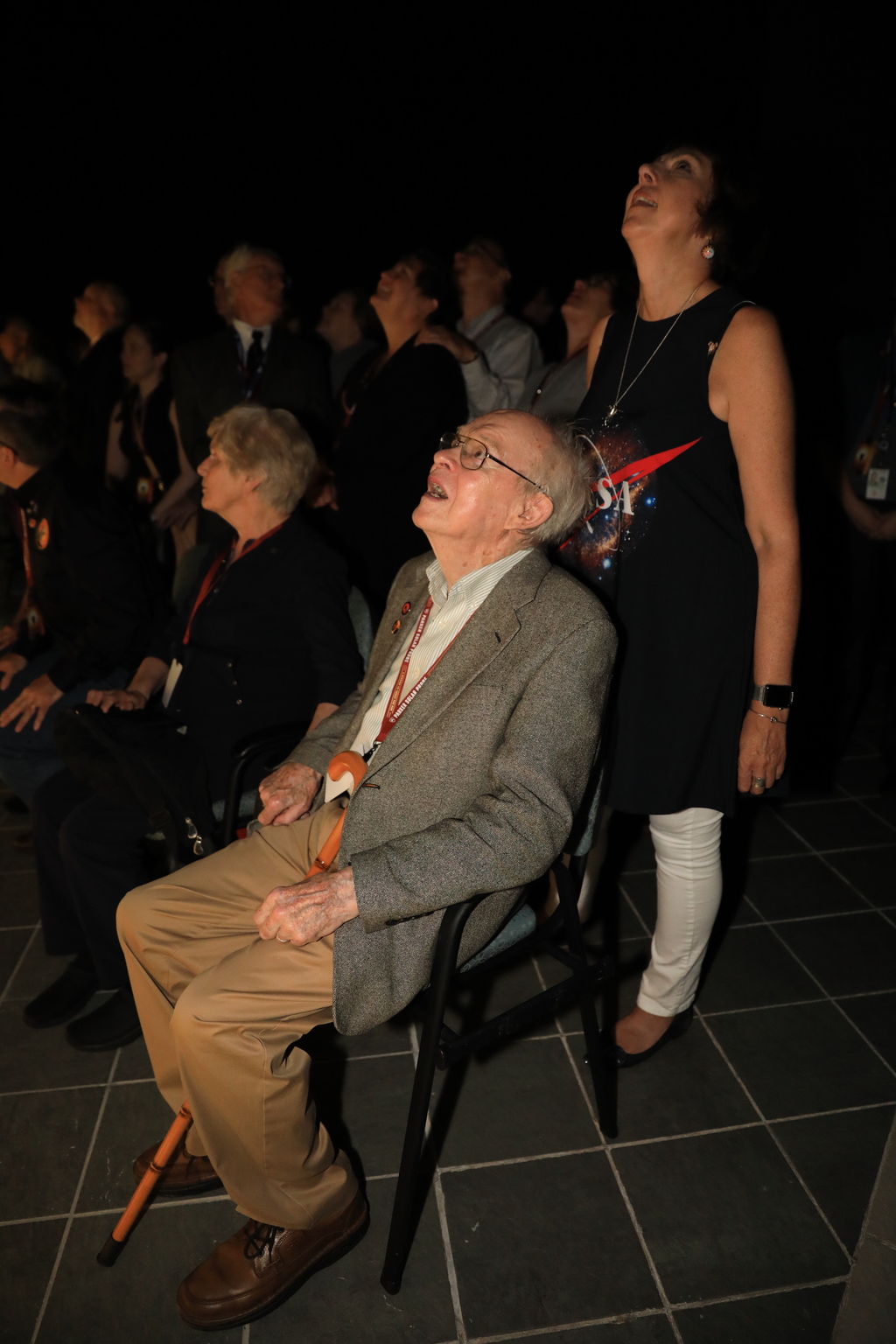
2022-03-16 12:11:56
Eugene Parker watches the launch of the spacecraft that bears his name – NASA’s Parker Solar Probe – early in the morning of Aug. 12, 2018. NASA Director of Heliophysics Nicky Fox, who at the time was the Parker Solar Probe project scientist, stands behind him. Parker Solar Probe is humanity’s first mission to the Sun and has traveled closer to our star than any spacecraft before.
Credit: NASA/Glenn Benson
Download (Hi-Res)
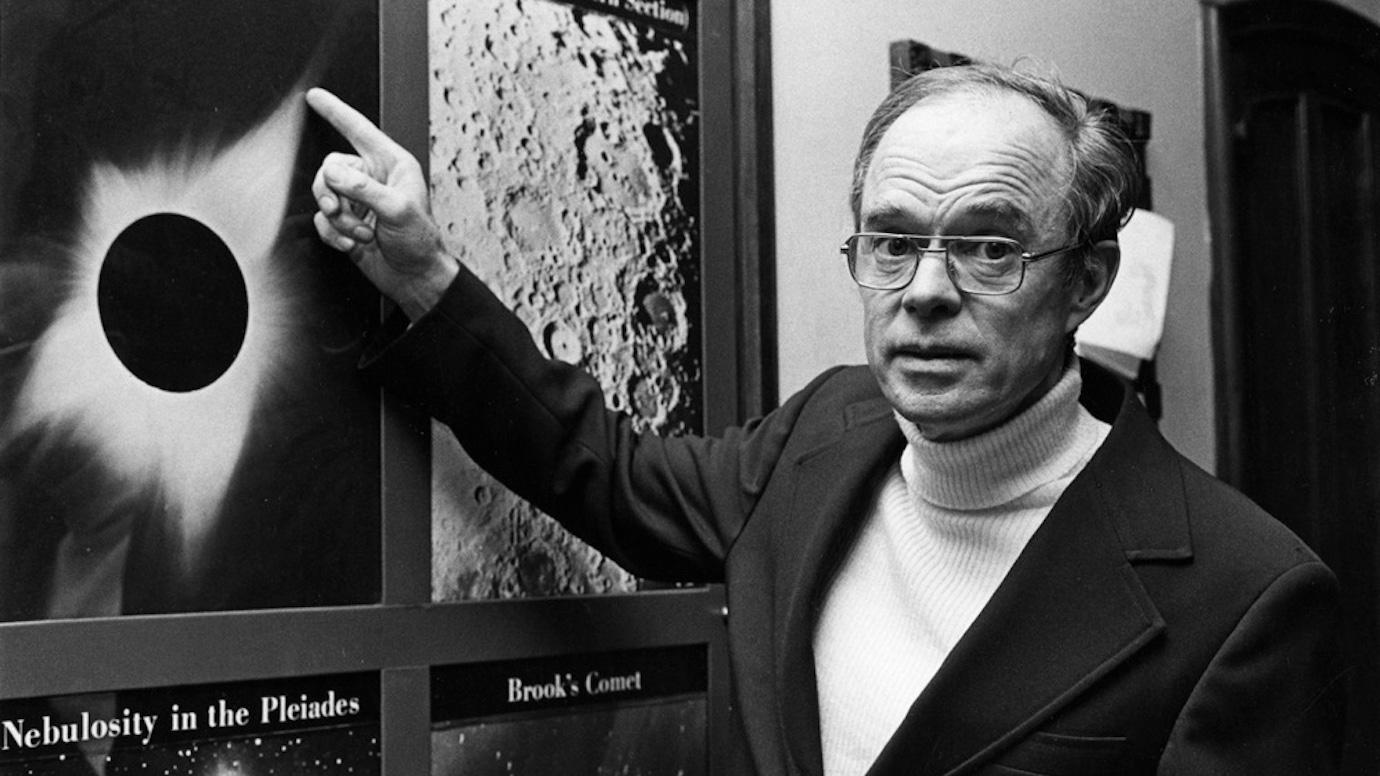
2022-03-16 12:11:56
Parker, pictured in 1977. The solar wind is visible in the halo around the sun during an eclipse.
Credit: Courtesy of the Hanna Holborn Special Collections Research Center
Download (Hi-Res)
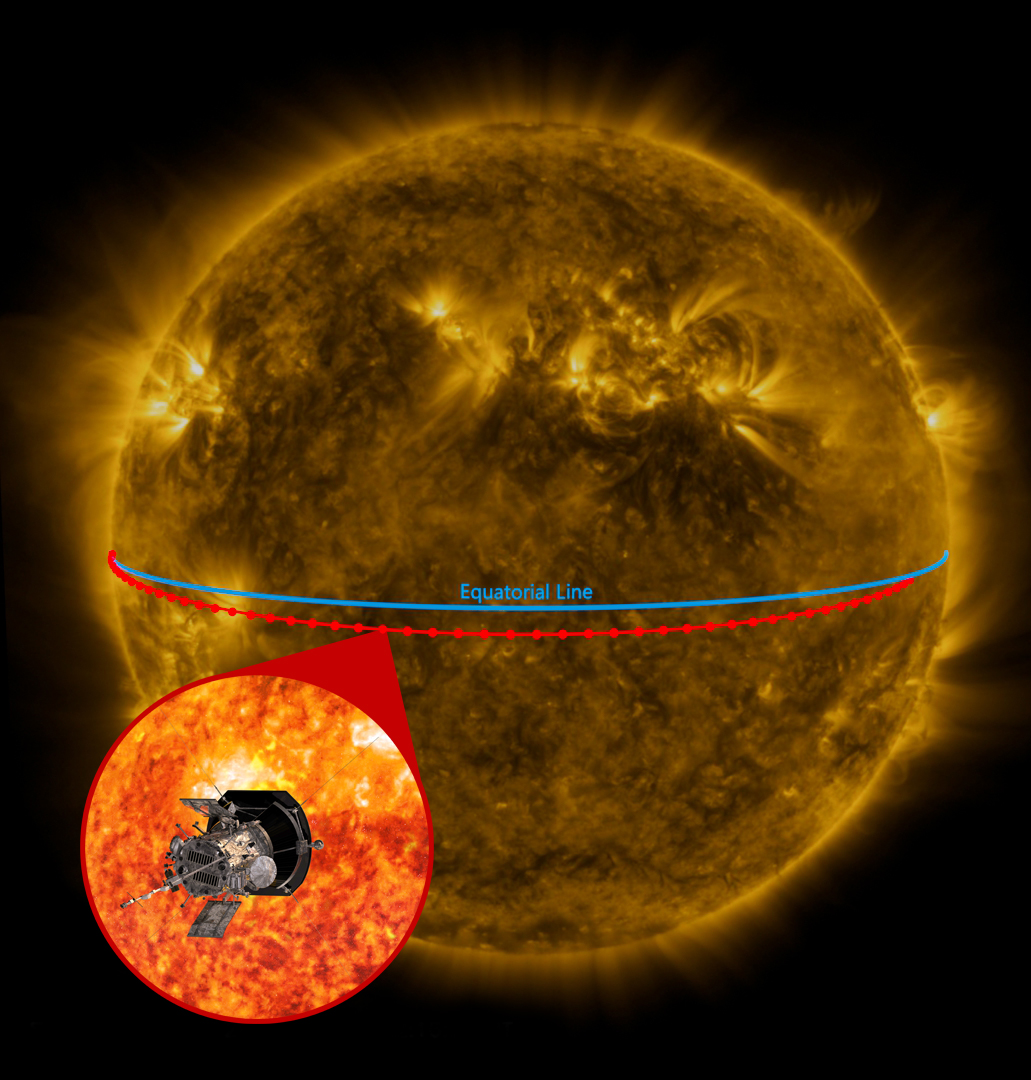
2022-03-01 21:24:31
The view from Earth: The red line indicates path of NASA's Parker Solar Probe across the face of the Sun, as seen from Earth, from Feb. 24-27, 2022. The red dots indicate an hour along the trajectory, and the appearance of the path heading into the Sun at right accounts for Earth's own movement around our star. The image of the Sun was captured by NASA’s Solar Dynamics Observatory.
Credit: Credit: NASA/Johns Hopkins APL/Steve Gribben/SDO
Download (Hi-Res)
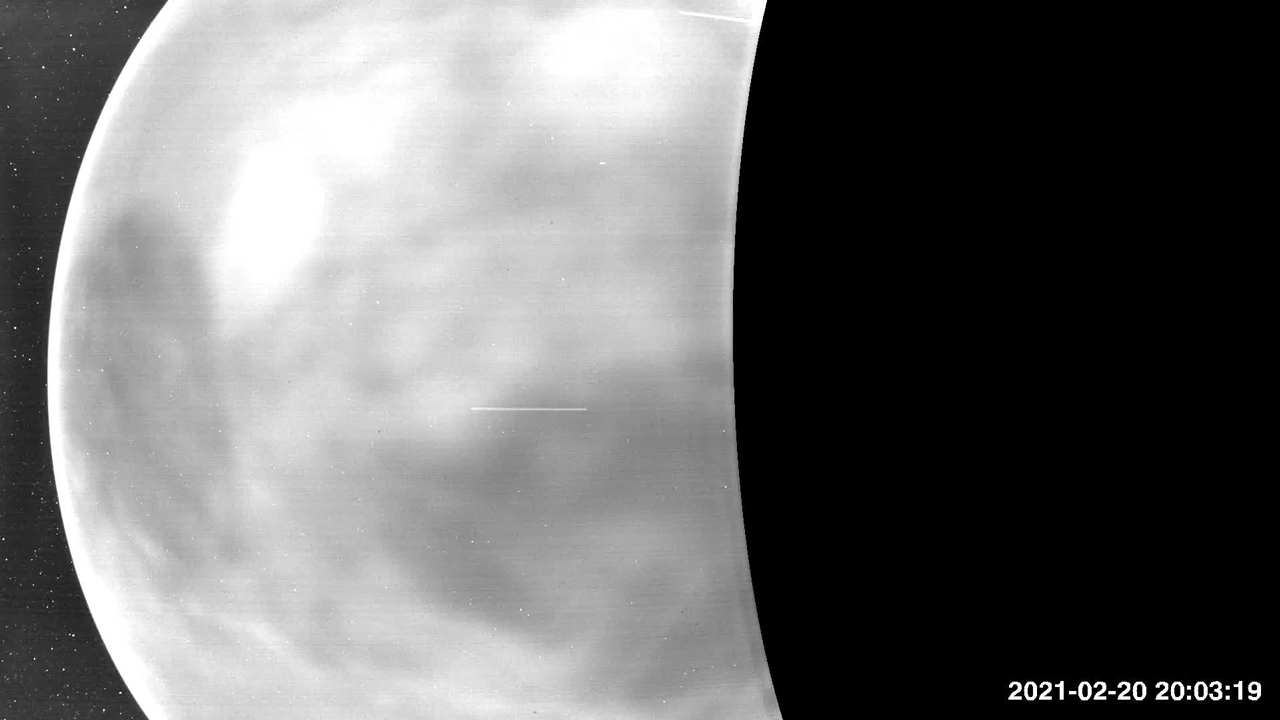
2022-02-09 10:35:30
As Parker Solar Probe flew by Venus on its fourth flyby in February 2021, its WISPR instrument captured these images, strung into a video, showing the nightside surface of the planet.
Credit: NASA/Johns Hopkins APL/NRL
Download (Hi-Res)
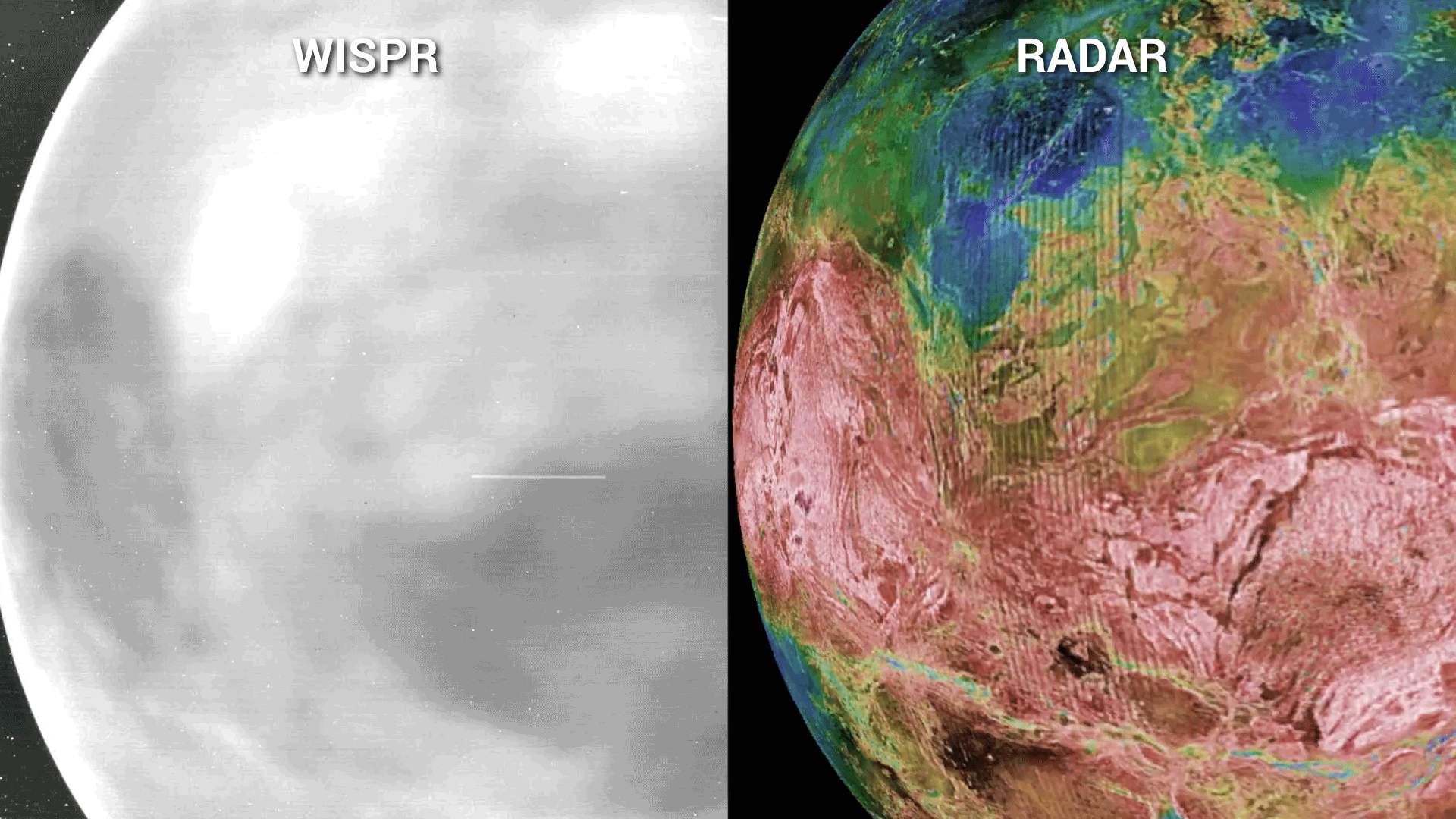
2022-02-09 10:35:30
The Magellan mission mapped the surface of Venus with radar in the 1990s. The images gave the first global view of what was below Venus’ thick clouds. Surface features seen in the WISPR images (left) match ones seen in those from the Magellan mission (right).
Credit: NASA/Johns Hopkins APL/NRL (left); Magellan Team/JPL/USGS (right)
Download (Hi-Res)
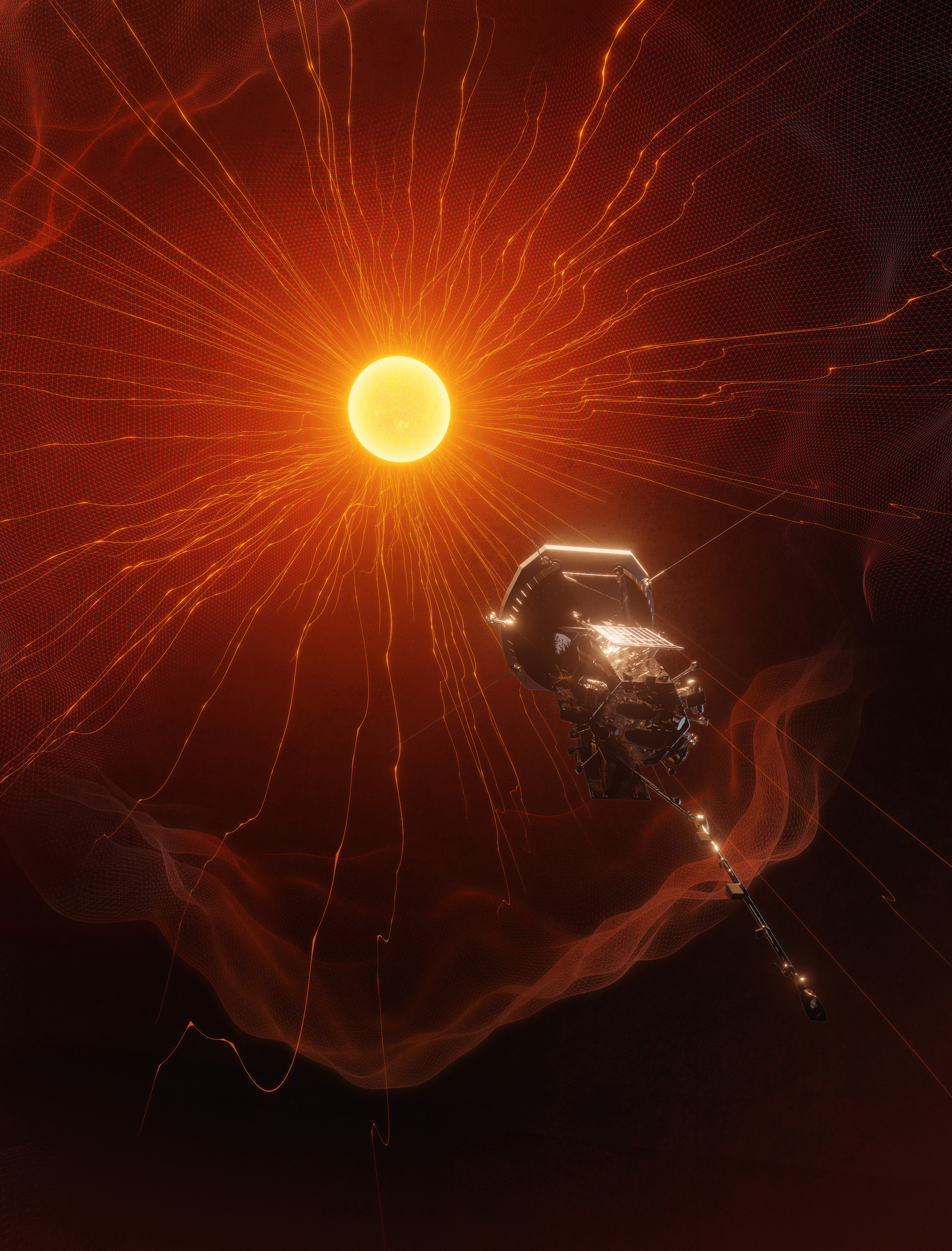
2021-12-14 10:59:52
Artist’s impression of Parker Solar Probe approaching the Alfvén critical surface, which marks the end of the solar atmosphere and the beginning of the solar wind. Parker Solar Probe’s crossing into this zone in April 2021 means the spacecraft has “touched the Sun” for the first time.
Credit: NASA/Johns Hopkins APL/Ben Smith
Download (Hi-Res)
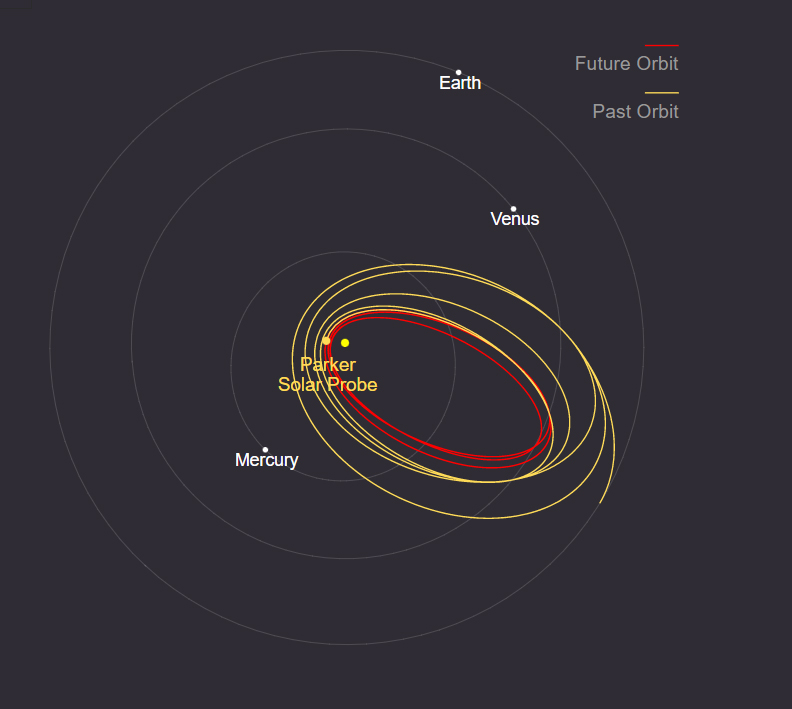
2021-11-22 16:53:38
Parker Solar Probe is in the 10th of 24 planned, progressively closer orbits around the Sun. the spacecraft, built and operated at the Johns Hopkins Applied Physics Laboratory in Laurel, Maryland, launched on Aug. 12, 2018.
Credit: NASA/Johns Hopkins APL
Download (Hi-Res)
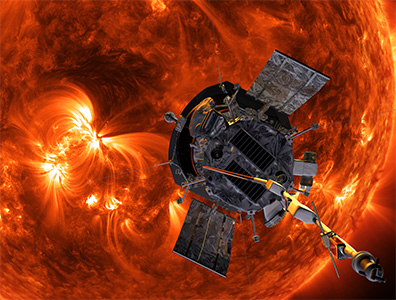
2021-11-10 14:44:47
Parker Solar Probe is observing higher than expected amounts of dust near the Sun, which mission scientists say could improve our understanding of the innermost regions of our heliosphere -- and offer insight into an environment that, until now, was a total mystery.
Credit: NASA/Johns Hopkins APL
Download (Hi-Res)

2021-09-30 18:00:47
The graphic above marks Parker Solar Probe’s location on Sept. 30. The green lines denote the spacecraft’s path since launch on Aug. 12, 2018; the red loops indicate the probe’s future, progressively closer orbits toward the Sun.
Credit: Credit: NASA/Johns Hopkins APL/Yanping Guo
Download (Hi-Res)

2021-08-13 10:47:17
Credit: NASA/Johns Hopkins APL/Steve Gribben
Download (Hi-Res)
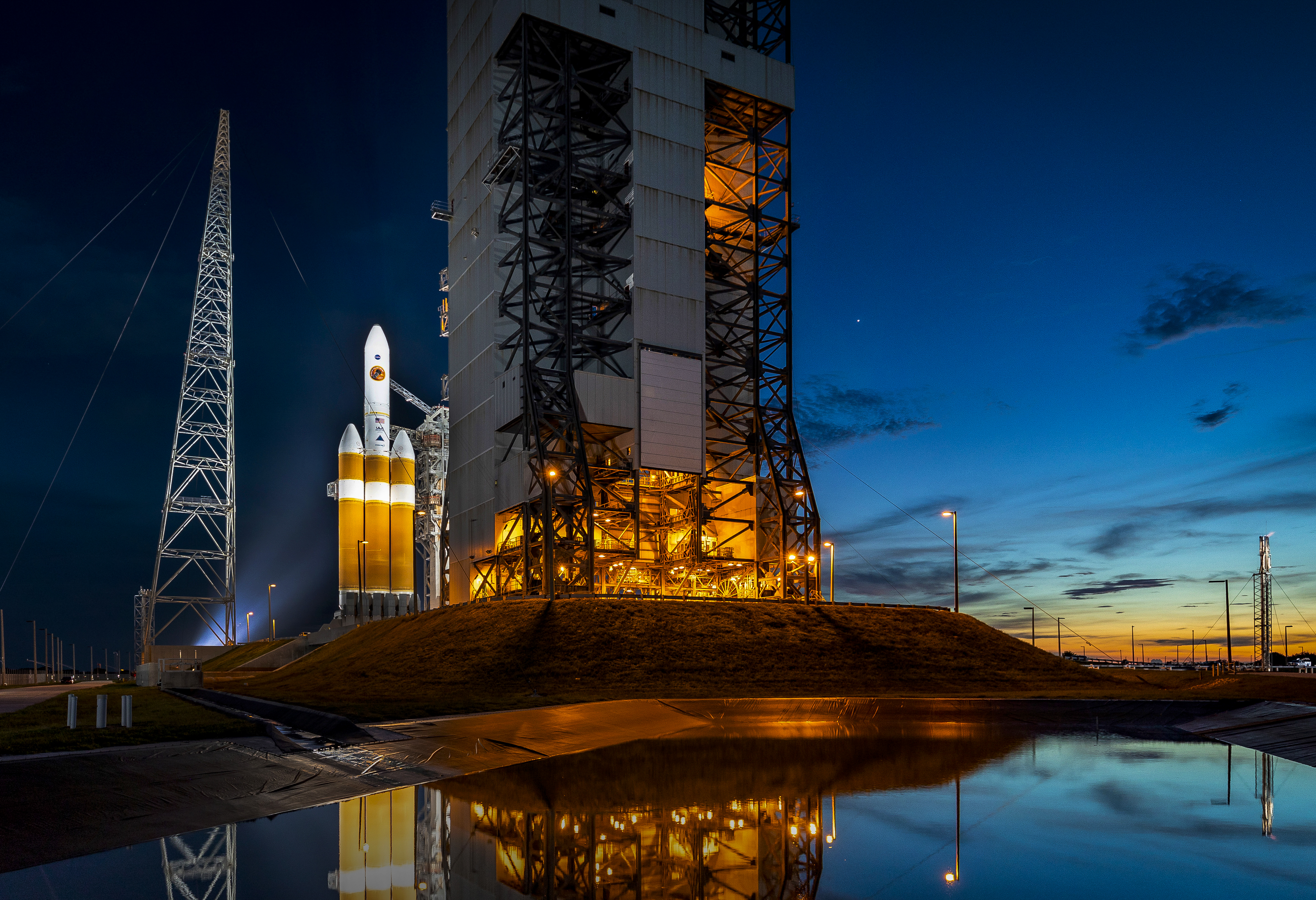
2021-08-12 08:12:41
Credit:
Download (Hi-Res)
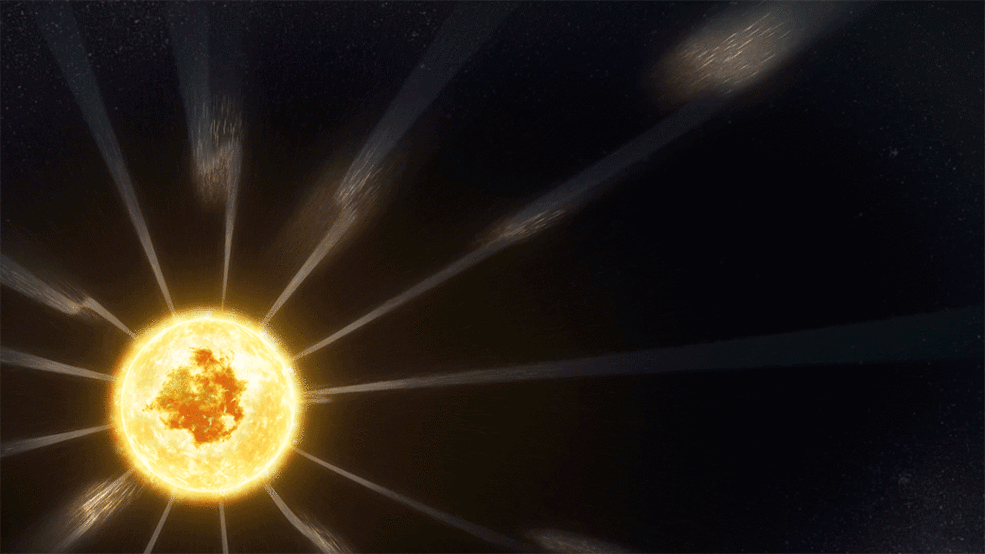
2021-06-11 13:18:25
For its efforts to untangle the long-standing mysteries of the complex solar environment — such as activity in the magnetic field embedded in the solar wind, illustrated above — the Parker Solar Probe team has earned the National Space Club and Foundation’s Nelson P. Jackson Award, which recognizes the most outstanding contribution to aerospace in the preceding year.
Credit: NASA/Johns Hopkins APL/Goddard Space Flight Center Conceptual Image Lab/Adriana Manrique Gutierrez
Download (Hi-Res)
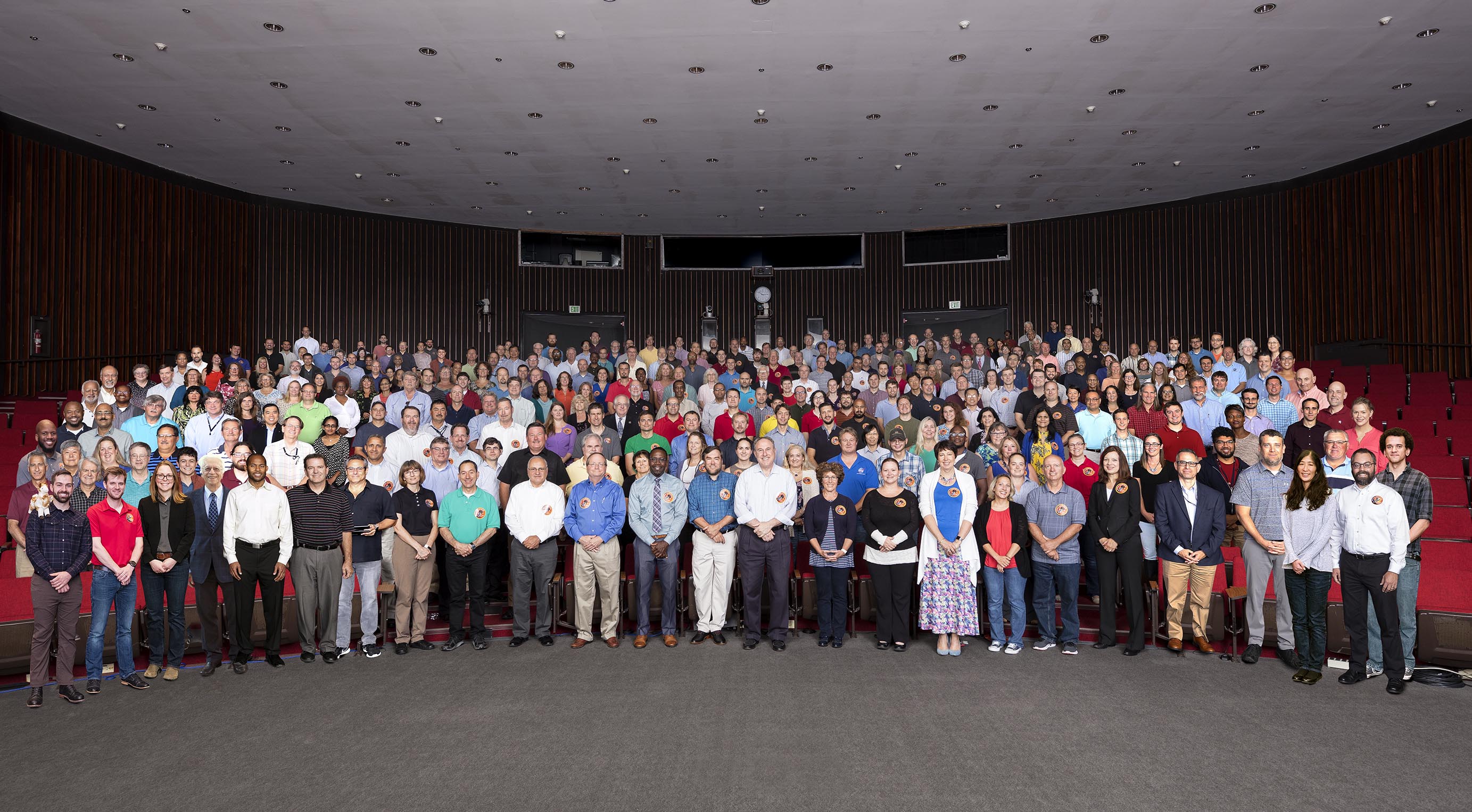
2021-06-11 13:18:25
Composite image of the Parker Solar Probe mission team at the Johns Hopkins Applied Physics Laboratory in Laurel, Maryland, shortly before the spacecraft was launched in 2018.
Credit: Johns Hopkins APL/Ed Whitman
Download (Hi-Res)
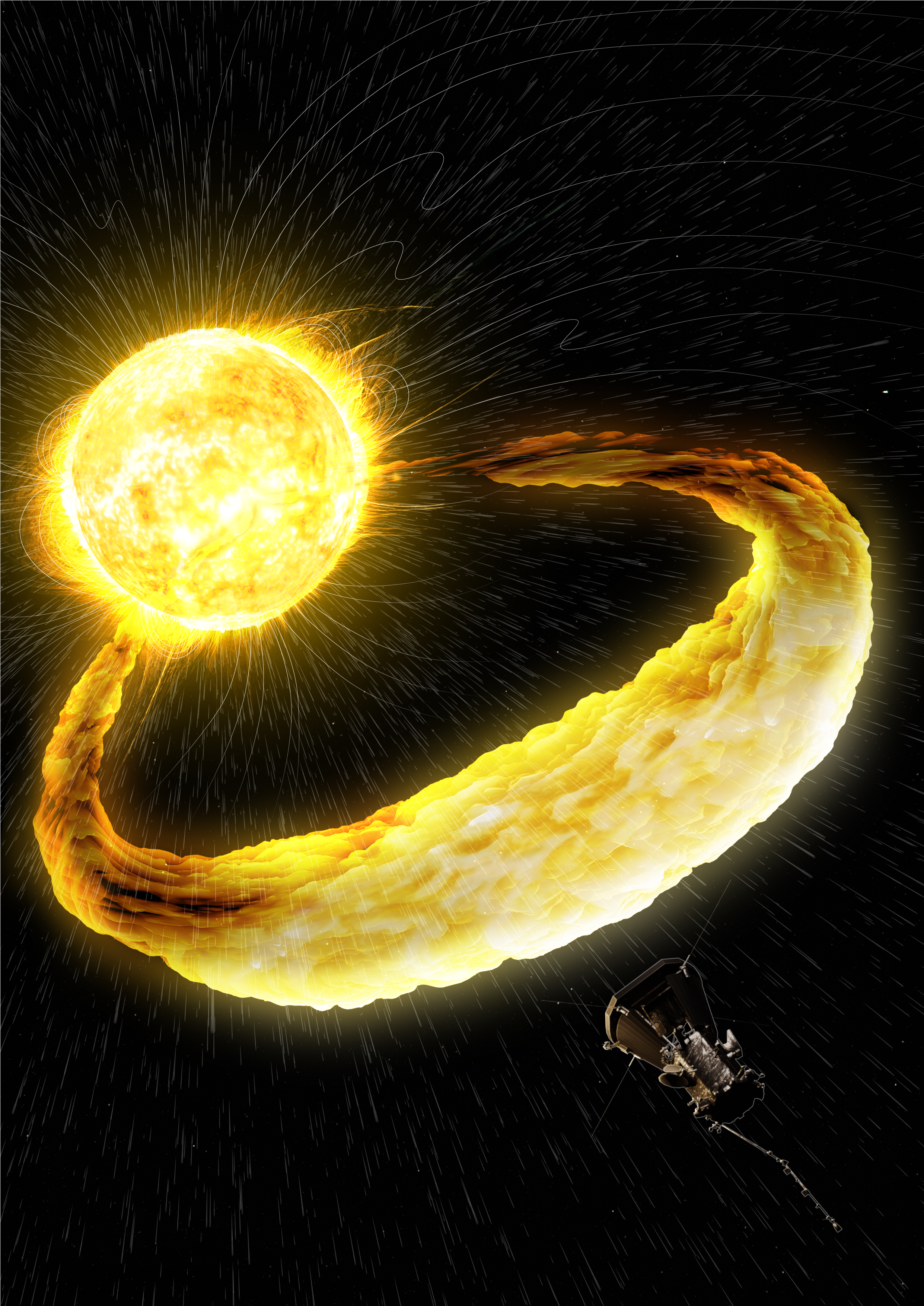
2021-06-02 21:29:50
Among the major topics covered in the Astronomy & Astrophysics papers are magnetic switchbacks first discovered by Parker Solar Probe, the role of waves in heating solar plasma, solar angular momentum, the near-Sun dust environment, and the diversity of small energetic-particle events
Credit: NASA/Johns Hopkins APL/Ben Smith
Download (Hi-Res)
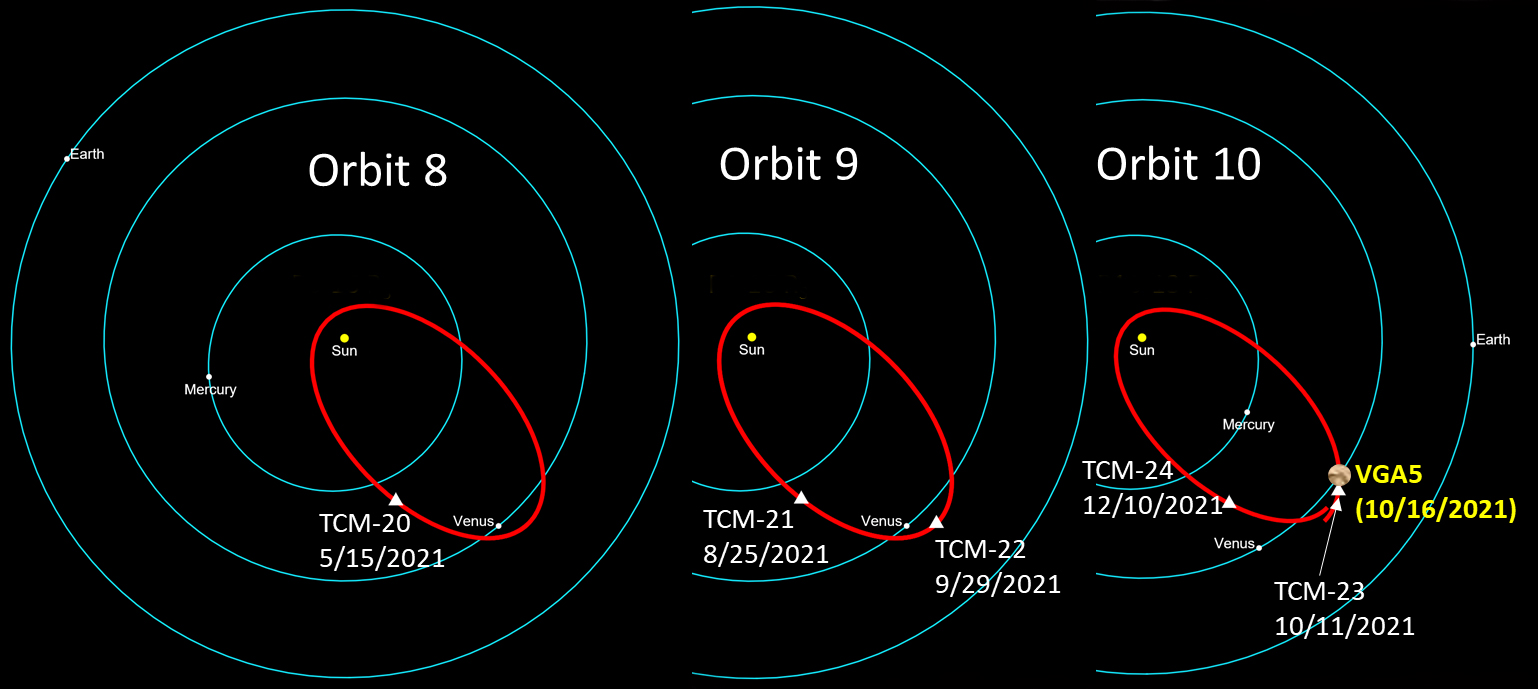
2021-05-19 12:26:14
Diagram of Parker Solar Probe’s latest and next two orbits and close approaches – or perihelion – to the Sun. The diagram includes the dates and locations of planned trajectory correction maneuvers (TCMs) leading up to, and just after, the spacecraft’s fifth Venus gravity assist flyby – VGA5 – on Oct. 16. Having completed the TCM on May 15, the mission team will evaluate the necessity of the other course-correction maneuvers over the next several months.
Credit: NASA/Johns Hopkins APL/Yanping Guo
Download (Hi-Res)
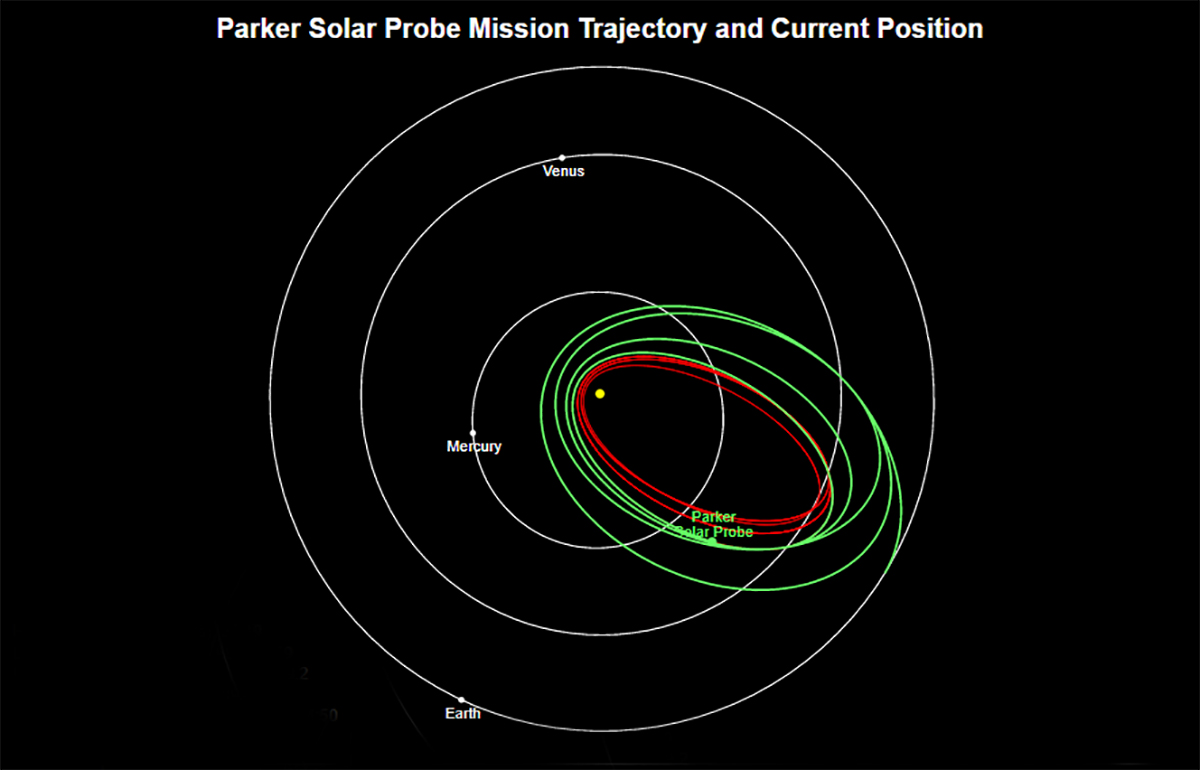
2021-05-19 12:26:14
The graphic above marks Parker Solar Probe’s location on May 18. The green lines denote the spacecraft’s path since launch on Aug. 12, 2018; the red loops indicate the probe’s future, progressively closer orbits toward the Sun.
Credit: NASA/Johns Hopkins APL/Yanping Guo
Download (Hi-Res)
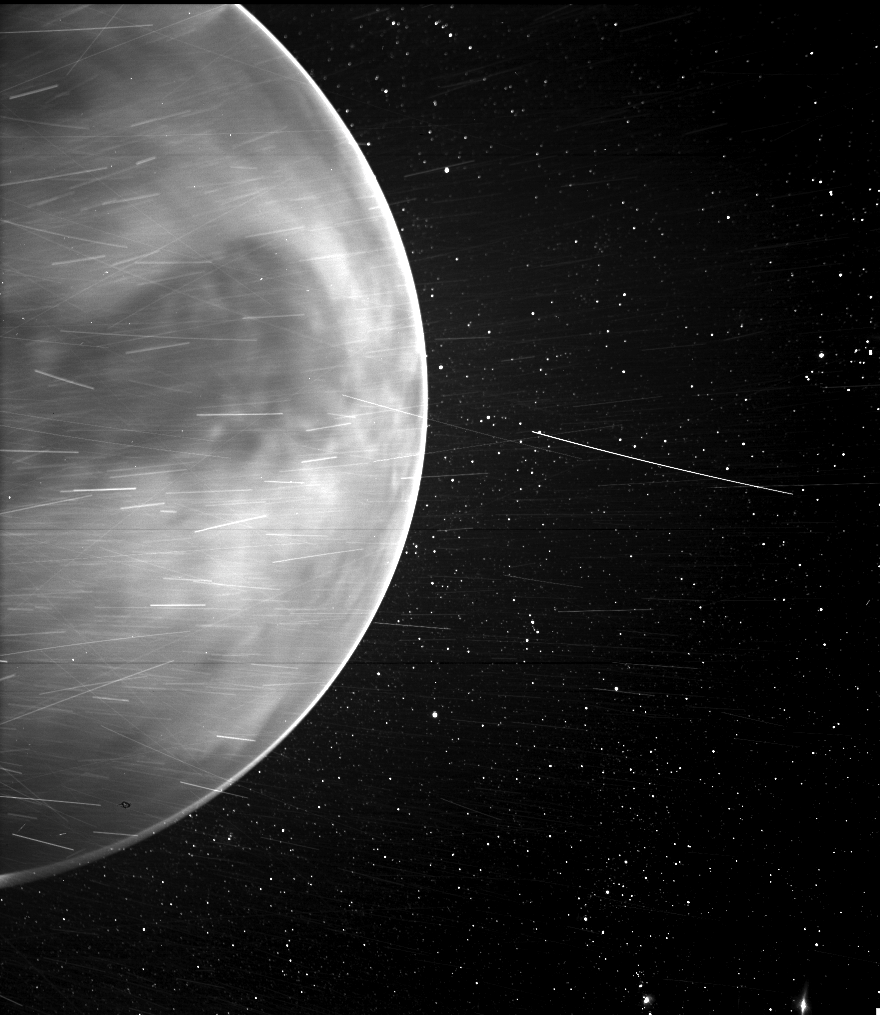
2021-02-24 16:04:40
When flying past Venus in July 2020, Parker Solar Probe’s WISPR instrument, short for Wide-field Imager for Parker Solar Probe, detected a bright rim around the edge of the planet that may be nightglow — light emitted by oxygen atoms high in the atmosphere that recombine into molecules in the nightside. The prominent dark feature in the center of the image is Aphrodite Terra, the largest highland region on the Venusian surface. Bright streaks in WISPR, such as the ones seen here, are typically caused by a combination of charged particles — called cosmic rays — sunlight reflected by grains of space dust, and particles of material expelled from the spacecraft’s structures after impact with those dust grains. The number of streaks varies along the orbit or when the spacecraft is traveling at different speeds, and scientists are still in discussion about the specific origins of the streaks here. The dark spot appearing on the lower portion of Venus is an artifact from the WISPR instrument.
Credit: NASA/Johns Hopkins APL/Naval Research Laboratory/Guillermo Stenborg and Brendan Gallagher
Download (Hi-Res)
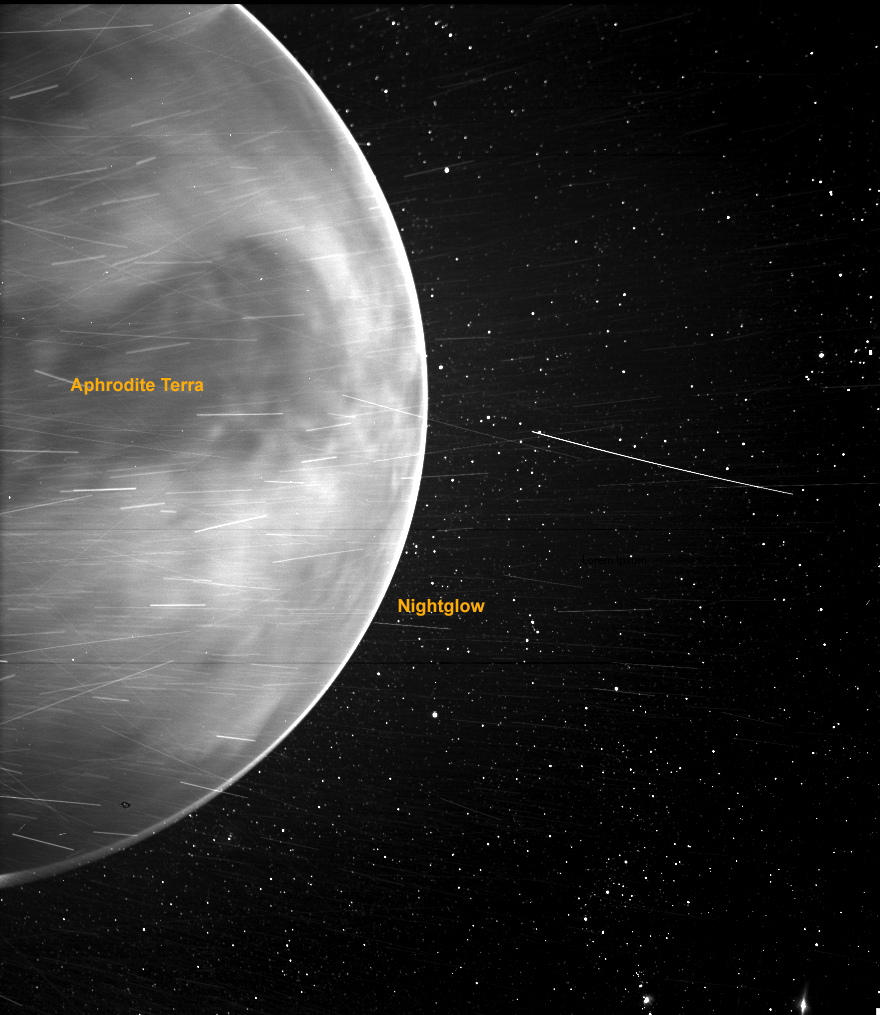
2021-02-24 16:04:40
Credit: NASA/Johns Hopkins APL/Naval Research Laboratory/Guillermo Stenborg and Brendan Gallagher
Download (Hi-Res)
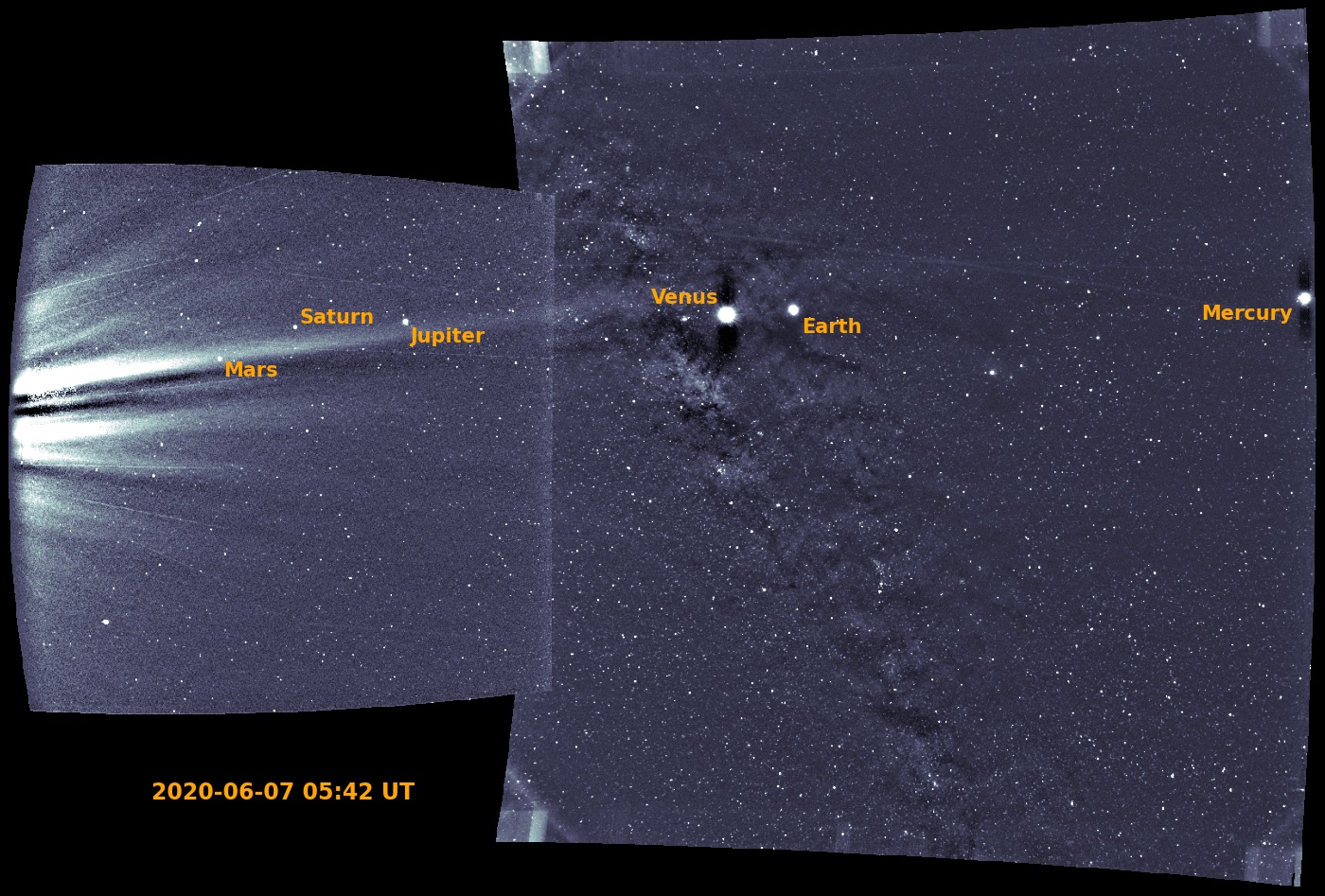
2021-01-26 15:10:27
Parker Solar Probe was making its closest approach to the Sun on June 7, 2020, when its Wide-field Imager for Solar PRobe (WISPR) captured the planets Mercury, Venus, Earth, Mars, Jupiter and Saturn in its field of view.
Credit: NASA/Johns Hopkins APL/Naval Research Laboratory/Guillermo Stenborg and Brendan Gallagher
Download (Hi-Res)
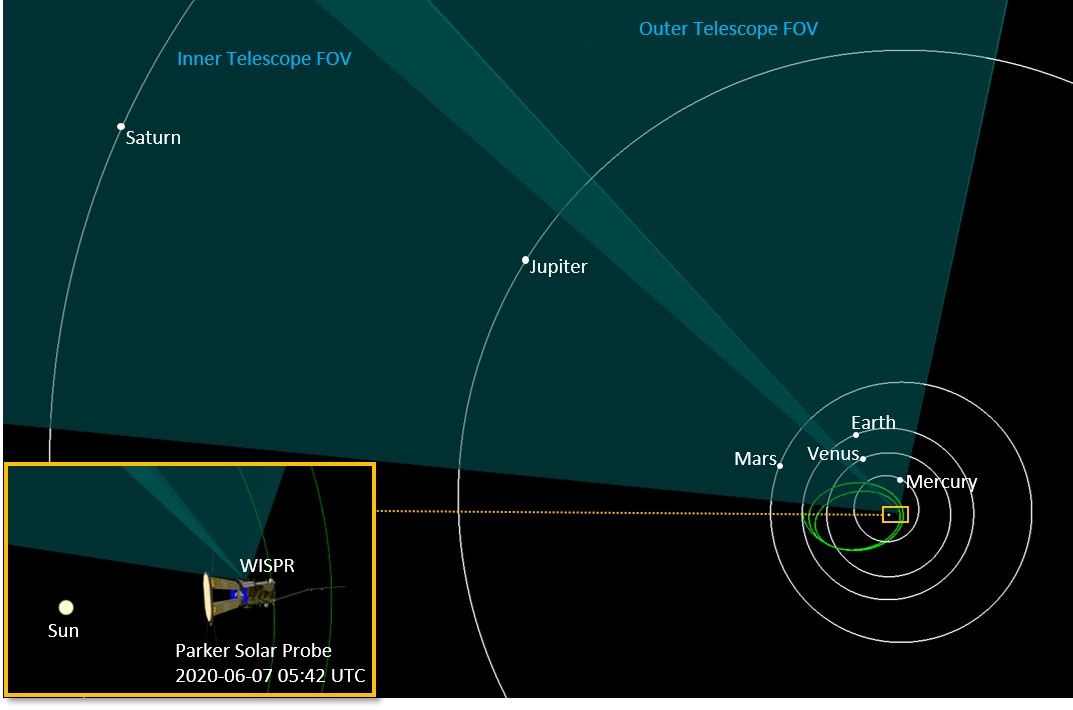
2021-01-26 15:10:27
This graphic illustrates Parker Solar Probe’s position and view of the solar system when it took the “six planet” image on June 7, 2020. The green loops overlapping the inner planets marks Parker Solar Probe’s path around the Sun. The inset shows the orientation of the spacecraft as well as WISPR's location. The slightly brighter region between the fields of view is the imager telescopes’ overlapping views.
Credit: NASA/Johns Hopkins APL/Yanping Guo
Download (Hi-Res)
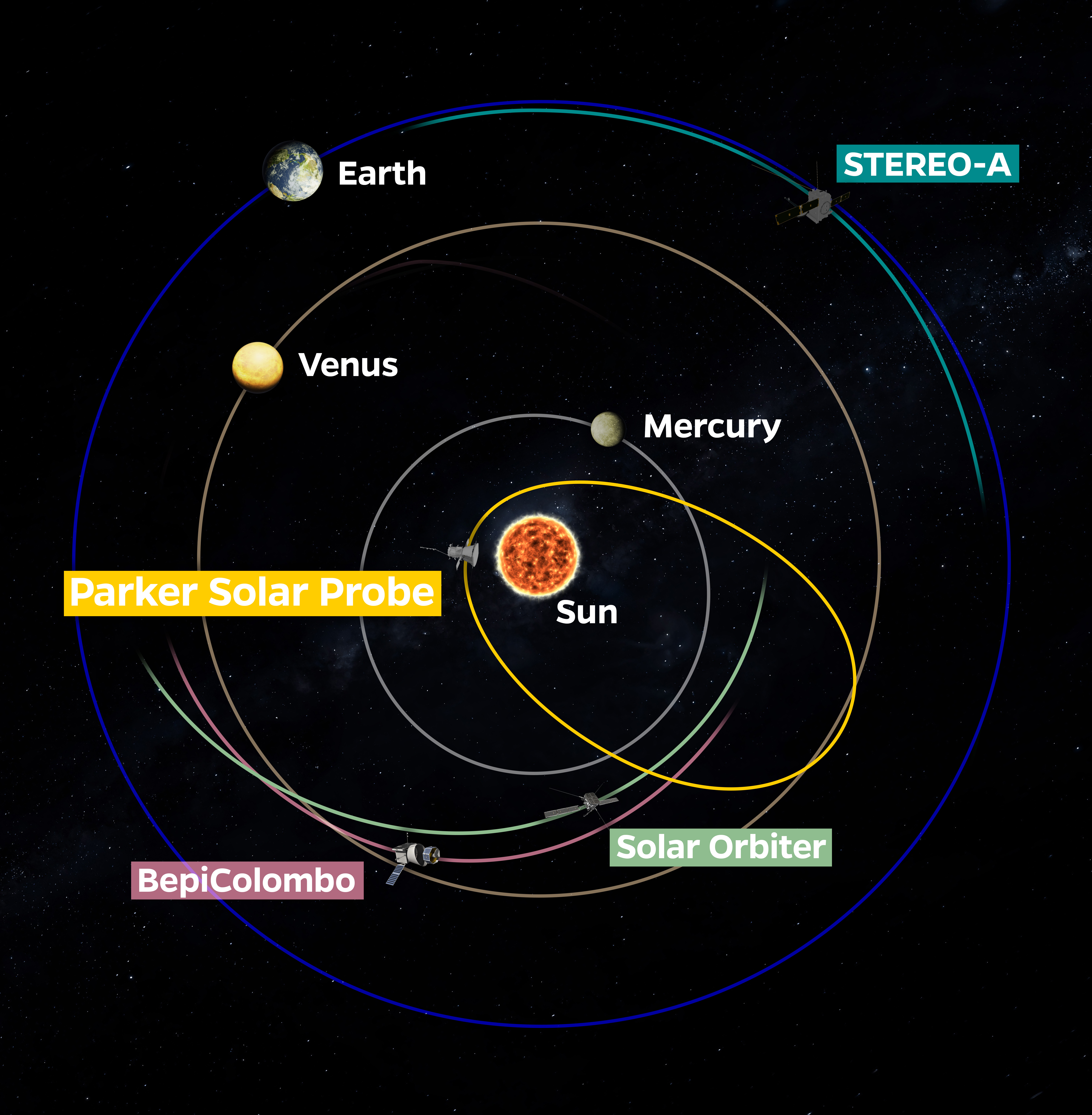
2021-01-21 14:32:33
With Parker Solar Probe’s latest closest approach to the Sun in direct view of Earth, some 40 observatories around the globe and several spacecraft, including STEREO, BepiColombo, andSolar Orbiter, made simultaneous observations of activity stretching from the Sun to Earth. Distances and planet and spacecraft locations are not to scale.
Credit: NASA/Johns Hopkins APL/Nate Rudolph
Download (Hi-Res)
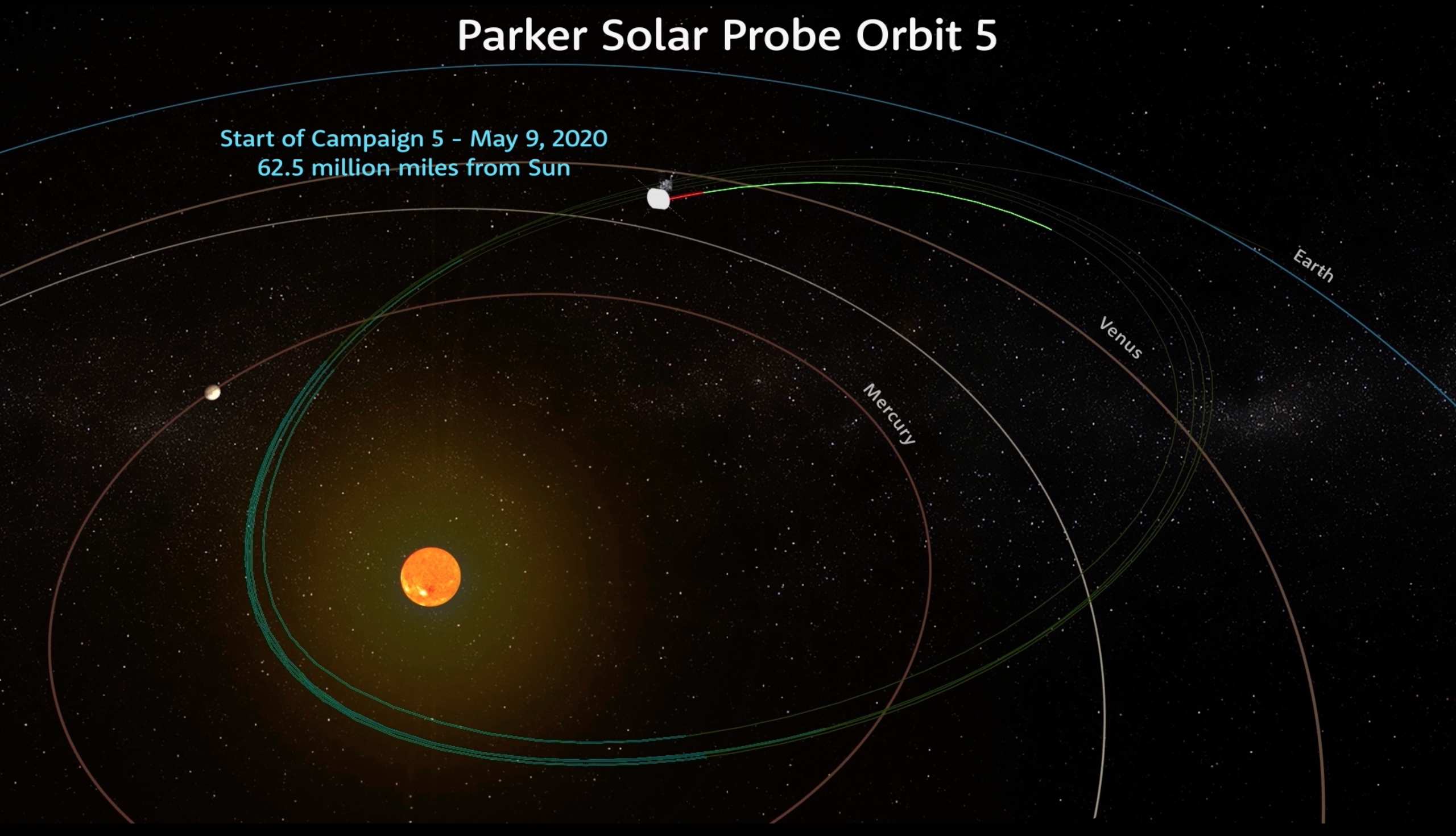
2020-11-17 11:16:41
Credit:
Download (Hi-Res)
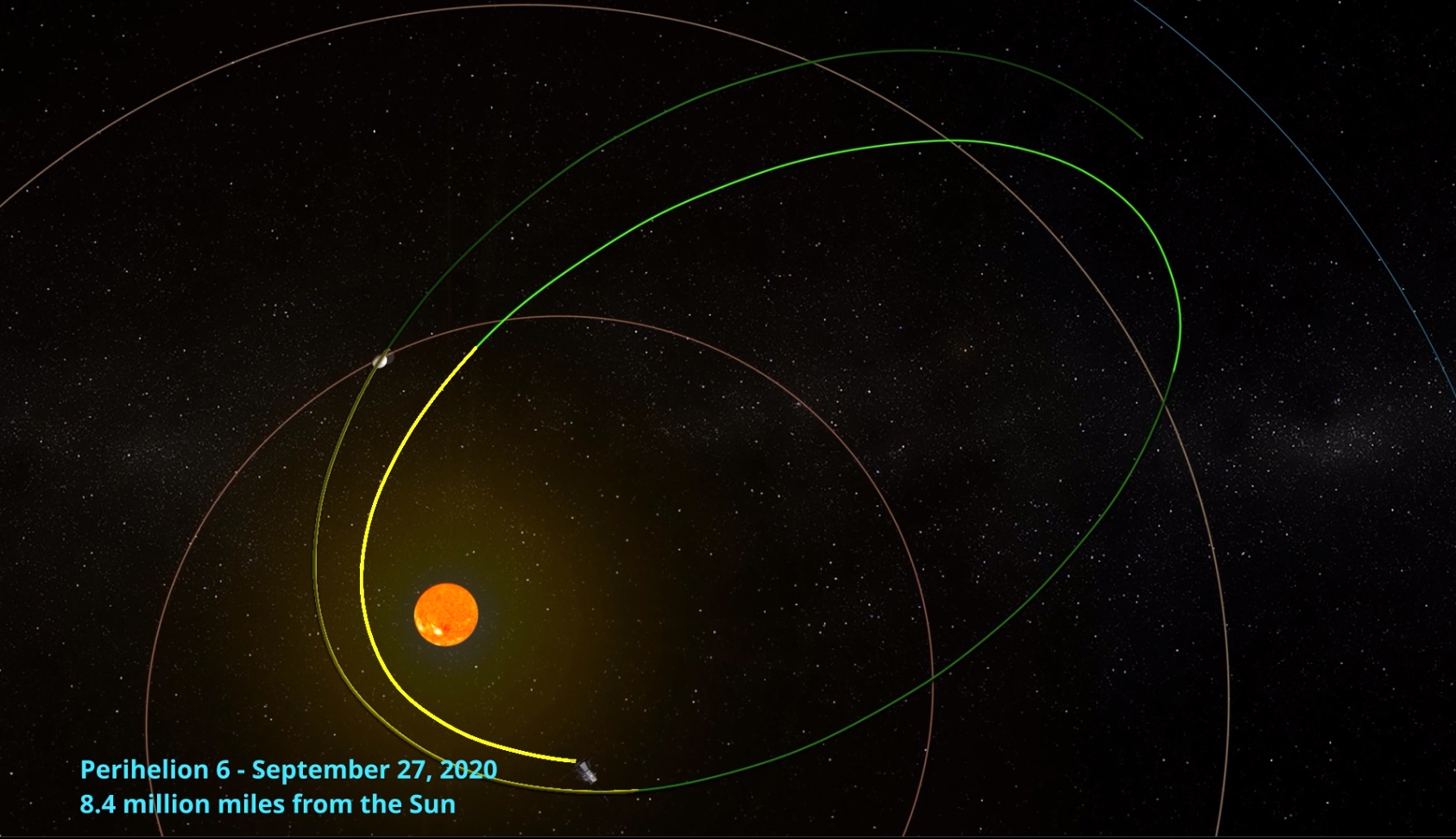
2020-09-30 14:10:19
Credit: NASA/Johns Hopkins APL/Steve Gribben
Download (Hi-Res)
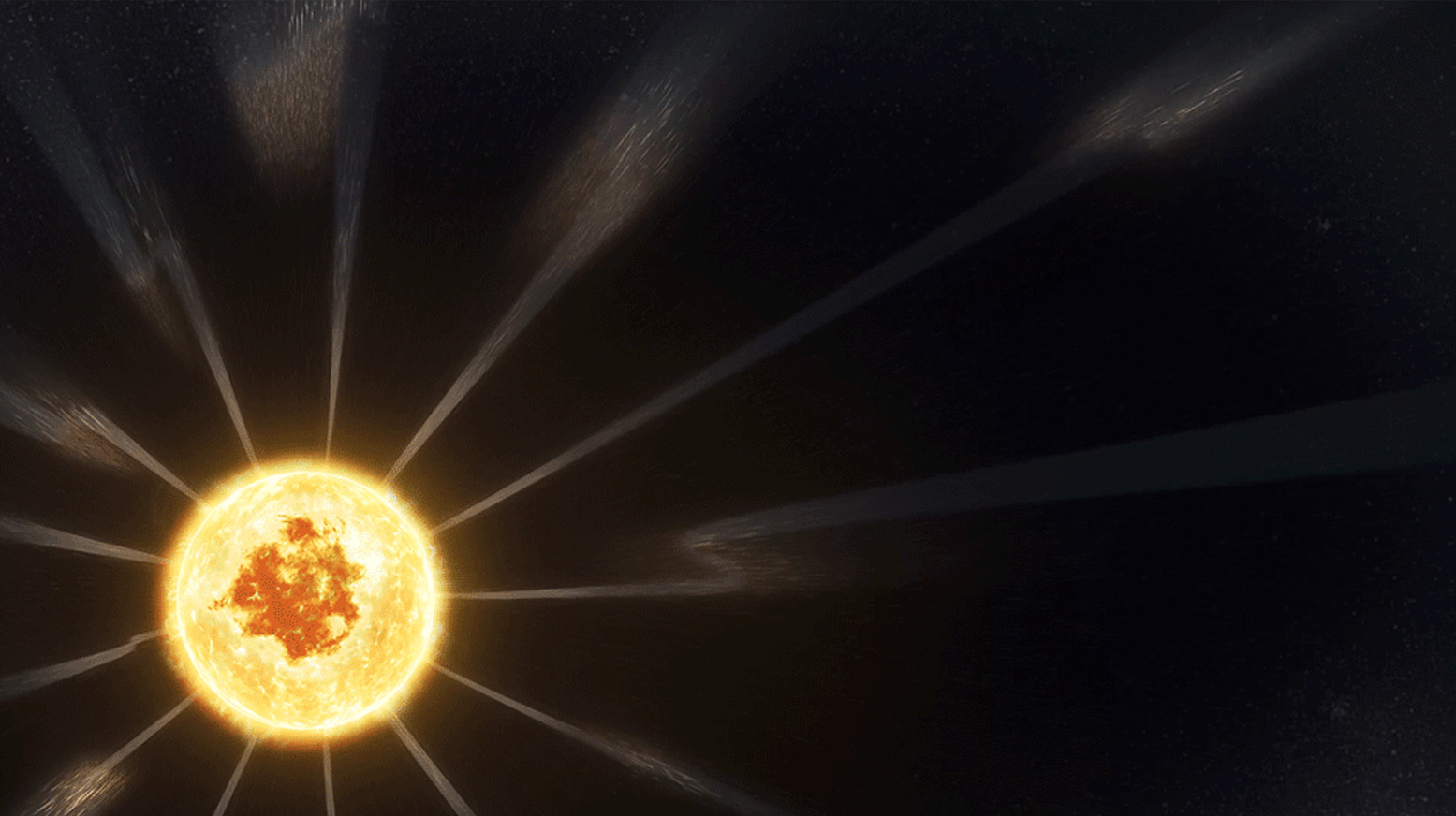
2020-09-16 10:54:52
To date, Parker Solar Probe has observed switchbacks, which are traveling disturbances in the solar wind that caused the magnetic field to bend back on itself, an as-yet unexplained phenomenon that might help scientists uncover more information about how the solar wind is accelerated from the Sun.
Credit: NASA Goddard Space Flight Center/Conceptual Image Lab/Adriana Manrique Gutierrez
Download (Hi-Res)
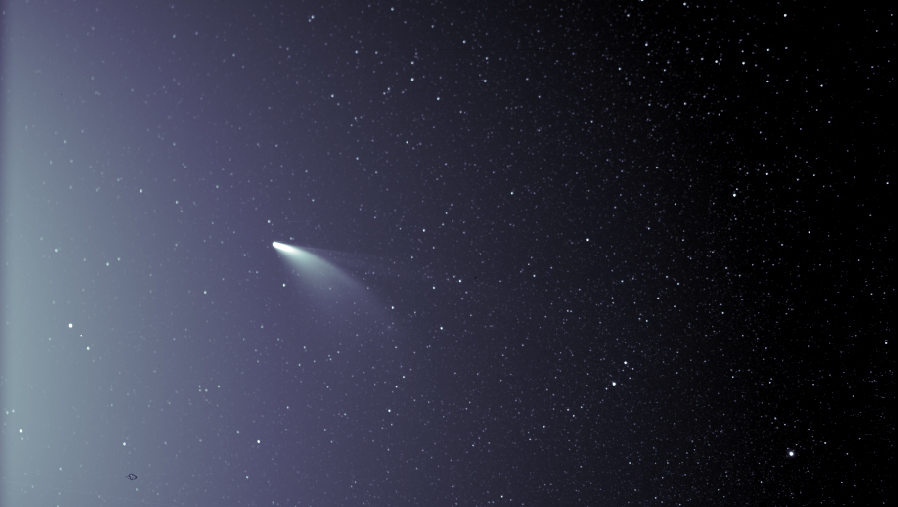
2020-07-10 16:43:03
An unprocessed image from the WISPR instrument on board NASA’s Parker Solar Probe shows comet NEOWISE on July 5, 2020, shortly after its closest approach to the Sun. The Sun is out of frame to the left. The faint grid pattern near the center of the image is an artifact of the way the image is created. The small black structure near the lower left of the image is caused by a grain of dust resting on the imager’s lens.
Credit: NASA/Johns Hopkins APL/Naval Research Lab/Parker Solar Probe/Brendan Gallagher
Download (Hi-Res)
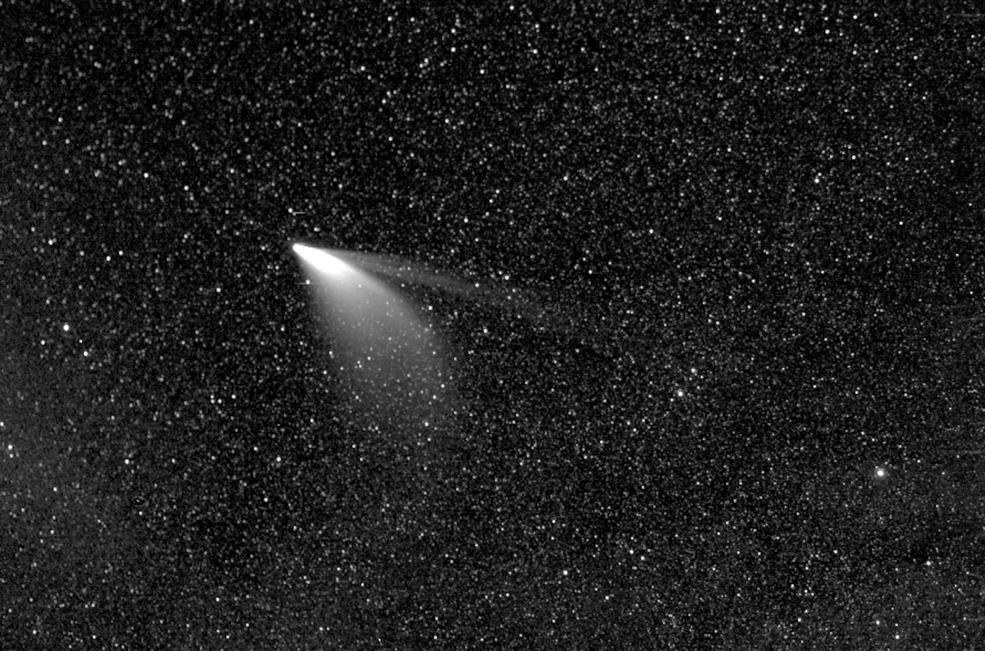
2020-07-10 16:43:03
Processed data from the WISPR instrument on NASA’s Parker Solar Probe shows greater detail in the twin tails of comet NEOWISE, as seen on July 5, 2020. The lower, broader tail is the comet’s dust tail, while the thinner, upper tail is the comet’s ion tail.
Credit: NASA/Johns Hopkins APL/Naval Research Lab/Parker Solar Probe/Guillermo Stenborg
Download (Hi-Res)
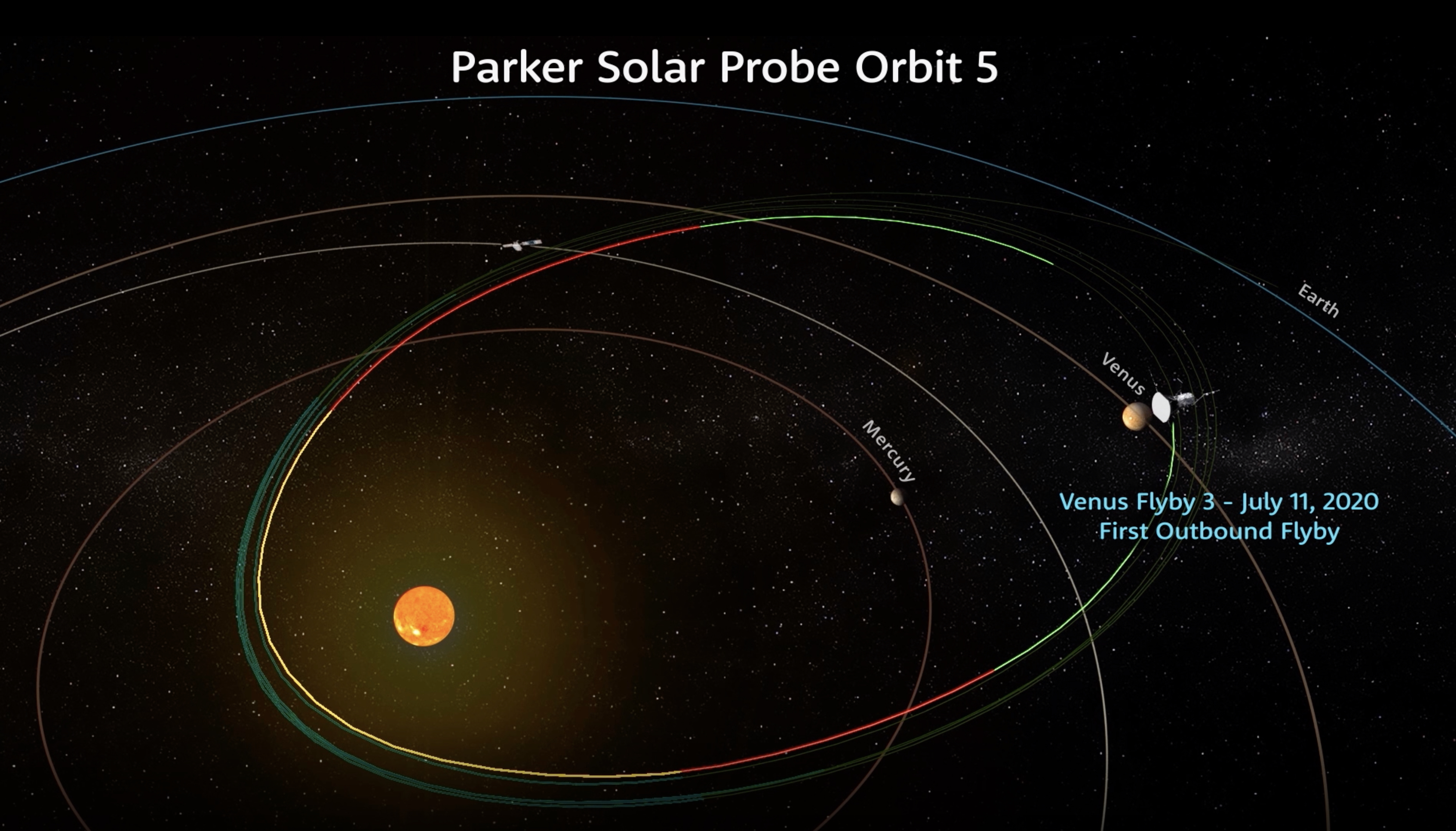
2020-07-10 12:05:00
Early on July 11, 2020 (UTC), Parker Solar Probe will perform its first outbound flyby of Venus, passing approximately 516 miles above the surface as it curves around the planet. Such Venus gravity assists play an integral role in the Parker Solar Probe mission. The spacecraft relies on the planet to rid itself of orbital energy, which in turn allows it to travel ever closer to the Sun after each Venus flyby. The mission’s previous two Venus flybys swooped past the Sun-facing side of the planet, and this will be Parker Solar Probe’s first pass on Venus’ night side.
Credit: NASA/Johns Hopkins APL
Download (Hi-Res)

2020-06-16 10:34:10
This animated sequence of visible-light images from Parker Solar Probe's WISPR instrument shows a coronal streamer, observed when Parker Solar Probe was near perihelion on Jan. 28, 2020.
Credit: NASA/Johns Hopkins APL/Naval Research Lab/Parker Solar Probe
Download (Hi-Res)
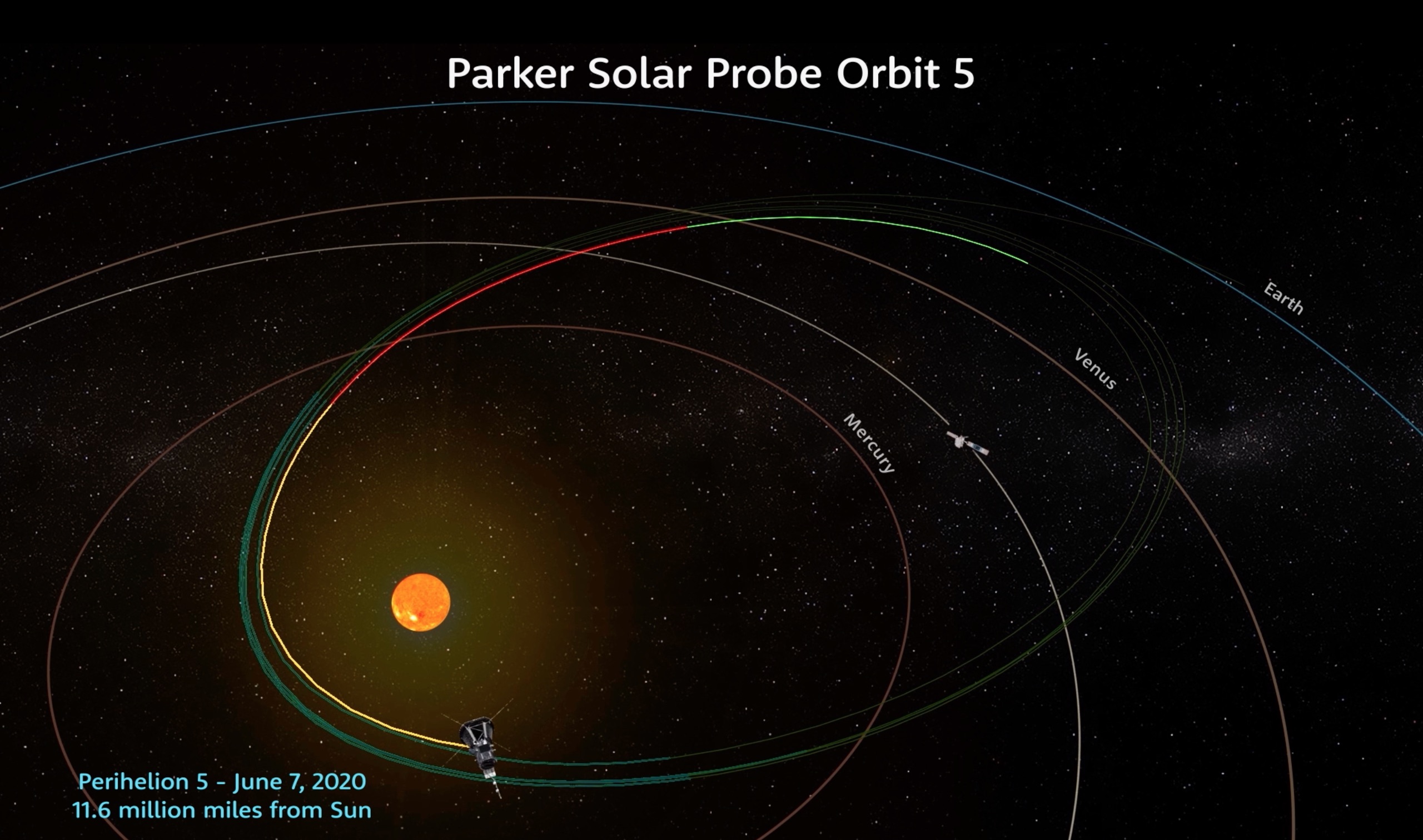
2020-06-09 17:20:32
Parker Solar Probe completed the fifth perihelion of its mission on June 7, flying within 11.6 million miles from the Sun's surface, reaching a top speed of about 244,225 miles per hour, which matches the spacecraft’s own records for closest human-made object to the Sun and fastest human-made object, set during its fourth orbit on January 29.
Credit: NASA/Johns Hopkins APL/Steve Gribben
Download (Hi-Res)
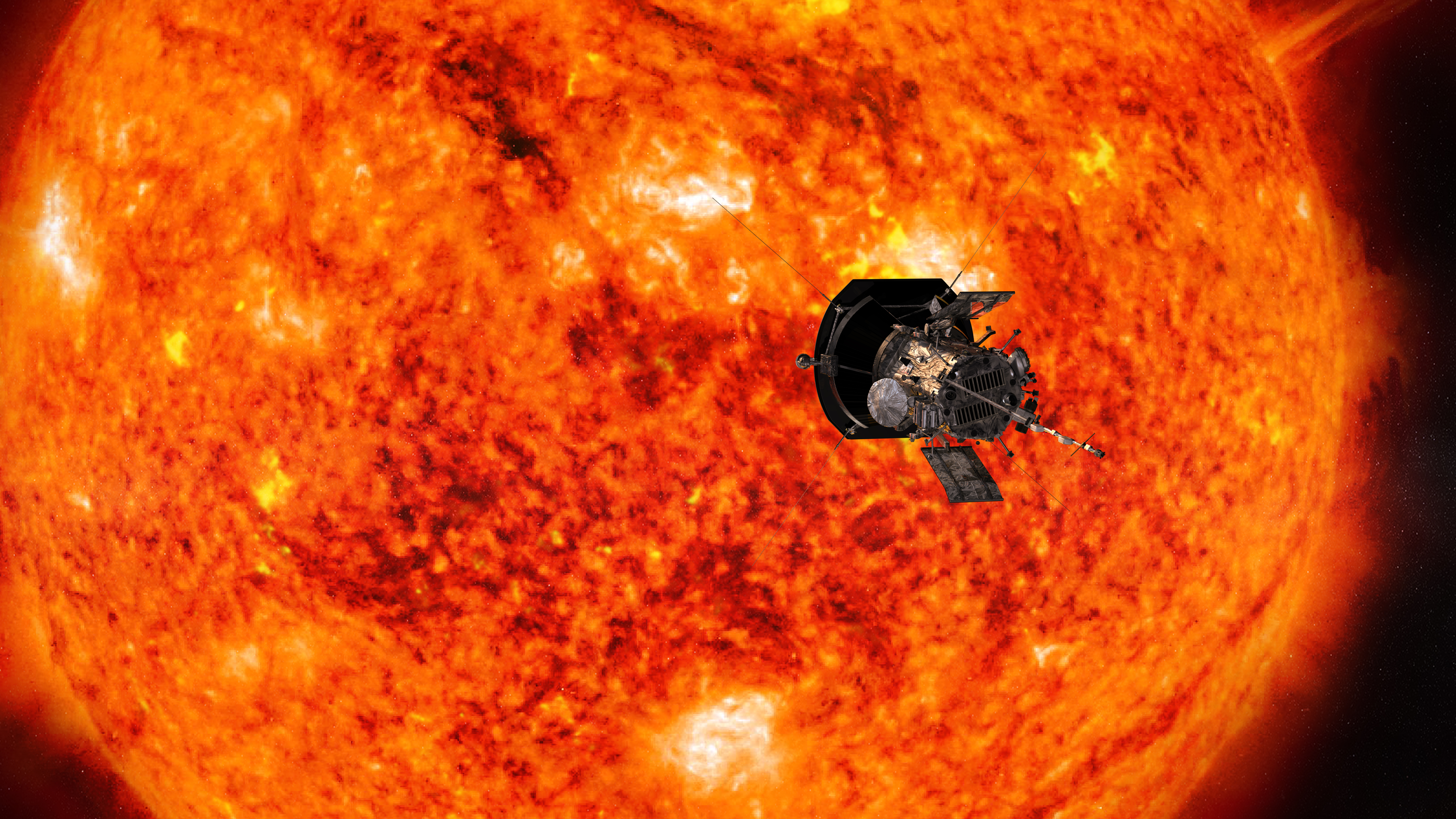
2020-04-15 11:03:21
Credit:
Download (Hi-Res)

2020-02-05 11:01:38
To date, Parker Solar Probe has observed switchbacks, which are traveling disturbances in the solar wind that caused the magnetic field to bend back on itself, an as-yet unexplained phenomenon that might help scientists uncover more information about how the solar wind is accelerated from the Sun.
Credit: NASA Goddard Space Flight Center/Conceptual Image Lab/Adriana Manrique Gutierrez
Download (Hi-Res)
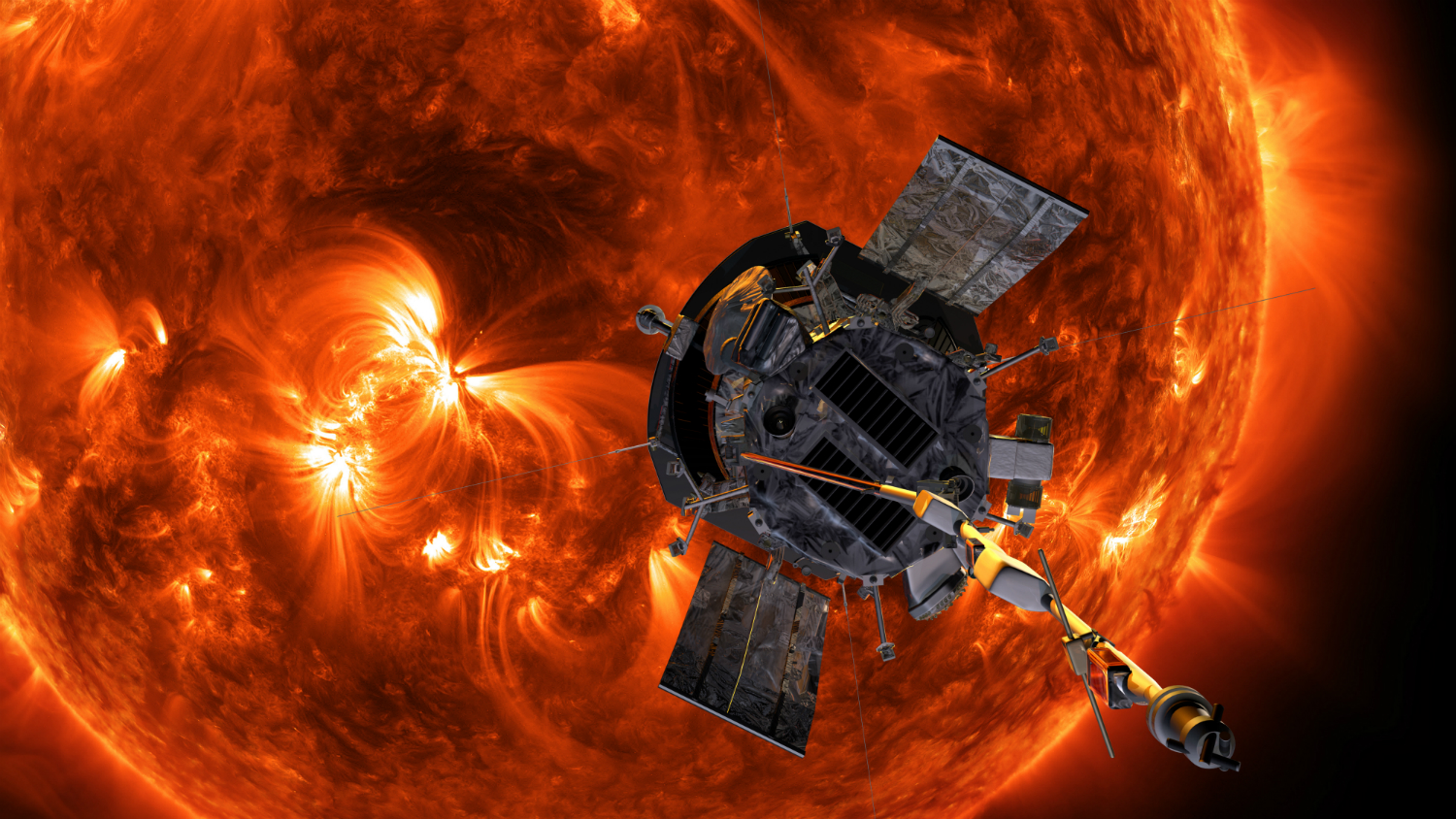
2020-02-01 08:15:00
Illustration of Parker Solar Probe approaching the Sun.
Credit: NASA/Johns Hopkins APL/Steve Gribben
Download (Hi-Res)

2020-01-30 11:18:55
Eugene Parker has been awarded the 2020 Crafoord Prize in Astronomy.
Credit: John Zich, Univ. of Chicago
Download (Hi-Res)
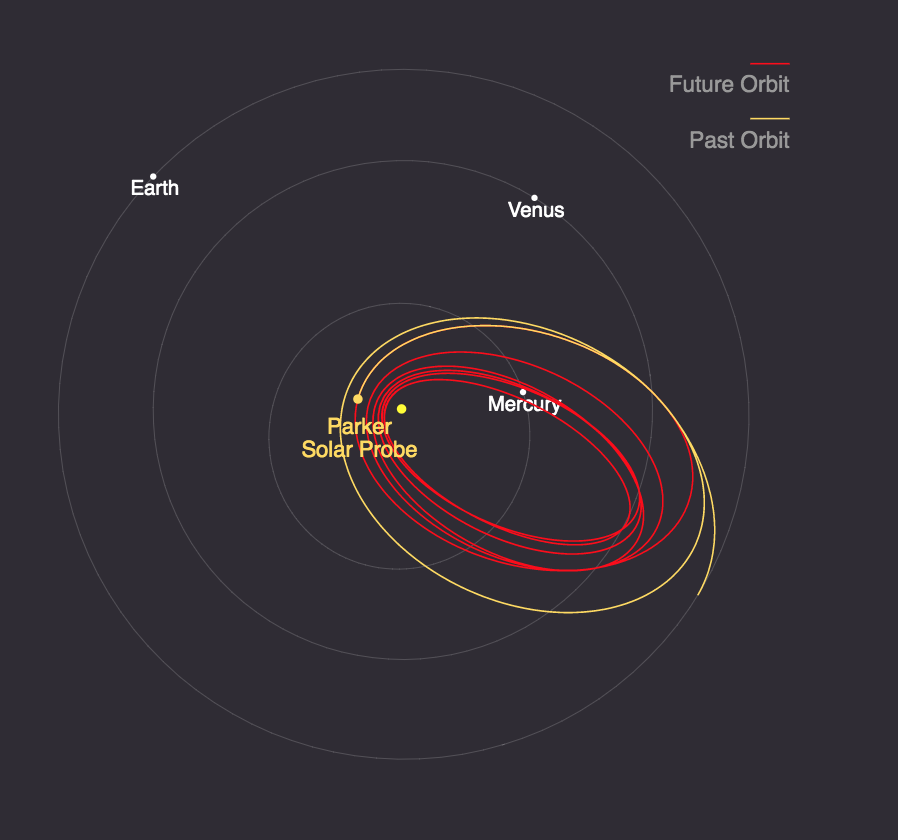
2020-01-29 10:47:20
On Jan. 29 at 4:37 a.m. EST, Parker Solar Probe traveled 11.6 million miles from the Sun’s surface at perihelion, reaching a speed of 244,225 miles per hour.
Credit: NASA/Johns Hopkins APL
Download (Hi-Res)
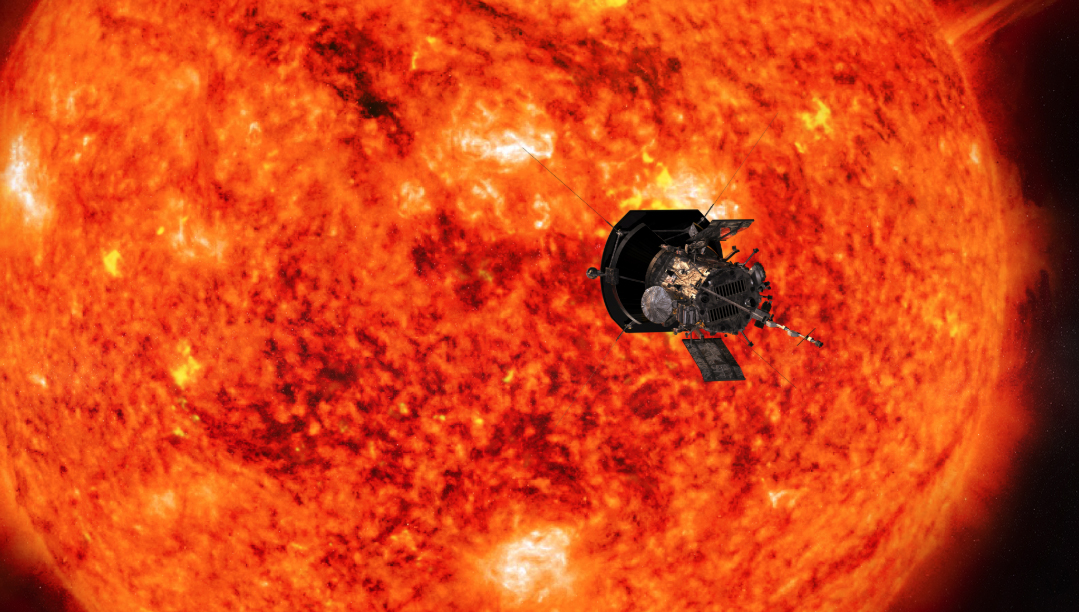
2020-01-23 11:00:40
Parker Solar Probe began its fourth solar encounter on Jan. 23 at 9:00 am EST. This orbit will bring it within 11.6 million miles of the Sun.
Credit: NASA/Johns Hopkins APL/Steve Gribben
Download (Hi-Res)
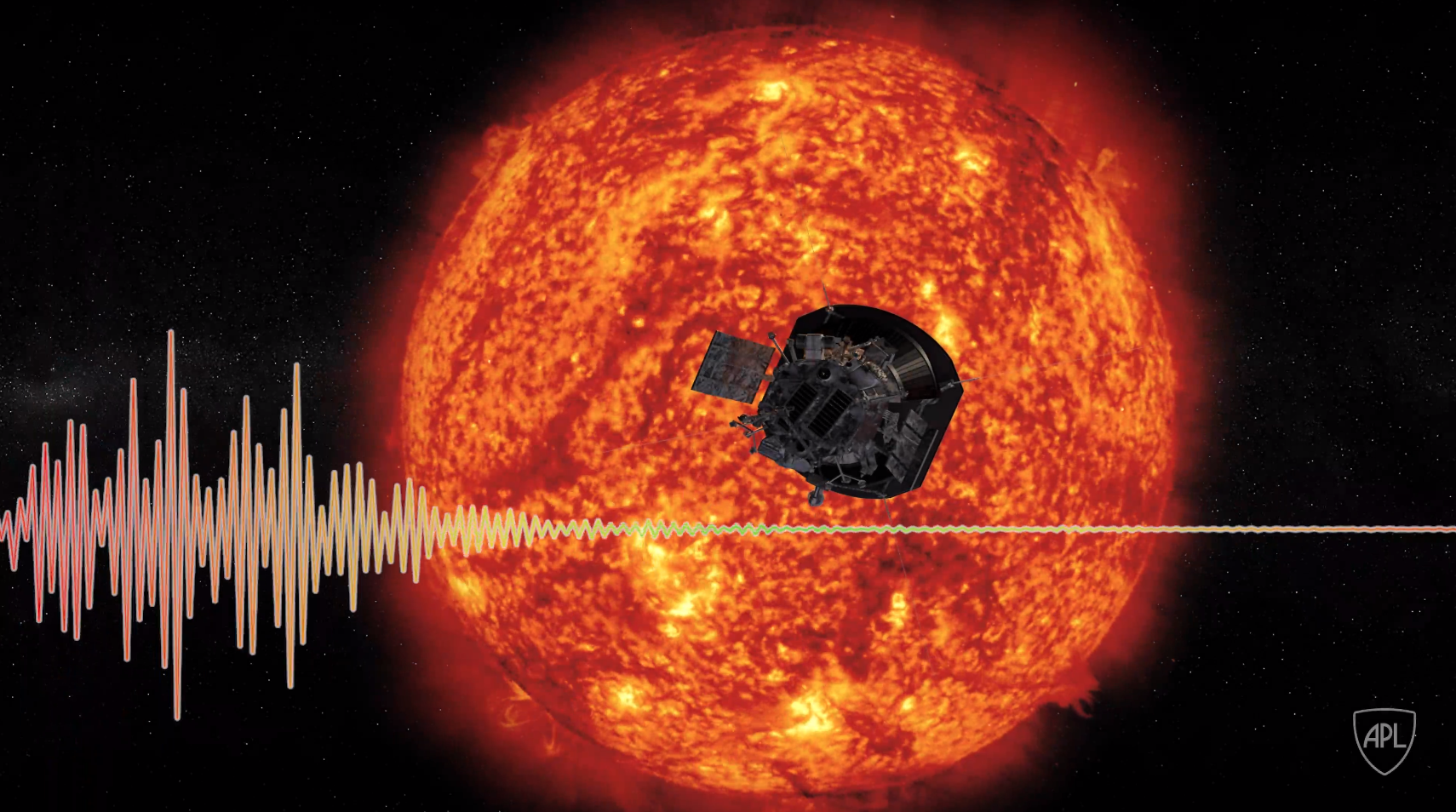
2020-01-14 10:28:38
Parker Solar Probe’s FIELDS instrument can eavesdrop on the electric and magnetic fluctuations caused by plasma waves, and it can “hear” when the waves and particles interact with one another, recording frequency and amplitude information about these plasma waves that scientists can transform into sound files.
Credit: NASA/Johns Hopkins APL
Download (Hi-Res)

2020-01-08 13:33:23
Parker Solar Probe Project Manager Helene Winters of the Johns Hopkins Applied Physics Laboratory.
Credit: Johns Hopkins APL
Download (Hi-Res)

2019-12-26 14:43:45
Credit:
Download (Hi-Res)
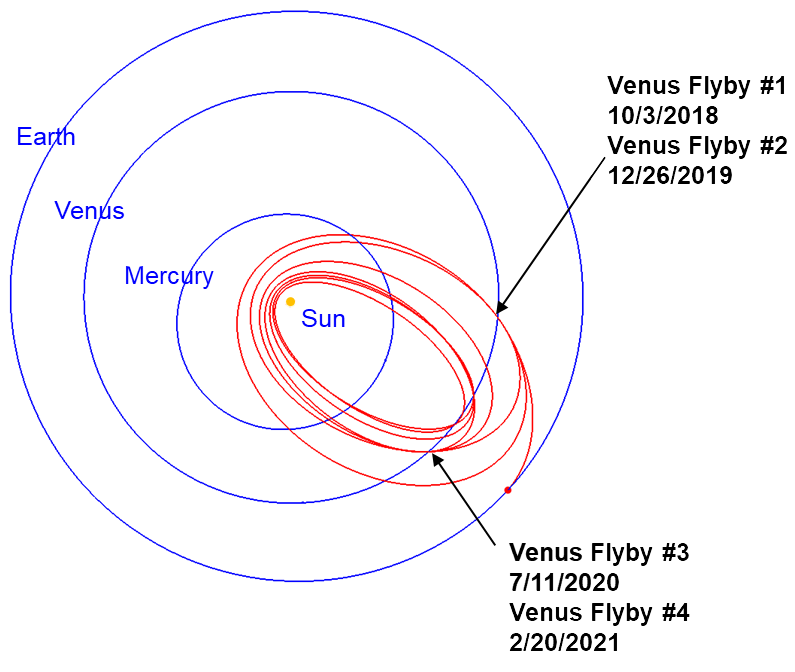
2019-12-23 14:25:49
Diagram of the locations and dates of Parker Solar Probe's first four Venus gravity assists. The upcoming Venus gravity assist on Dec. 26, 2019, will be the second such maneuver of the mission.
Credit:
Download (Hi-Res)
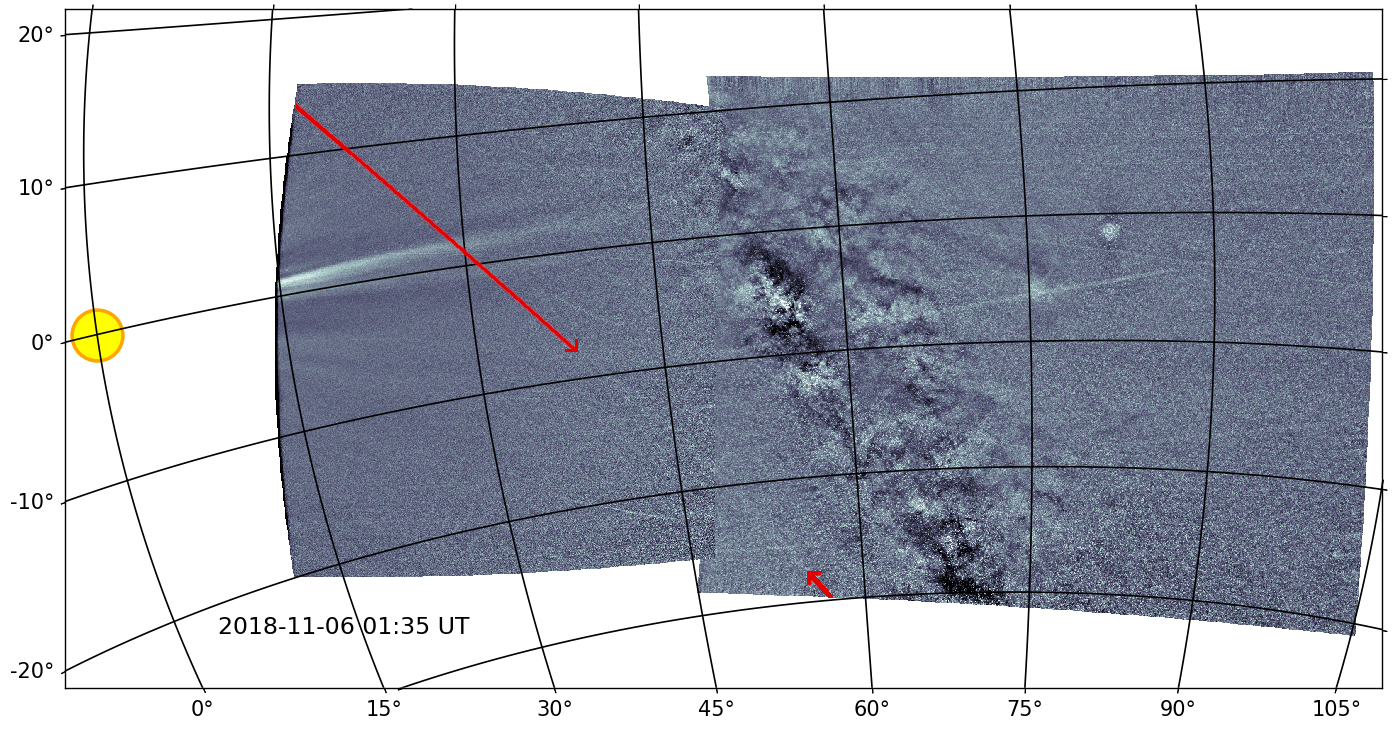
2019-12-11 13:01:48
Parker Solar Probe's WISPR instruments captured the first-ever view of a dust trail in the orbit of asteroid Phaethon. This dust trail creates the Geminids meteor shower, visible each December.
Credit: Brendan Gallagher/Karl Battams/NRL
Download (Hi-Res)

2019-12-04 12:00:00
To date, Parker Solar Probe has observed switchbacks, which are traveling disturbances in the solar wind that caused the magnetic field to bend back on itself, an as-yet unexplained phenomenon that might help scientists uncover more information about how the solar wind is accelerated from the Sun.
Credit: NASA Goddard Space Flight Center/Conceptual Image Lab/Adriana Manrique Gutierrez
Download (Hi-Res)
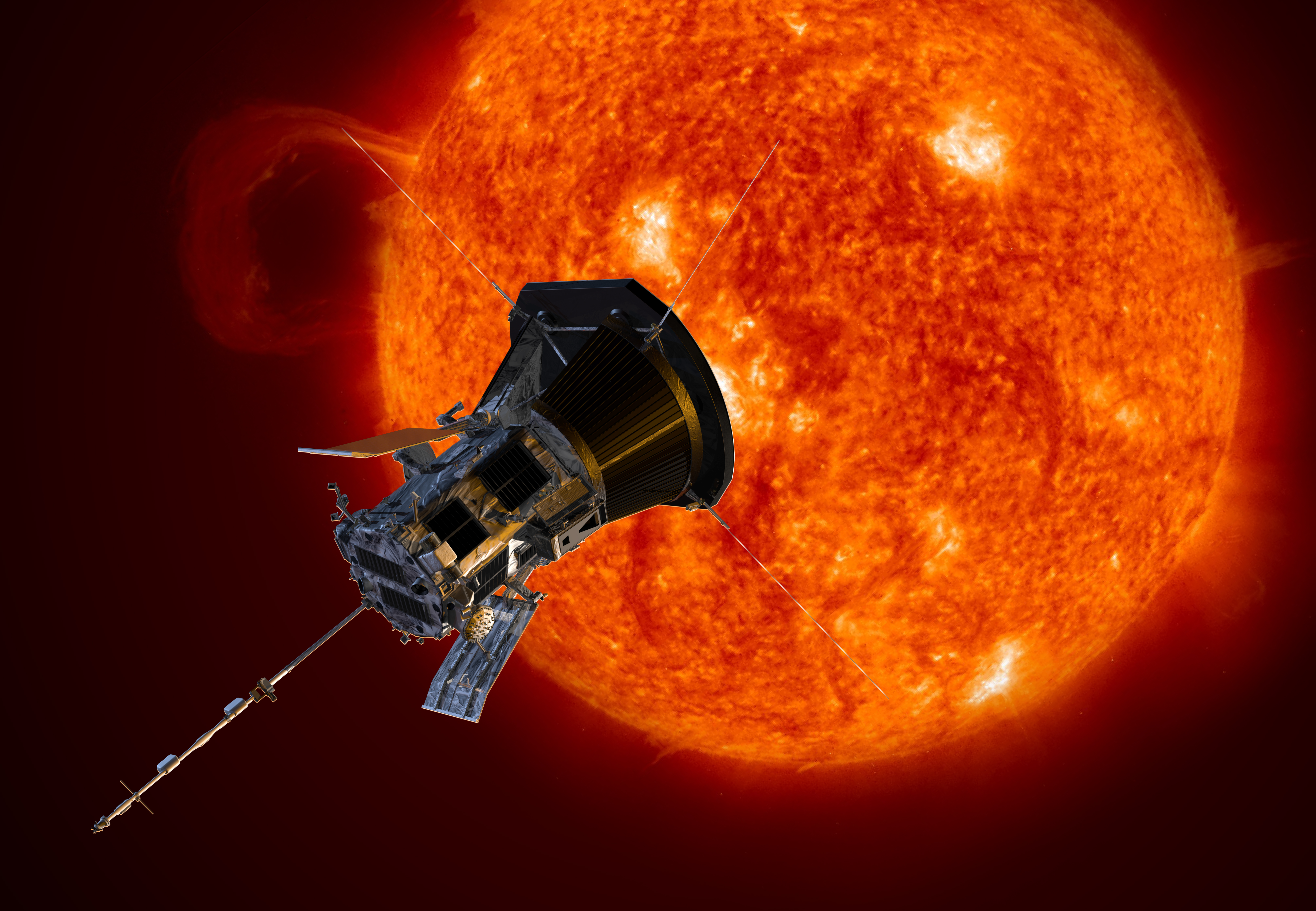
2019-12-02 16:37:31
Parker Solar Probe
Credit: NASA/Johns Hopkins APL/Steve Gribben
Download (Hi-Res)
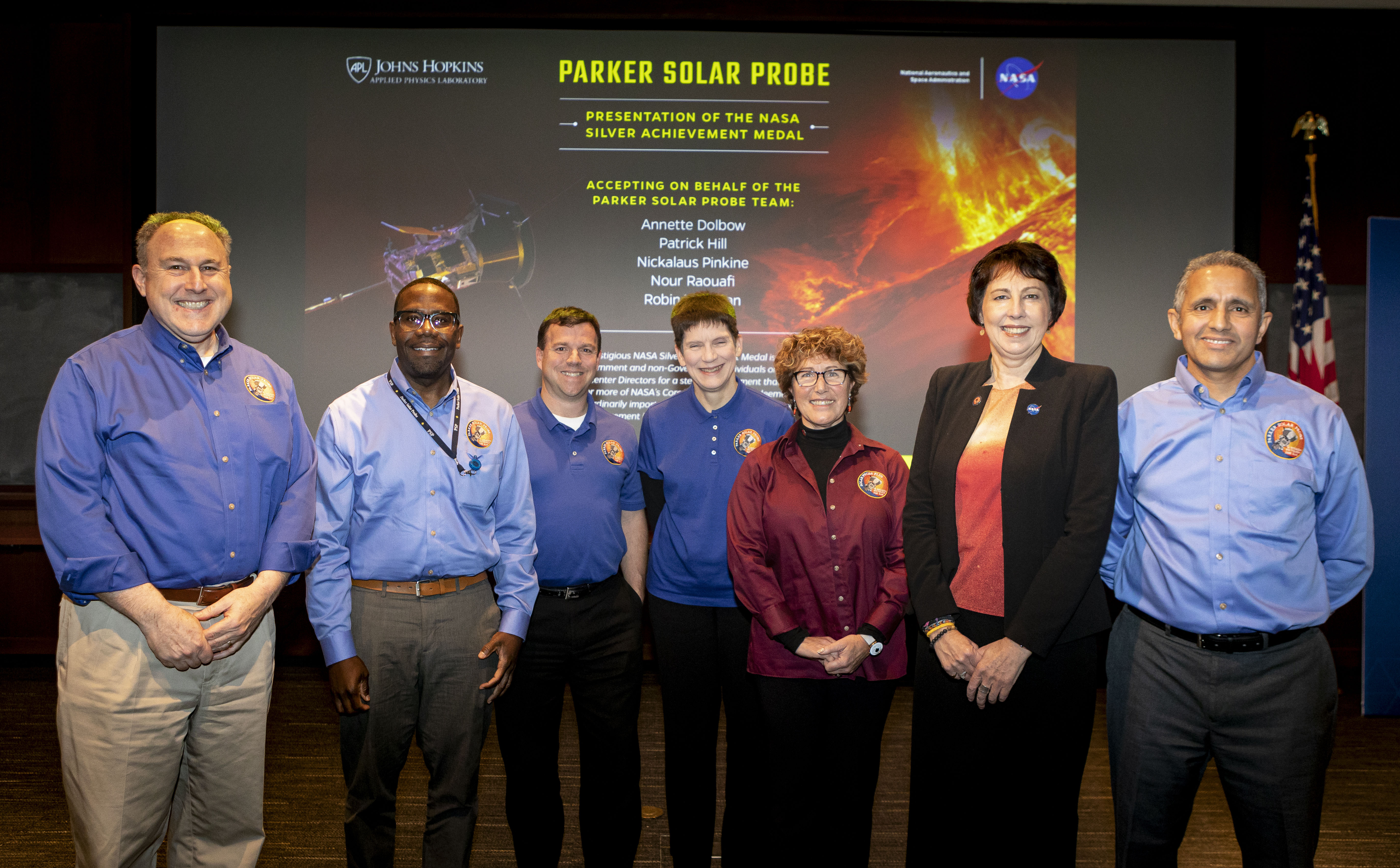
2019-11-13 14:58:56
The Parker Solar Probe mission team at the Johns Hopkins Applied Physics Laboratory was awarded the NASA Silver Achievement Medal on Nov. 12 for “stellar achievement in the successful development, launch, and commissioning of the Parker Solar Probe, NASA’s coolest, hottest mission.” Pictured left to right: Andy Driesman, APL, previous project manager; Patrick Hill, APL, current project manager; Nickalaus Pinkine, APL, mission operations manager; Robin Vaughn, APL, spacecraft system engineer; Annette Dolbow, APL, integration and testing lead engineer; Nicky Fox, NASA Heliophysics Division director; and Nour Raouafi, APL, project scientist.
Credit: NASA/Johns Hopkins APL/Ed Whitman
Download (Hi-Res)
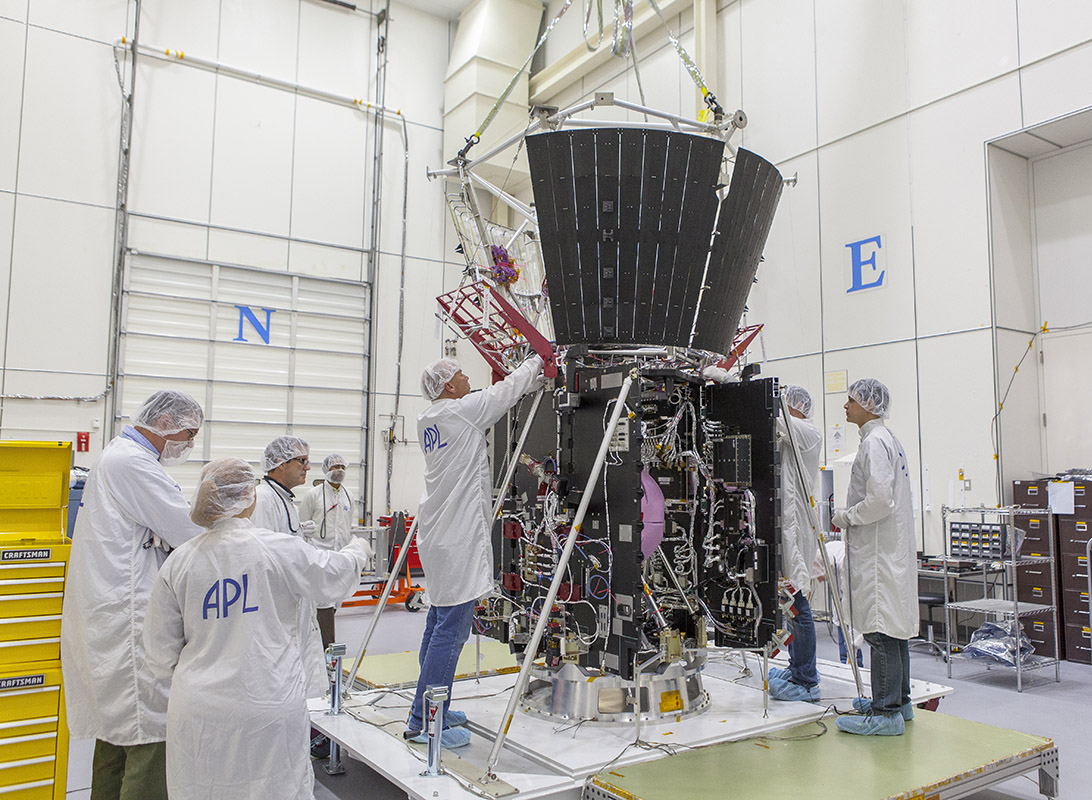
2019-11-13 14:58:56
Parker Solar Prob mission integration and test team members secure the deck holding the structure assembly and several other critical thermal-protection components atop NASA’s Solar Probe Plus spacecraft body on April 5, 2017, in the cleanroom at the Johns Hopkins Applied Physics Laboratory in Laurel, Maryland.
Credit: NASA/Johns Hopkins APL/Ed Whitman
Download (Hi-Res)
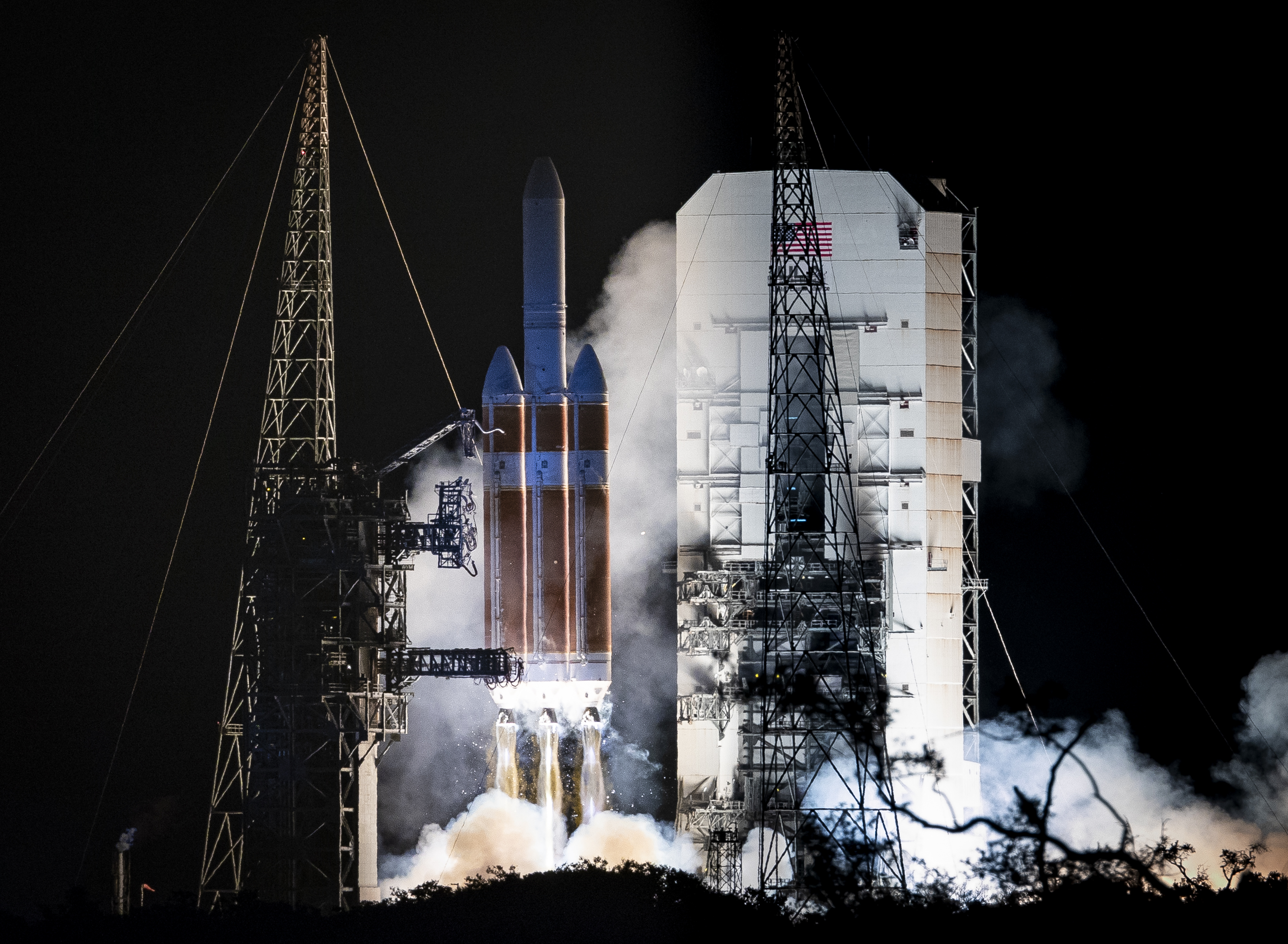
2019-11-13 14:58:56
Parker Solar Probe began its mission to unlock the mysteries of our star on Sunday, Aug. 12, 2018 with a ride atop a Delta IV Heavy rocket at Launch Complex 37 at Cape Canaveral Air Force Station, Florida.
Credit: NASA/Johns Hopkins APL/Ed Whitman
Download (Hi-Res)
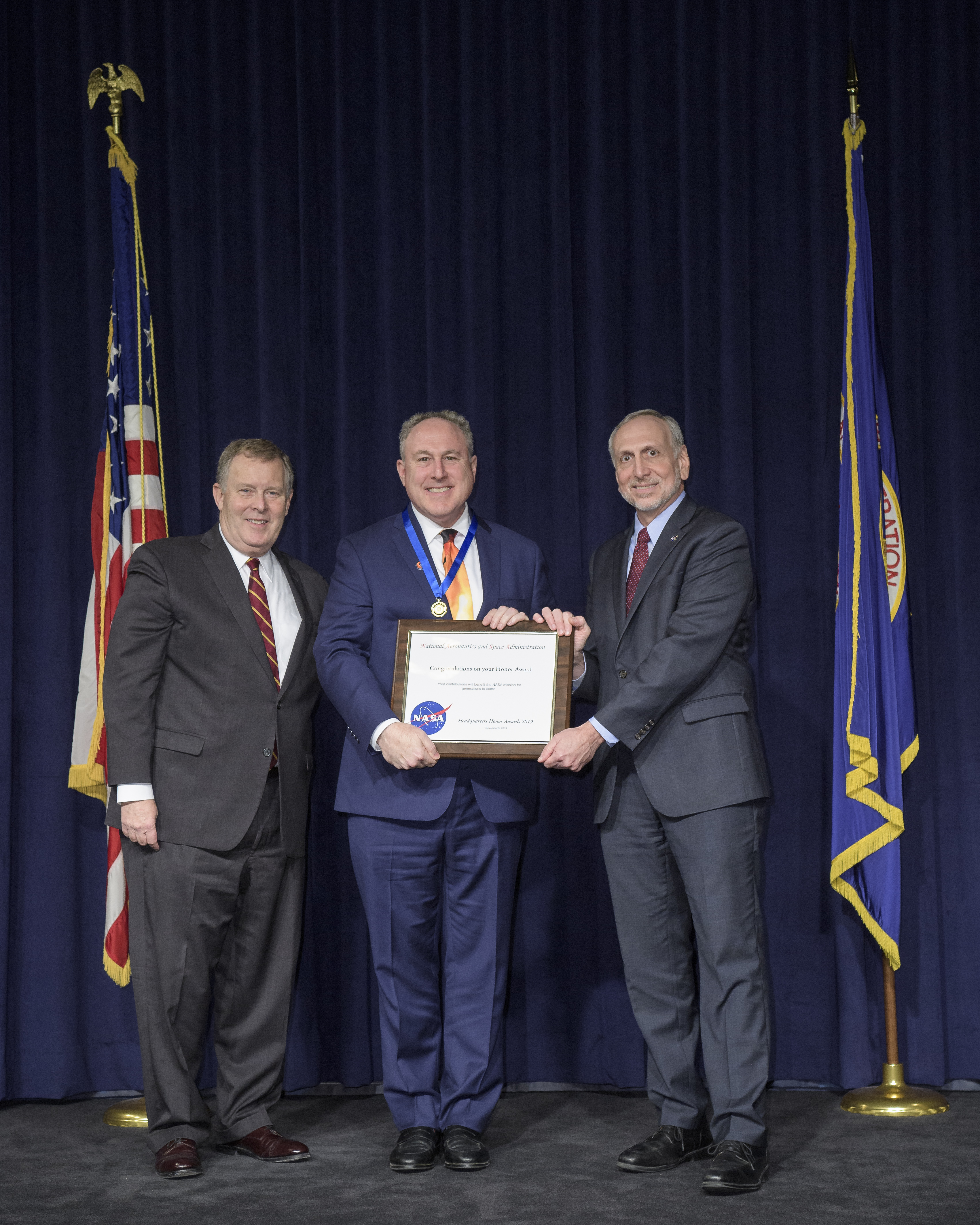
2019-11-13 13:43:43
Andy Driesman of the Johns Hopkins Applied Physics Laboratory (center) receives the NASA Outstanding Public Leadership Medal for his role as project manager of Parker Solar Probe at a Nov. 5 ceremony at NASA Headquarters in Washington, D.C. At left is NASA Deputy Administrator Jim Morhard, with NASA Associate Administrator Steve Jurczyk at right.
Credit: NASA
Download (Hi-Res)
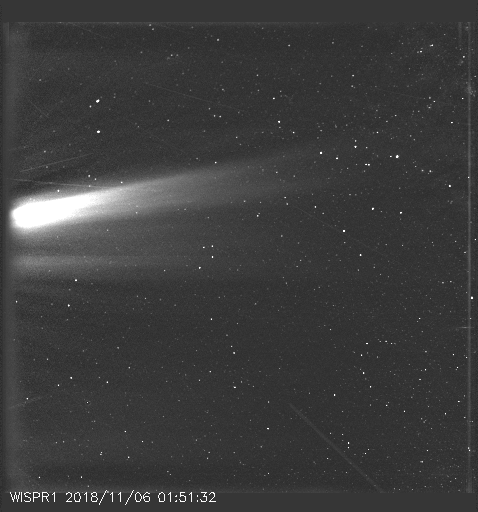
2019-11-12 12:08:05
Data from the Wide-field Imager for Solar Probe (WISPR) instrument on board Parker Solar Probe captured during the spacecraft’s first solar encounter in November 2018.
Credit: NASA/Naval Research Laboratory/Parker Solar Probe
Download (Hi-Res)
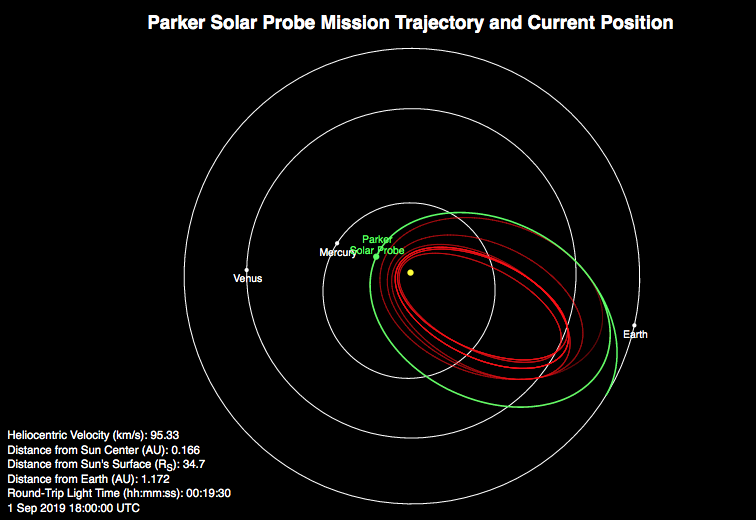
2019-09-03 10:32:43
This orbit plot shows Parker Solar Probe's location at 2 pm EDT on Sept. 1, 2019, as the spacecraft was at its third closest approach, or perihelion, to the Sun.
Credit: NASA/Johns Hopkins APL
Download (Hi-Res)
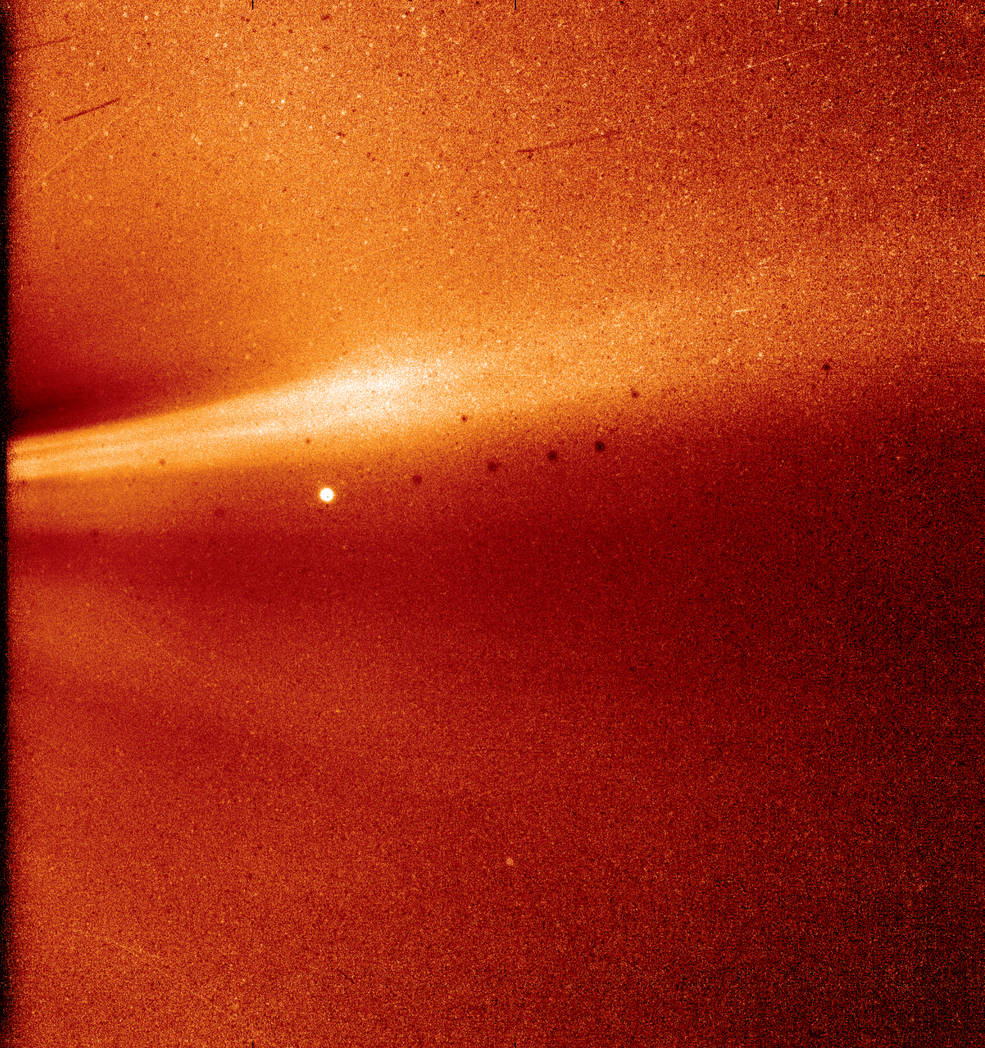
2019-08-16 15:38:25
This image from Parker Solar Probe’s WISPR (Wide-field Imager for Solar Probe) instrument shows a coronal streamer, seen over the east limb of the Sun on Nov. 8, 2018, at 1:12 a.m. EST. Parker Solar Probe was about 16.9 million miles from the Sun’s surface when this image was taken. The bright object near the center of the image is Mercury, and the dark spots are a result of background correction.
Credit: NASA/Naval Research Laboratory/Parker Solar Probe
Download (Hi-Res)

2019-08-12 10:35:36
Parker Solar Probe
Credit: NASA/Johns Hopkins APL/Steve Gribben
Download (Hi-Res)
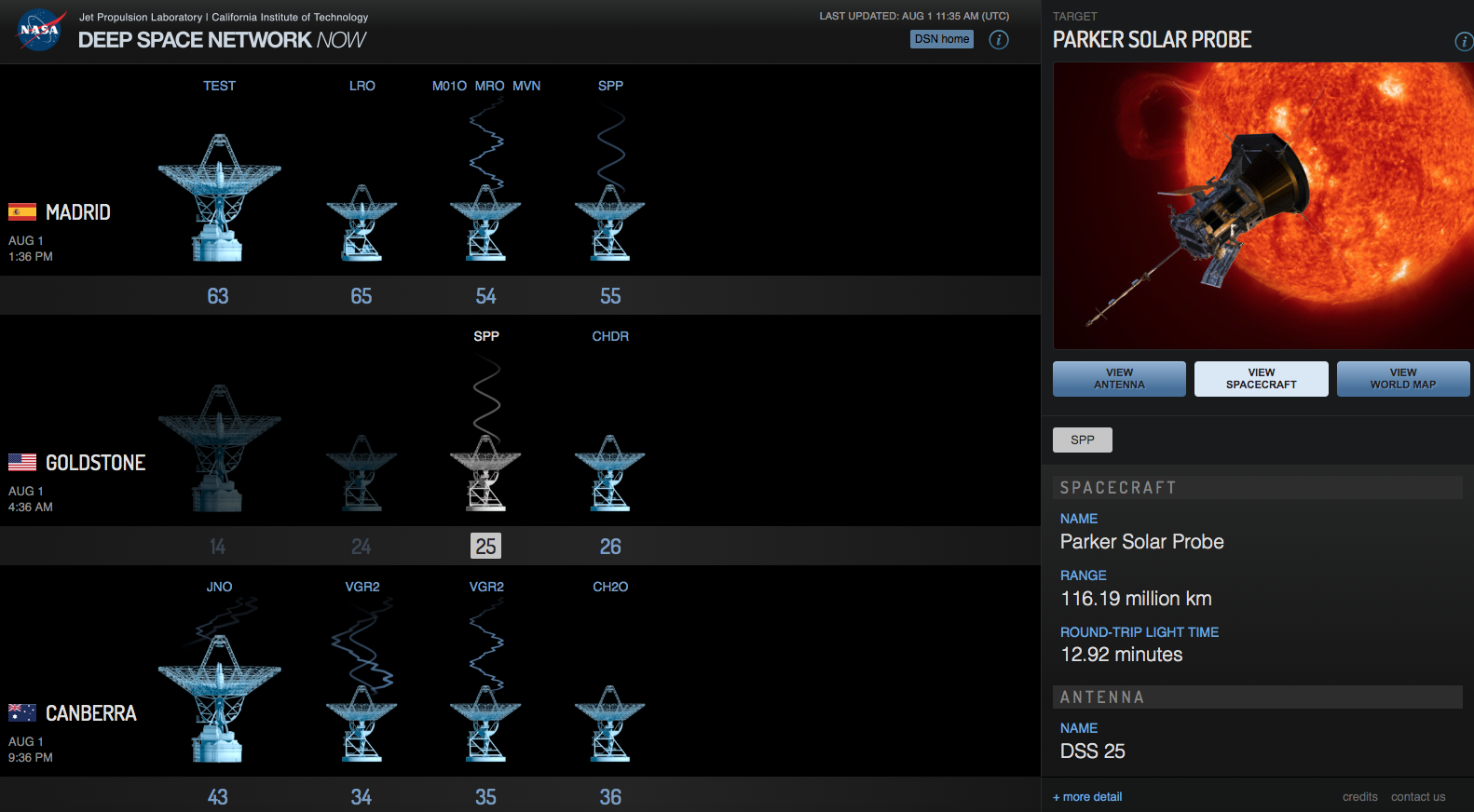
2019-08-01 11:32:38
In this image from the Deep Space Network Now site, Parker Solar Probe is shown connecting with a carrier wave to antennas 25 and 55 on Aug. 1, 2019. Parker Solar Probe is identified as SPP by DSN; the mission, formerly Solar Probe Plus, was renamed for solar scientist Eugene Parker in 2017.
Credit: NASA
Download (Hi-Res)
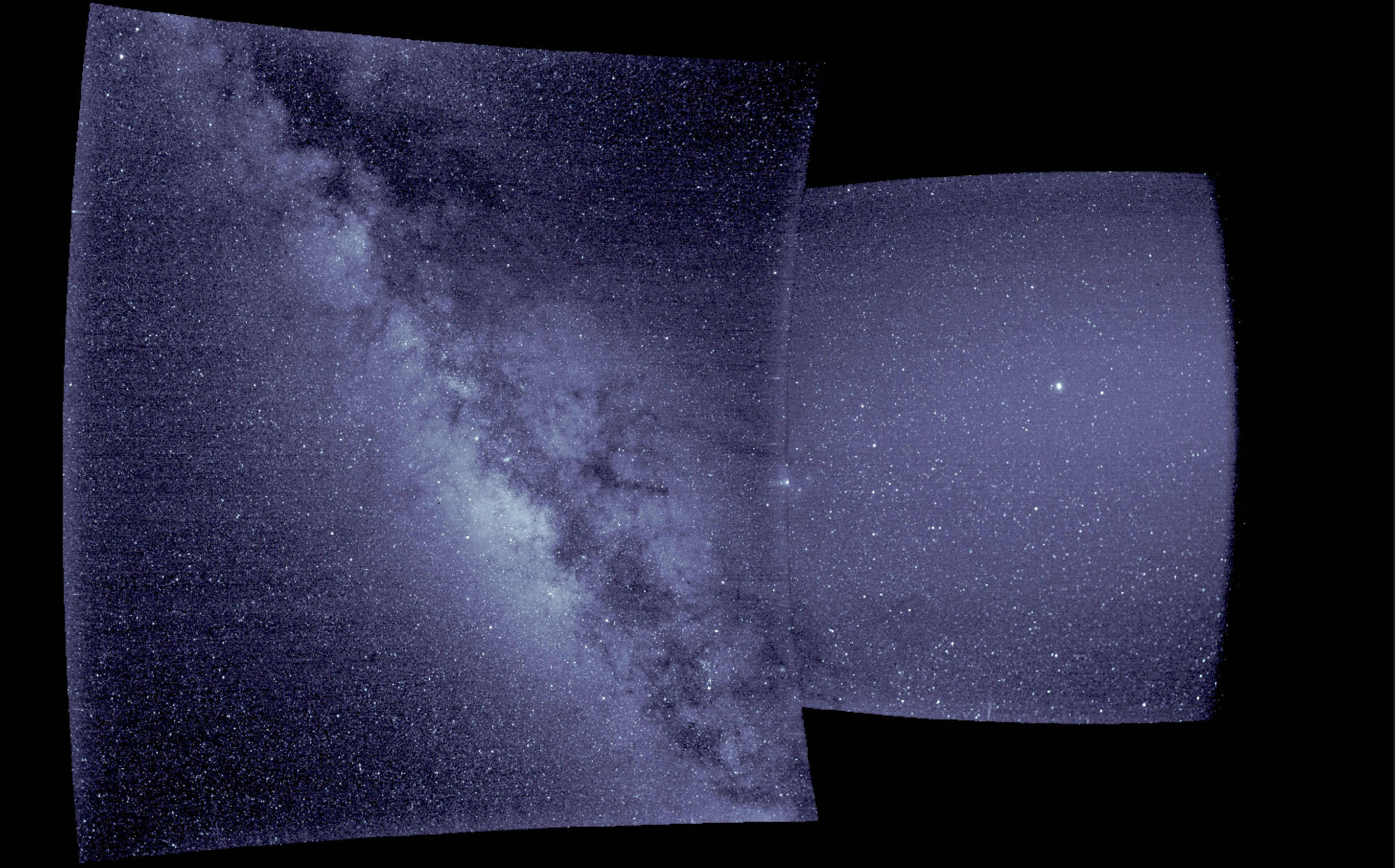
2019-06-06 12:11:31
First light data from Parker Solar Probe's WISPR (Wide-field Imager for Solar Probe) instrument suite. The right side of this image — from WISPR's inner telescope — has a 40-degree field of view, with its right edge 58.5 degrees from the Sun's center. The bright object slightly to the right of the image's center is Jupiter. The left side of the image is from WISPR's outer telescope, which has a 58-degree field of view and extends to about 160 degrees from the Sun. There is a parallax of about 13 degrees in the apparent position of the Sun as viewed from Earth and from Parker Solar Probe.
Credit: NASA/Naval Research Laboratory/Parker Solar Probe
Download (Hi-Res)
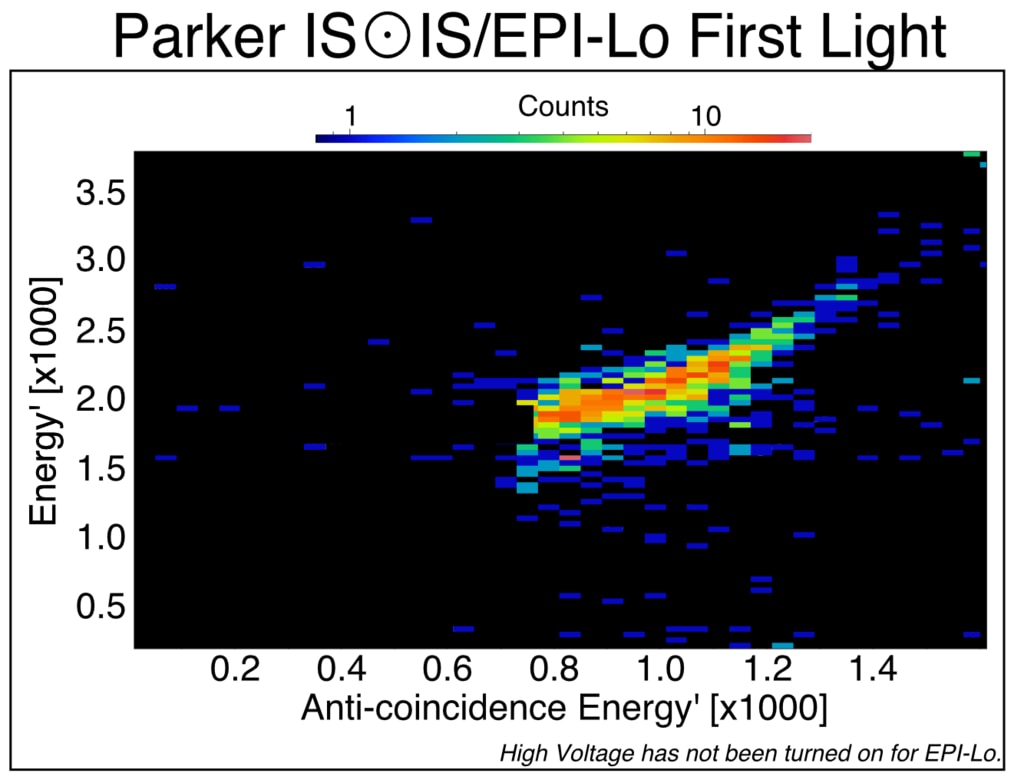
2019-06-06 12:11:31
First light data from EPI-Lo (the lower-energy Energetic Particle Instrument), part of the ISʘIS (Integrated Science Investigation of the Sun) suite aboard Parker Solar Probe.
Credit: NASA/Princeton University/Parker Solar Probe
Download (Hi-Res)
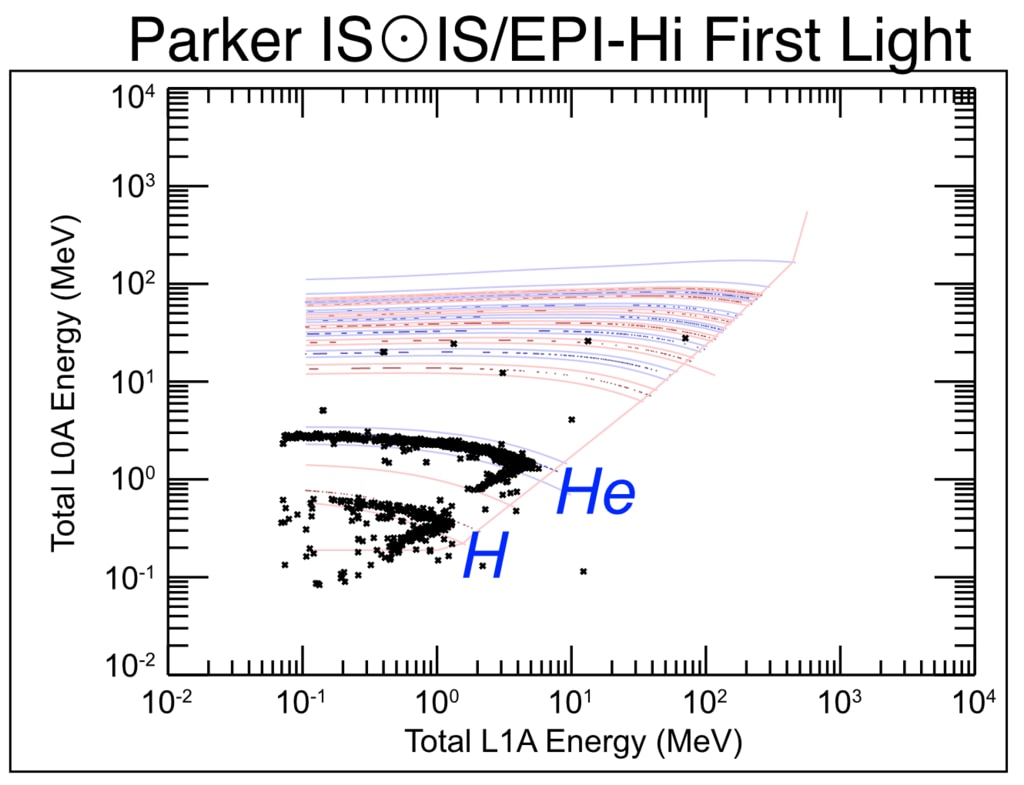
2019-06-06 12:11:31
First light data from EPI-Hi (the higher-energy Energetic Particle Instrument), part of the ISʘIS (Integrated Science Investigation of the Sun) suite aboard Parker Solar Probe.
Credit: NASA/Princeton University/Parker Solar Probe
Download (Hi-Res)
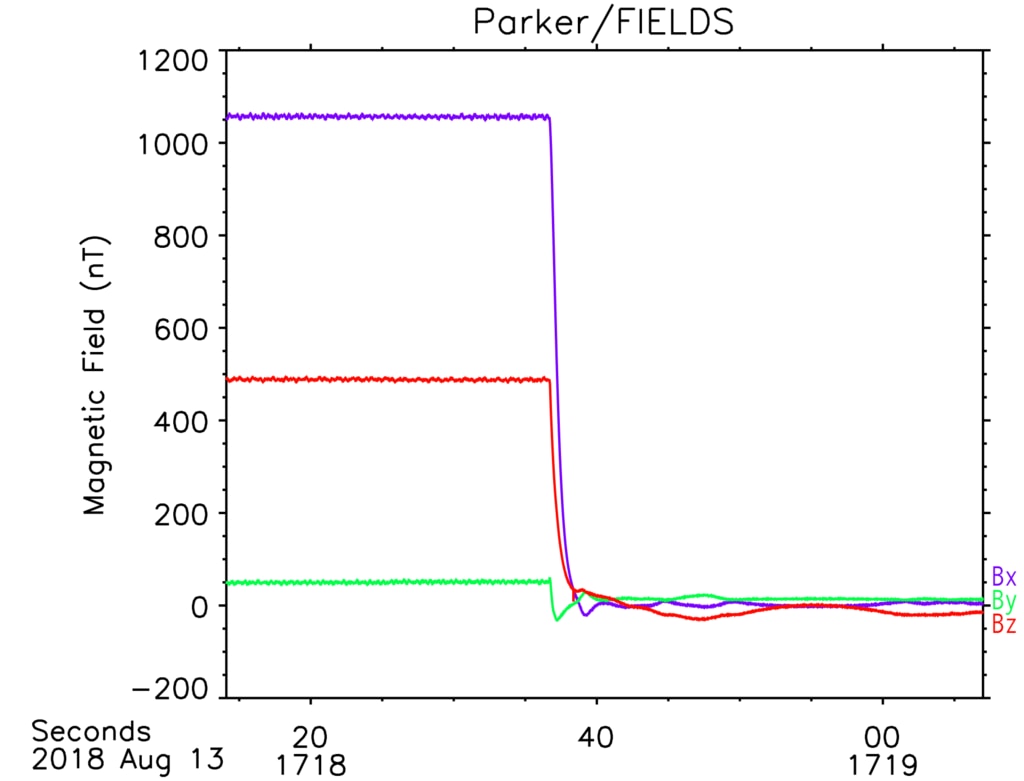
2019-06-06 12:11:31
Data gathered during the FIELDS suite's boom deployment, measuring the magnetic field as the boom swung away from Parker Solar Probe. The early data is the magnetic field of the spacecraft itself, and the instruments measured a sharp drop in the magnetic field as the boom extended away from the spacecraft. Post-deployment, the instruments are measuring the magnetic field in the solar wind.
Credit: NASA/UC Berkeley/Parker Solar Probe
Download (Hi-Res)
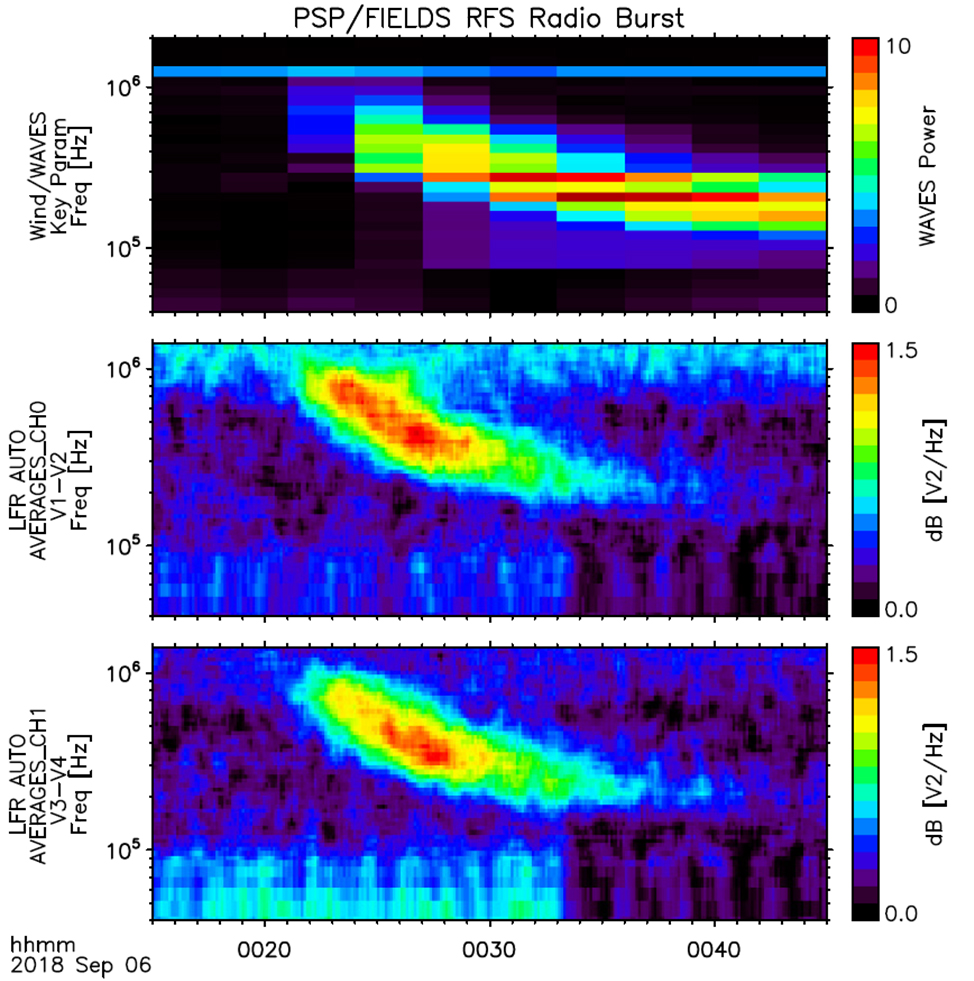
2019-06-06 12:11:31
This plot was updated on Sept. 21, 2018, to better illustrate the comparison between Parker Solar Probe’s data (center and bottom) and the data from the Wind mission (top).
Credit: NASA/UC Berkeley/Parker Solar Probe
Download (Hi-Res)
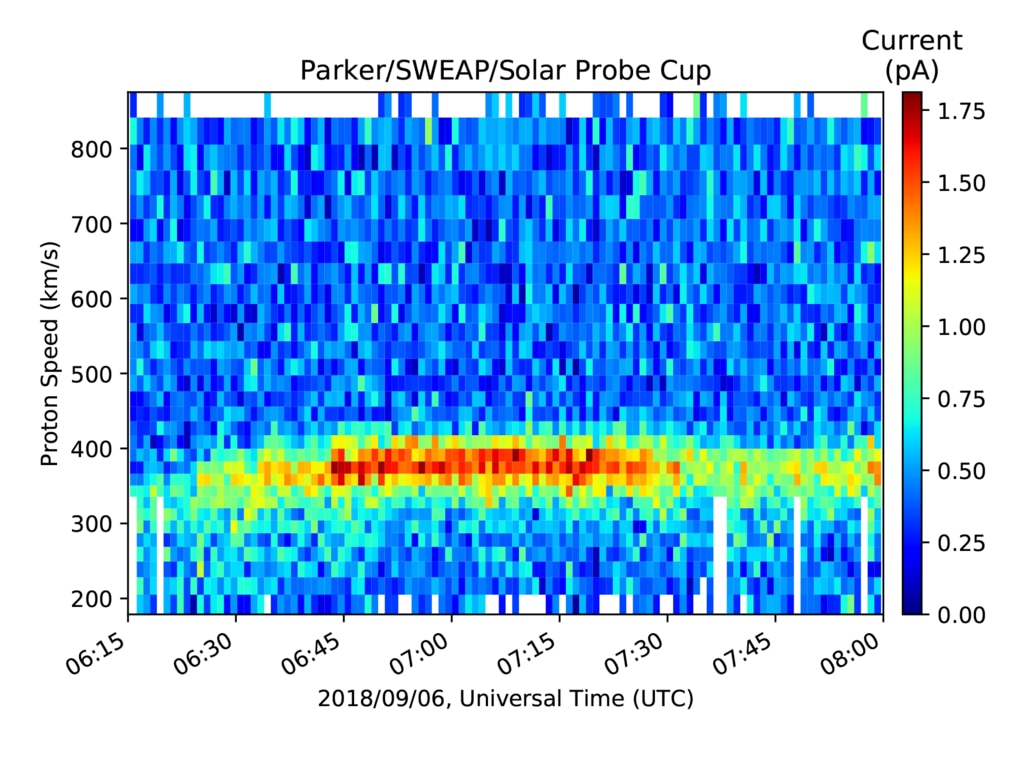
2019-06-06 12:11:31
Early data from the Solar Probe Cup, part of the SWEAP (Solar Wind Electrons Alphas and Protons) instrument suite aboard Parker Solar Probe, showing a gust of solar wind (the red streak).
Credit: NASA/University of Michigan/Parker Solar Probe
Download (Hi-Res)
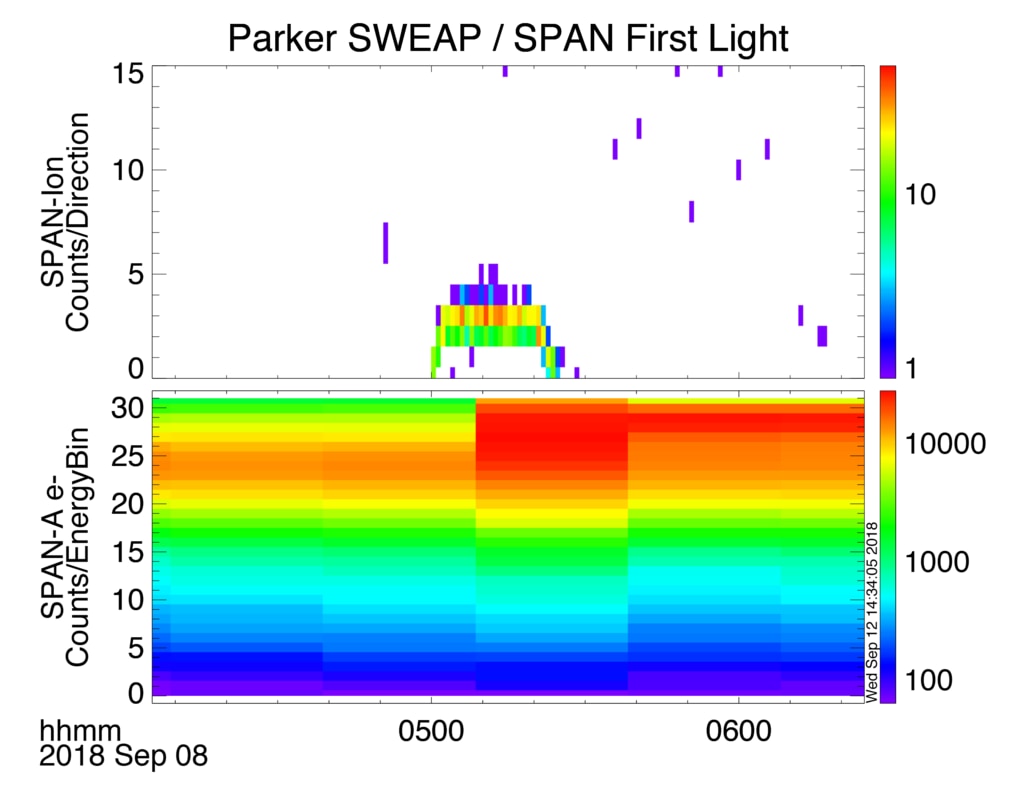
2019-06-06 12:11:31
First light data from the SPAN-A (Solar Probe Analyzer Ahead) instrument aboard Parker Solar Probe, which is part of the SWEAP (Solar Wind Electrons Alphas and Protons) instrument suite. This data shows measurements of solar wind ions (top) and solar wind electrons (bottom).
Credit: NASA/University of Michigan/Parker Solar Probe
Download (Hi-Res)

2019-04-05 10:31:36
Parker Solar Probe
Credit: NASA/Johns Hopkins APL/Steve Gribben
Download (Hi-Res)

2019-04-01 16:22:13
Parker Solar Probe Project Manager Patrick Hill of the Johns Hopkins Applied Physics Laboratory
Credit: Johns Hopkins APL/Ed Whitman
Download (Hi-Res)
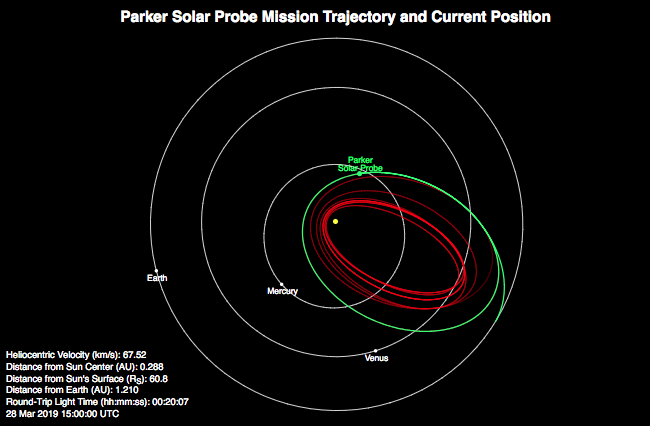
2019-03-28 13:19:31
The plot above shows Parker Solar Probe's location and speed (relative to the Sun) at 11 a.m. Eastern Time on March 28, two days before the beginning of its second solar encounter. Parker Solar Probe will achieve its second perihelion of the Sun on April 4.
Credit: NASA/Johns Hopkins APL
Download (Hi-Res)
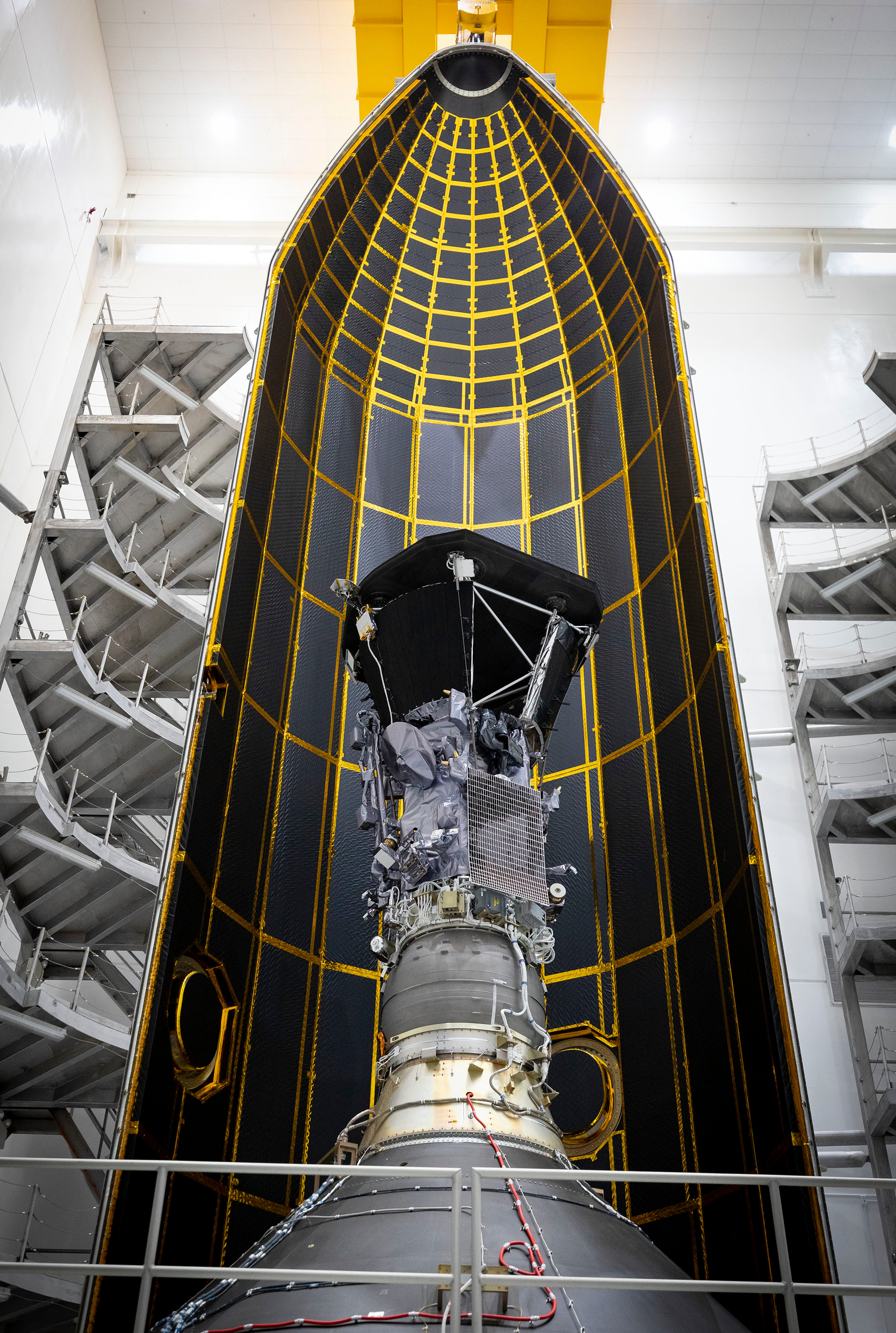
2019-03-21 14:05:38
Parker Solar Probe awaits closure of its fairing and eventual transport to the launch pad in 2018.
Credit: NASA/Johns Hopkins APL/Ed Whitman
Download (Hi-Res)

2019-01-22 09:15:00
Illustration of Parker Solar Probe approaching the Sun.
Credit: NASA/Johns Hopkins APL/Steve Gribben
Download (Hi-Res)
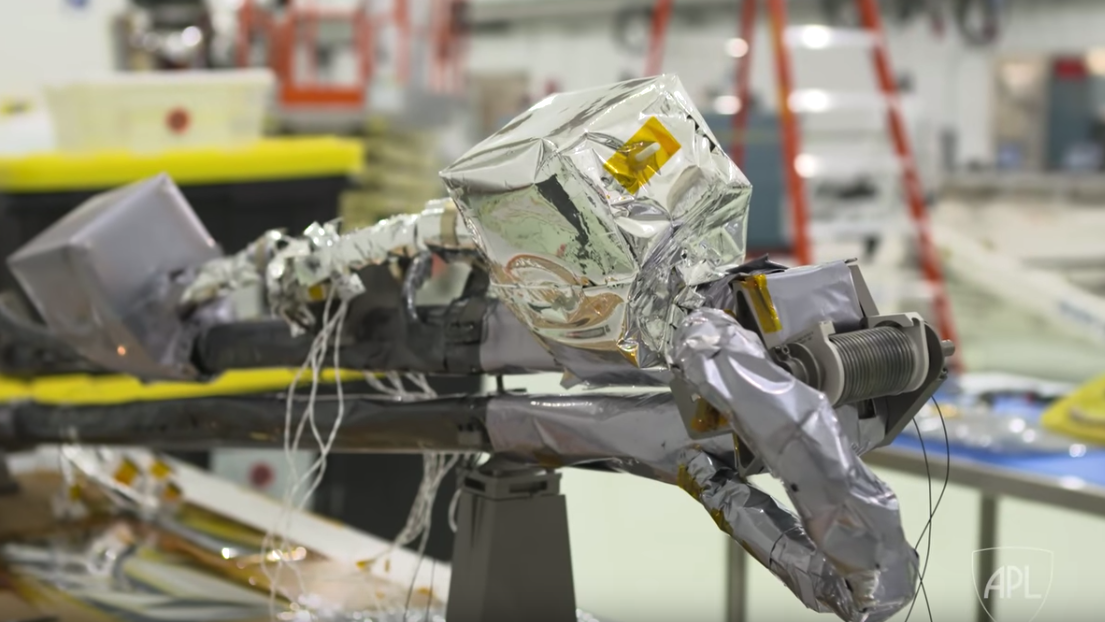
2019-01-22 09:04:10
Parker Solar Probe's magnetometer boom hinge.
Credit: NASA/Johns Hopkins APL/Lee Hobson
Download (Hi-Res)
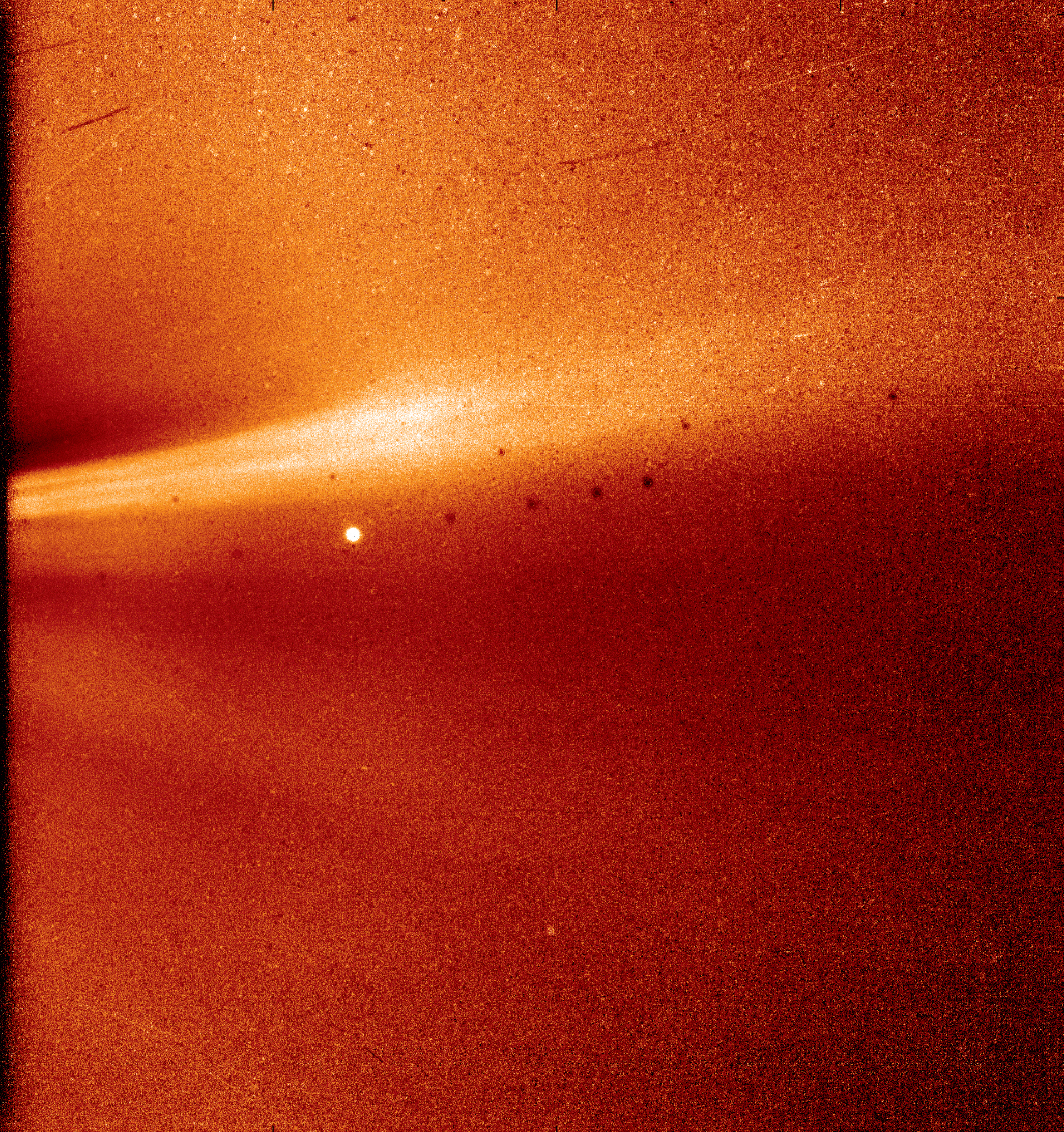
2018-12-13 09:09:26
This image from Parker Solar Probe's WISPR (Wide-field Imager for Solar Probe) instrument shows a coronal streamer, seen over the east limb of the Sun on Nov. 8, 2018, at 1:12 a.m. EST. Coronal streamers are structures of solar material within the Sun's atmosphere, the corona, that usually overlie regions of increased solar activity. The fine structure of the streamer is very clear, with at least two rays visible. Parker Solar Probe was about 16.9 million miles from the Sun's surface when this image was taken. The bright object near the center of the image is Mercury (Ed Note: corrected on Dec 13), and the dark spots are a result of background correction.
Credit: NASA/NRL/Parker Solar Probe
Download (Hi-Res)
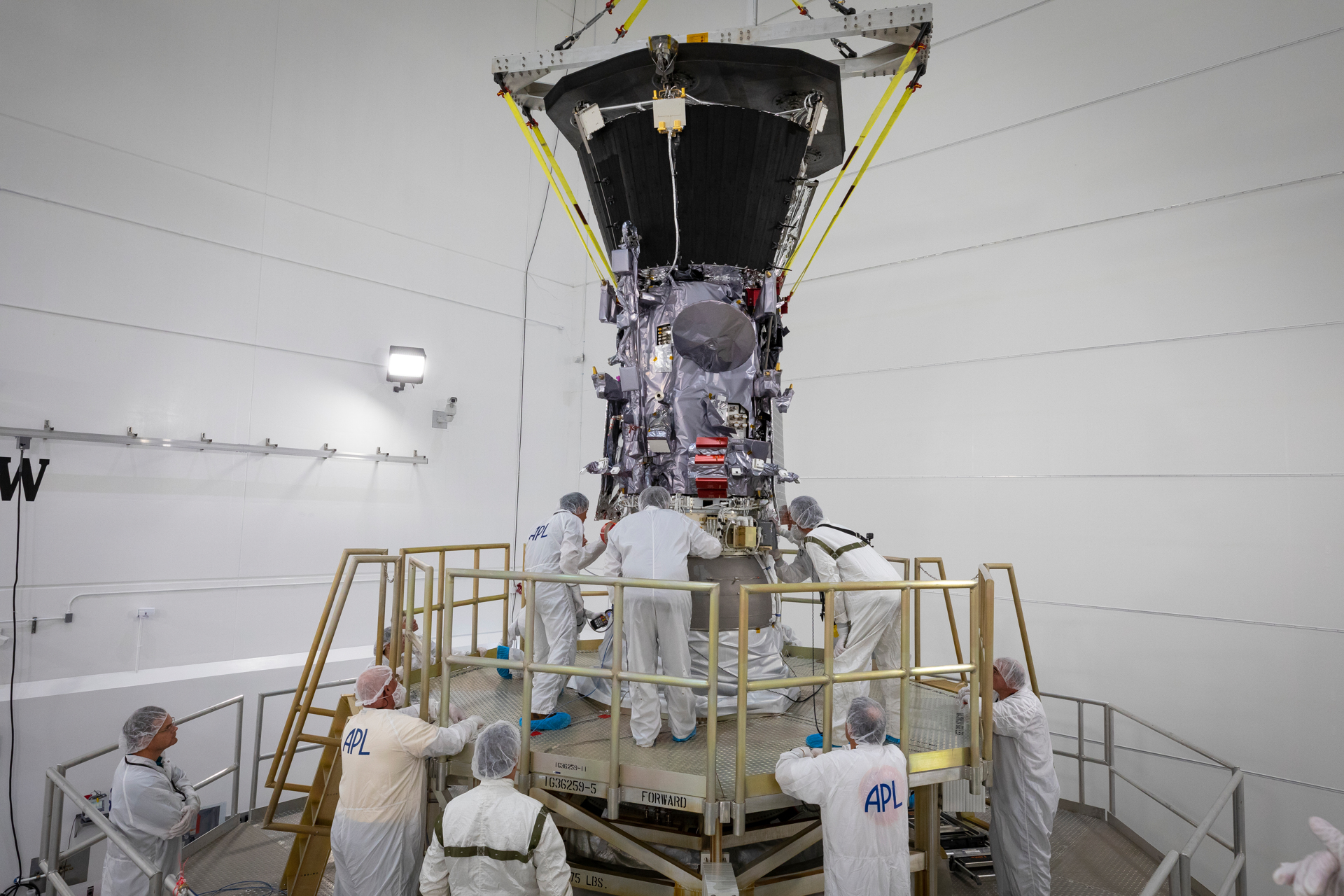
2018-11-28 15:00:58
Parker Solar Probe is shown as it was mated to the third stage rocket motor on July 11, 2018, at Astrotech Space Operations in Titusville, Florida.
Credit: NASA/Johns Hopkins APL/Ed Whitman
Download (Hi-Res)

2018-11-20 11:00:31
Illustration of Parker Solar Probe approaching the Sun.
Credit: NASA/Johns Hopkins APL/Steve Gribben
Download (Hi-Res)
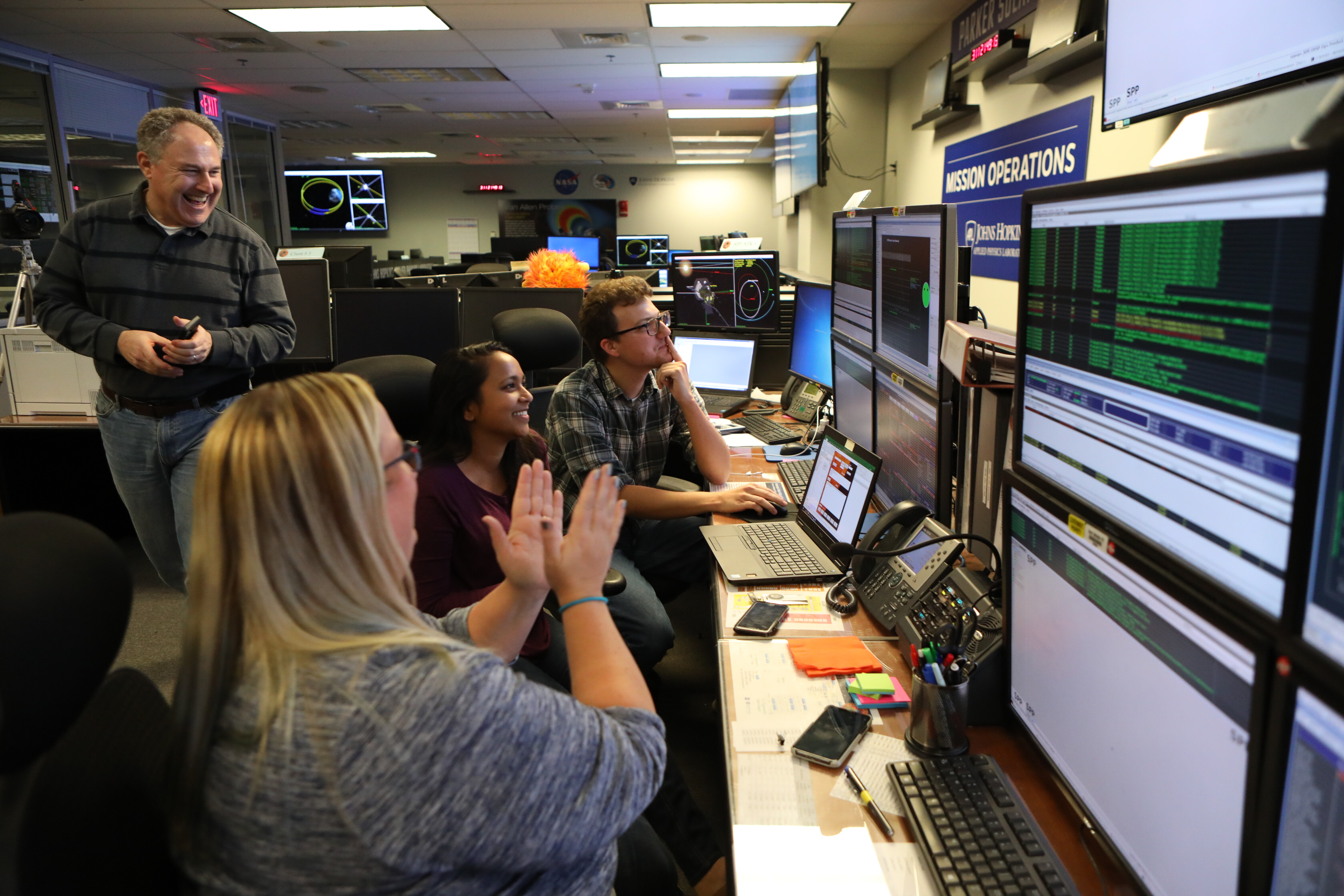
2018-11-07 17:13:45
Members of the Parker Solar Probe mission team at the Johns Hopkins Applied Physics Lab in Laurel, Maryland celebrate on Nov. 7, 2018, after receiving a beacon indicating the spacecraft is in good health following its first perihelion.
Credit: NASA/Johns Hopkins APL/Ed Whitman
Download (Hi-Res)
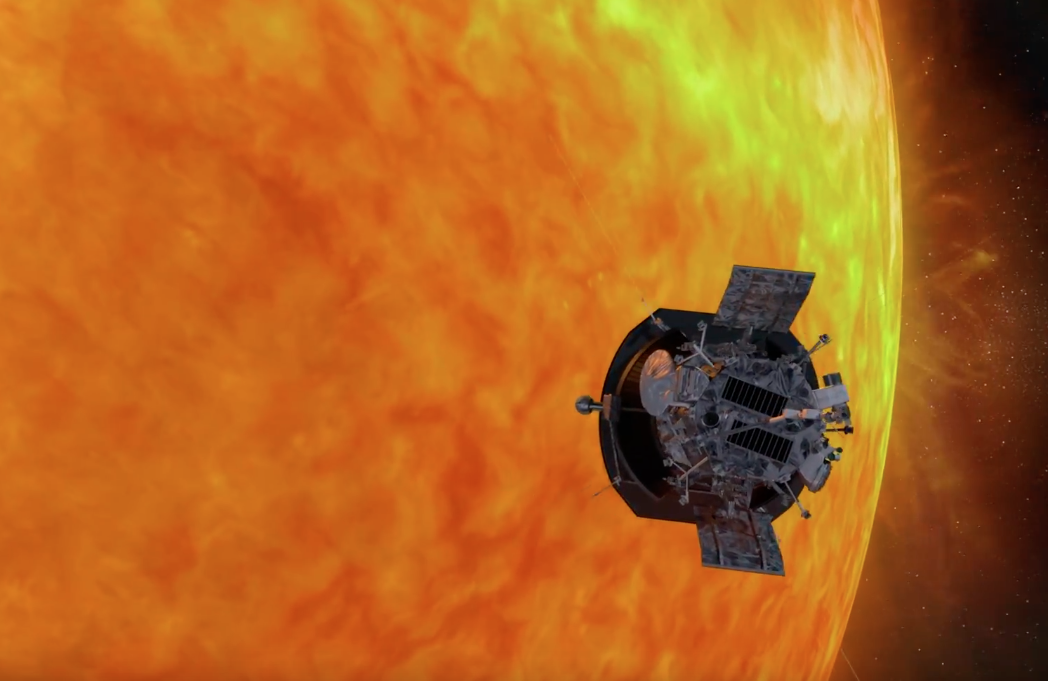
2018-11-02 13:03:12
First perihelion is expected at about 10:28 p.m. EST on Nov. 5. The spacecraft will come within 15 million miles of the Sun's surface and clock in at a top speed of 213,200 miles per hour relative to the Sun — setting new records for both closest solar approach and top heliocentric speed by a spacecraft.
Credit: NASA/Johns Hopkins APL/Steve Gribben
Download (Hi-Res)
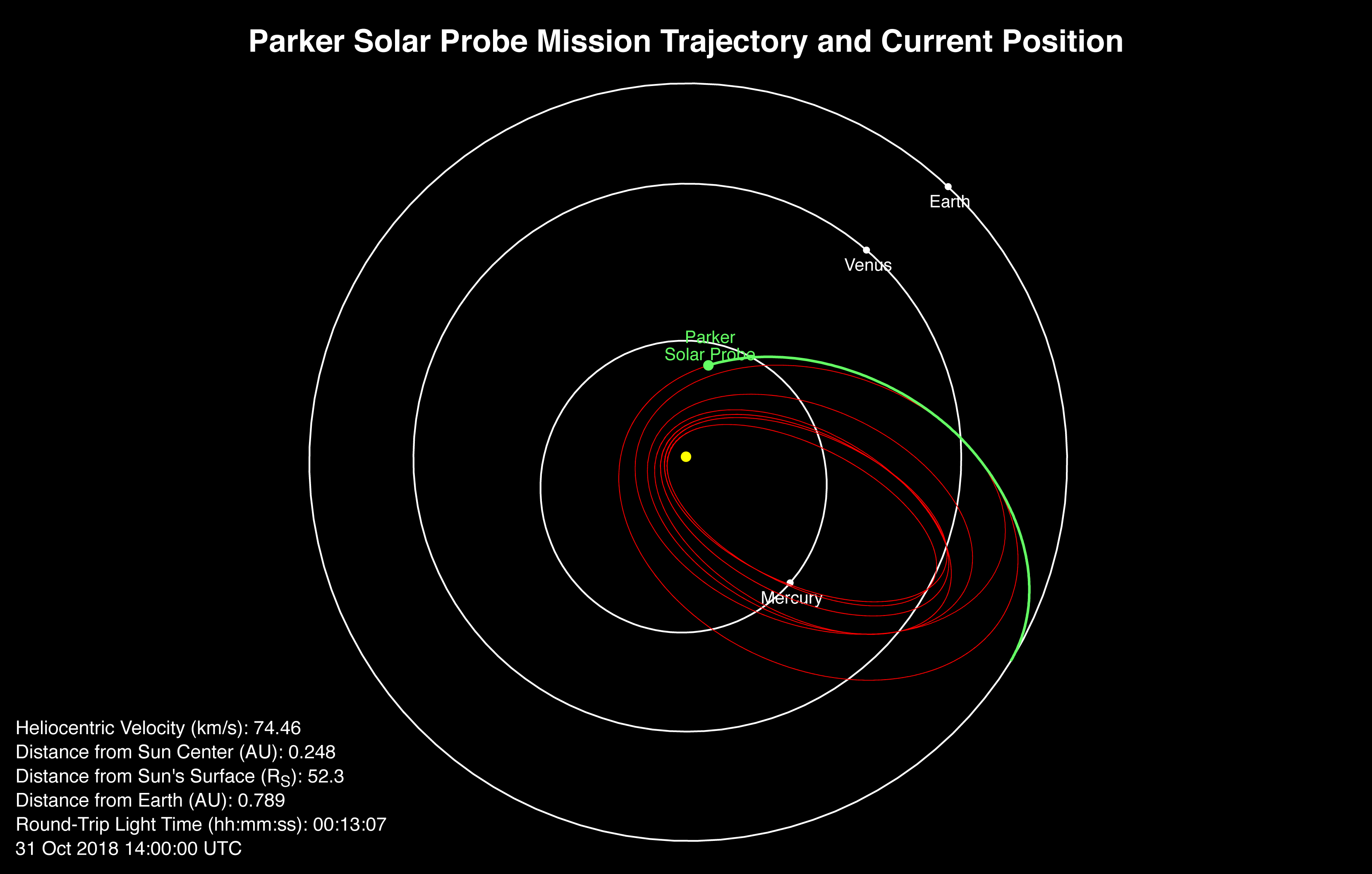
2018-10-31 13:32:08
Plot of Parker Solar Probe's location on Oct. 31, 2018 as it began its first solar encounter.
Credit: NASA/Johns Hopkins APL
Download (Hi-Res)

2018-10-30 05:56:58
Illustration of Parker Solar Probe approaching the Sun.
Credit: NASA/Johns Hopkins APL/Steve Gribben
Download (Hi-Res)

2018-10-29 13:06:31
Parker Solar Probe
Credit: NASA/Johns Hopkins APL/Steve Gribben
Download (Hi-Res)
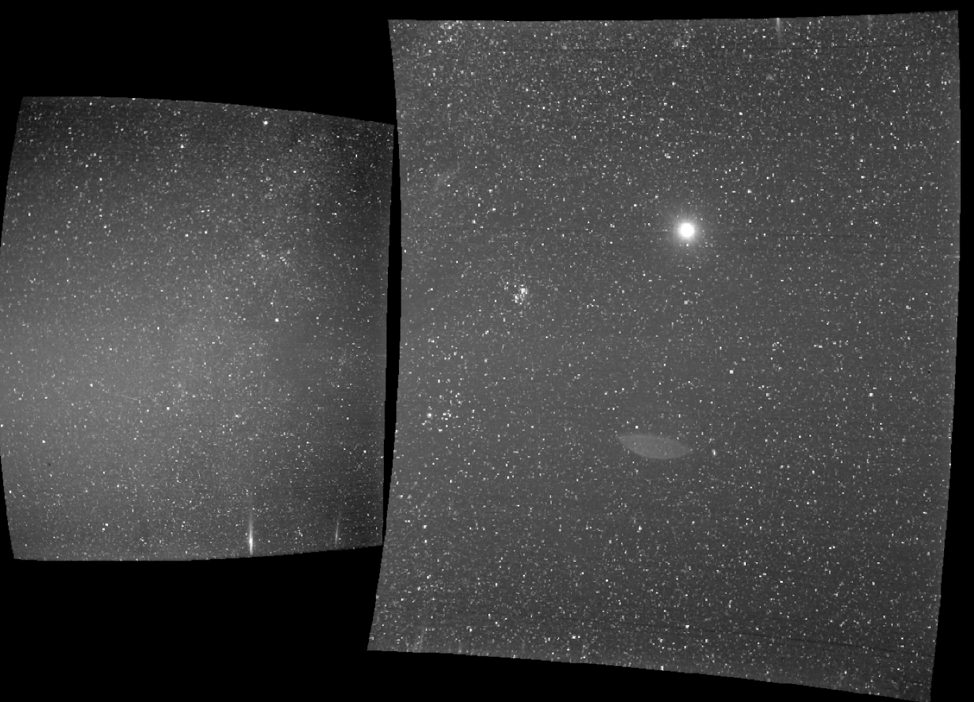
2018-10-24 13:30:20
The view from Parker Solar Probe's WISPR instrument on Sept. 25, 2018, shows Earth, the bright sphere near the middle of the right-hand panel. The elongated mark towards the bottom of the panel is a lens reflection from the WISPR instrument.
Credit: NASA/Naval Research Laboratory/Parker Solar Probe
Download (Hi-Res)
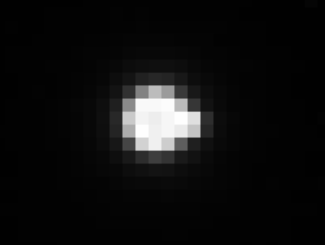
2018-10-24 13:30:20
A close-up of Earth from WISPR's Sept. 25, 2018, image shows what appears to be a bulge on our planet’s right side — this is the Moon.
Credit: NASA/Naval Research Laboratory/Parker Solar Probe
Download (Hi-Res)

2018-10-17 11:06:59
Members of the Parker Solar Probe team examine and align one of the two solar arrays that will power the spacecraft during its seven-year mission to the Sun. The solar arrays are cooled by a gallon of water that circulates through small tubes in the arrays and into large radiators at the top of the spacecraft.
Credit: NASA/Johns Hopkins APL/Ed Whitman
Download (Hi-Res)

2018-10-17 11:06:59
A member of the Parker Solar Probe team examines one of the spacecraft’s two solar arrays that will power the spacecraft during its seven-year mission to the Sun. The solar arrays are cooled by a gallon of water that circulates through small tubes in the arrays and into large radiators, visible at the top of the spacecraft.
Credit: NASA/Johns Hopkins APL/Ed Whitman
Download (Hi-Res)

2018-10-17 11:06:59
One of the two solar arrays that will power the Parker Solar Probe spacecraft during its seven-year mission to the Sun. The solar arrays are cooled by a gallon of water that circulates through tubes in the arrays and into large radiators, visible at the top of the spacecraft.
Credit: NASA/Johns Hopkins APL/Ed Whitman
Download (Hi-Res)

2018-10-17 11:06:59
After installation of the solar arrays on May 31, 2018, Parker Solar Probe team members use a laser to illuminate the solar cells and verify that they can create electricity and transfer it to the spacecraft.
Credit: NASA/Johns Hopkins APL/Ed Whitman
Download (Hi-Res)

2018-10-17 11:06:59
After installation of the solar arrays on May 31, 2018, Parker Solar Probe team members use a laser to illuminate the solar cells and verify that they can create electricity and transfer it to the spacecraft.
Credit: NASA/Johns Hopkins APL/Ed Whitman
Download (Hi-Res)
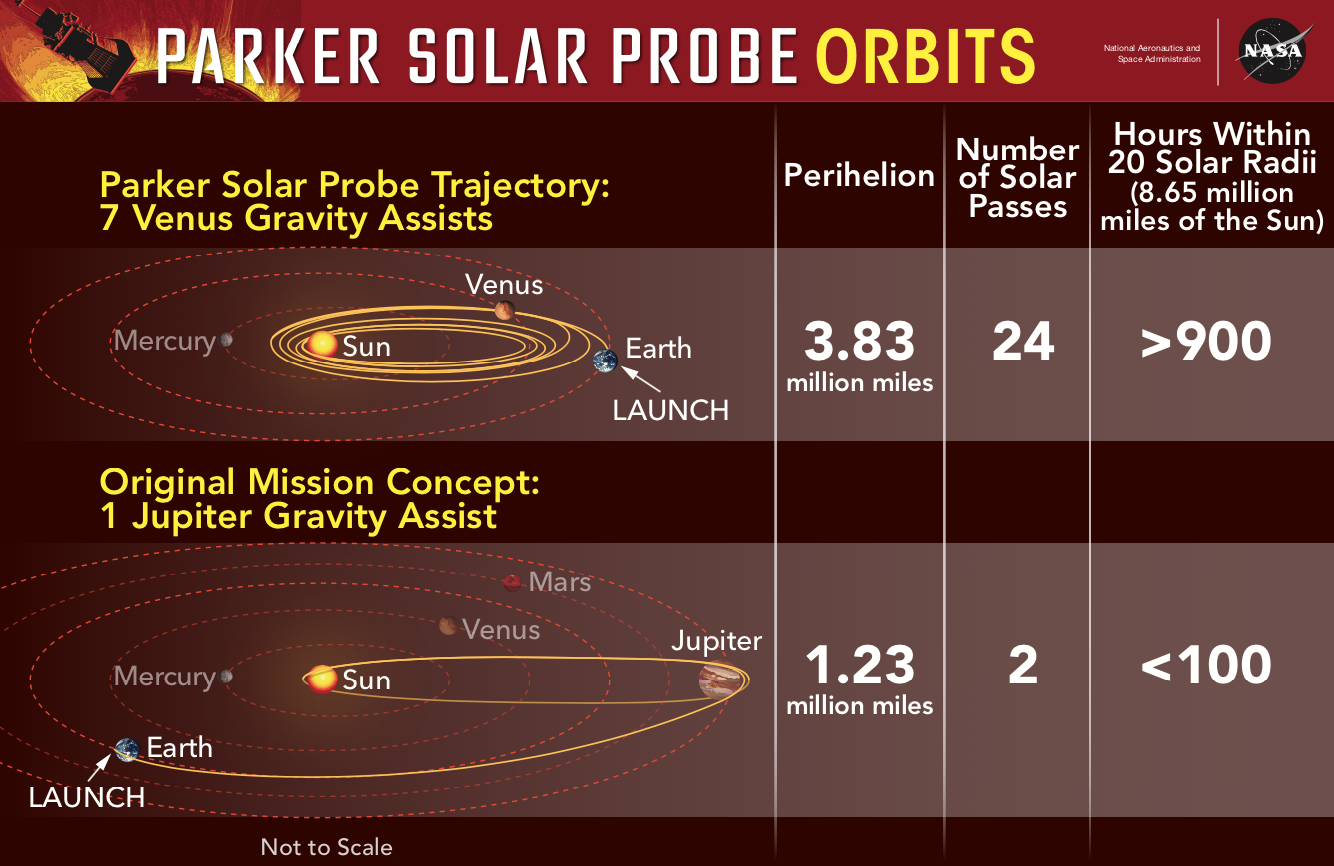
2018-10-04 12:33:27
The final orbit for the Parker Solar Probe mission uses seven Venus gravity assists to rack up more than 900 hours close to the Sun. The original mission concept, using a single Jupiter gravity assist, got the spacecraft closer to the Sun, but gave scientists less than 100 hours in key areas.
Credit: NASA/Mary Pat Hrybyk-Keith
Download (Hi-Res)
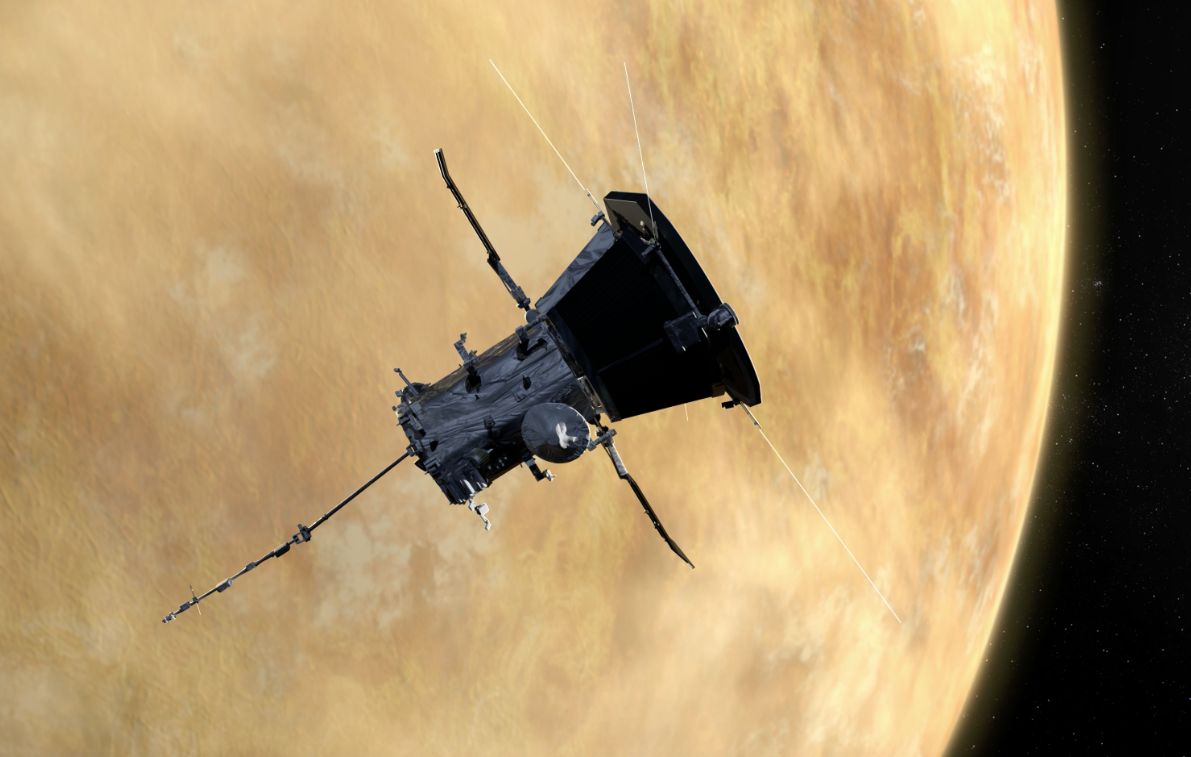
2018-10-04 12:33:27
Artist concept of Parker Solar Probe flying past Venus
Credit: NASA/Johns Hopkins APL/Steve Gribben
Download (Hi-Res)
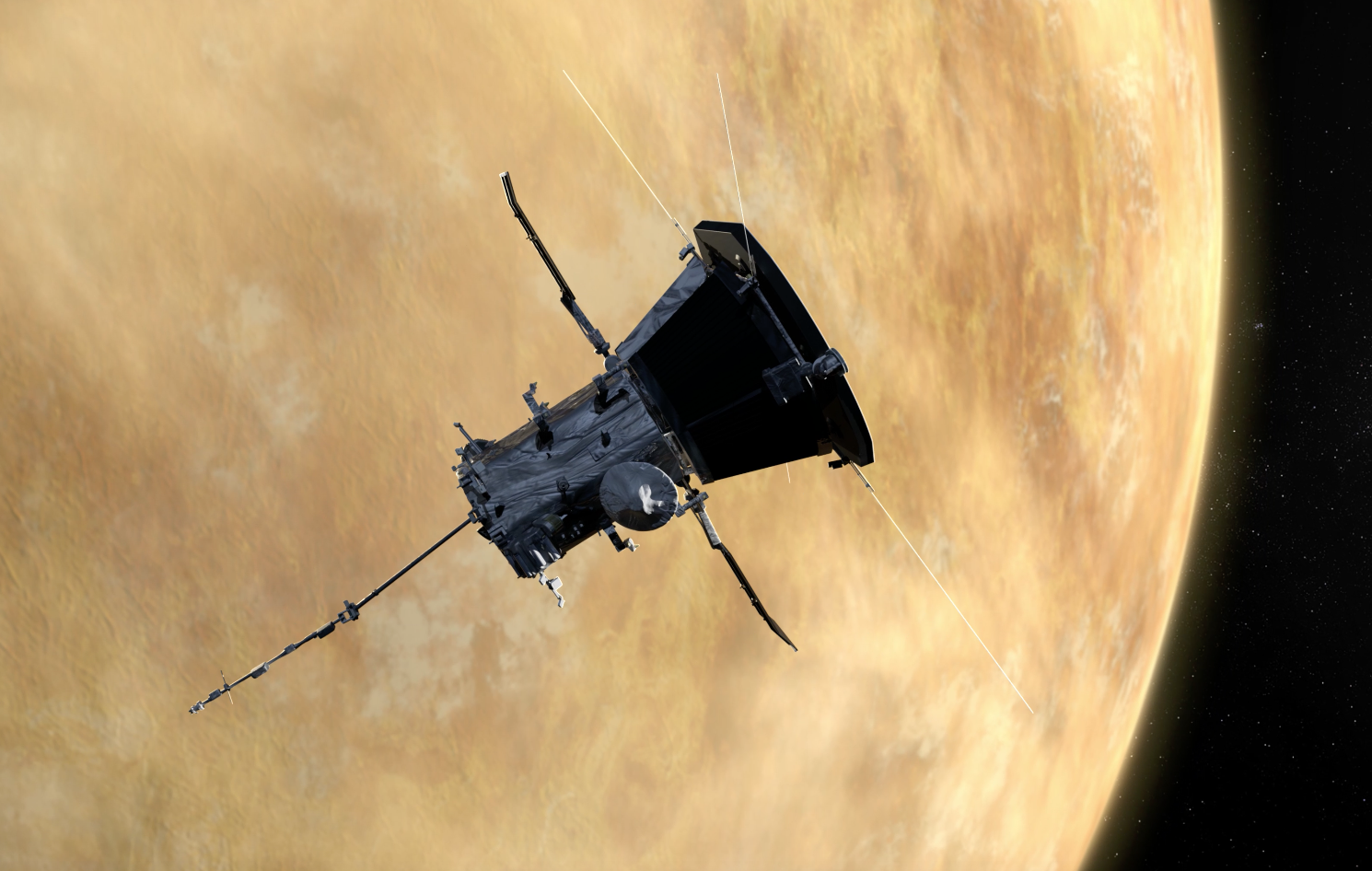
2018-10-03 11:17:21
Artist concept of Parker Solar Probe flying past Venus
Credit: NASA/Johns Hopkins APL/Steve Gribben
Download (Hi-Res)

2018-10-02 10:15:50
Artist concept of Parker Solar Probe flying past Venus
Credit: NASA/Johns Hopkins APL/Steve Gribben
Download (Hi-Res)

2018-09-26 11:37:53
Andy Dantzler joined Johns Hopkins APL in 2006 after more than 20 years with NASA. Here, he serves as a panelist at the Low-Cost Planetary Missions Conference, held at APL in June 2011.
Credit: Johns Hopkins APL/Ed Whitman
Download (Hi-Res)
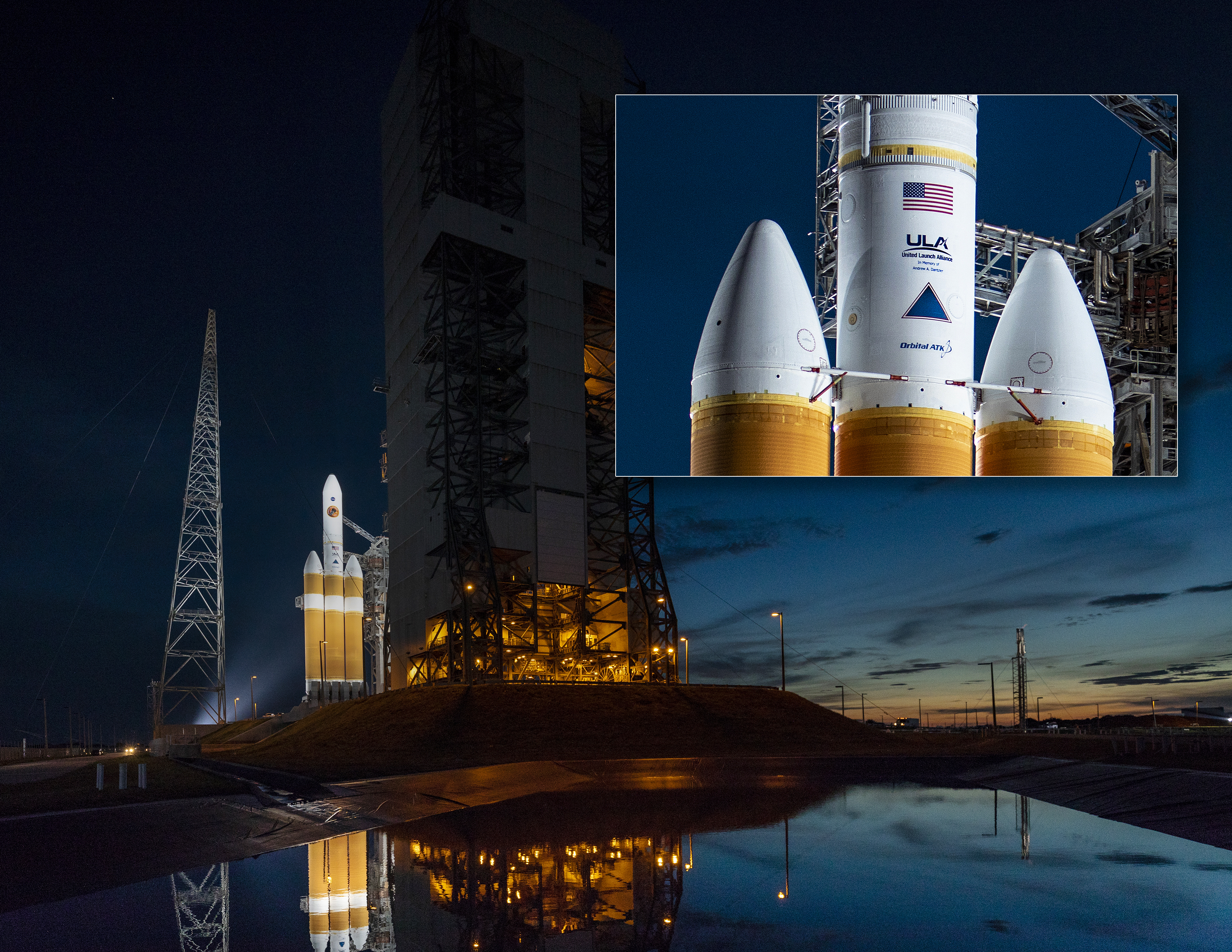
2018-09-26 11:37:53
The Delta IV Heavy rocket that carried Parker Solar Probe on its mission to touch the Sun; inset of dedication to APL's Andy Dantzler.
Credit: NASA/Johns Hopkins APL/Ed Whitman
Download (Hi-Res)

2018-09-19 12:19:52
First light data from Parker Solar Probe's WISPR (Wide-field Imager for Solar Probe) instrument suite. The right side of this image — from WISPR's inner telescope — has a 40-degree field of view, with its right edge 58.5 degrees from the Sun's center. The bright object slightly to the right of the image's center is Jupiter. The left side of the image is from WISPR's outer telescope, which has a 58-degree field of view and extends to about 160 degrees from the Sun. There is a parallax of about 13 degrees in the apparent position of the Sun as viewed from Earth and from Parker Solar Probe.
Credit: NASA/Naval Research Laboratory/Parker Solar Probe
Download (Hi-Res)

2018-09-19 12:19:52
First light data from EPI-Lo (the lower-energy Energetic Particle Instrument), part of the ISʘIS (Integrated Science Investigation of the Sun) suite aboard Parker Solar Probe.
Credit: NASA/Princeton University/Parker Solar Probe
Download (Hi-Res)

2018-09-19 12:19:52
First light data from EPI-Hi (the higher-energy Energetic Particle Instrument), part of the ISʘIS (Integrated Science Investigation of the Sun) suite aboard Parker Solar Probe.
Credit: NASA/Princeton University/Parker Solar Probe
Download (Hi-Res)

2018-09-19 12:19:52
Data gathered during the FIELDS suite's boom deployment, measuring the magnetic field as the boom swung away from Parker Solar Probe. The early data is the magnetic field of the spacecraft itself, and the instruments measured a sharp drop in the magnetic field as the boom extended away from the spacecraft. Post-deployment, the instruments are measuring the magnetic field in the solar wind.
Credit: NASA/UC Berkeley/Parker Solar Probe
Download (Hi-Res)

2018-09-19 12:19:52
This plot was updated on Sept. 21, 2018, to better illustrate the comparison between Parker Solar Probe’s data (center and bottom) and the data from the Wind mission (top).
Credit: NASA/UC Berkeley/Parker Solar Probe
Download (Hi-Res)

2018-09-19 12:19:52
Early data from the Solar Probe Cup, part of the SWEAP (Solar Wind Electrons Alphas and Protons) instrument suite aboard Parker Solar Probe, showing a gust of solar wind (the red streak).
Credit: NASA/University of Michigan/Parker Solar Probe
Download (Hi-Res)

2018-09-19 12:19:52
First light data from the SPAN-A (Solar Probe Analyzer Ahead) instrument aboard Parker Solar Probe, which is part of the SWEAP (Solar Wind Electrons Alphas and Protons) instrument suite. This data shows measurements of solar wind ions (top) and solar wind electrons (bottom).
Credit: NASA/University of Michigan/Parker Solar Probe
Download (Hi-Res)
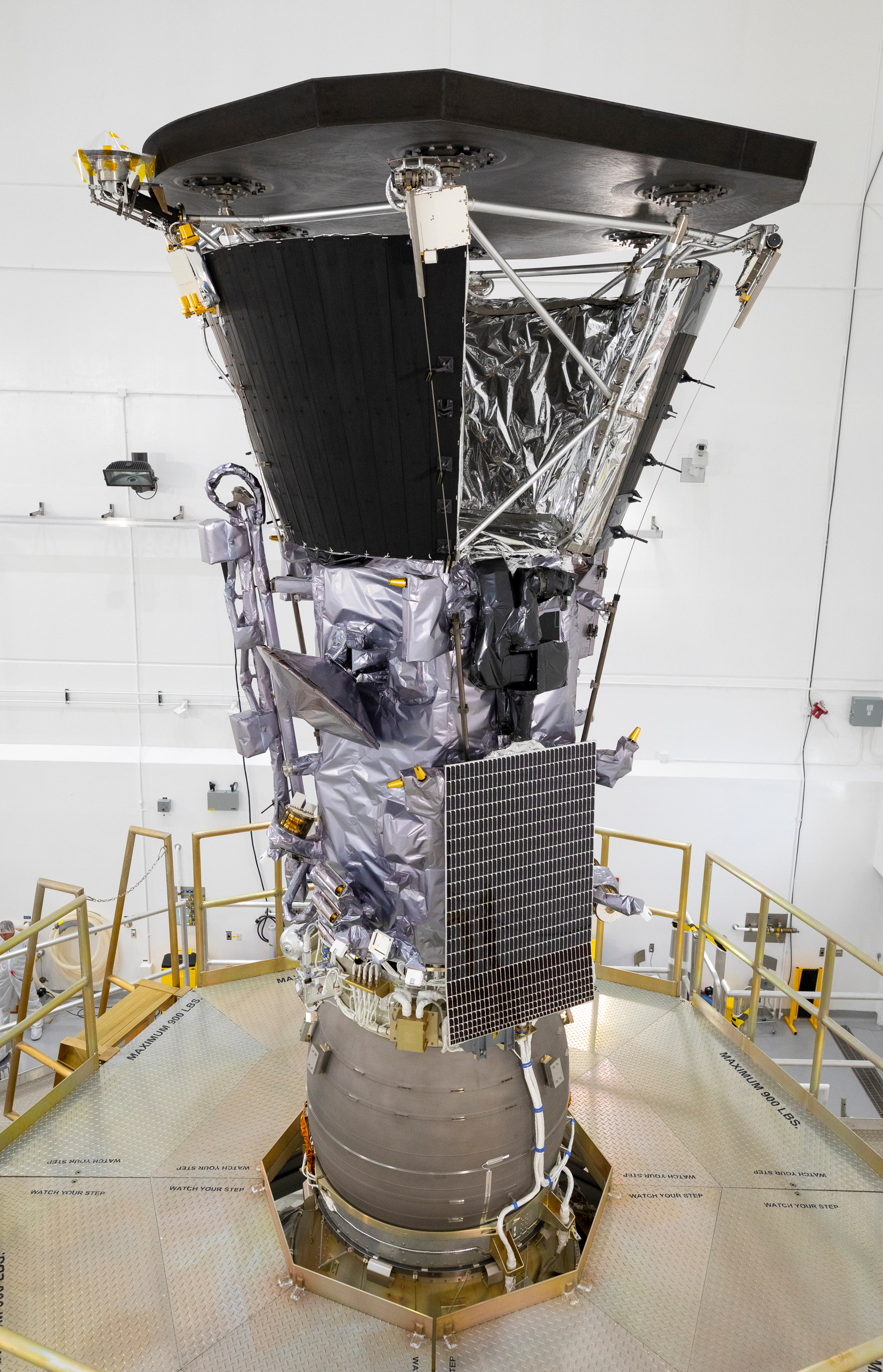
2018-09-14 15:02:34
NASA’s Parker Solar Probe is shown here mated to its third stage rocket motor on July 16, 2018, at Astrotech Space Operations in Titusville, Florida. The Solar Array Cooling System uses large black radiators, at the top of the spacecraft, to cool water that flows through portions of the solar arrays, bottom left.
Credit: NASA/Johns Hopkins APL/Ed Whitman
Download (Hi-Res)
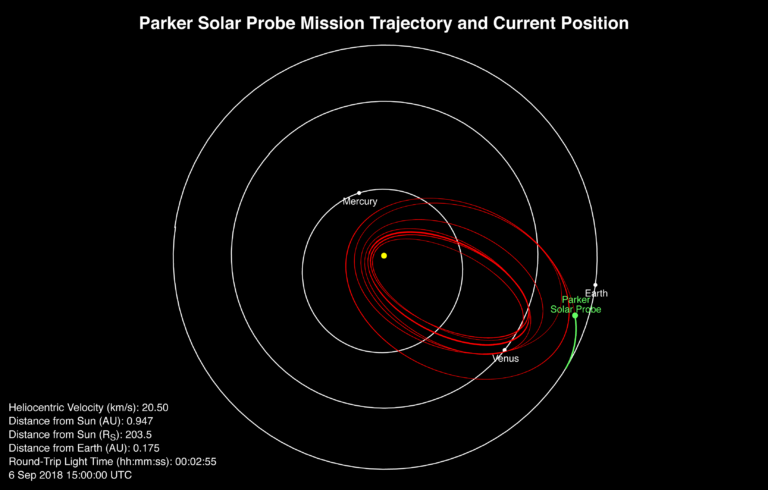
2018-09-06 13:23:18
Plot of Parker Solar Probe's location
Credit: NASA/Johns Hopkins APL
Download (Hi-Res)

2018-09-05 10:35:32
An artist’s concept of Parker Solar Probe in space. The FIELDS antennas extend out from behind the heat shield, and the Solar Probe Cup is visible on the right.
Credit: NASA/Johns Hopkins APL
Download (Hi-Res)

2018-08-21 10:15:14
Parker Solar Probe
Credit: NASA/Johns Hopkins APL/Steve Gribben
Download (Hi-Res)
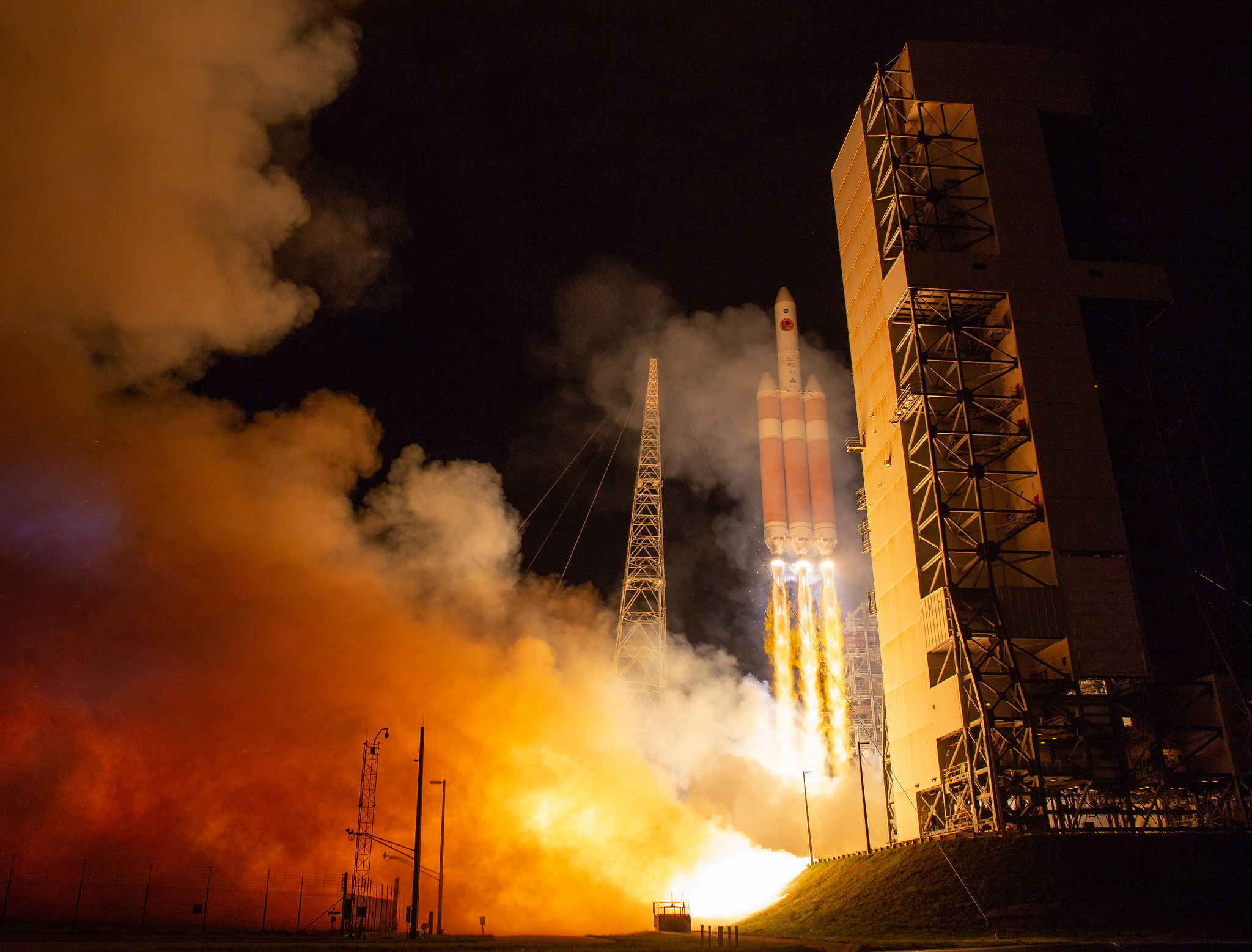
2018-08-17 10:40:23
The United Launch Alliance Delta IV Heavy rocket launches NASA's Parker Solar Probe to touch the Sun, Sunday, Aug. 12, 2018 from Launch Complex 37 at Cape Canaveral Air Force Station, Florida.
Credit: NASA/Bill Ingalls
Download (Hi-Res)
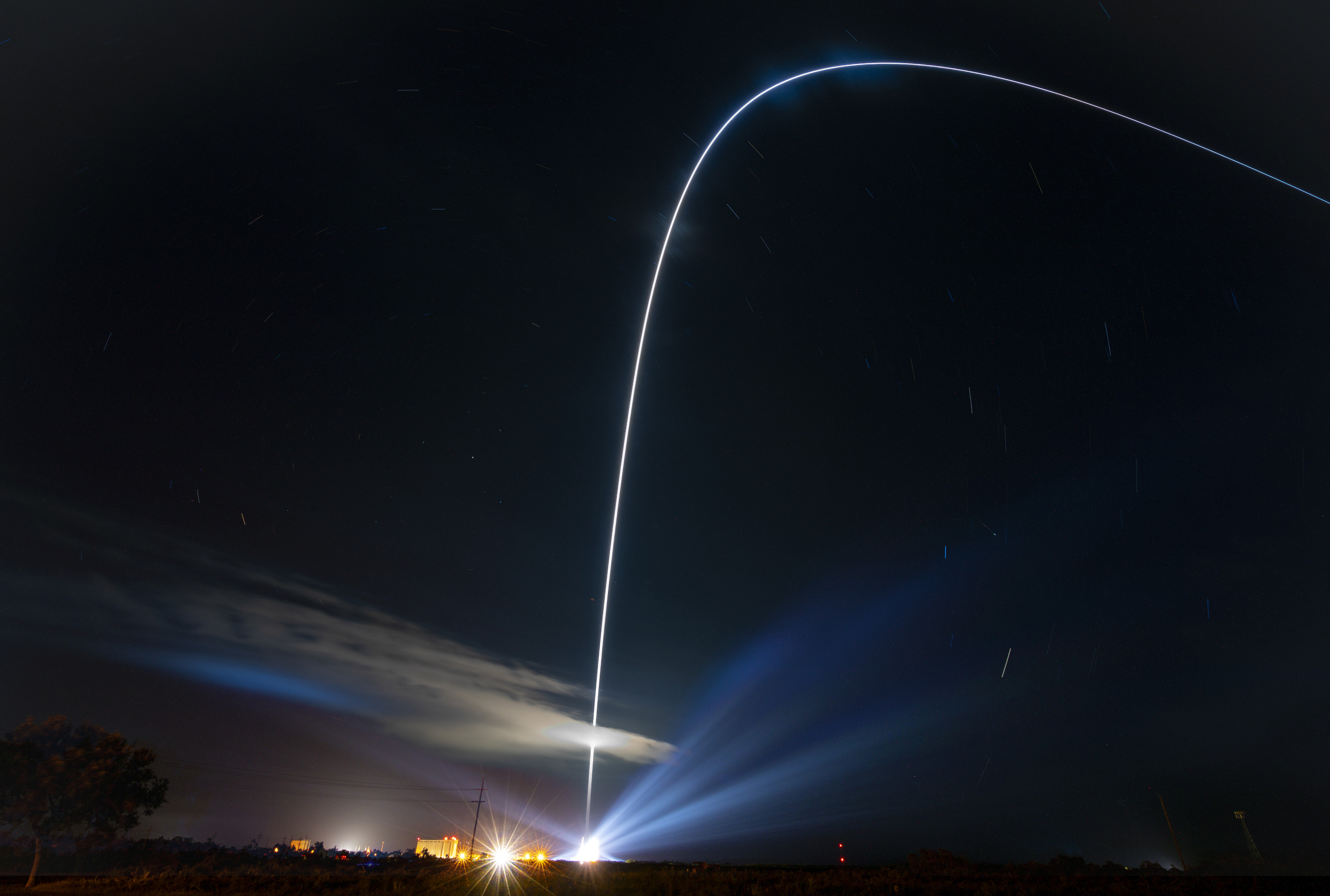
2018-08-12 05:57:17
The Delta IV Heavy rocket carrying Parker Solar Probe is seen in this long exposure photograph taken during launch on Sunday, Aug. 12, 2018 from Launch Complex 37 at Cape Canaveral Air Force Station, Florida.
Credit: NASA/Johns Hopkins APL/Ed Whitman
Download (Hi-Res)
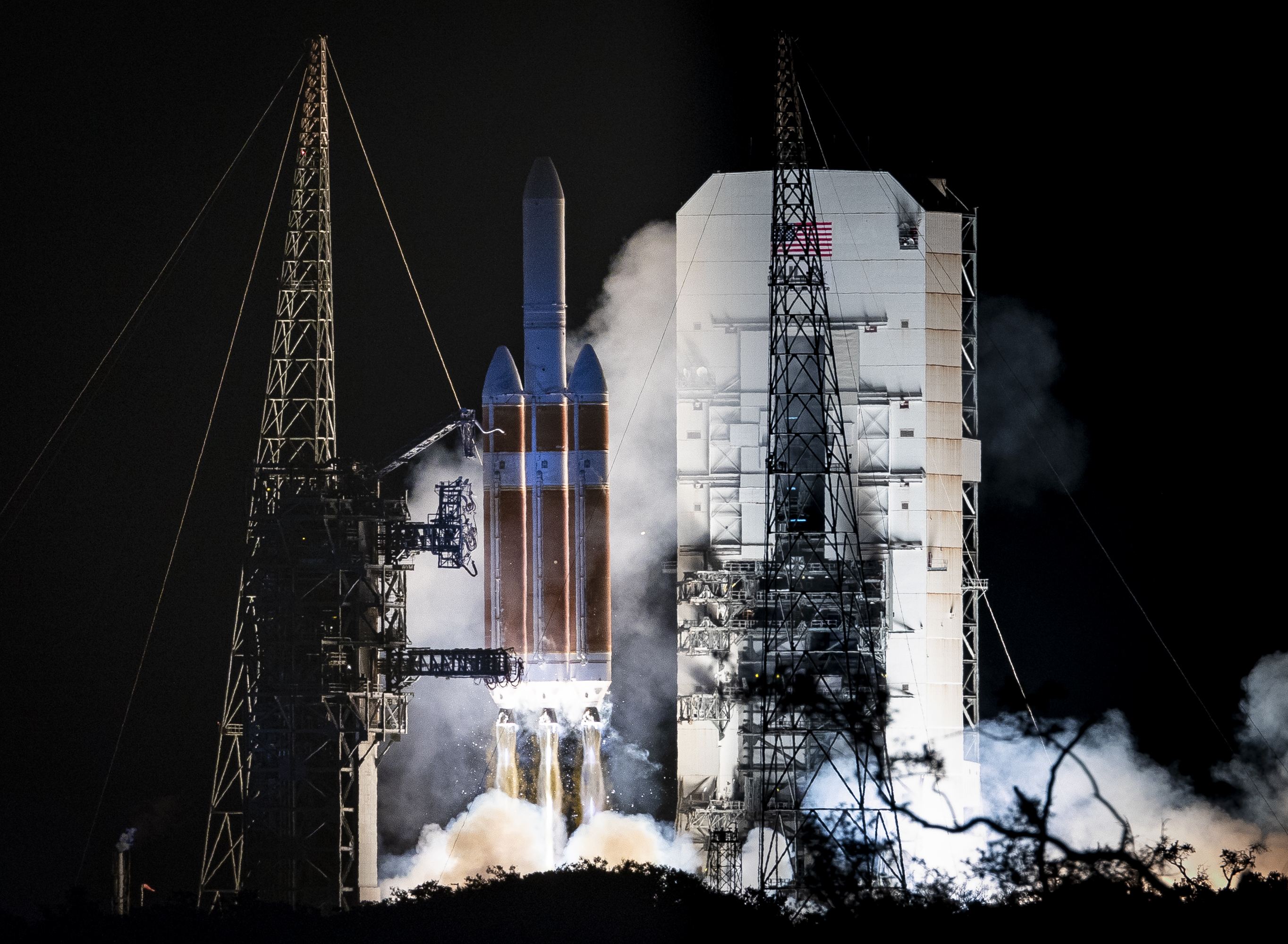
2018-08-12 05:57:17
Parker Solar Probe begins its mission to unlock the mysteries of our star on Sunday, Aug. 12, 2018 with a ride atop a Delta IV Heavy rocket at Launch Complex 37 at Cape Canaveral Air Force Station, Florida.
Credit: NASA/Johns Hopkins APL/Ed Whitman
Download (Hi-Res)
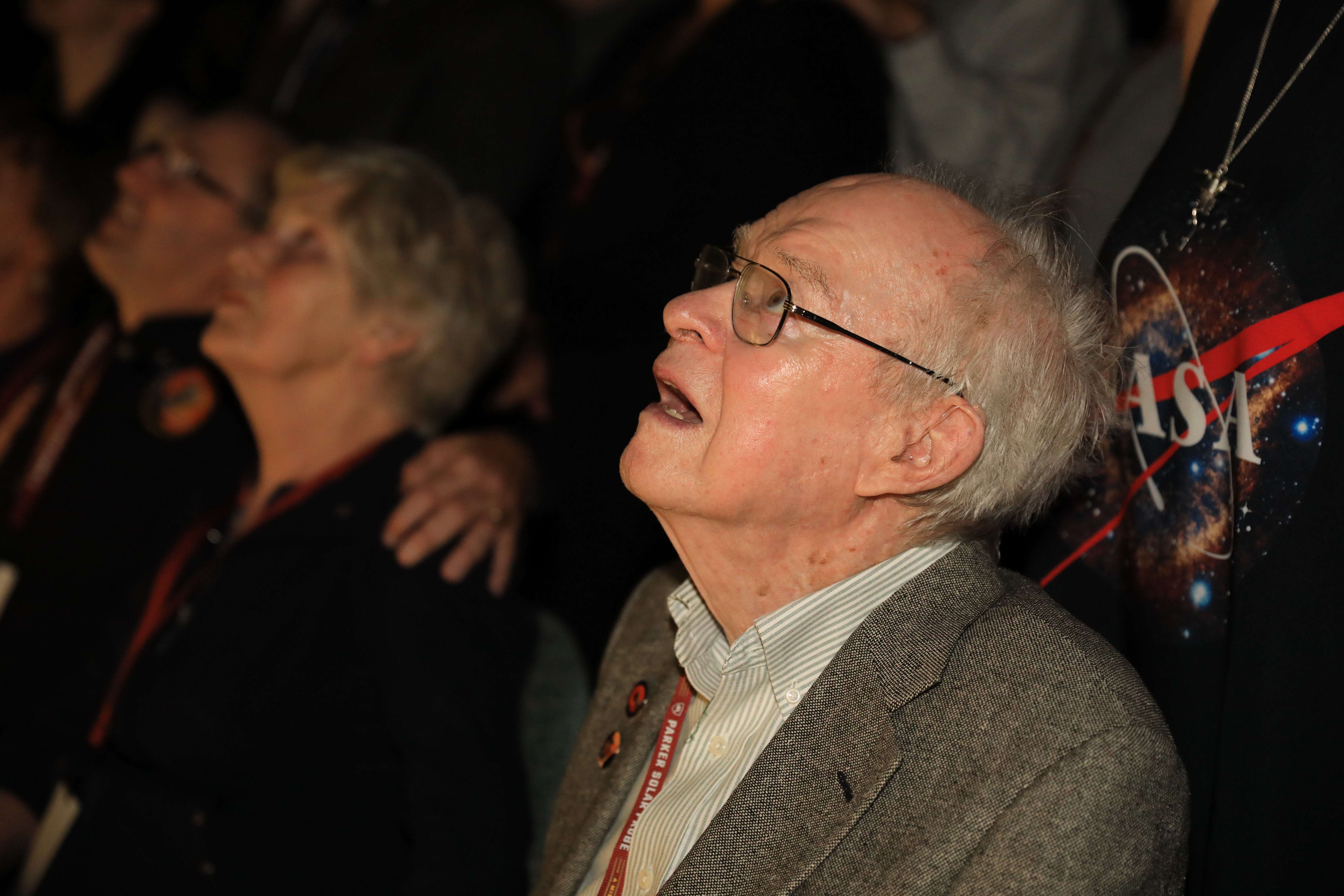
2018-08-12 05:57:17
Dr. Eugene Parker watches the launch of the spacecraft that bears his name – NASA’s Parker Solar Probe – early in the morning on Aug. 12, 2018 at Kennedy Space Center.
Credit: NASA/Glenn Benson
Download (Hi-Res)
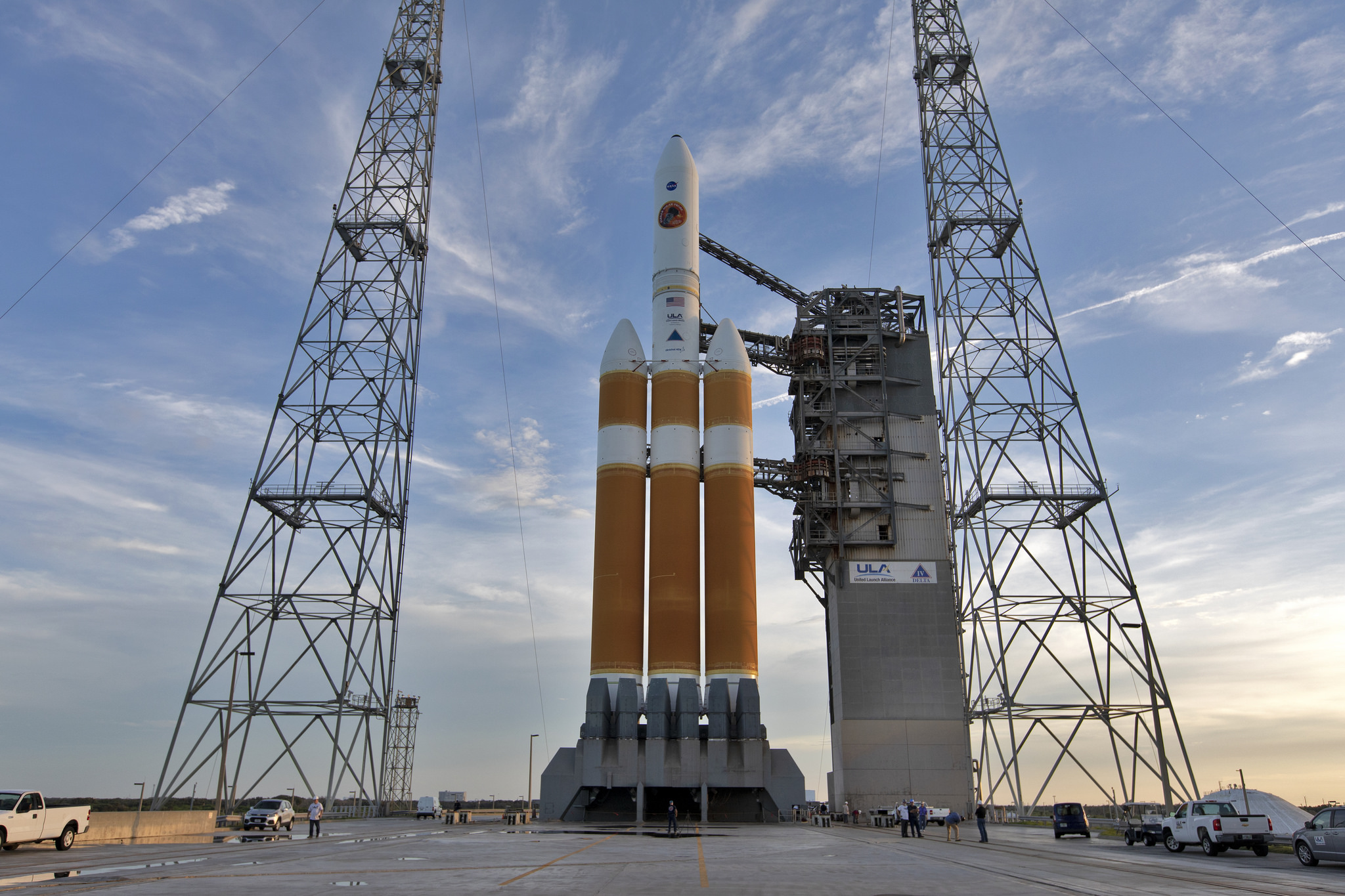
2018-08-11 02:06:47
The ULA Delta IV Heavy rocket that will carry Parker Solar Probe on its mission to study the Sun.
Credit: NASA / Kim Shiflett
Download (Hi-Res)
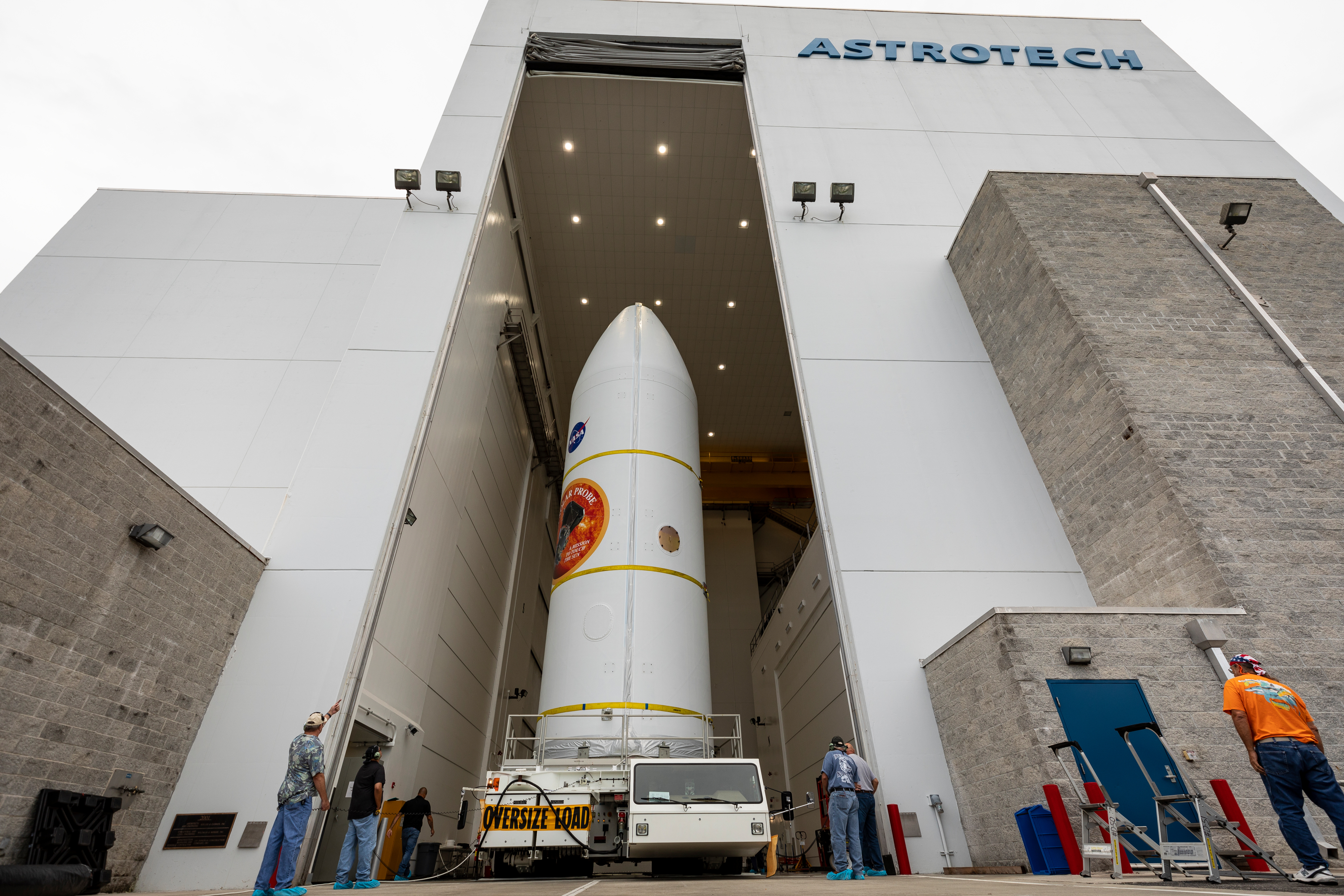
2018-08-09 20:50:34
NASA’s Parker Solar Probe, secured inside its payload fairing, was moved July 30, 2018, from nearby Astrotech Space Operations in Titusville, Florida, to Space Launch Complex 37 on Cape Canaveral Air Force Station. The following day, the spacecraft was lifted and attached to the top of the United Launch Alliance Delta IV Heavy rocket in the Vertical Integration Facility.
Credit: NASA/Johns Hopkins APL/Ed Whitman
Download (Hi-Res)
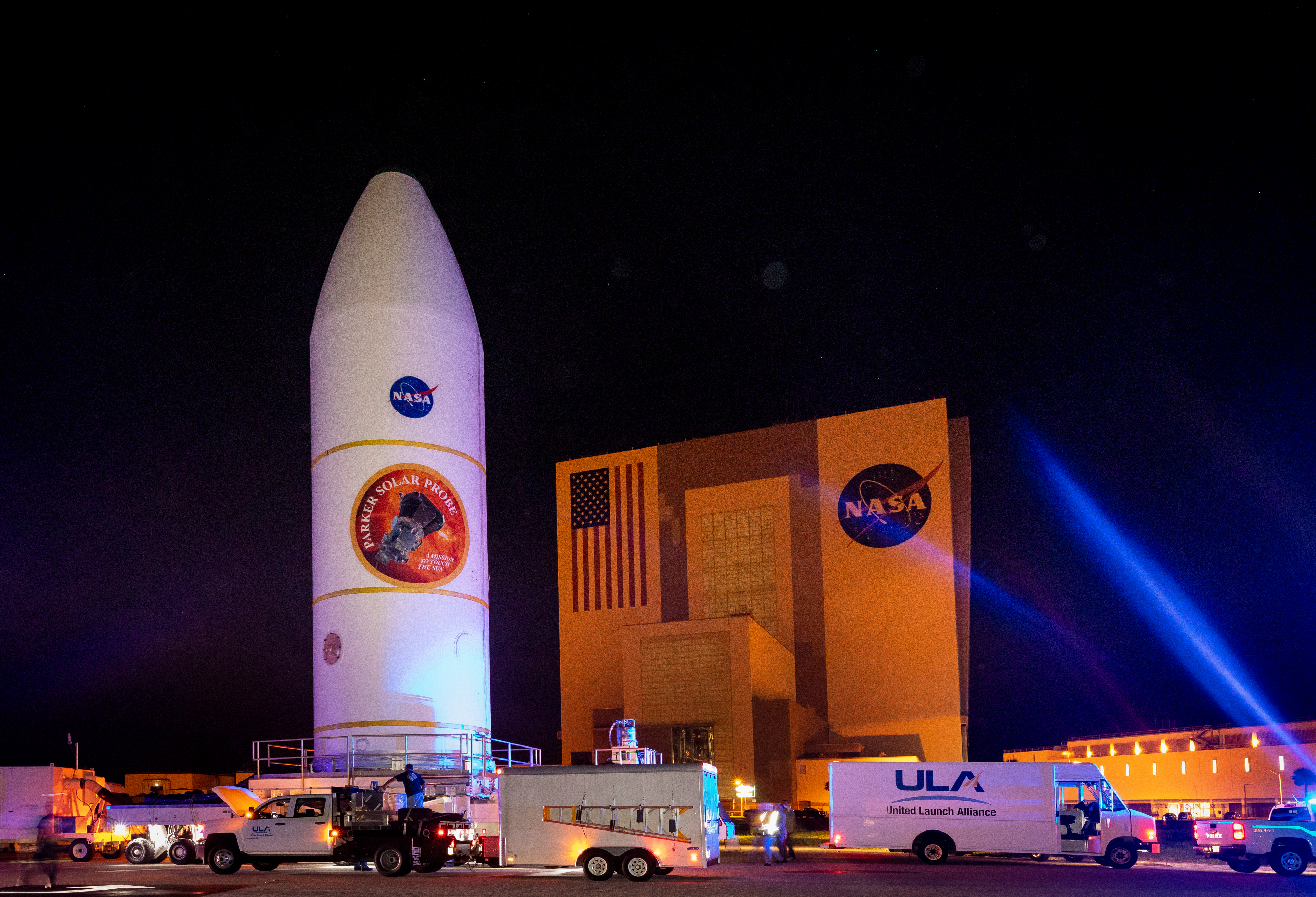
2018-08-09 20:50:34
NASA’s Parker Solar Probe, secured inside its payload fairing, was moved July 30, 2018, from nearby Astrotech Space Operations in Titusville, Florida, to Space Launch Complex 37 on Cape Canaveral Air Force Station. Here the spacecraft in its fairing is shown near the Vertical Assembly Building at Kennedy Space Center. The following day, the spacecraft was lifted and attached to the top of the United Launch Alliance Delta IV Heavy rocket in the Vertical Integration Facility.
Credit: NASA/Johns Hopkins APL/Ed Whitman
Download (Hi-Res)
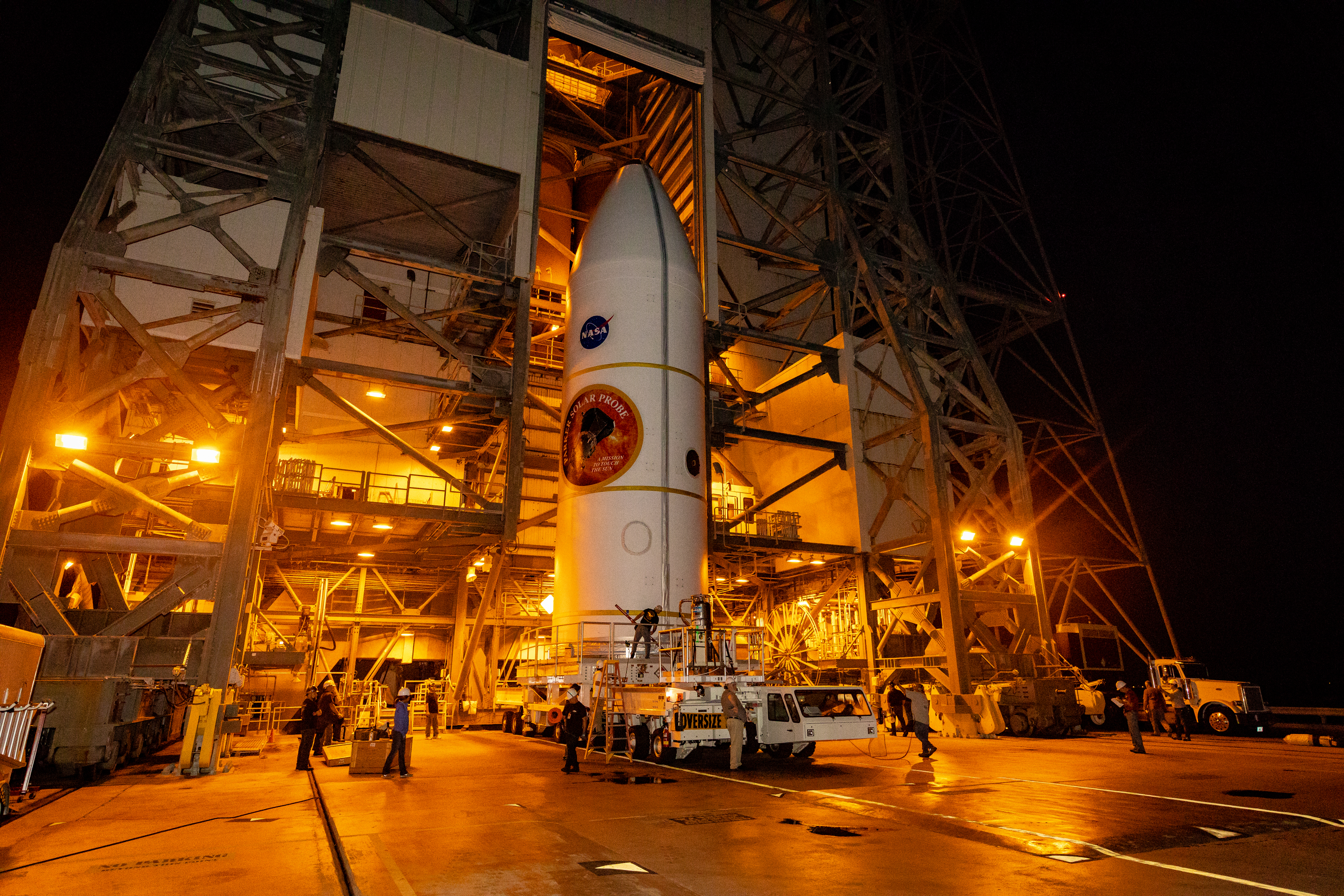
2018-08-09 20:50:34
NASA’s Parker Solar Probe, shown on July 31, 2018 at Space Launch Complex 37 on Cape Canaveral Air Force Station, at the United Launch Alliance Delta IV Heavy Vertical Integration Facility.
Credit: NASA/Johns Hopkins APL/Ed Whitman
Download (Hi-Res)
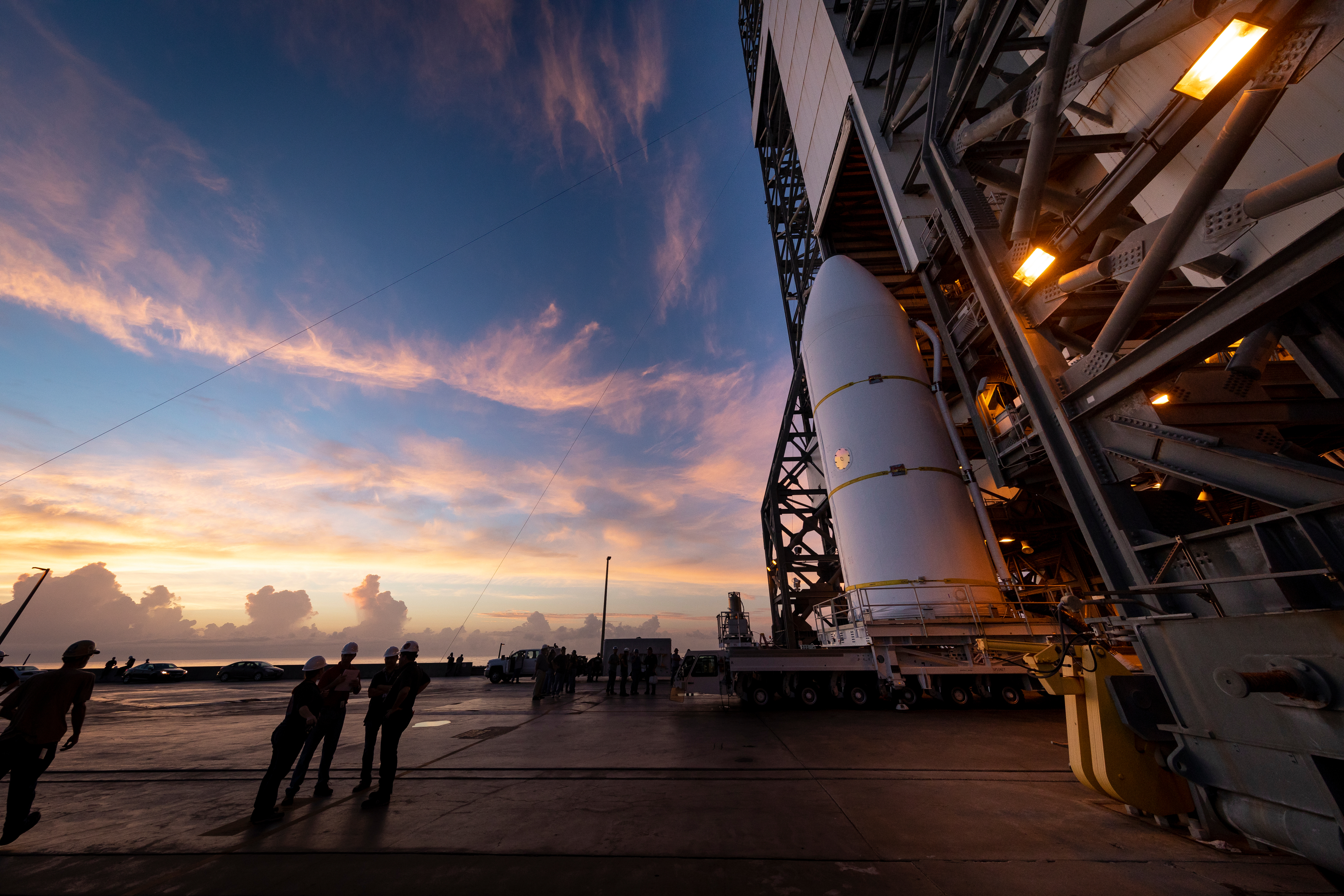
2018-08-09 20:50:34
NASA’s Parker Solar Probe, shown on July 31, 2018 at Space Launch Complex 37 on Cape Canaveral Air Force Station, at the United Launch Alliance Delta IV Heavy Vertical Integration Facility.
Credit: NASA/Johns Hopkins APL/Ed Whitman
Download (Hi-Res)
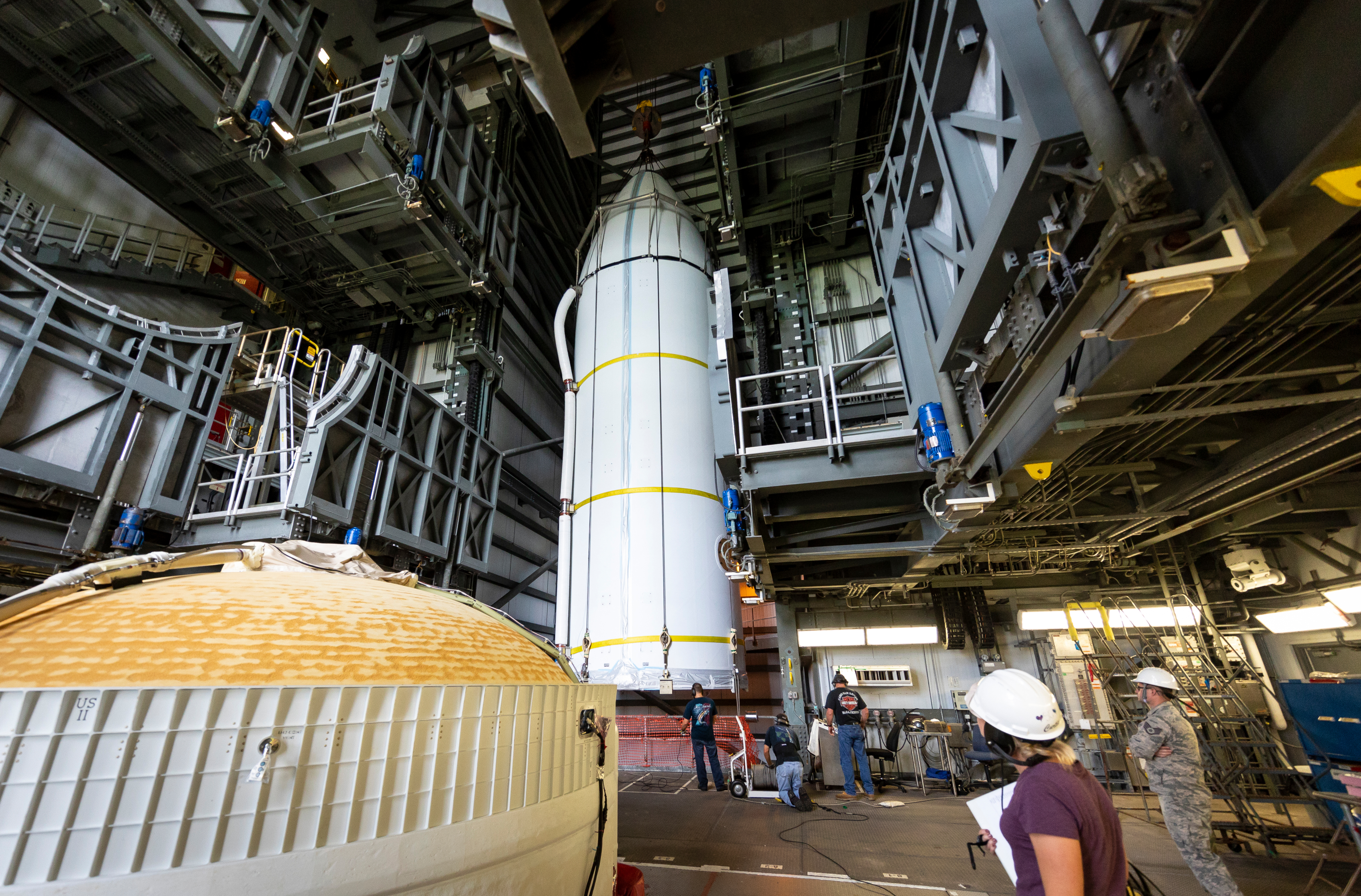
2018-08-09 20:50:34
NASA’s Parker Solar Probe, shown on July 31, 2018 at Space Launch Complex 37 on Cape Canaveral Air Force Station, at the United Launch Alliance Delta IV Heavy Vertical Integration Facility.
Credit: NASA/Johns Hopkins APL/Ed Whitman
Download (Hi-Res)
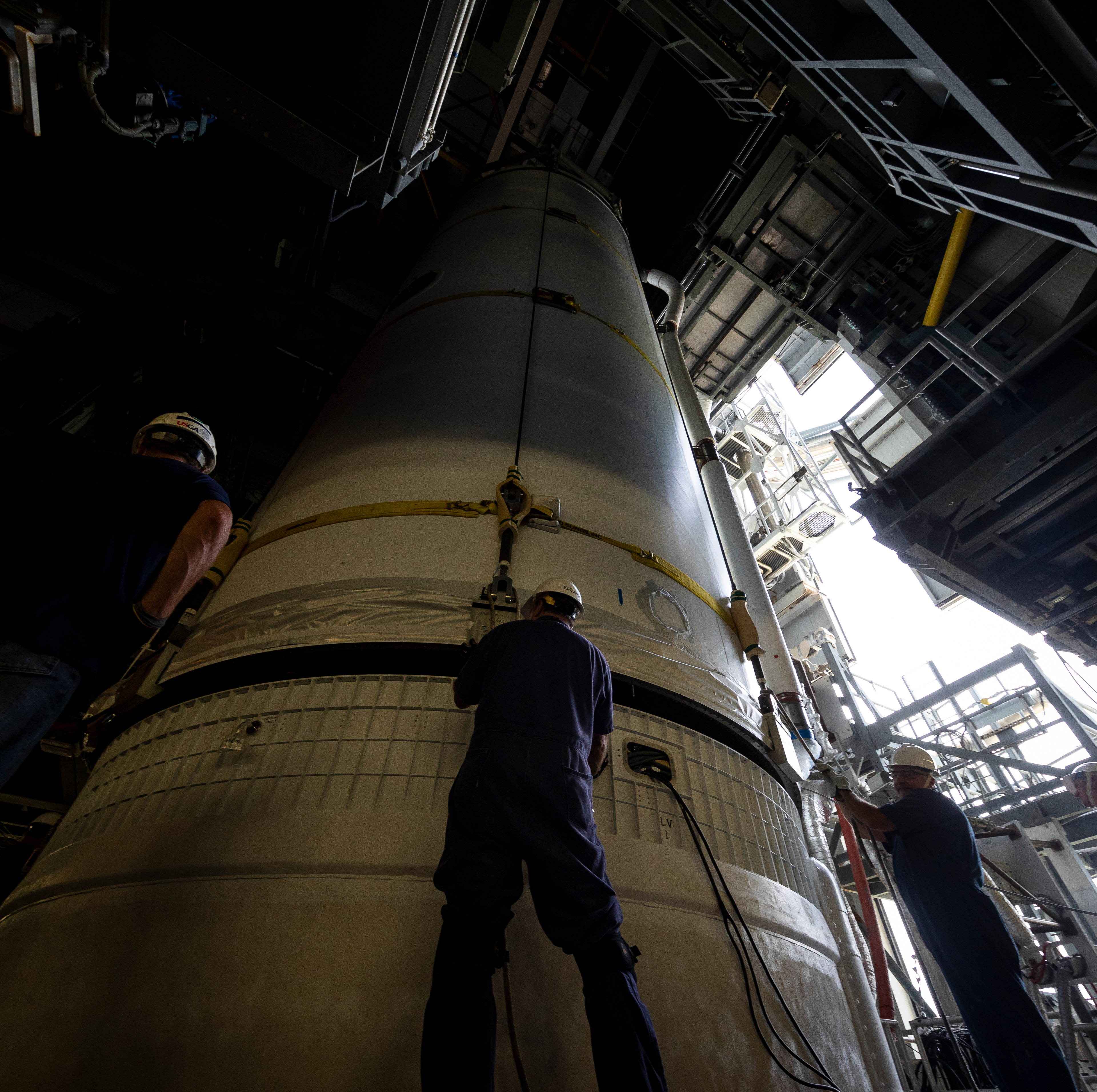
2018-08-09 20:50:34
NASA’s Parker Solar Probe, shown on July 31, 2018 at Space Launch Complex 37 on Cape Canaveral Air Force Station, at the United Launch Alliance Delta IV Heavy Vertical Integration Facility.
Credit: NASA/Johns Hopkins APL/Ed Whitman
Download (Hi-Res)
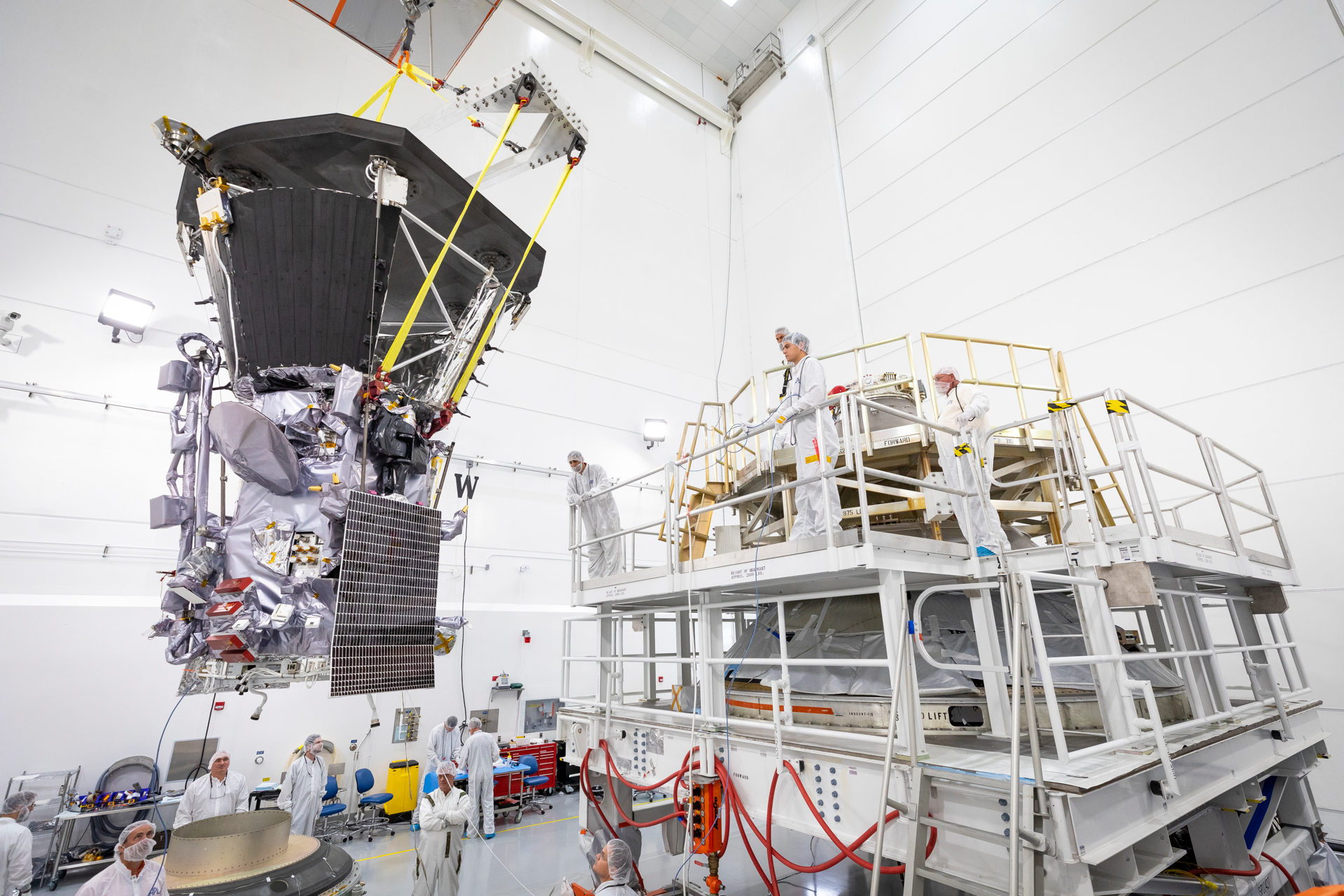
2018-08-08 05:56:29
NASA’s Parker Solar Probe is lifted to the third stage rocket motor on July 11, 2018, at Astrotech Space Operations in Titusville, Florida. In addition to using the largest operational launch vehicle, the Delta IV Heavy, Parker Solar Probe will use a third stage rocket to gain the speed needed to reach the Sun, which takes 55 times more energy than reaching Mars.
Credit: NASA/Johns Hopkins APL/Ed Whitman
Download (Hi-Res)
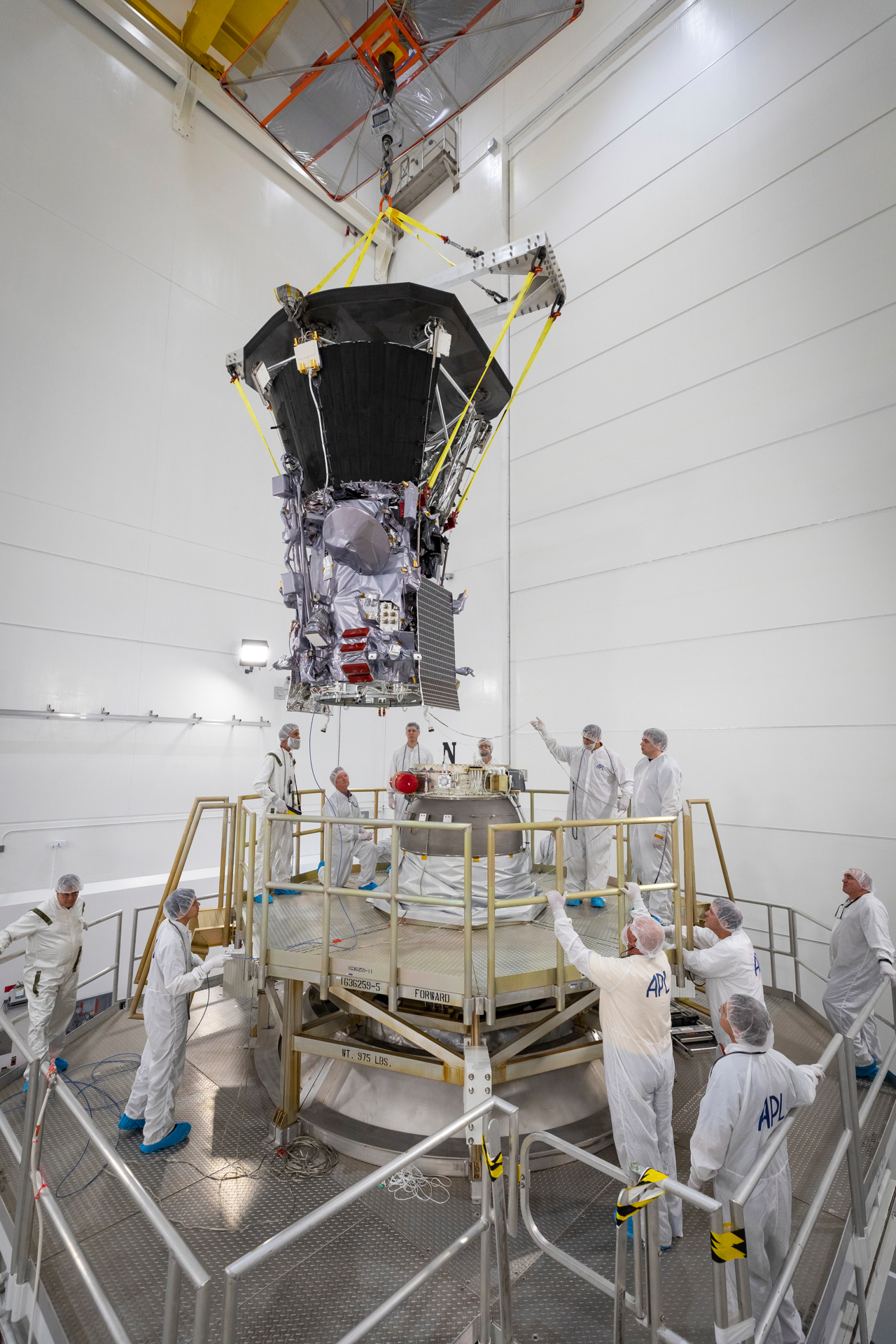
2018-08-08 05:56:29
Parker Solar Probe is lowered toward the third stage rocket motor on July 11, 2018, at Astrotech Space Operations in Titusville, Florida. In addition to using the largest operational launch vehicle, the Delta IV Heavy, Parker Solar Probe will use a third stage rocket to gain the speed needed to reach the Sun, which takes 55 times more energy than reaching Mars.
Credit: NASA/Johns Hopkins APL/Ed Whitman
Download (Hi-Res)
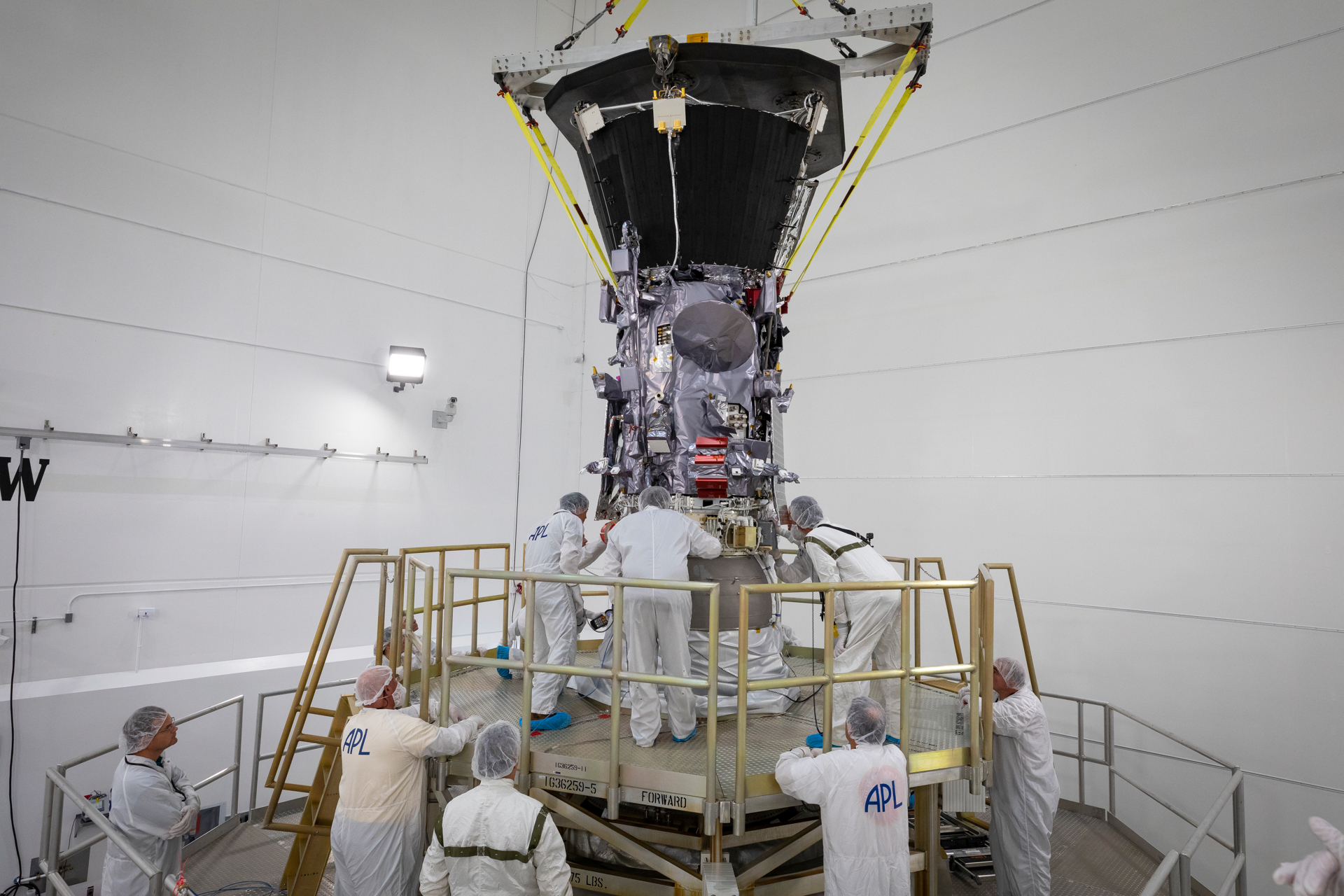
2018-08-08 05:56:29
NASA’s Parker Solar Probe is mated to the third stage rocket motor on July 11, 2018, at Astrotech Space Operations in Titusville, Florida. In addition to using the largest operational launch vehicle, the Delta IV Heavy, Parker Solar Probe will use a third stage rocket to gain the speed needed to reach the Sun, which takes 55 times more energy than reaching Mars.
Credit: NASA/Johns Hopkins APL/Ed Whitman
Download (Hi-Res)
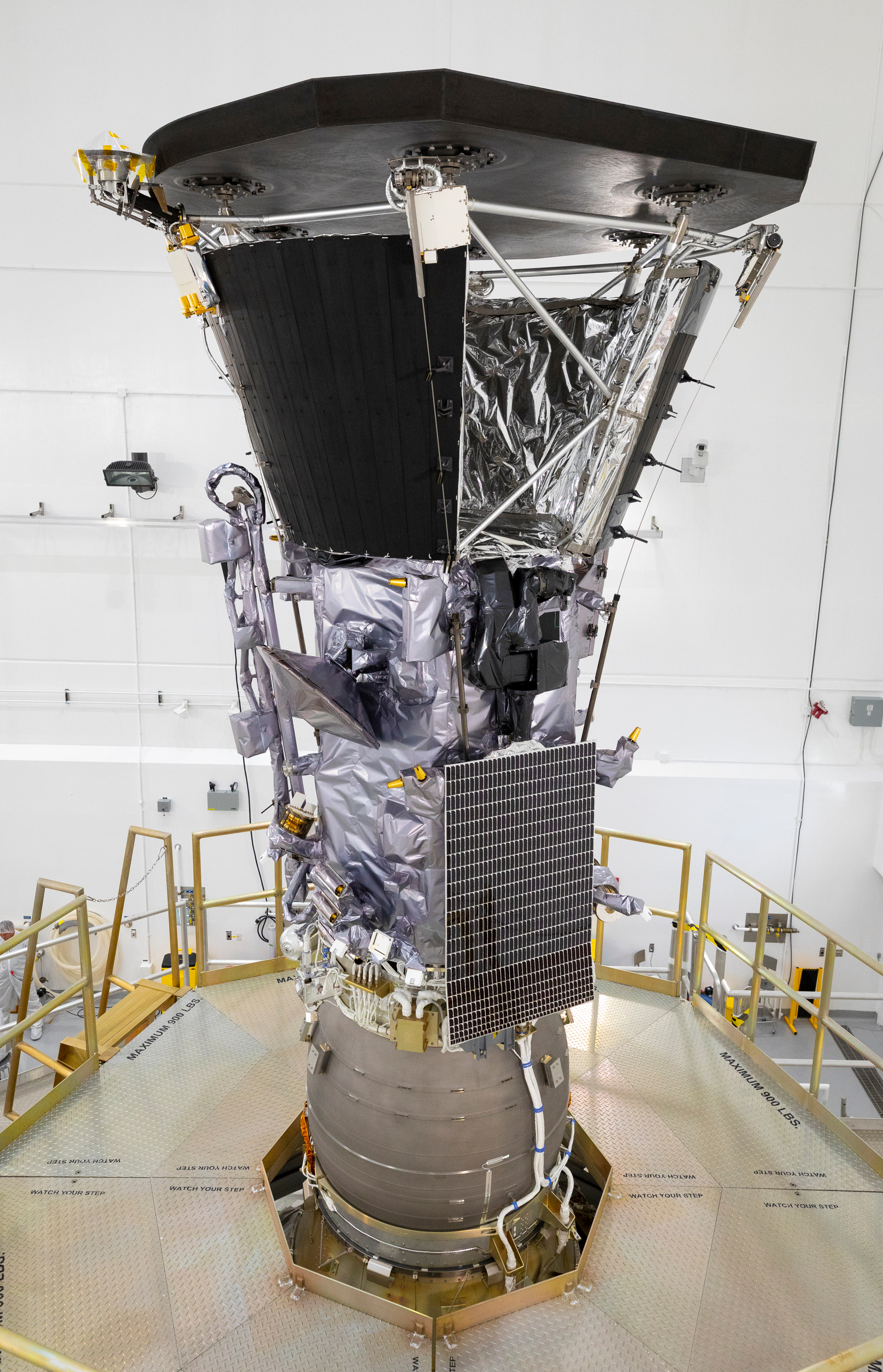
2018-08-08 05:56:29
NASA’s Parker Solar Probe is shown here mated to its third stage rocket motor on July 16, 2018, at Astrotech Space Operations in Titusville, Florida. In addition to using the largest operational launch vehicle, the Delta IV Heavy, Parker Solar Probe will use a third stage rocket to gain the speed needed to reach the Sun, which takes 55 times more energy than reaching Mars.
Credit: NASA/Johns Hopkins APL/Ed Whitman
Download (Hi-Res)
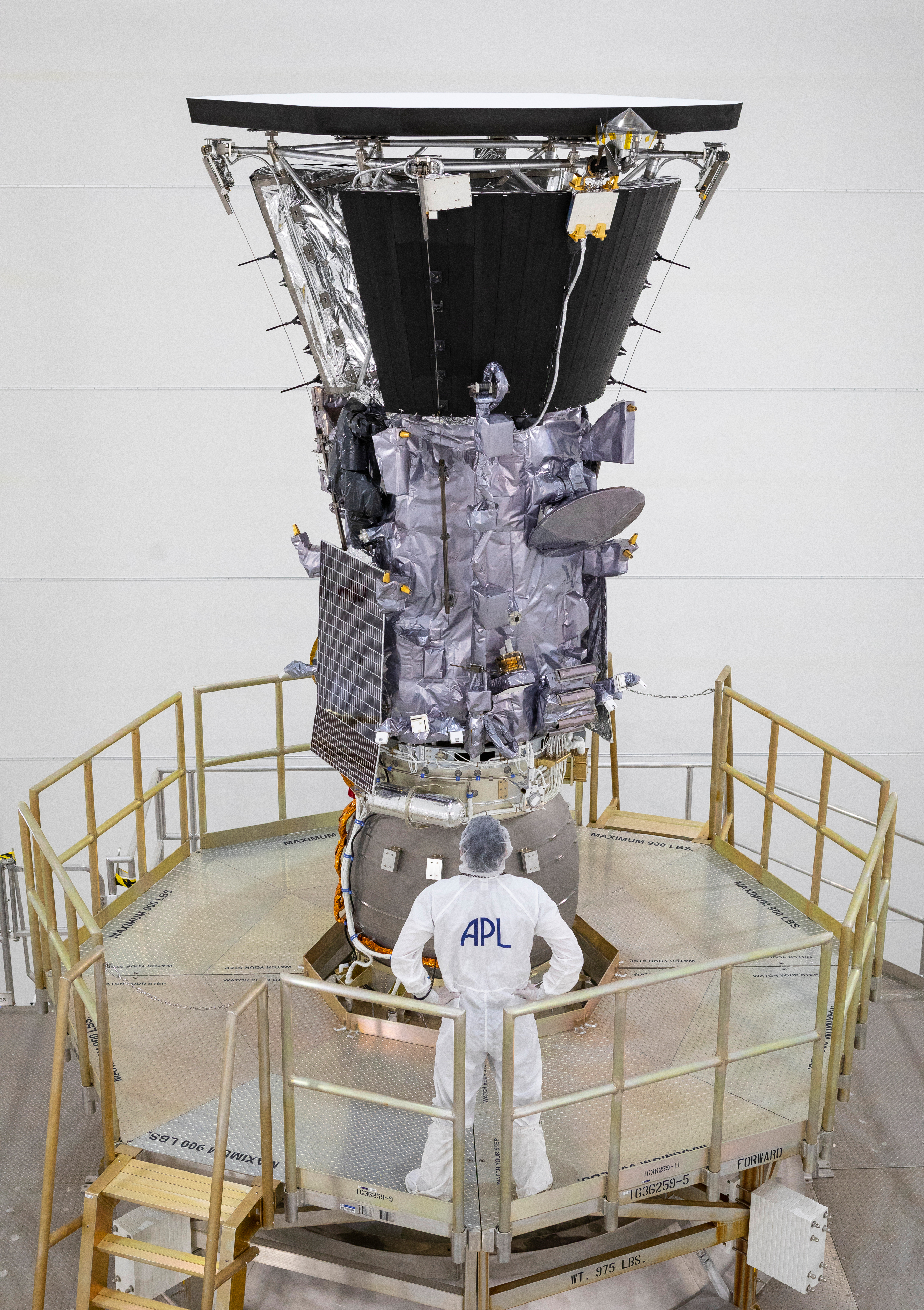
2018-08-08 05:56:29
NASA’s Parker Solar Probe is shown here mated to its third stage rocket motor on July 16, 2018, at Astrotech Space Operations in Titusville, Florida. In addition to using the largest operational launch vehicle, the Delta IV Heavy, Parker Solar Probe will use a third stage rocket to gain the speed needed to reach the Sun, which takes 55 times more energy than reaching Mars.
Credit: NASA/Johns Hopkins APL/Ed Whitman
Download (Hi-Res)
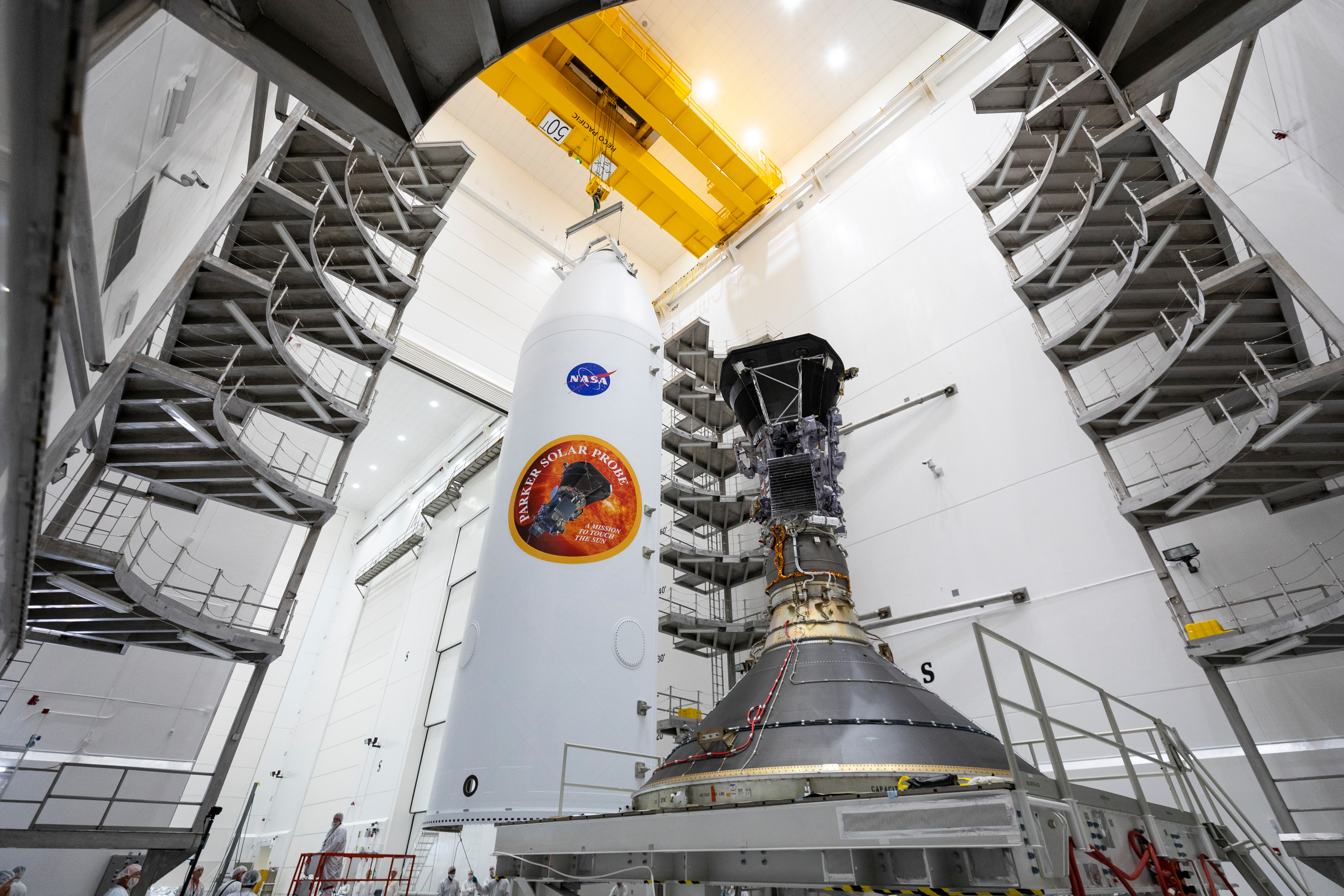
2018-08-08 05:56:29
Parker Solar Probe, shown on July 16, 2018, is mounted atop its third stage rocket motor with one half of the 62.7-foot tall fairing that will encapsulate it. After encapsulation, the spacecraft will move from Astrotech Space Operations in Titusville, Florida to Space Launch Complex 37 on Cape Canaveral Air Force Station, where it will be integrated onto its launch vehicle, a United Launch Alliance Delta IV Heavy.
Credit: NASA/Johns Hopkins APL/Ed Whitman
Download (Hi-Res)
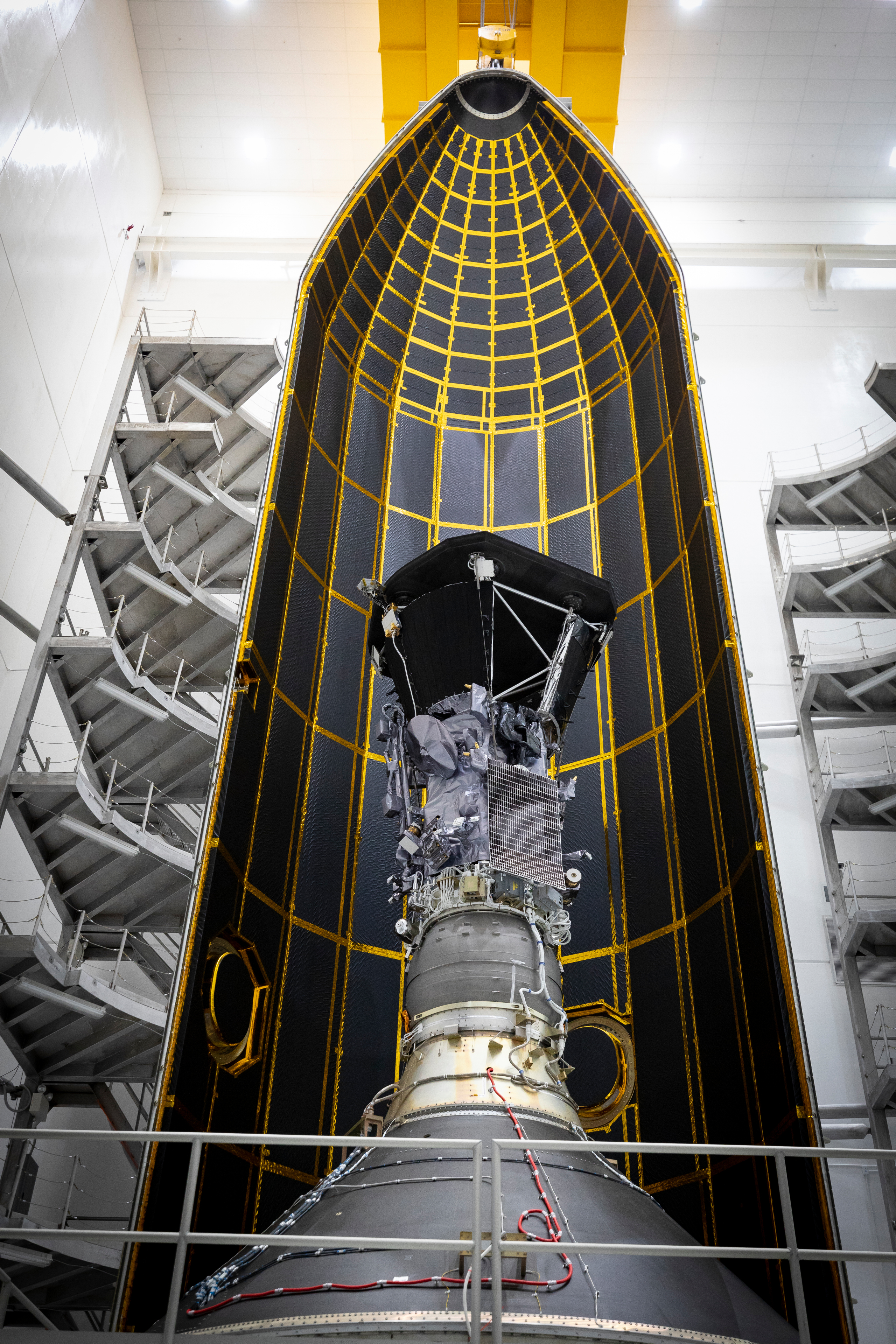
2018-08-08 05:56:29
Seen here inside one half of its 62.7-foot tall fairing, NASA’s Parker Solar Probe was encapsulated on July 16, 2018, in preparation for the move from Astrotech Space Operations in Titusville, Florida to Space Launch Complex 37 on Cape Canaveral Air Force Station, where it will be integrated onto its launch vehicle, a United Launch Alliance Delta IV Heavy.
Credit: NASA/Johns Hopkins APL/Ed Whitman
Download (Hi-Res)
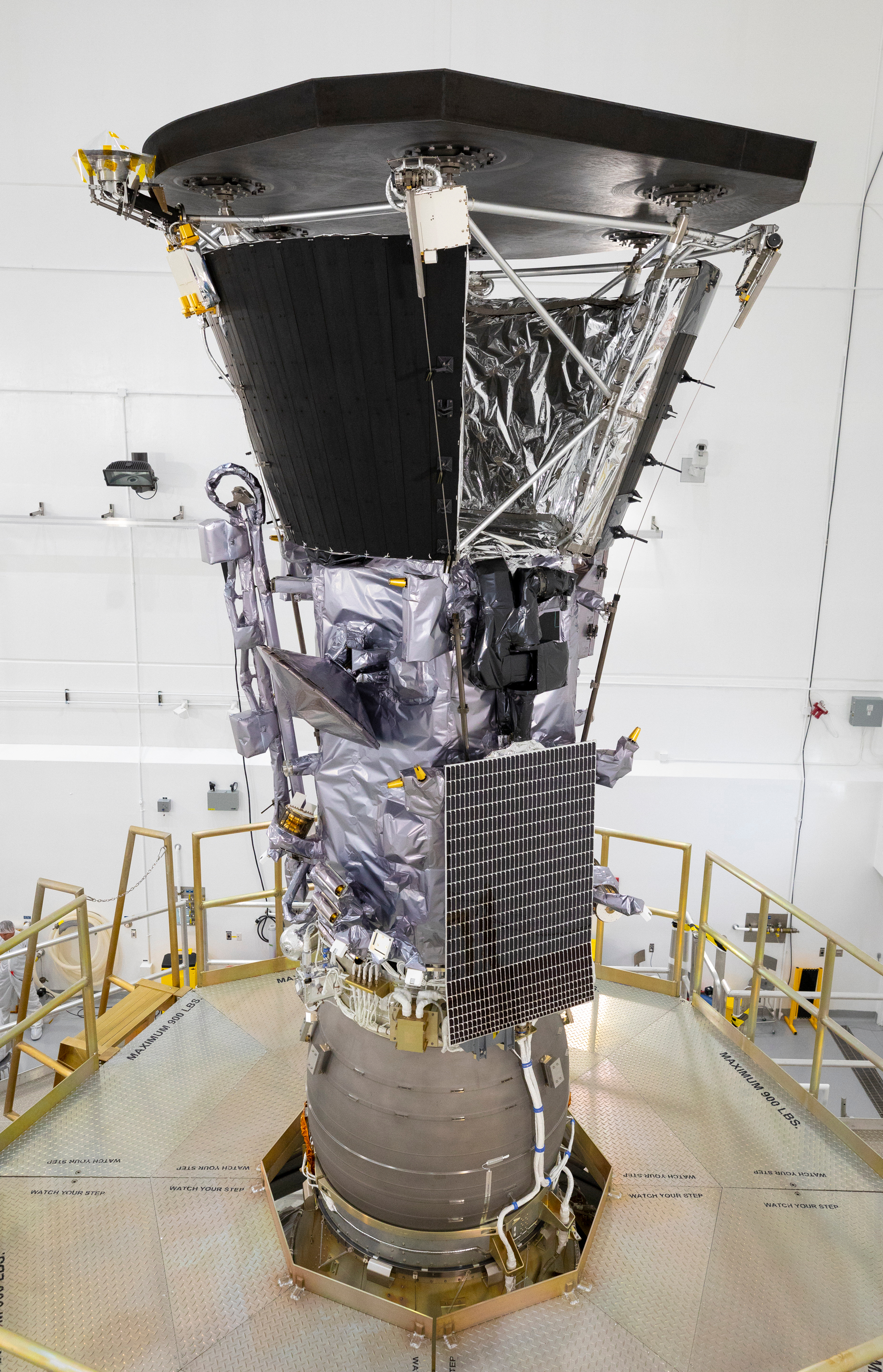
2018-08-02 14:42:26
Parker Solar Probe, attached to its third stage rocket motor.
Credit: NASA/Johns Hopkins APL/Ed Whitman
Download (Hi-Res)

2018-07-31 11:31:00
NASA’s Parker Solar Probe is lifted to the third stage rocket motor on July 11, 2018, at Astrotech Space Operations in Titusville, Florida. In addition to using the largest operational launch vehicle, the Delta IV Heavy, Parker Solar Probe will use a third stage rocket to gain the speed needed to reach the Sun, which takes 55 times more energy than reaching Mars.
Credit: NASA/Johns Hopkins APL/Ed Whitman
Download (Hi-Res)

2018-07-31 11:31:00
Parker Solar Probe is lowered toward the third stage rocket motor on July 11, 2018, at Astrotech Space Operations in Titusville, Florida. In addition to using the largest operational launch vehicle, the Delta IV Heavy, Parker Solar Probe will use a third stage rocket to gain the speed needed to reach the Sun, which takes 55 times more energy than reaching Mars.
Credit: NASA/Johns Hopkins APL/Ed Whitman
Download (Hi-Res)

2018-07-31 11:31:00
NASA’s Parker Solar Probe is mated to the third stage rocket motor on July 11, 2018, at Astrotech Space Operations in Titusville, Florida. In addition to using the largest operational launch vehicle, the Delta IV Heavy, Parker Solar Probe will use a third stage rocket to gain the speed needed to reach the Sun, which takes 55 times more energy than reaching Mars.
Credit: NASA/Johns Hopkins APL/Ed Whitman
Download (Hi-Res)

2018-07-31 11:31:00
NASA’s Parker Solar Probe is shown here mated to its third stage rocket motor on July 16, 2018, at Astrotech Space Operations in Titusville, Florida. In addition to using the largest operational launch vehicle, the Delta IV Heavy, Parker Solar Probe will use a third stage rocket to gain the speed needed to reach the Sun, which takes 55 times more energy than reaching Mars.
Credit: NASA/Johns Hopkins APL/Ed Whitman
Download (Hi-Res)

2018-07-31 11:31:00
NASA’s Parker Solar Probe is shown here mated to its third stage rocket motor on July 16, 2018, at Astrotech Space Operations in Titusville, Florida. In addition to using the largest operational launch vehicle, the Delta IV Heavy, Parker Solar Probe will use a third stage rocket to gain the speed needed to reach the Sun, which takes 55 times more energy than reaching Mars.
Credit: NASA/Johns Hopkins APL/Ed Whitman
Download (Hi-Res)

2018-07-31 11:31:00
Parker Solar Probe, shown on July 16, 2018, is mounted atop its third stage rocket motor with one half of the 62.7-foot tall fairing that will encapsulate it. After encapsulation, the spacecraft will move from Astrotech Space Operations in Titusville, Florida to Space Launch Complex 37 on Cape Canaveral Air Force Station, where it will be integrated onto its launch vehicle, a United Launch Alliance Delta IV Heavy.
Credit: NASA/Johns Hopkins APL/Ed Whitman
Download (Hi-Res)

2018-07-31 11:31:00
Seen here inside one half of its 62.7-foot tall fairing, NASA’s Parker Solar Probe was encapsulated on July 16, 2018, in preparation for the move from Astrotech Space Operations in Titusville, Florida to Space Launch Complex 37 on Cape Canaveral Air Force Station, where it will be integrated onto its launch vehicle, a United Launch Alliance Delta IV Heavy.
Credit: NASA/Johns Hopkins APL/Ed Whitman
Download (Hi-Res)
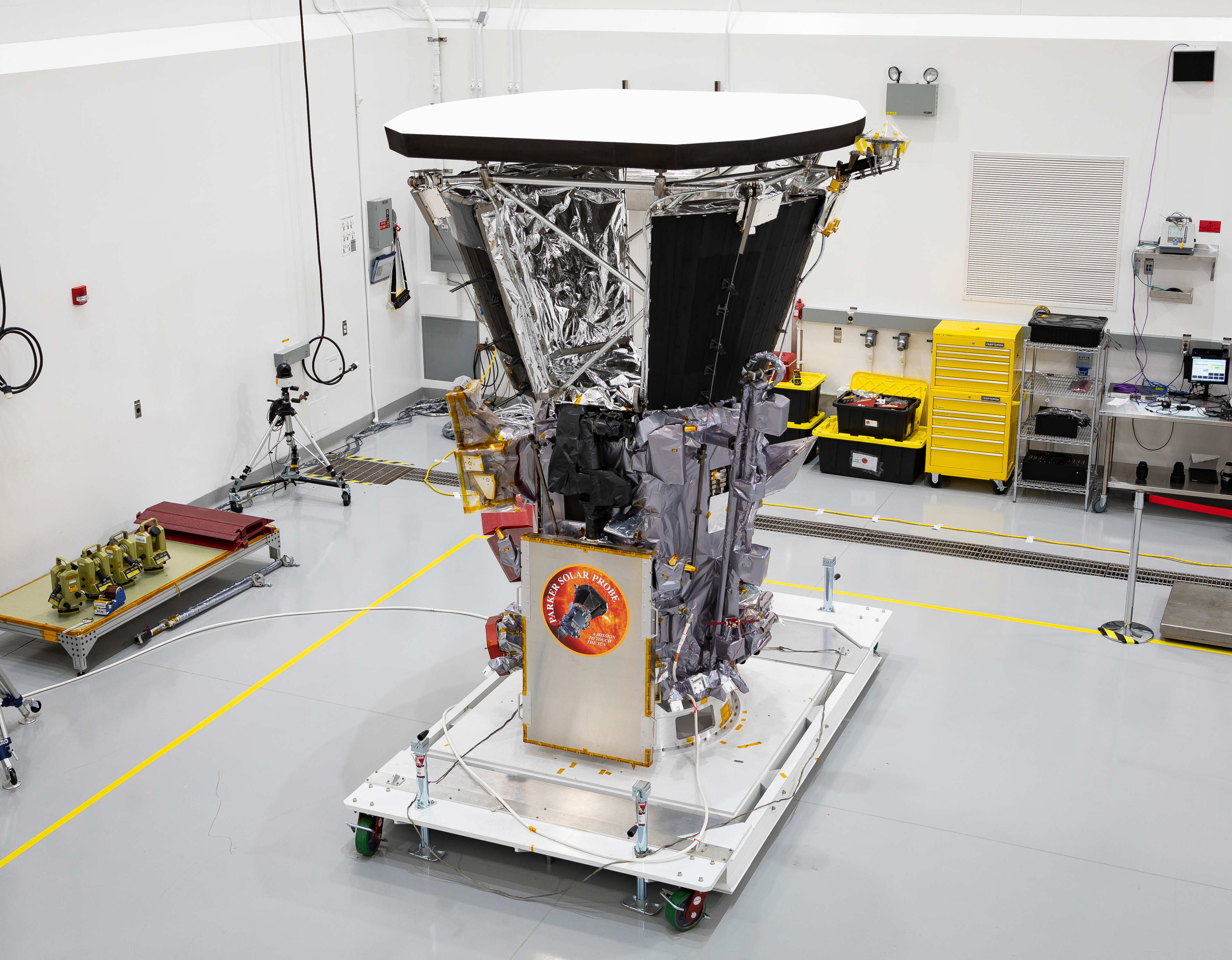
2018-07-27 10:51:12
Parker Solar Probe, as seen in a cleanroom at Astrotech Space Operations in Titusville, Florida on July 6, 2018
Credit: NASA/Johns Hopkins APL/Ed Whitman
Download (Hi-Res)

2018-07-24 16:26:37
Parker Solar Probe
Credit: NASA/Johns Hopkins APL/Steve Gribben
Download (Hi-Res)
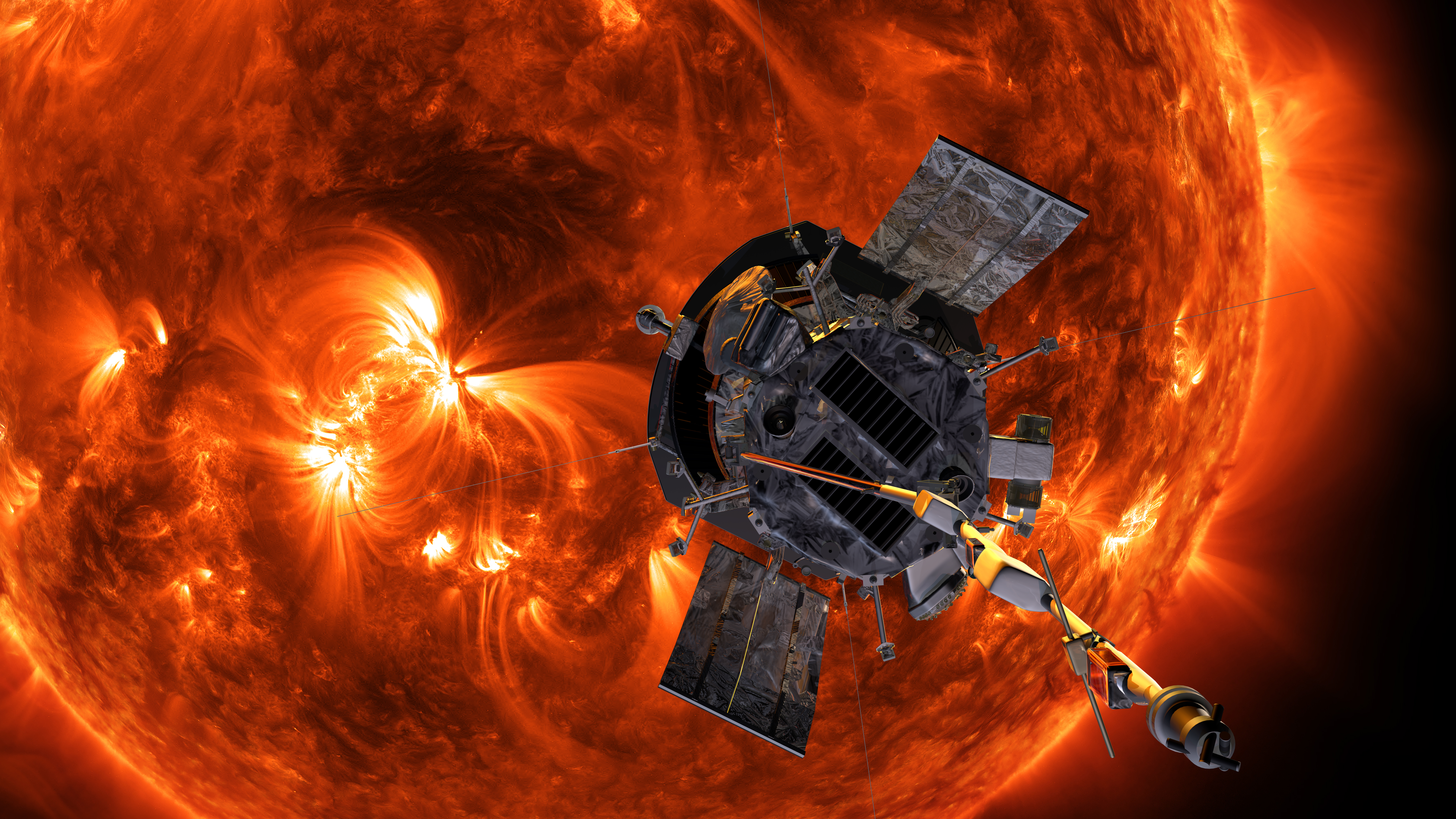
2018-07-20 08:44:33
Artist’s concept of the Parker Solar Probe spacecraft approaching the sun. Launching in 2018, Parker Solar Probe will provide new data on solar activity and make critical contributions to our ability to forecast major space-weather events that impact life on Earth.
Credit: NASA/Johns Hopkins APL/Steve Gribben
Download (Hi-Res)

2018-07-18 17:00:38
Parker Solar Probe, as seen in a cleanroom at Astrotech Space Operations in Titusville, Florida on July 6, 2018
Credit: NASA/Johns Hopkins APL/Ed Whitman
Download (Hi-Res)
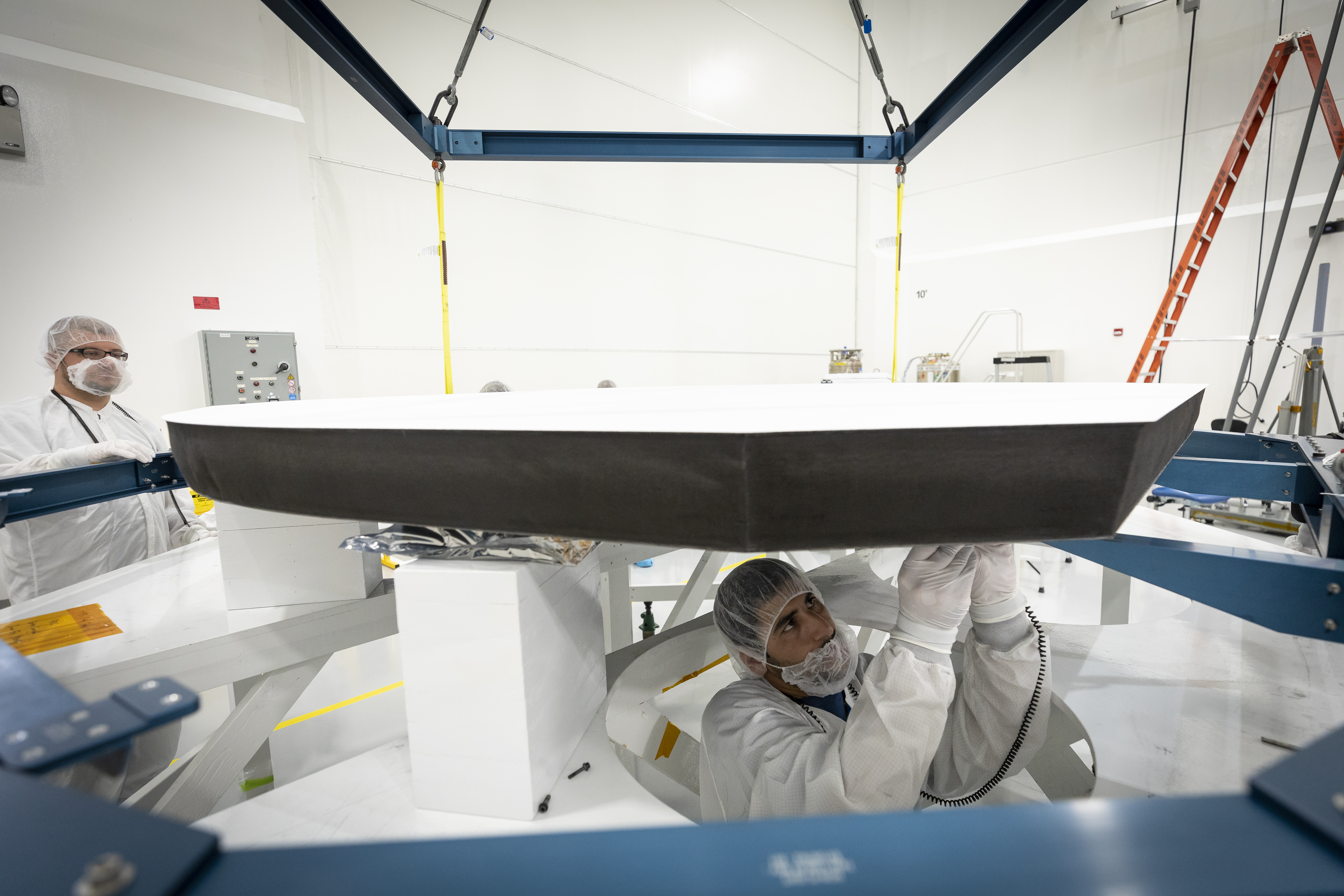
2018-07-05 12:44:33
Parker Solar Probe’s heat shield is made of two panels of superheated carbon-carbon composite sandwiching a lightweight 4.5-inch-thick carbon foam core. To reflect as much of the Sun’s energy away from the spacecraft as possible, the Sun-facing side of the heat shield is also sprayed with a specially formulated white coating.
Credit: NASA/Johns Hopkins APL/Ed Whitman
Download (Hi-Res)
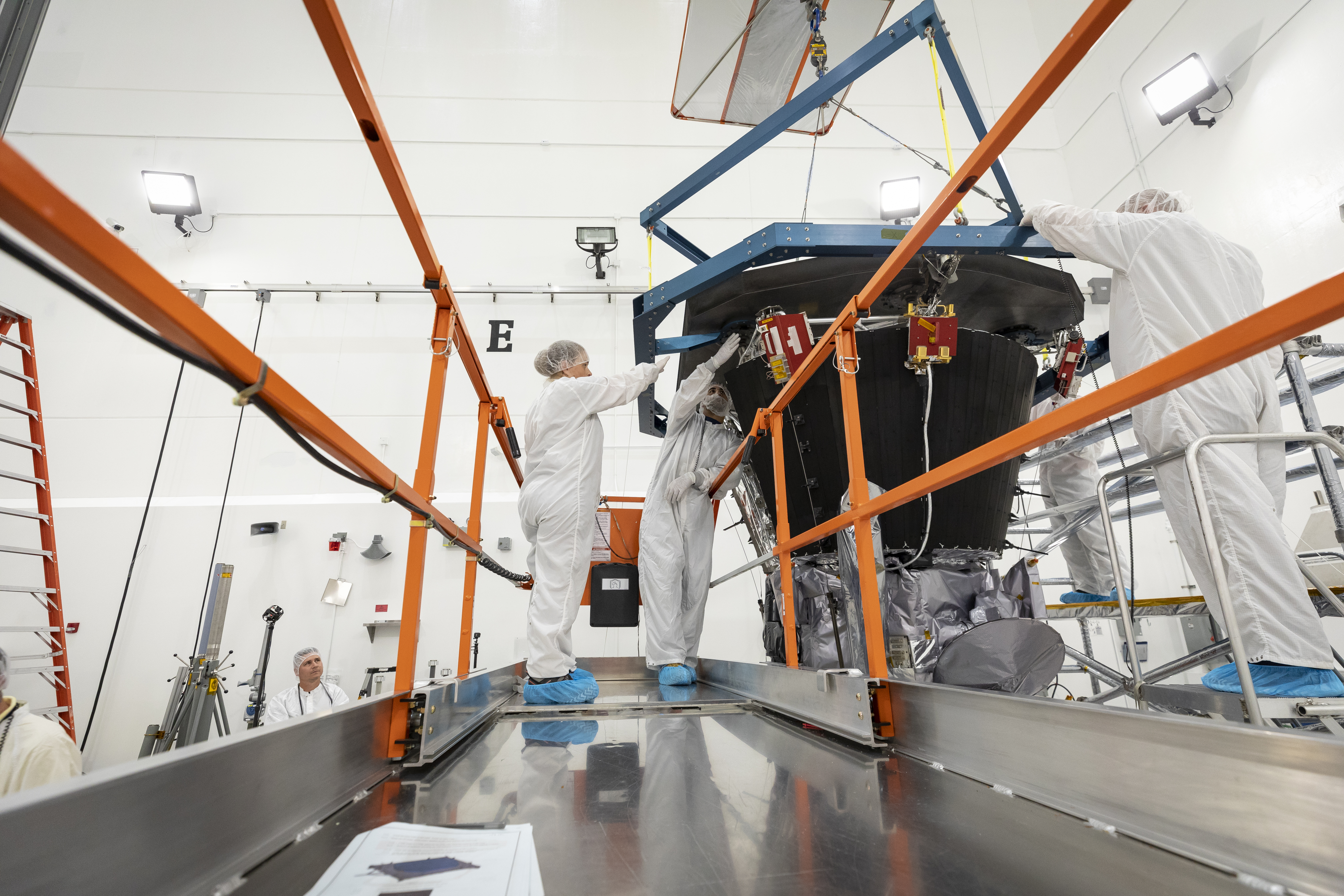
2018-07-05 12:44:33
Parker Solar Probe’s heat shield, called the Thermal Protection System, is lifted and realigned with the spacecraft’s truss as engineers from the Johns Hopkins Applied Physics Lab prepare to install the eight-foot-diameter heat shield on July 27, 2018.
Credit: NASA/Johns Hopkins APL/Ed Whitman
Download (Hi-Res)
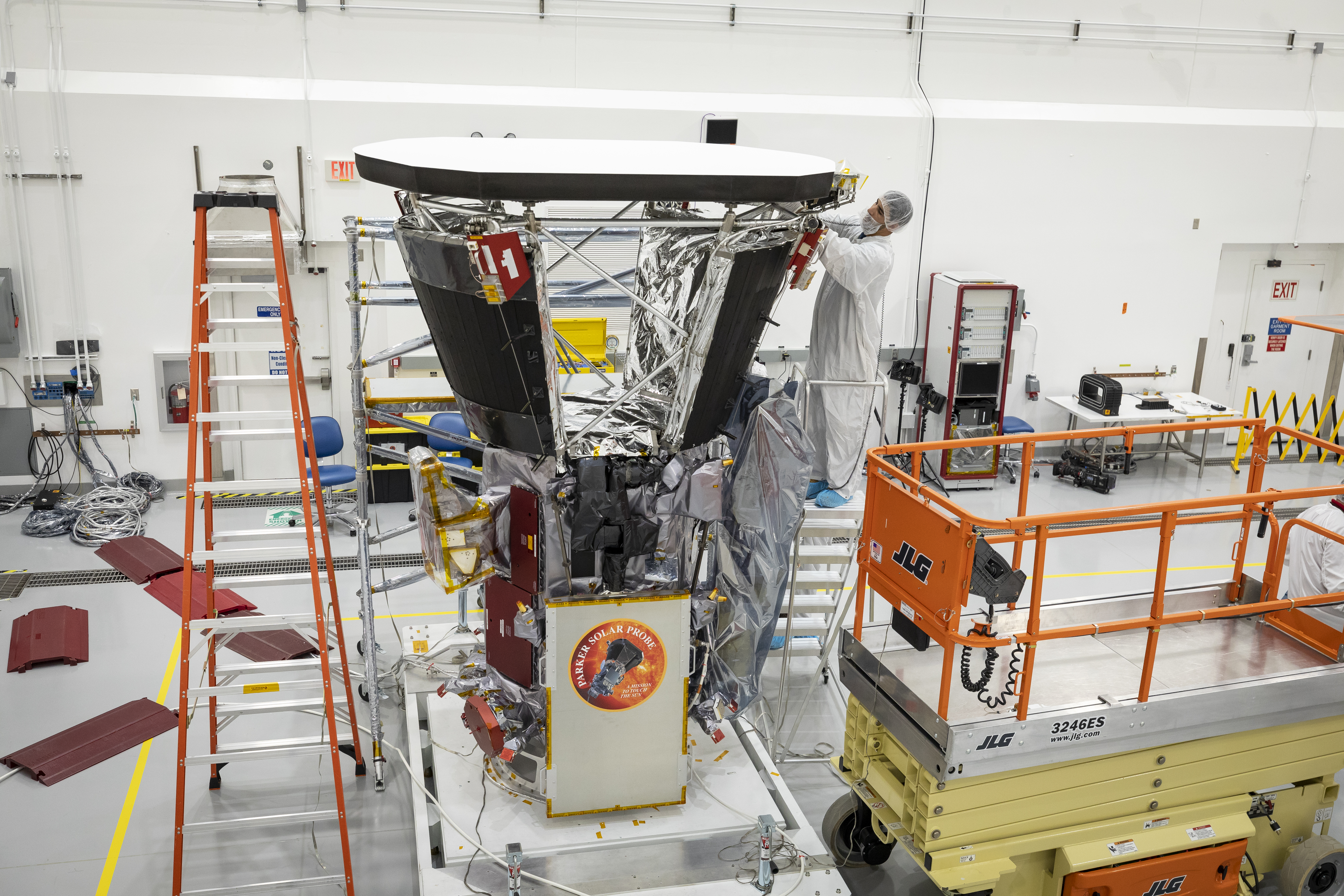
2018-07-05 12:44:33
The Thermal Protection System connects to the custom-welded truss on the Parker Solar Probe spacecraft at six points to minimize heat conduction.
Credit: NASA/Johns Hopkins APL/Ed Whitman
Download (Hi-Res)
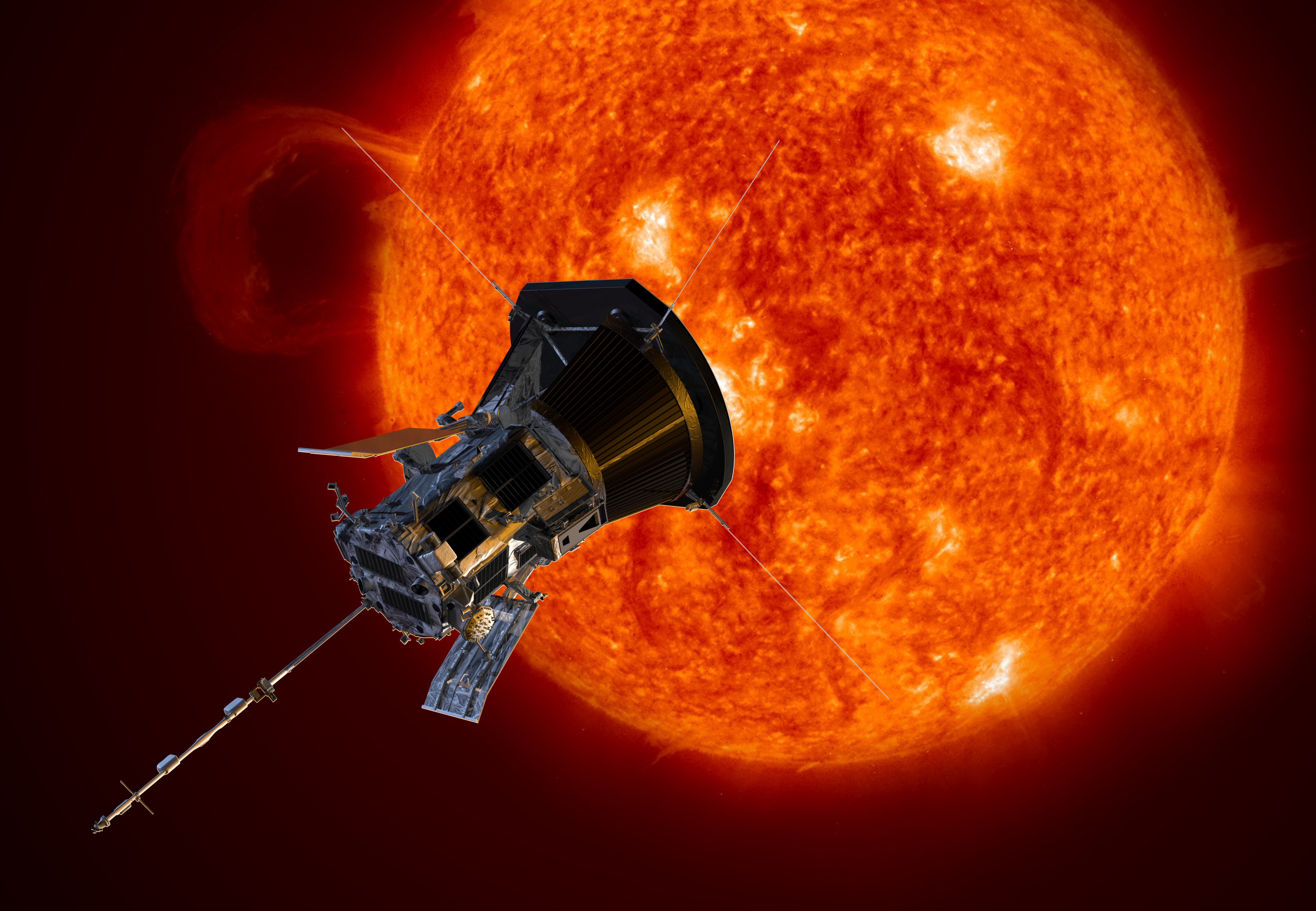
2018-06-15 15:21:37
Parker Solar Probe
Credit: NASA/Johns Hopkins APL/Steve Gribben
Download (Hi-Res)

2018-06-06 15:15:31
Members of the Parker Solar Probe team examine and align one of the two solar arrays that will power the spacecraft during its seven-year mission to the Sun. The solar arrays are cooled by a gallon of water that circulates through small tubes in the arrays and into large radiators at the top of the spacecraft.
Credit: NASA/Johns Hopkins APL/Ed Whitman
Download (Hi-Res)

2018-06-06 15:15:31
A member of the Parker Solar Probe team examines one of the spacecraft’s two solar arrays that will power the spacecraft during its seven-year mission to the Sun. The solar arrays are cooled by a gallon of water that circulates through small tubes in the arrays and into large radiators, visible at the top of the spacecraft.
Credit: NASA/Johns Hopkins APL/Ed Whitman
Download (Hi-Res)

2018-06-06 15:15:31
One of the two solar arrays that will power the Parker Solar Probe spacecraft during its seven-year mission to the Sun. The solar arrays are cooled by a gallon of water that circulates through tubes in the arrays and into large radiators, visible at the top of the spacecraft.
Credit: NASA/Johns Hopkins APL/Ed Whitman
Download (Hi-Res)

2018-06-06 15:15:31
After installation of the solar arrays on May 31, 2018, Parker Solar Probe team members use a laser to illuminate the solar cells and verify that they can create electricity and transfer it to the spacecraft.
Credit: NASA/Johns Hopkins APL/Ed Whitman
Download (Hi-Res)

2018-06-06 15:15:31
After installation of the solar arrays on May 31, 2018, Parker Solar Probe team members use a laser to illuminate the solar cells and verify that they can create electricity and transfer it to the spacecraft.
Credit: NASA/Johns Hopkins APL/Ed Whitman
Download (Hi-Res)
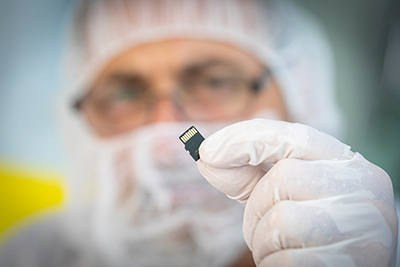
2018-05-21 11:15:59
A Parker Solar Probe team member from the Johns Hopkins Applied Physics Laboratory holds the memory card containing 1,137,202 names submitted by the public to travel to the Sun aboard the spacecraft. The card was installed on a plaque which was placed on the spacecraft on May 18, 2018, at Astrotech Space Operations in Titusville, Florida. The plaque dedicated the mission to Eugene Parker, who first theorized the existence of the solar wind. Parker Solar Probe is the first NASA mission to be named for a living person.
Credit: NASA/Johns Hopkins APL/Ed Whitman
Download (Hi-Res)
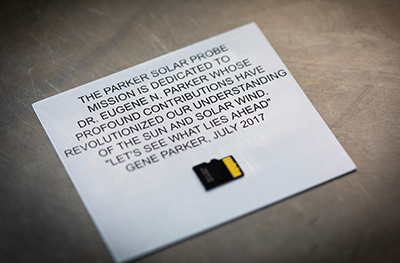
2018-05-21 11:15:59
A plaque dedicating NASA’s Parker Solar Probe mission to its namesake, Eugene Parker, who first theorized the existence of the solar wind, was installed onto the spacecraft on May 18, 2018, at Astrotech Space Operations in Titusville, Florida. The memory card at bottom of the plaque contains 1,137,202 names submitted by the public to travel to the Sun aboard the spacecraft, along with photos of Parker and a copy of his groundbreaking 1958 scientific paper. Parker Solar Probe is the first NASA mission to be named for a living person.
Credit: NASA/Johns Hopkins APL/Ed Whitman
Download (Hi-Res)
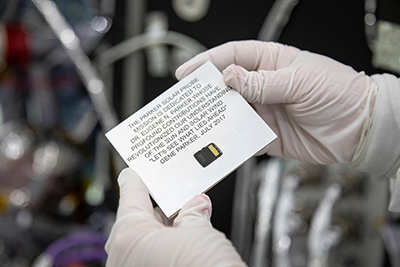
2018-05-21 11:15:59
A plaque dedicating NASA’s Parker Solar Probe mission to its namesake, Eugene Parker, who first theorized the existence of the solar wind, was installed onto the spacecraft on May 18, 2018, at Astrotech Space Operations in Titusville, Florida. The memory card at bottom of the plaque contains 1,137,202 names submitted by the public to travel to the Sun aboard the spacecraft, along with photos of Parker and a copy of his groundbreaking 1958 scientific paper. Parker Solar Probe is the first NASA mission to be named for a living person.
Credit: NASA/Johns Hopkins APL/Ed Whitman
Download (Hi-Res)
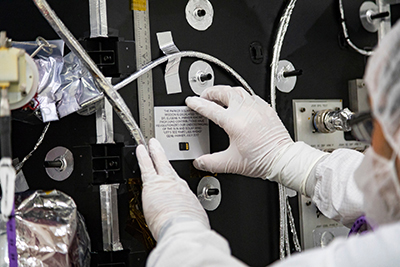
2018-05-21 11:15:59
A plaque dedicating NASA’s Parker Solar Probe mission to its namesake, Eugene Parker, who first theorized the existence of the solar wind, was installed onto the spacecraft on May 18, 2018, at Astrotech Space Operations in Titusville, Florida. The memory card at bottom of the plaque contains 1,137,202 names submitted by the public to travel to the Sun aboard the spacecraft, along with photos of Parker and a copy of his groundbreaking 1958 scientific paper. Parker Solar Probe is the first NASA mission to be named for a living person.
Credit: NASA/Johns Hopkins APL/Ed Whitman
Download (Hi-Res)
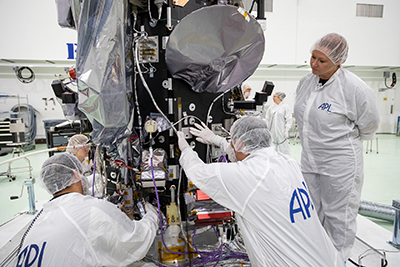
2018-05-21 11:15:59
A plaque dedicating NASA’s Parker Solar Probe mission to its namesake, Eugene Parker, who first theorized the existence of the solar wind, was installed onto the spacecraft on May 18, 2018, at Astrotech Space Operations in Titusville, Florida. The memory card at bottom of the plaque contains 1,137,202 names submitted by the public to travel to the Sun aboard the spacecraft, along with photos of Parker and a copy of his groundbreaking 1958 scientific paper. The plaque is mounted below the high-gain antenna (the round object with gray covering), which the spacecraft will use to transmit data back to Earth. Parker Solar Probe is the first NASA mission to be named for a living person.
Credit: NASA/Johns Hopkins APL/Ed Whitman
Download (Hi-Res)
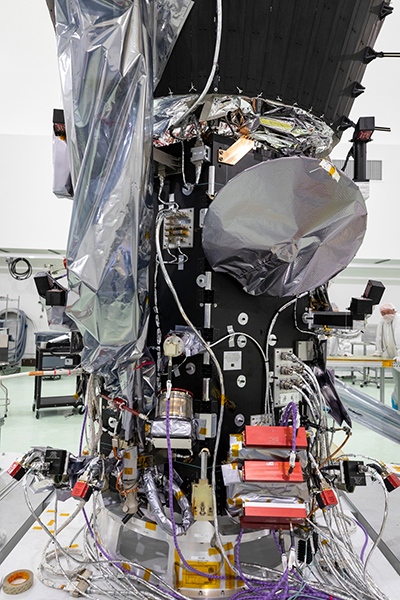
2018-05-21 11:15:59
A plaque dedicating NASA’s Parker Solar Probe mission to its namesake, Eugene Parker, who first theorized the existence of the solar wind, was installed onto the spacecraft on May 18, 2018, at Astrotech Space Operations in Titusville, Florida. The memory card at bottom contains 1,137,202 names submitted by the public to travel to the Sun aboard the spacecraft, along with photos of Parker and a copy of his groundbreaking 1958 scientific paper. The plaque is mounted below the high-gain antenna (the round object with gray covering), which the spacecraft will use to transmit data back to Earth. Parker Solar Probe is the first NASA mission to be named for a living person.
Credit: NASA/Johns Hopkins APL/Ed Whitman
Download (Hi-Res)

2018-05-07 12:03:00
NASA’s Parker Solar Probe is powered by two solar arrays, shown here on May 2, 2018, at Astrotech Space Operations in Titusville, Florida.
Credit: NASA/Johns Hopkins APL/Ed Whitman
Download (Hi-Res)
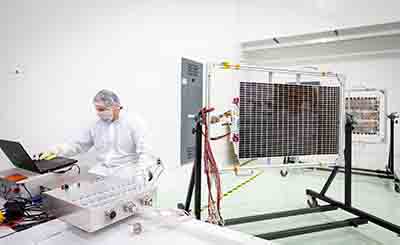
2018-05-07 12:03:00
Andrew Gerger, an engineer from the Johns Hopkins Applied Physics Laboratory, prepares to conduct an inspection of one of the solar arrays from NASA’s Parker Solar Probe on May 2, 2018, at Astrotech Space Operations in Titusville, Florida.
Credit: NASA/Johns Hopkins APL/Ed Whitman
Download (Hi-Res)

2018-05-07 12:03:00
Andrew Gerger of the Johns Hopkins Applied Physics Laboratory inspects one of NASA’s Parker Solar Probe’s two solar panels by passing current through the array, which causes it to glow red and allows him to examine each individual solar cell. The testing occurred on May 2, 2018, at Astrotech Space Operations in Titusville, Florida.
Credit: NASA/Johns Hopkins APL/Ed Whitman
Download (Hi-Res)

2018-05-07 12:03:00
Andrew Gerger of the Johns Hopkins Applied Physics Laboratory and Rick Stall of Newforge Technologies check and adjust a purple laser using a replica of a solar array wing on May 3, 2018. Later, when the solar arrays are attached to the spacecraft, the laser will be used to illuminate each string of cells on the array to confirm the string is connected and will provide power to the spacecraft.
Credit: NASA/Johns Hopkins APL/Ed Whitman
Download (Hi-Res)

2018-04-28 15:43:26
Participants received a certificate after they confirmed their submission.
Credit: NASA/Johns Hopkins APL
Download (Hi-Res)
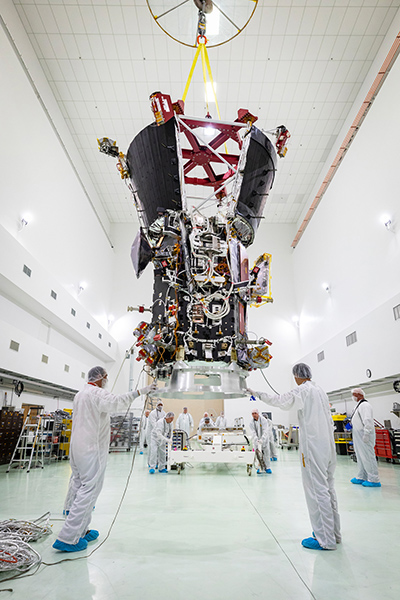
2018-04-27 14:00:57
Credit: NASA/Johns Hopkins APL/Ed Whitman
Download (Hi-Res)
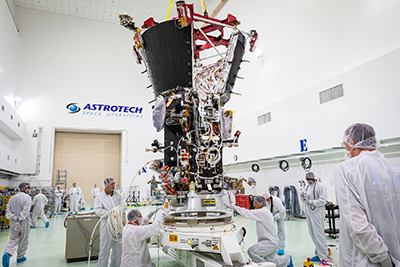
2018-04-27 14:00:57
Credit: NASA/Johns Hopkins APL/Ed Whitman
Download (Hi-Res)
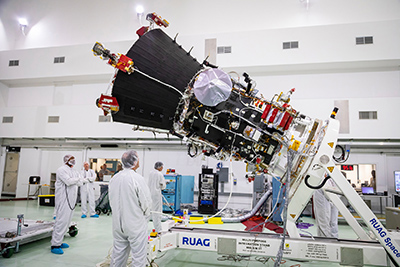
2018-04-27 14:00:57
Credit: NASA/Johns Hopkins APL/Ed Whitman
Download (Hi-Res)
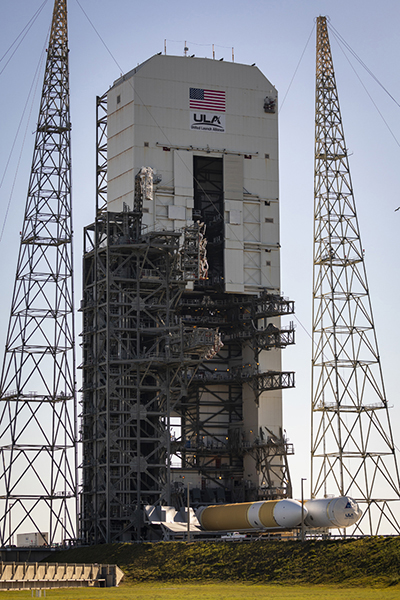
2018-04-26 14:16:13
The United Launch Alliance Delta IV Heavy that will carry Parker Solar Probe is raised at Launch Complex 37 at Cape Canaveral Air Force Station in Florida on April 17, 2018.
Credit: NASA/Johns Hopkins APL/Ed Whitman
Download (Hi-Res)
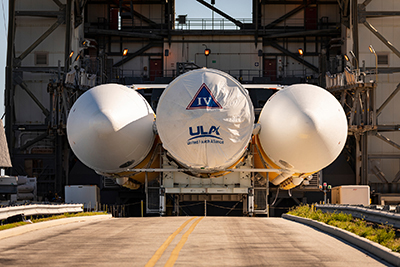
2018-04-26 14:16:13
The United Launch Alliance Delta IV Heavy that will carry Parker Solar Probe is raised at Launch Complex 37 at Cape Canaveral Air Force Station in Florida on April 17, 2018.
Credit: NASA/Johns Hopkins APL/Ed Whitman
Download (Hi-Res)
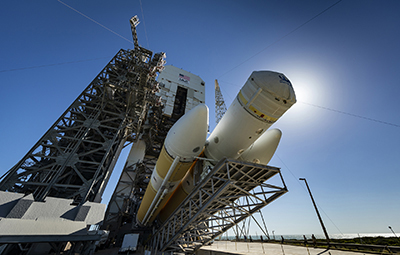
2018-04-26 14:16:13
The United Launch Alliance Delta IV Heavy that will carry Parker Solar Probe is raised at Launch Complex 37 at Cape Canaveral Air Force Station in Florida on April 17, 2018.
Credit: NASA/Johns Hopkins APL/Ed Whitman
Download (Hi-Res)
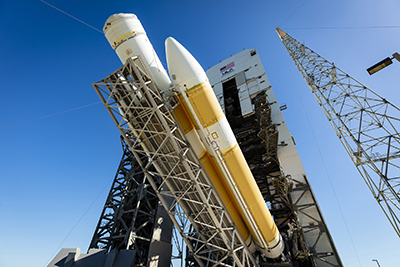
2018-04-26 14:16:13
The United Launch Alliance Delta IV Heavy that will carry Parker Solar Probe is raised at Launch Complex 37 at Cape Canaveral Air Force Station in Florida on April 17, 2018.
Credit: NASA/Johns Hopkins APL/Ed Whitman
Download (Hi-Res)
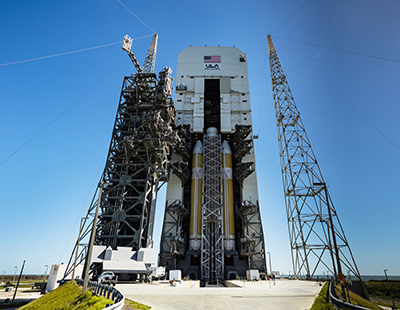
2018-04-26 14:16:13
The United Launch Alliance Delta IV Heavy that will carry Parker Solar Probe is raised at Launch Complex 37 at Cape Canaveral Air Force Station in Florida on April 17, 2018.
Credit: NASA/Johns Hopkins APL/Ed Whitman
Download (Hi-Res)
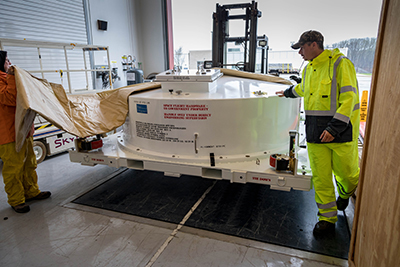
2018-04-24 14:22:33
Parker Solar Probe’s heat shield, encased in a shipping container, is covered up for a rainy day of travel from the Johns Hopkins Applied Physics Laboratory in Laurel, Maryland, to Astrotech Space Operations in Titusville, Florida, on April 16, 2018.
Credit: NASA/Johns Hopkins APL/Ben Wong
Download (Hi-Res)
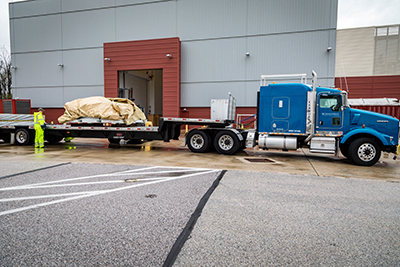
2018-04-24 14:22:33
Parker Solar Probe’s heat shield – called the Thermal Protection System – departs from the Johns Hopkins Applied Physics Laboratory in Laurel, Maryland, on April 16, 2018. The heat shield traveled to Astrotech Space Operations in Titusville, Florida, on the flatbed of a truck, safely protected from the elements in its metal shipping container.
Credit: NASA/Johns Hopkins APL/Ben Wong
Download (Hi-Res)
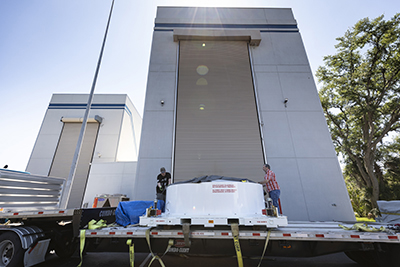
2018-04-24 14:22:33
Parker Solar Probe’s heat shield arrives in Florida on April 18, 2018, and is unloaded at Astrotech Space Operations in Titusville, Florida, where it will eventually be reattached to the Parker Solar Probe spacecraft before launch in late July.
Credit: NASA/Johns Hopkins APL/Ed Whitman
Download (Hi-Res)
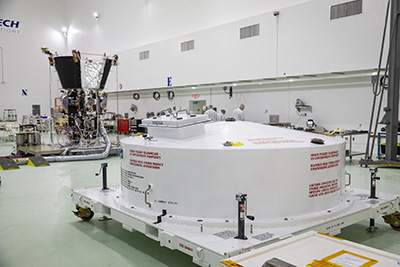
2018-04-24 14:22:33
Parker Solar Probe’s heat shield – encased in its metal shipping container – is reunited with the spacecraft – seen in the background – at Astrotech Space Operations in Titusville, Florida, on April 18, 2018.
Credit: NASA/Johns Hopkins APL/Ed Whitman
Download (Hi-Res)
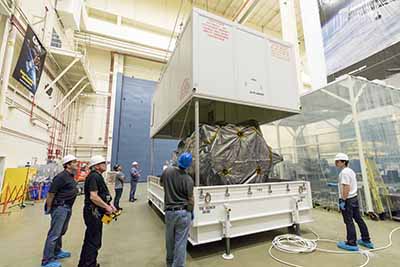
2018-04-06 09:30:18
Parker Solar Probe – wrapped in protective plastic – is shown on March 29, 2018, as the lid is lowered onto its shipping container at NASA’s Goddard Space Flight Center in Greenbelt, Maryland. The spacecraft is shipped on its side to allow for more easy transport and to avoid height-related obstacles such as bridges. From Goddard, the probe was taken by truck to Joint Base Andrews in Maryland and flown to Florida aboard a United States Air Force C-17.
Credit: NASA/Johns Hopkins APL/Ed Whitman
Download (Hi-Res)
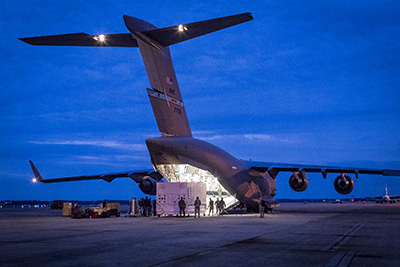
2018-04-06 09:30:18
Inside its protective shipping container, NASA’s Parker Solar Probe is loaded into a C-17 from the United States Air Force’s 436th Airlift Wing at Joint Base Andrews in Maryland in the early morning of April 3, 2018. From Joint Base Andrews, the spacecraft was flown to Titusville, Florida, where it was taken to Astrotech Space Operations for pre-launch testing and preparations.
Credit: NASA/Johns Hopkins APL/Jeffrey Fiske
Download (Hi-Res)
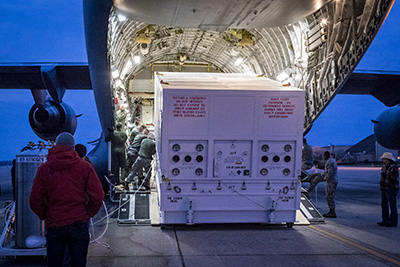
2018-04-06 09:30:18
NASA’s Parker Solar Probe, inside a protective shipping container, is loaded into a C-17 from the United States Air Force’s 436th Airlift Wing at Joint Base Andrews in Maryland in the early morning of April 3, 2018. From Joint Base Andrews, the spacecraft was flown to Titusville, Florida, where it was taken to Astrotech Space Operations for pre-launch testing and preparations.
Credit: NASA/Johns Hopkins APL/Jeffrey Fiske
Download (Hi-Res)
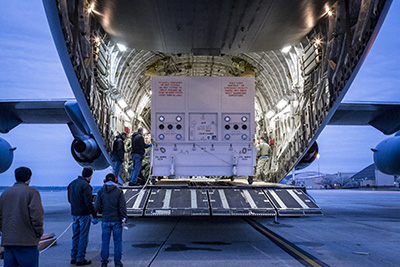
2018-04-06 09:30:18
Sitting inside a custom-made protective shipping container, NASA’s Parker Solar Probe is loaded into a C-17 from the United States Air Force’s 436th Airlift Wing at Joint Base Andrews in Maryland in the early morning of April 3, 2018. From Joint Base Andrews, the spacecraft was flown to Titusville, Florida, where it was taken to Astrotech Space Operations for pre-launch testing and preparations.
Credit: NASA/Johns Hopkins APL/Jeffrey Fiske
Download (Hi-Res)

2018-04-06 09:30:18
A C-17 from the United States Air Force’s 436th Airlift Wing, carrying NASA’s Parker Solar Probe, approaches for landing at Space Coast Regional Airport in Titusville, Florida, on the morning of April 3, 2018. After landing, the spacecraft was taken to Astrotech Space Operations for pre-launch testing and preparations.
Credit: NASA/Johns Hopkins APL/Ed Whitman
Download (Hi-Res)

2018-04-06 09:30:18
A C-17 from the United States Air Force’s 436th Airlift Wing, carrying NASA’s Parker Solar Probe, lands at 10:40 a.m. EDT at Space Coast Regional Airport in Titusville, Florida, on the morning of April 3, 2018. After landing, the spacecraft was unloaded and taken to Astrotech Space Operations, also in Titusville, for pre-launch testing and preparations.
Credit: NASA/Johns Hopkins APL/Ed Whitman
Download (Hi-Res)

2018-04-06 09:30:18
The C-17 from the United States Air Force’s 436th Airlift Wing carrying NASA’s Parker Solar Probe taxis after landing at Space Coast Regional Airport in Titusville, Florida, on the morning of April 3, 2018. After landing, the spacecraft was taken to Astrotech Space Operations, also in Titusville, for pre-launch testing and preparations.
Credit: NASA/Johns Hopkins APL/Ed Whitman
Download (Hi-Res)

2018-04-06 09:30:18
After landing at Space Coast Regional Airport in Titusville, Florida, on the morning of April 3, 2018, equipment is unloaded from the C-17 – from the United States Air Force’s 436th Airlift Wing – carrying NASA’s Parker Solar Probe. The spacecraft was later taken to Astrotech Space Operations, also in Titusville, for pre-launch testing and preparations.
Credit: NASA/Johns Hopkins APL/Ed Whitman
Download (Hi-Res)

2018-04-06 09:30:18
The custom shipping container holding NASA’s Parker Solar Probe is prepared for unloading from the C-17 of the United States Air Force’s 436th Airlift Wing after landing at Space Coast Regional Airport in Titusville, Florida, on the morning of April 3, 2018. The spacecraft was then taken to Astrotech Space Operations, also in Titusville, for pre-launch testing and preparations.
Credit: NASA/Johns Hopkins APL/Ed Whitman
Download (Hi-Res)

2018-04-06 09:30:18
Securely packed in its custom transport container, NASA’s Parker Solar Probe is unloaded from the C-17 of the United States Air Force’s 436th Airlift Wing after landing at Space Coast Regional Airport in Titusville, Florida, on the morning of April 3, 2018. After unloading, the spacecraft was taken to Astrotech Space Operations, also in Titusville, for pre-launch testing and preparations.
Credit: NASA/Johns Hopkins APL/Ed Whitman
Download (Hi-Res)

2018-04-06 09:30:18
NASA’s Parker Solar Probe is unloaded by forklift from the C-17 of the United States Air Force’s 436th Airlift Wing after arriving at Space Coast Regional Airport in Titusville, Florida, on the morning of April 3, 2018. The spacecraft was taken to Astrotech Space Operations, also in Titusville, for pre-launch testing and preparations.
Credit: NASA/Johns Hopkins APL/Ed Whitman
Download (Hi-Res)

2018-04-06 09:30:18
NASA’s Parker Solar Probe is loaded aboard a truck after being flown to Space Coast Regional Airport in Titusville, Florida, on the morning of April 3, 2018, by a C-17 from the United States Air Force’s 436th Airlift Wing. The spacecraft was taken to Astrotech Space Operations, also in Titusville, for pre-launch testing and preparations.
Credit: NASA/Johns Hopkins APL/Ed Whitman
Download (Hi-Res)

2018-04-06 09:30:18
NASA’s Parker Solar Probe is carefully moved into a high-bay clean room facility at Astrotech Space Operations in Titusville, Florida, for pre-launch testing and preparations. On April 3, 2018, the spacecraft was transported from NASA’s Goddard Space Flight Center in Greenbelt, Maryland, to Joint Base Andrews by truck, then by a United States Air Force C-17 to Titusville.
Credit: NASA/Johns Hopkins APL/Ed Whitman
Download (Hi-Res)

2018-04-06 09:30:18
Protected by special plastic sheeting, NASA’s Parker Solar Probe is wheeled into a clean room at Astrotech Space Operations in Titusville, Florida, for pre-launch testing and preparations. On April 3, 2018, the spacecraft was transported from NASA’s Goddard Space Flight Center in Greenbelt, Maryland, to Joint Base Andrews by truck, then by a United States Air Force C-17 to Titusville.
Credit: NASA/Johns Hopkins APL/Ed Whitman
Download (Hi-Res)

2018-04-06 09:30:18
NASA’s Parker Solar Probe is wheeled into position in a clean room at Astrotech Space Operations in Titusville, Florida, for pre-launch testing and preparations. On April 3, 2018, the spacecraft was transported from NASA’s Goddard Space Flight Center in Greenbelt, Maryland, to Joint Base Andrews by truck, then by a United States Air Force C-17 to Titusville.
Credit: NASA/Johns Hopkins APL/Ed Whitman
Download (Hi-Res)
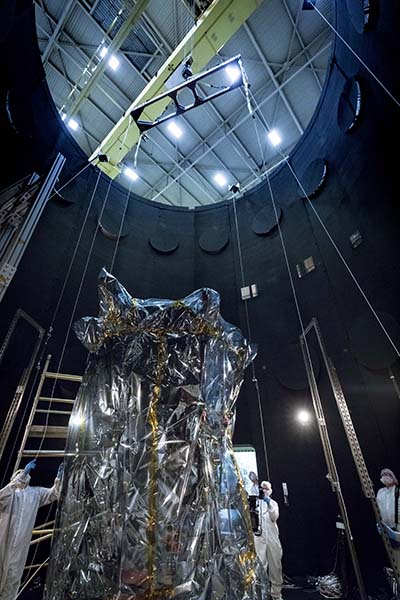
2018-03-26 15:35:00
Members of the Parker Solar Probe team prepare the spacecraft to be lifted from the Space Environment Simulator at NASA’s Goddard Space Flight Center in Greenbelt, Maryland, on March 24, 2018. The spacecraft has spent eight weeks undergoing successful testing in the Space Environment Simulator to ensure that the mission will operate as planned during its seven-year long exploration of the Sun.
Credit: NASA/Johns Hopkins APL/Ed Whitman
Download (Hi-Res)
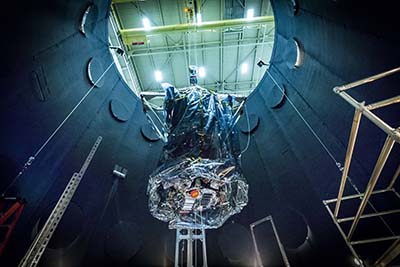
2018-03-26 15:35:00
NASA’s Parker Solar Probe is carefully lifted from the Space Environment Simulator at NASA’s Goddard Space Flight Center in Greenbelt, Maryland, on March 24, 2018. The probe has spent eight weeks undergoing space environment testing, including hot and cold cycling tests that mimic the temperature changes the spacecraft will experience during its seven-year long exploration of the Sun.
Credit: NASA/Johns Hopkins APL/Ed Whitman
Download (Hi-Res)
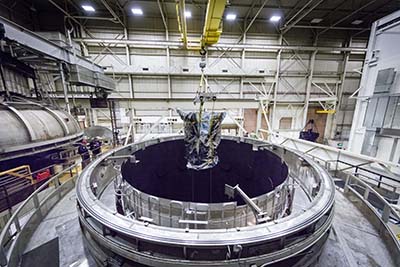
2018-03-26 15:35:00
Parker Solar Probe is lifted out of the Space Environment Simulator at NASA’s Goddard Space Flight Center in Greenbelt, Maryland, on March 24, 2018. The spacecraft has spent eight weeks undergoing space environment testing in the thermal vacuum chamber. After about seven more days of testing outside the chamber, Parker Solar Probe will travel to Florida for a scheduled launch on July 31, 2018, from NASA’s Kennedy Space Center in Cape Canaveral.
Credit: NASA/Johns Hopkins APL/Ed Whitman
Download (Hi-Res)
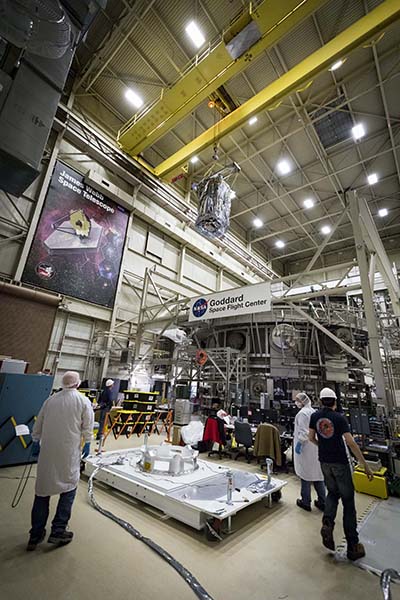
2018-03-26 15:35:00
Members of the Parker Solar Probe team from the Johns Hopkins Applied Physics Lab in Laurel, Maryland, monitor the progress of the spacecraft as it is lifted from the Space Environment Simulator at NASA’s Goddard Space Flight Center in Greenbelt, Maryland, and lowered to the custom platform visible in the foreground. The spacecraft has spent eight weeks undergoing space environment testing in the thermal vacuum chamber before being lifted out on March 24, 2018.
Credit: NASA/Johns Hopkins APL/Ed Whitman
Download (Hi-Res)
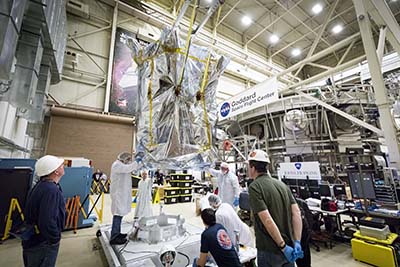
2018-03-26 15:35:00
Members of the Parker Solar Probe team from the Johns Hopkins Applied Physics Lab and NASA’s Goddard Space Flight Center carefully lower the spacecraft onto a specially built platform on March 24, 2018. The probe has spent eight weeks undergoing space environment testing, including hot and cold cycling tests that mimic the temperature changes the spacecraft will experience during its seven-year long exploration of the Sun.
Credit: NASA/Johns Hopkins APL/Ed Whitman
Download (Hi-Res)
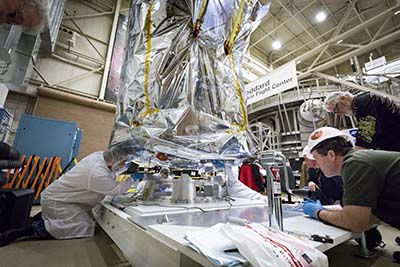
2018-03-26 15:35:00
Parker Solar Probe team members connect the spacecraft to a specially built platform after removing the probe from the Space Environment Simulator at NASA’s Goddard Space Flight Center in Greenbelt, Maryland, on March 24, 2018. The probe will undergo about seven more days of testing outside the chamber, then travel to Florida for a scheduled launch on July 31, 2018, from NASA’s Kennedy Space Center in Cape Canaveral.
Credit: NASA/Johns Hopkins APL/Ed Whitman
Download (Hi-Res)
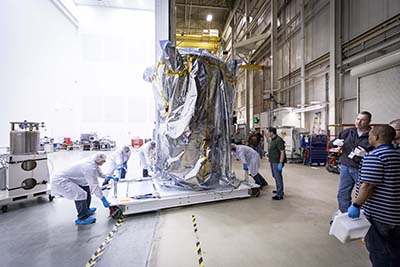
2018-03-26 15:35:00
NASA’s Parker Solar Probe is wheeled into a clean room at NASA’s Goddard Space Flight Center in Greenbelt, Maryland, on March 24, 2018, after successfully completing space environment testing to verify the spacecraft is ready for operations in space. The probe will undergo about seven more days of testing outside the chamber, then travel to Florida for a scheduled launch on July 31, 2018, from NASA’s Kennedy Space Center in Cape Canaveral.
Credit: NASA/Johns Hopkins APL/Ed Whitman
Download (Hi-Res)
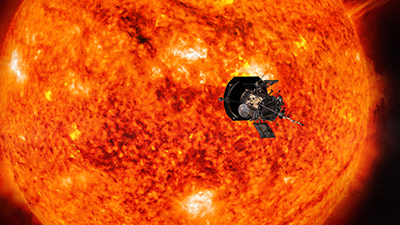
2018-03-06 12:30:07
Illustration of the Parker Solar Probe spacecraft approaching the Sun.
Credit: NASA/Johns Hopkins APL/Steve Gribben
Download (Hi-Res)
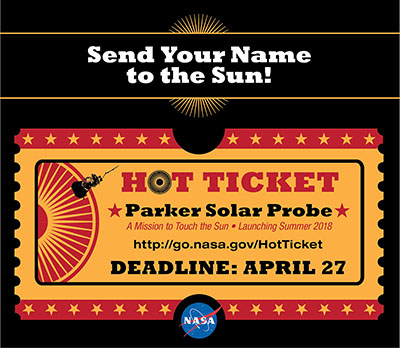
2018-03-06 12:30:07
Credit:
Download (Hi-Res)

2018-01-30 15:03:17
Members of the Parker Solar Probe team prepare the spacecraft for space environment testing in the thermal vacuum chamber at NASA’s Goddard Space Flight Center. The thermal vacuum chamber duplicates the airless environment of space and simulates the cold and hot temperature cycles the spacecraft will endure during its seven-year exploration of the Sun.
Credit: NASA/Johns Hopkins APL/Ed Whitman
Download (Hi-Res)

2018-01-30 15:03:17
To prepare NASA’s Parker Solar Probe for space environment testing, the team must make hundreds of connections to allow the engineers and technicians to monitor the safety and performance of the spacecraft’s systems. Four hundred thermocouples mounted on the spacecraft let the team track the health of the probe as it undergoes temperature cycling in the thermal vacuum chamber at NASA’s Goddard Space Flight Center.
Credit: NASA/Johns Hopkins APL/Ed Whitman
Download (Hi-Res)

2018-01-30 15:03:17
Parker Solar Probe team members from the Johns Hopkins Applied Physics Laboratory work to attach testing and monitoring equipment and sensors to the spacecraft inside the thermal vacuum chamber at NASA’s Goddard Space Flight Center. Space environment testing duplicates the airless environment of space and simulates the cold and hot temperature cycles the spacecraft will endure during its seven-year exploration of the Sun.
Credit: NASA/Johns Hopkins APL/Ed Whitman
Download (Hi-Res)

2018-01-30 15:03:17
NASA’s Parker Solar Probe sits inside the thermal vacuum chamber at NASA’s Goddard Space Flight Center. On Jan. 27, the spacecraft began space environment testing inside the chamber, which simulates the hot and cold airless environments that the mission will experience during its mission to the Sun.
Credit: NASA/Johns Hopkins APL/Ed Whitman
Download (Hi-Res)

2018-01-30 15:03:17
NASA’s Parker Solar Probe, shown inside the thermal vacuum chamber at NASA’s Goddard Space Flight Center just before the main hatch is closed to begin space environment testing. The thermal vacuum chamber duplicates the airless environment of space and simulates the cold and hot temperature cycles the spacecraft will endure during its seven-year exploration of the Sun.
Credit: NASA/Johns Hopkins APL/Ed Whitman
Download (Hi-Res)
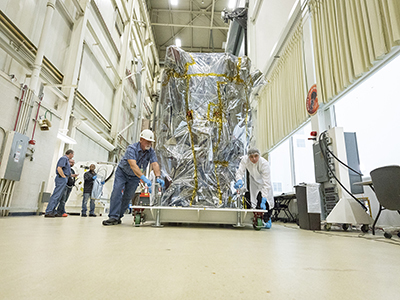
2018-01-17 17:30:25
Member of the NASA Parker Solar Probe team wheel the spacecraft – bagged to protect it from contamination – from its cleanroom at NASA’s Goddard Space Flight Center in Greenbelt, Md., to the thermal vacuum chamber, where it will undergo approximately seven weeks of testing at extreme temperatures that will simulate the space environment.
Credit: NASA/Johns Hopkins APL/Ed Whitman
Download (Hi-Res)
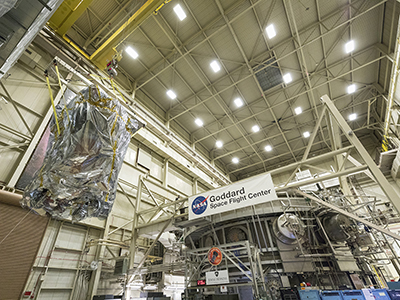
2018-01-17 17:30:25
Parker Solar Probe is slowly lifted and carried to the top of the thermal vacuum chamber, which will simulate the airless environment of space, in addition to conducting intense hot and cold temperature testing.
Credit: NASA/Johns Hopkins APL/Ed Whitman
Download (Hi-Res)
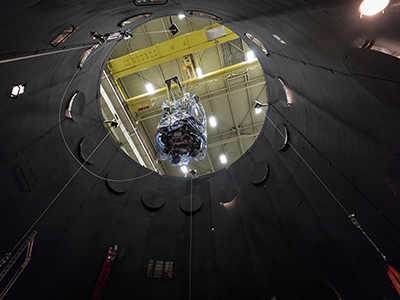
2018-01-17 17:30:25
NASA’s Parker Solar Probe descends into the thermal vacuum chamber at NASA’s Goddard Space Flight Center. The spacecraft will be inside the chamber for about seven weeks.
Credit: NASA/Johns Hopkins APL/Ed Whitman
Download (Hi-Res)
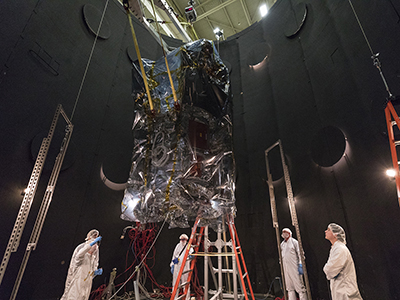
2018-01-17 17:30:25
Engineers and technicians from the Parker Solar Probe team monitor the descent of the spacecraft into the thermal vacuum chamber.
Credit: NASA/Johns Hopkins APL/Ed Whitman
Download (Hi-Res)
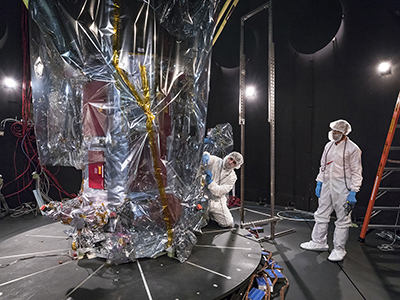
2018-01-17 17:30:25
Parker Solar Probe team members begin the process of reattaching the spacecraft to power and other systems in preparation for testing the operation of the probe in intense heat and cold while in an airless environment.
Credit: NASA/Johns Hopkins APL/Ed Whitman
Download (Hi-Res)
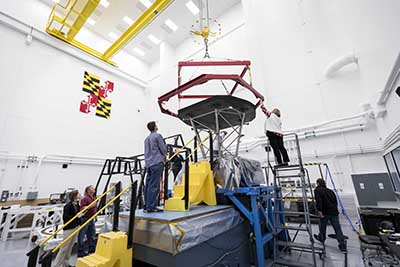
2017-12-15 10:08:17
The Parker Solar Probe team at Johns Hopkins APL prepares to lift the heat shield, called the Thermal Protection System (TPS), in preparation for shipment to NASA's Goddard Space Flight Center for further environmental testing.
Credit: NASA/Johns Hopkins APL/Ed Whitman
Download (Hi-Res)
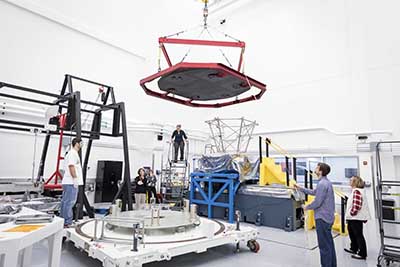
2017-12-15 10:08:17
The Parker Solar Probe spacecraft's Thermal Protection System (TPS), or heat shield, is carefully moved to a shipping container for transport from Johns Hopkins APL to NASA's Goddard Space Flight Center and further environmental testing.
Credit: NASA/Johns Hopkins APL/Ed Whitman
Download (Hi-Res)
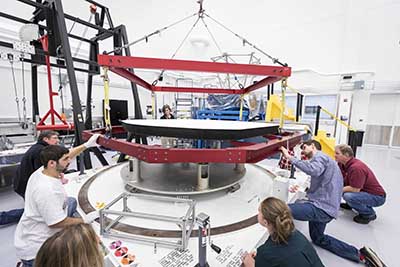
2017-12-15 10:08:17
The Parker Solar Probe team carefully lowers the spacecraft's Thermal Protection System (TPS) into a shipping container to carry the heat shield from Johns Hopkins APL to NASA's Goddard Flight Center.
Credit: NASA/Johns Hopkins APL/Ed Whitman
Download (Hi-Res)
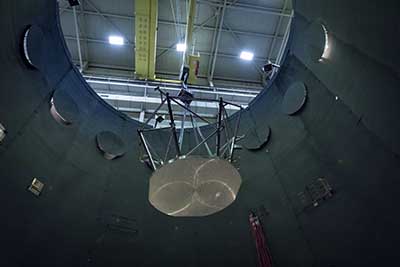
2017-12-15 10:08:17
At NASA's Goddard Space Flight Center, the structure that holds Parker Solar Probe's Thermal Protection System (TPS) is lowered into the Thermal Vacuum Chamber.
Credit: NASA/Johns Hopkins APL/Ed Whitman
Download (Hi-Res)
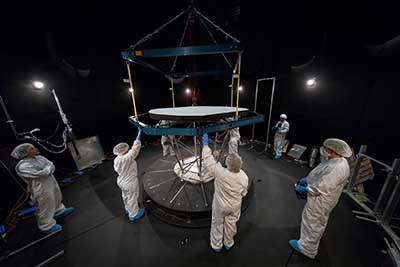
2017-12-15 10:08:17
Parker Solar Probe's Thermal Protection System (TPS) is lowered into the Thermal Vacuum Chamber at NASA's Goddard Space Flight Center in preparation for environmental testing.
Credit: NASA/Johns Hopkins APL/Ed Whitman
Download (Hi-Res)
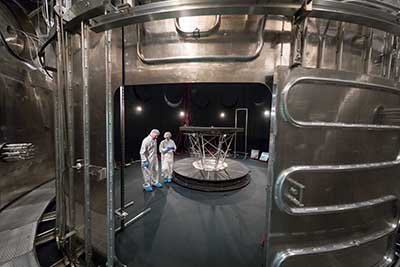
2017-12-15 10:08:17
Parker Solar Probe's Thermal Protection System (TPS) - the heat shield that will protect the spacecraft from the Sun's intense heat - is lowered into the Thermal Vacuum Chamber at NASA's Goddard Space Flight Center in preparation for environmental testing.
Credit: NASA/Johns Hopkins APL/Ed Whitman
Download (Hi-Res)
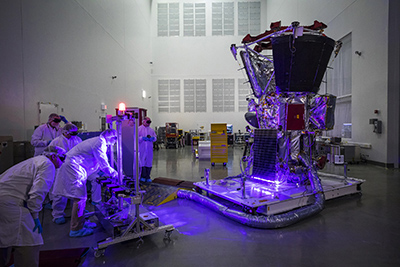
2017-12-06 11:31:00
Parker Solar Probe team members use lasers to ensure that the spacecraft's solar arrays have survived harsh environmental testing and are operating correctly.
Credit: NASA/Johns Hopkins APL/Ed Whitman
Download (Hi-Res)
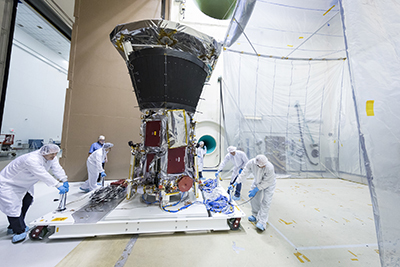
2017-11-16 14:30:43
Members of the integration and testing team roll Parker Solar Probe into the Acoustic Test Chamber at NASA’s Goddard Space Flight Center in Greenbelt, Maryland.
Credit: NASA/Johns Hopkins APL/Ed Whitman
Download (Hi-Res)
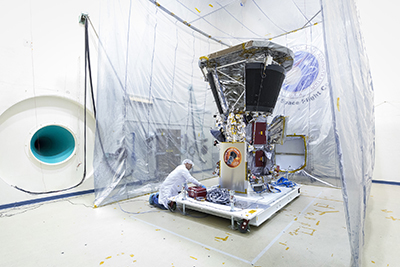
2017-11-16 14:30:43
A member of the integration and testing team prepares Parker Solar Probe for environmental testing in the Acoustic Test Chamber at NASA’s Goddard Space Flight Center in Greenbelt, Maryland.
Credit: NASA/Johns Hopkins APL/Ed Whitman
Download (Hi-Res)
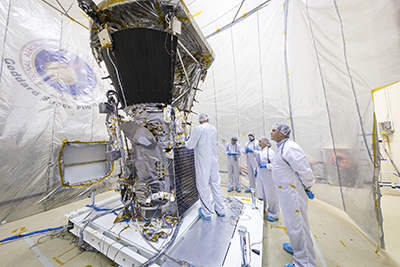
2017-11-16 14:30:43
Members of the integration and testing team prepare Parker Solar Probe for environmental testing in the Acoustic Test Chamber at NASA’s Goddard Space Flight Center in Greenbelt, Maryland.
Credit: NASA/Johns Hopkins APL/Ed Whitman
Download (Hi-Res)
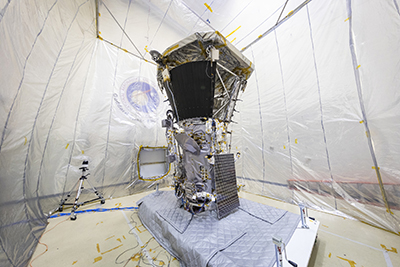
2017-11-16 14:30:43
Parker Solar Probe sits in the Acoustic Test Chamber at NASA’s Goddard Space Flight Center in Greenbelt, Maryland.
Credit: NASA/Johns Hopkins APL/Ed Whitman
Download (Hi-Res)
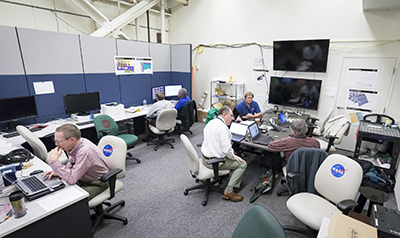
2017-11-16 14:30:43
Members of the integration and testing team monitor acoustic testing of Parker Solar Probe in the Acoustic Test Chamber at NASA’s Goddard Space Flight Center in Greenbelt, Maryland.
Credit: NASA/Johns Hopkins APL/Ed Whitman
Download (Hi-Res)
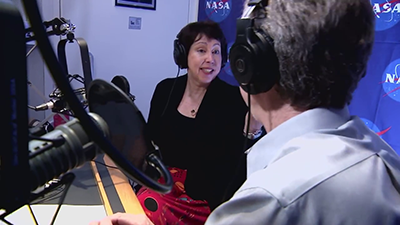
2017-11-15 15:50:47
Parker Solar Probe Project Scientist Nicky Fox of the Johns Hopkins University Applied Physics Lab is interviewed at NASA Headquarters about the Sun and the mission for the new “Gravity Assist” podcast that launched Nov. 15, 2017.
Credit: NASA
Download (Hi-Res)
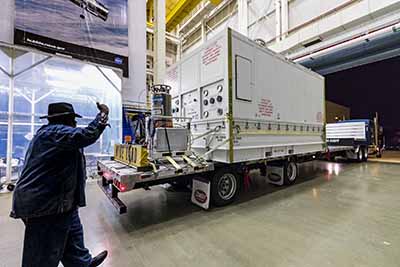
2017-11-07 14:03:57
1
Credit: NASA/Johns Hopkins APL/Ed Whitman
Download (Hi-Res)
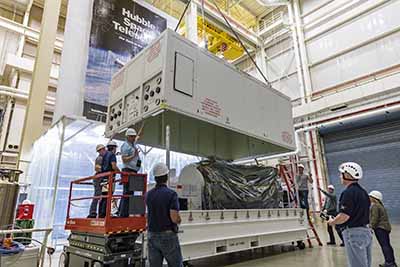
2017-11-07 14:03:57
2
Credit: NASA/Johns Hopkins APL/Ed Whitman
Download (Hi-Res)
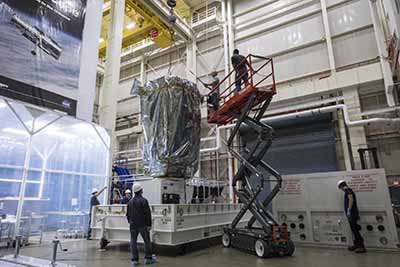
2017-11-07 14:03:57
3
Credit: NASA/Johns Hopkins APL/Ed Whitman
Download (Hi-Res)
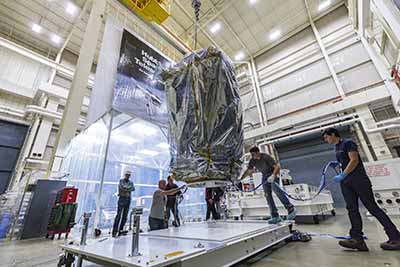
2017-11-07 14:03:57
4
Credit: NASA/Johns Hopkins APL/Ed Whitman
Download (Hi-Res)
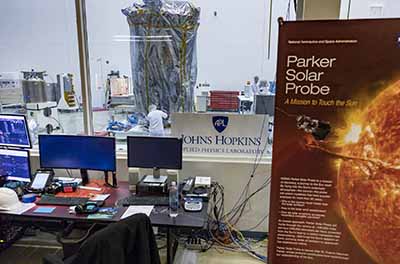
2017-11-07 14:03:57
5
Credit: NASA/Johns Hopkins APL/Ed Whitman
Download (Hi-Res)
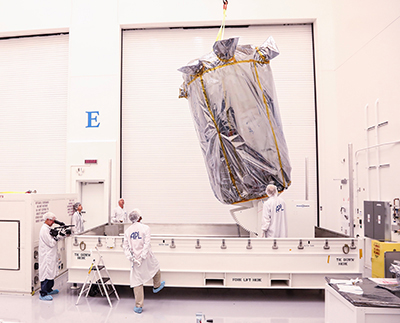
2017-11-03 12:29:18
Credit: NASA/Johns Hopkins APL/Ed Whitman
Download (Hi-Res)
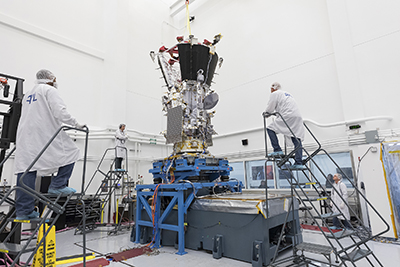
2017-11-03 08:59:03
Engineers and technicians at the Johns Hopkins University Applied Physics Lab closely monitor vibration testing of NASA's Parker Solar Probe. The spacecraft is attached to a shaker table, which simulates the intense physical forces of launch and powered flight.
Credit: NASA/Johns Hopkins APL/Ed Whitman
Download (Hi-Res)
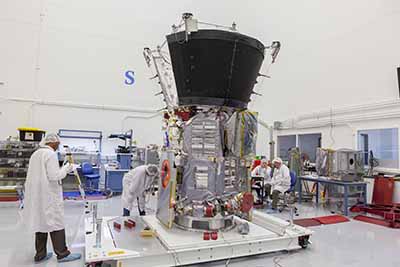
2017-10-13 10:50:13
Engineers and technicians prepare the Parker Solar Probe spacecraft for mass properties testing. This marks the beginning of environmental testing, a series of physical tests that will ensure the probe can withstand the rigors of launch and temperature fluctuations of space operations.
Credit: NASA/Johns Hopkins APL/Ed Whitman
Download (Hi-Res)
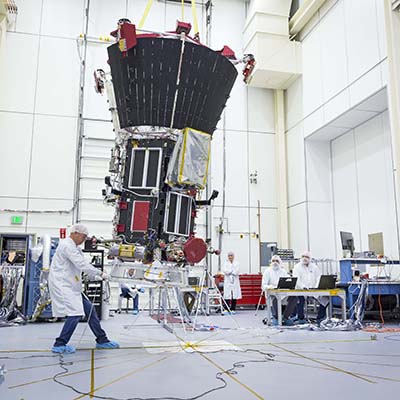
2017-10-06 12:37:49
Parker Solar Probe is about to be launched... into a gentle arc. By swinging the probe past magnetometers, the team can characterize the spacecraft's own magnetic field.
Credit: NASA/Johns Hopkins APL/Ed Whitman
Download (Hi-Res)
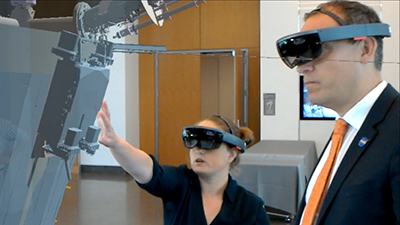
2017-10-05 12:23:49
Johns Hopkins APL's Betsy Congdon (left) and NASA's Thomas Zurbuchen, head of the agency's Science Mission Directorate, at the Parker Solar Probe renaming event at the University of Chicago in May. The augmented reality spacecraft model is visible at left.
Credit: NASA/JHUAPL
Download (Hi-Res)
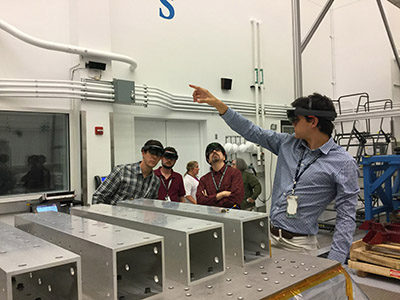
2017-10-05 12:23:49
Felipe Ruiz, of Johns Hopkins APL, points to a section of the Parker Solar Probe spacecraft visible only to the group wearing HoloLens augmented reality glasses.
Credit: NASA/JHUAPL
Download (Hi-Res)
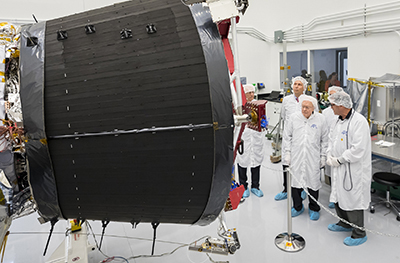
2017-10-03 15:31:39
Eugene Parker, professor emeritus at the University of Chicago, visits the spacecraft that bears his name, NASA’s Parker Solar Probe, at the Johns Hopkins Applied Physics Laboratory in Laurel, Maryland, where the probe was designed and is being built. The large black structure is one of the spacecraft's massive cooling radiators. The spacecraft is humanity’s first mission to a star – it will travel directly through the Sun’s atmosphere.
Credit: NASA/Johns Hopkins APL/Ed Whitman
Download (Hi-Res)
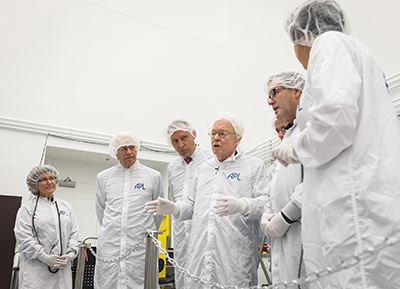
2017-10-03 15:31:39
Members of the Parker Solar Probe team and NASA and APL leadership listen to the mission's namesake, Eugene N. Parker, center, on Oct. 3, 2017 in the spacecraft clean room at Johns Hopkins Applied Physics Laboratory.
Credit: NASA/Johns Hopkins APL/Ed Whitman
Download (Hi-Res)
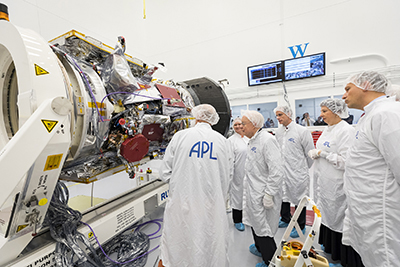
2017-10-03 15:31:39
Eugene Parker (center), professor emeritus at the University of Chicago, visits the spacecraft that bears his name: NASA’s Parker Solar Probe. Thomas Zurbuchen (bottom right), the Associate Administrator for NASA’s science mission directorate, and Ralph Semmel (behind Parker), the director of the Johns Hopkins Applied Physics Laboratory in Laurel, Maryland, where the probe was designed and is being built, joined the tour.
Credit: NASA/Johns Hopkins APL/Ed Whitman
Download (Hi-Res)
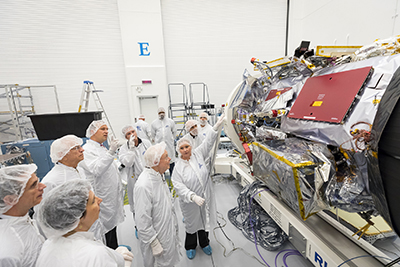
2017-10-03 15:31:39
Eugene Parker, professor emeritus at the University of Chicago, visiting the spacecraft that bears his name: NASA’s Parker Solar Probe. Engineers in the clean room at the Johns Hopkins Applied Physics Laboratory in Laurel, Maryland, where the probe was designed and is being built point out the instruments that will collect data as the mission travels directly through the Sun’s atmosphere.
Credit: NASA/Johns Hopkins APL/Ed Whitman
Download (Hi-Res)
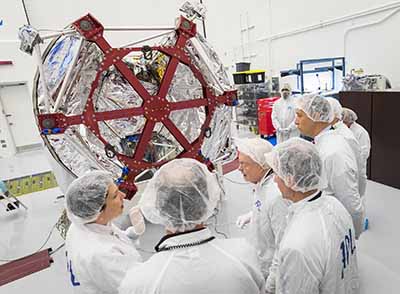
2017-10-03 15:31:39
Nicola Fox (bottom left), project scientist for NASA’s Parker Solar Probe at the Johns Hopkins Applied Physics Laboratory in Laurel, Maryland, describes the mission to the scientist for whom it’s named: Eugene Parker (middle). Eugene Parker first proposed the existence of the constant outflow of solar material from the sun — now called the solar wind — through which the spacecraft will travel. The red frame on the end of the spacecraft is a stand-in for the mission’s thermal protection system, which will reach temperatures of 2,500 degrees F during its journey.
Credit: NASA/Johns Hopkins APL/Ed Whitman
Download (Hi-Res)
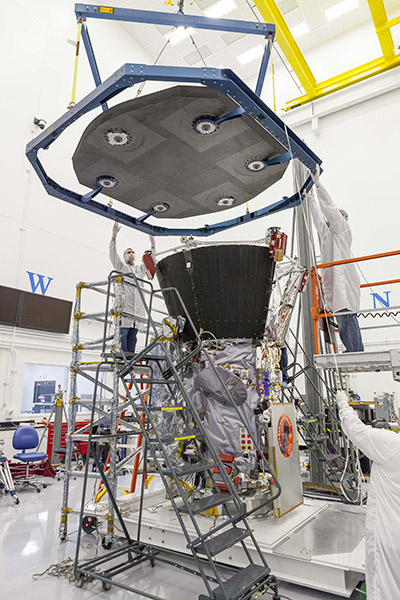
2017-09-30 07:38:10
On Sept. 21, 2017, engineers at the Johns Hopkins University Applied Physics Laboratory in Laurel, Maryland, lowered the thermal protection system – the heat shield – onto the spacecraft for a test of alignment as part of integration and testing.
Credit: NASA/Johns Hopkins APL/Ed Whitman
Download (Hi-Res)
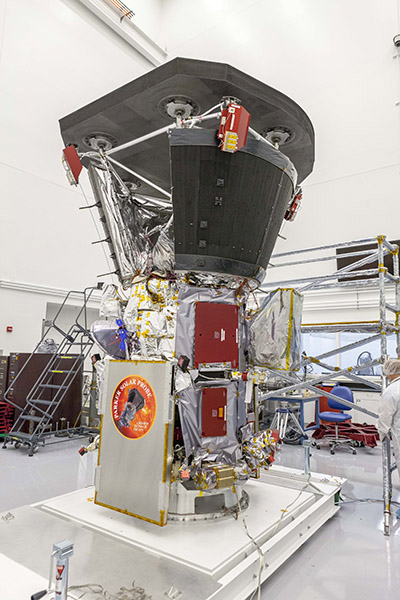
2017-09-30 07:38:10
On Sept. 21, 2017, engineers at the Johns Hopkins University Applied Physics Laboratory in Laurel, Maryland, lowered the thermal protection system – the heat shield – onto the spacecraft for a test of alignment as part of integration and testing.
Credit: NASA/Johns Hopkins APL/Ed Whitman
Download (Hi-Res)
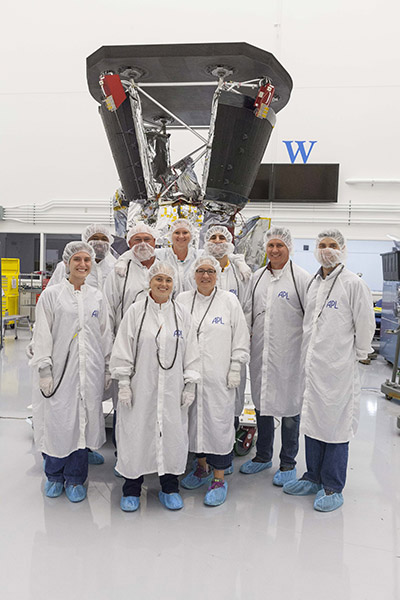
2017-09-30 07:38:10
The TPS installation team from the Johns Hopkins University Applied Physics Laboratory in Laurel, Maryland,which installed the thermal protection system – the heat shield – onto the spacecraft for a test of alignment as part of integration and testing.
Credit: NASA/Johns Hopkins APL/Ed Whitman
Download (Hi-Res)
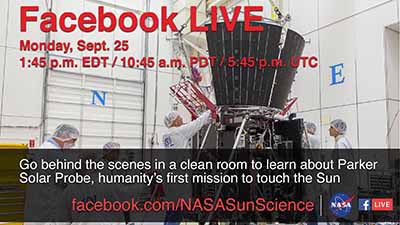
2017-09-25 09:41:56
Credit:
Download (Hi-Res)
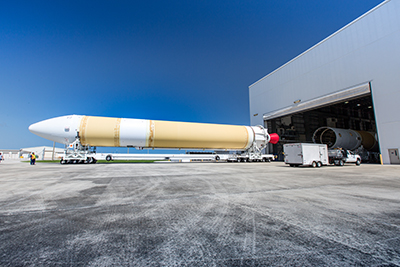
2017-09-12 12:55:33
A United Launch Alliance Delta IV Heavy common booster core arrives at the Horizontal Integration Facility at Cape Canaveral Air Force Station for preflight processing. The Delta IV Heavy will launch NASA’s upcoming Parker Solar Probe mission.
Credit: NASA/Cory Huston
Download (Hi-Res)
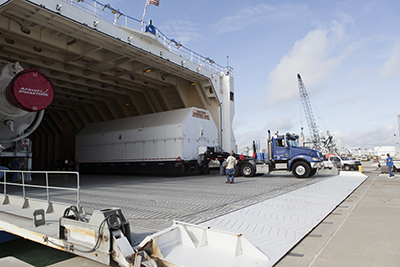
2017-09-12 12:55:33
The Port Common Booster Core of the Delta IV Heavy for the Parker Solar Probe Mission is offloaded from the Mariner ship for transport to the Horizontal Integration Facility at Space Launch Complex 37.
Credit: NASA/Ben Smegelsky
Download (Hi-Res)

2017-09-12 12:55:33
Sunrise is reflected in the side of the Mariner ship and in the water of Port Canaveral below.
Credit: NASA/Cory Huston
Download (Hi-Res)
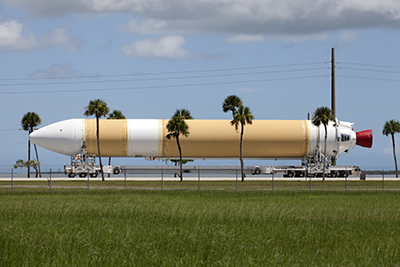
2017-08-03 11:56:00
Framed by a series of cabbage palms, a United Launch Alliance Delta IV Heavy common booster core is transported by truck to Cape Canaveral Air Force Station’s Launch Complex 37 Horizontal Processing Facility after arriving at Port Canaveral. The Delta IV Heavy will launch NASA’s upcoming Parker Solar Probe mission.
Credit: NASA/Kim Shiflett
Download (Hi-Res)
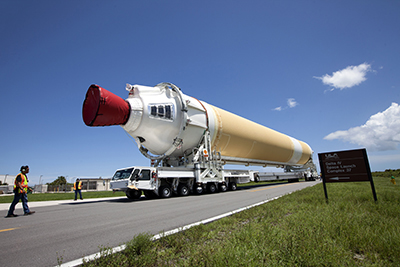
2017-08-03 11:56:00
A United Launch Alliance Delta IV Heavy common booster core is transported by truck to Cape Canaveral Air Force Station’s Launch Complex 37 Horizontal Processing Facility after arriving at Port Canaveral. The Delta IV Heavy will launch NASA’s upcoming Parker Solar Probe mission.
Credit: NASA/Kim Shiflett
Download (Hi-Res)
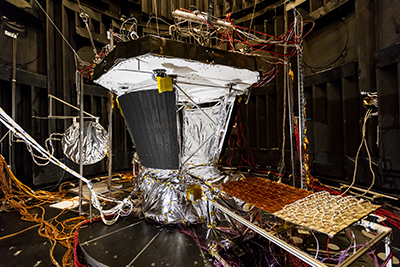
2017-06-21 09:00:23
The solar array cooling system for the Parker Solar Probe spacecraft—one element of which is the large, square black radiator visible at center, one of two that will be installed—is shown undergoing thermal testing at NASA Goddard Space Flight Center in Greenbelt, Maryland in late February.
Credit: NASA/Johns Hopkins APL/Ed Whitman
Download (Hi-Res)
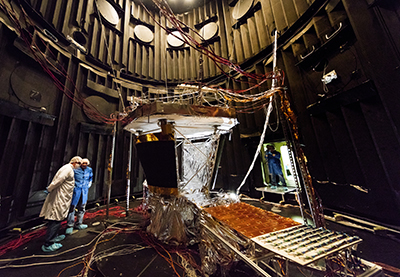
2017-06-21 09:00:23
The solar array cooling system for the Parker Solar Probe spacecraft—one element of which is the large, square black radiator visible at center, one of two that will be installed—is shown undergoing thermal testing at NASA Goddard Space Flight Center in Greenbelt, Maryland in late February. At left: William “Chip” Delmar and C. Jack Ercol of the Johns Hopkins Applied Physics Laboratory; on right, Mike Micciolo of NASA Goddard and APL’s Eric Wallis.
Credit: NASA/Johns Hopkins APL/Ed Whitman
Download (Hi-Res)
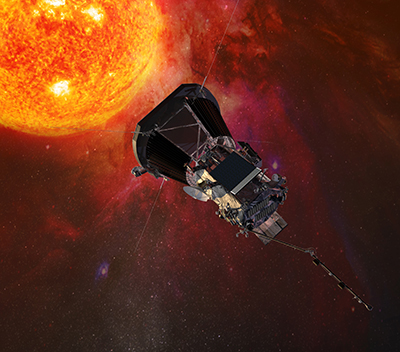
2017-06-21 09:00:23
The solar panels are shown here on this artist rendering of Parker Solar Probe; they are the black squares with gray rectangles on the center of the spacecraft.
Credit: NASA/Johns Hopkins APL/Steve Gribben
Download (Hi-Res)
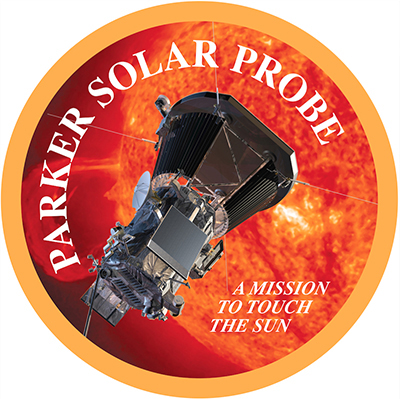
2017-05-31 11:30:00
NASA’s first mission to go to the sun, the Parker Solar Probe, is named after Eugene Parker who first theorized that the sun constantly sends out a flow of particles and energy called the solar wind.
Credit: NASA/JHUAPL
Download (Hi-Res)
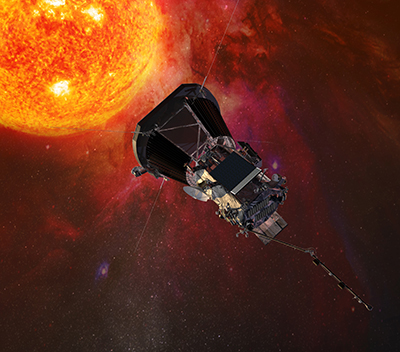
2017-05-31 11:30:00
Illustration of the Parker Solar Probe spacecraft approaching the sun.
Credit: NASA/JHUAPL
Download (Hi-Res)
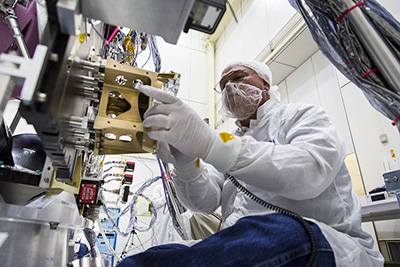
2017-05-17 07:32:31
Neal Bachtell, of the Space Exploration Sector, adjusts the bracket for the Energetic Particle Instrument-Low Energy (EPI-Lo) on the Solar Probe Plus spacecraft on April 17, 2017. EPI-Lo is the first of several science instruments set for installation on the NASA spacecraft, scheduled to launch in July 2018 on an unprecedented, close-up study of the sun.
Credit: NASA/JHUAPL
Download (Hi-Res)
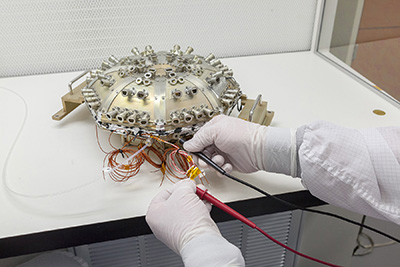
2017-05-17 07:32:31
An APL technician prepares the Energetic Particle Instrument-Low Energy (EPI-Lo) for installation on NASA’s Solar Probe Plus spacecraft.
Credit: NASA/JHUAPL
Download (Hi-Res)
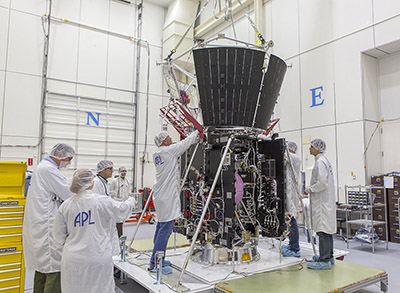
2017-04-19 13:58:23
Mission integration and test team members secure the deck holding the structure assembly and several other critical thermal-protection components atop NASA’s Solar Probe Plus spacecraft body on April 5, 2017, in the cleanroom at the Johns Hopkins University Applied Physics Laboratory in Laurel, Maryland.
Credit: NASA/Johns Hopkins University Applied Physics Laboratory
Download (Hi-Res)
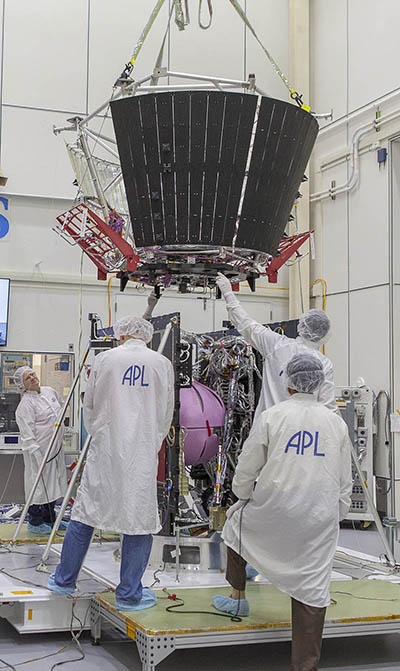
2017-04-19 13:58:23
From left, Cheryl Starkey, Justin Hahn, Felipe Ruiz, Randy Persaud and Jim Beatty (obstructed by spacecraft) position the deck holding the structure assembly and several other critical thermal-protection components atop NASA’s Solar Probe Plus spacecraft body on April 5, 2017, in the cleanroom at the Johns Hopkins University Applied Physics Laboratory in Laurel, Maryland.
Credit: NASA/Johns Hopkins University Applied Physics Laboratory
Download (Hi-Res)
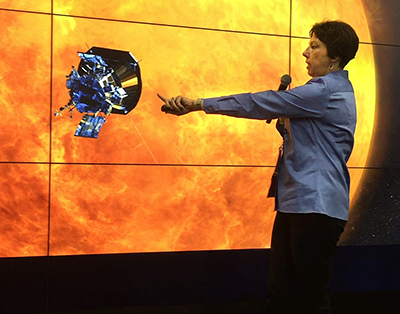
2017-01-05 13:41:46
Project Scientist Nicky Fox points out features on the Solar Probe Plus spacecraft during her Dec. 13 flash talk at the AGU Fall Meeting in San Francisco.
Credit:
Download (Hi-Res)
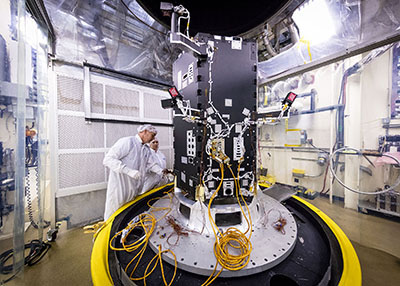
2016-07-29 09:46:39
Engineers at the Johns Hopkins University Applied Physics Laboratory in Laurel, Maryland, prepare the developing Solar Probe Plus spacecraft for thermal vacuum tests that simulate conditions in space. Today the spacecraft includes the primary structure and its propulsion system; still to be installed over the next several months are critical systems such as power, communications and thermal protection, as well as science instruments.
Credit: Credit: NASA/JHUAPL
Download (Hi-Res)
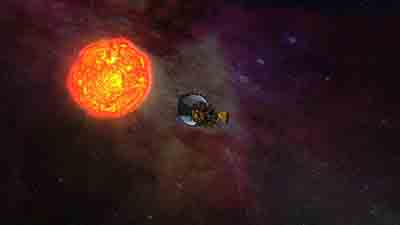
2015-04-08 12:37:00
Artist rendering of Solar Probe Plus, solar panels folded into the shadows of its protective shield, as it gathers data on its approach to the Sun.
Credit: NASA/JHUAPL
Download (Hi-Res)
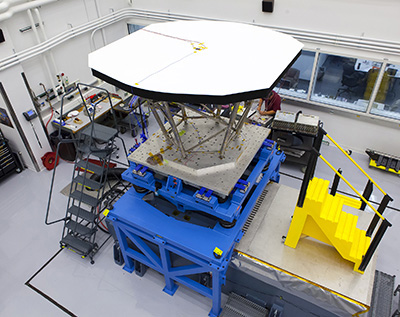
2014-03-18 09:26:32
Technicians at the Johns Hopkins University Applied Physics Laboratory in Laurel, Md., prepare an engineering model of the Solar Probe Plus Thermal Protection System, or TPS, for vibration tests in October 2013. The main feature of the TPS is an 8-foot-diameter, 4.5-inch-thick, carbon-carbon, carbon foam shield that will sit atop the Solar Probe Plus spacecraft body. The system will protect Solar Probe Plus from temperatures exceeding 2,500 degrees Fahrenheit and impacts from hypervelocity dust particles as it flies through the sun’s outer atmosphere. The vibration tests simulate the shaking the spacecraft will undergo during launch; Solar Probe Plus is scheduled to launch in 2018.
Credit: NASA/Johns Hopkins University Applied Physics Laboratory
Download (Hi-Res)
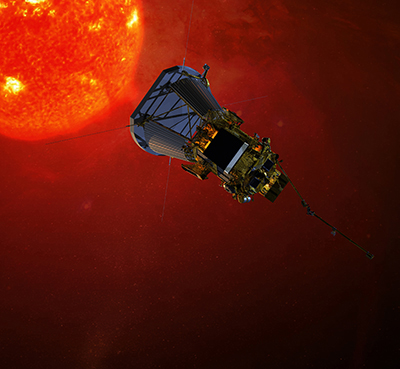
2014-03-18 09:26:32
Artist’s impression of NASA’s Solar Probe Plus spacecraft on approach to the sun. Set to launch in 2018, Solar Probe Plus will orbit the sun 24 times, closing in with the help of seven Venus flybys. The spacecraft will carry 10 science instruments specifically designed to solve two key puzzles of solar physics: why the sun’s outer atmosphere is so much hotter than the sun’s visible surface, and what accelerates the solar wind that affects Earth and our solar system. The Johns Hopkins University Applied Physics Laboratory manages the Solar Probe Plus mission for NASA and leads the spacecraft fabrication, integration and testing effort.
Credit: Johns Hopkins University Applied Physics Laboratory
Download (Hi-Res)

